digital divide
description: the gap between those who have access to modern information and communications technology and those who do not.
161 results

Digital Dead End: Fighting for Social Justice in the Information Age
by
Virginia Eubanks
Published 1 Feb 2011
The phrase “digital divide” was coined in 1996 by Lloyd Morrisett, a founder of the Children’s Television Workshop and president of the Markle Foundation, to describe the chasm that purportedly separates information technology (IT) haves from havenots in U.S. society.1 The phrase first captured media and public attention in the late 1990s, when the U.S. National Telecommunications and Information Administration (NTIA) released two reports, Falling Through the Net II: New Data on the Digital Divide and Falling Through the Net III: Defining the Digital Divide. The reports concluded that, contrary to popular opinion, which held that market forces would eventually lead to universal access, the digital divide had not decreased but increased: The data reveal that the digital divide—the disparities in access to telephones, personal computers (PCs), and the Internet across certain demographic groups—still exists and, in many cases, has widened significantly.
…
If the digital divide notion was not capturing her experience with IT, I asked, could we describe the problem—and its potential solutions—better? She answered, and I drew what she narrated on top of my original sketch of the digital divide (figure 3.2). Technology, she argued, in the best-case 38 Chapter 3 Figure 3.1 My drawing of the digital divide. Figure 3.2 A copy of Ruth Delgado Guzman’s rearticulation of the digital divide. Reproduced by the author. The original was drawn in the margin of her informed consent form, July 29, 2003. Trapped in the Digital Divide 39 scenario, should connect people—strengthened by their diverse experiences, across levels of social stratification—in systems of equal barter and exchange.
…
Jes Constantine, for example, renamed it the “people divide” (figure 3.4), arguing that the medium was irrelevant and that thoughtful participation, action, and collaboration are the only route to the openness and respect that make communication across difference possible. 40 Chapter 3 Figure 3.3 Roberta Cousins’s articulation of the digital divide. She was speaking, and I was drawing. From our interview, January 19, 2004. Trapped in the Digital Divide Figure 3.4 Jes Constantine’s “people divide.” From our interview, January 20, 2004. 41 42 Chapter 3 Structures and Institutions Several women specifically pointed out that the digital divide was actually a product of social structure and institutionalized inequality. For example, Jenn Rose renamed the digital divide “social inequality,” and Cosandra Jennings renamed it “a crack in the system.” Dorothy Allen, Cosandra Jennings, and Roberta Cousins all argued that systemic inequality would not persist if someone were not profiting from it, thereby making space in our discussion for concepts such as oppression, exploitation, and privilege.
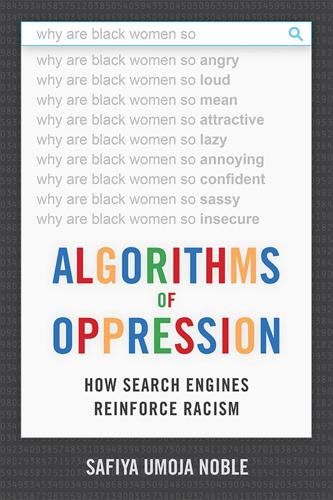
Algorithms of Oppression: How Search Engines Reinforce Racism
by
Safiya Umoja Noble
Published 8 Jan 2018
The Web as a Source of Opportunity The web is characterized as a source of opportunity for oppressed and marginalized people, with tremendous focus put on closing the hardware, software, and access gaps on the Internet for various communities. Among the most prevalent ideas about the political aspects of technology disenfranchisement and opportunity are theories that center on the concept of the “digital divide,” a term coined in a series of speeches and surveys by the Clinton-Gore administration and the National Telecommunications Infrastructure Administration. Digital-divide narratives have focused on three key aspects of disempowerment that have led to technological deficits between Whites and Blacks: access to computers and software, development of skills and training in computer technologies, and Internet connectivity—most recently characterized by access to broadband.18 However true the disparities between Whites and non-Whites or men and women in the traditional articulations of the digital divide, often missing from this discourse is the framework of power relations that precipitate such unequal access to social, economic, and educational resources.19 Thus, the context for discussing the digital divide in the U.S. is too narrow a framework that focuses on the skills and capabilities of people of color and women, rather than questioning the historical and cultural development of science and technology and representations prioritized through digital technologies, as well as the uneven and exploitive global distribution of resources and labor in the information and communication ecosystem.
…
Digital-divide narratives have focused on three key aspects of disempowerment that have led to technological deficits between Whites and Blacks: access to computers and software, development of skills and training in computer technologies, and Internet connectivity—most recently characterized by access to broadband.18 However true the disparities between Whites and non-Whites or men and women in the traditional articulations of the digital divide, often missing from this discourse is the framework of power relations that precipitate such unequal access to social, economic, and educational resources.19 Thus, the context for discussing the digital divide in the U.S. is too narrow a framework that focuses on the skills and capabilities of people of color and women, rather than questioning the historical and cultural development of science and technology and representations prioritized through digital technologies, as well as the uneven and exploitive global distribution of resources and labor in the information and communication ecosystem.
…
Digital-divide narratives have focused on three key aspects of disempowerment that have led to technological deficits between Whites and Blacks: access to computers and software, development of skills and training in computer technologies, and Internet connectivity—most recently characterized by access to broadband.18 However true the disparities between Whites and non-Whites or men and women in the traditional articulations of the digital divide, often missing from this discourse is the framework of power relations that precipitate such unequal access to social, economic, and educational resources.19 Thus, the context for discussing the digital divide in the U.S. is too narrow a framework that focuses on the skills and capabilities of people of color and women, rather than questioning the historical and cultural development of science and technology and representations prioritized through digital technologies, as well as the uneven and exploitive global distribution of resources and labor in the information and communication ecosystem. Certainly, the digital divide was an important conceptual framework to deeper engagement for poor people and people of color, but it also created new sites of profit for multinational corporations.20 Closing the digital divide through ubiquitous access, training, and the provisioning of hardware and software does address the core criticisms of the digital technology have and have-not culture in the U.S.; but much like the provisioning of other technological goods such as the telephone, it has not altered the landscape of power relations by race and gender.

Blockchain: Blueprint for a New Economy
by
Melanie Swan
Published 22 Jan 2014
A similar project is a mobile cryptowallet app, Saldo.mx, which uses the Ripple open source protocol for clearing, and links people living in the United States and Latin America for the remote payment of bills, insurance, airtime, credit, and products. Digital Divide of Bitcoin The term digital divide has typically referred to the gap between those who have access to certain technologies and those who do not. In the case of cryptocurrencies, if they are applied with the principles of neutrality, everyone worldwide might start to have access. Thus, alternative currencies could be a helpful tool for bridging the digital divide. However, there is another tier of digital divide beyond access: know-how. A new digital divide could arise (and arguably already has in some sense) between those who know how to operate securely on the Internet and those who do not.
…
-M2M/IoT Bitcoin Payment Network to Enable the Machine Economy and consensus models, Blockchain AI: Consensus as the Mechanism to Foster “Friendly” AI-Blockchain Consensus Increases the Information Resolution of the Universe extensibility of, Extensibility of Blockchain Technology Concepts for facilitating big data predictive task automation, Blockchain Layer Could Facilitate Big Data’s Predictive Task Automation future applications, Blockchain AI: Consensus as the Mechanism to Foster “Friendly” AI-Blockchain Consensus Increases the Information Resolution of the Universe limitations of (see limitations) organizational capabilities, Blockchain Technology Is a New and Highly Effective Model for Organizing Activity tracking capabilities, Fundamental Economic Principles: Discovery, Value Attribution, and Exchange-Fundamental Economic Principles: Discovery, Value Attribution, and Exchange blockchain-recorded marriage, Decentralized Governance Services BlockCypher, Blockchain Development Platforms and APIs BOINC, DAOs and DACs bond deposit postings, Technical Challenges Brin, David, Freedom of Speech/Anti-Censorship Applications: Alexandria and Ostel BTCjam, Financial Services business model challenges, Business Model Challenges Buttercoin, Financial Services Byrne, Patrick, Financial Services C Campus Cryptocurrency Network, Campuscoin Campuscoin, Campuscoin-Campuscoin censorship, Internet (see decentralized DNS system) Chain, Blockchain Development Platforms and APIs challenges (see see limitations) charity donations, Charity Donations and the Blockchain—Sean’s Outpost China, Relation to Fiat Currency ChromaWallet, Wallet Development Projects Chronobit, Virtual Notary, Bitnotar, and Chronobit Circle Internet Financial, eWallet Services and Personal Cryptosecurity Codius, Financial Services coin drops, Coin Drops as a Strategy for Public Adoption coin mixing, eWallet Services and Personal Cryptosecurity coin, defining, Terminology and Concepts, Currency, Token, Tokenizing Coinapult, Global Public Health: Bitcoin for Contagious Disease Relief Coinapult LOCKS, Relation to Fiat Currency Coinbase, Merchant Acceptance of Bitcoin, Financial Services CoinBeyond, Merchant Acceptance of Bitcoin Coinffeine, Financial Services Coinify, Merchant Acceptance of Bitcoin Coinprism, Wallet Development Projects Coinspace, Crowdfunding CoinSpark, Wallet Development Projects colored coins, Smart Property, Blockchain 2.0 Protocol Projects community supercomputing, Community Supercomputing Communitycoin, Currency, Token, Tokenizing-Communitycoin: Hayek’s Private Currencies Vie for Attention complementary currency systems, Demurrage Currencies: Potentially Incitory and Redistributable concepts, redefining, Terminology and Concepts-Terminology and Concepts consensus models, Blockchain AI: Consensus as the Mechanism to Foster “Friendly” AI-Blockchain Consensus Increases the Information Resolution of the Universe consensus-derived information, Blockchain Consensus Increases the Information Resolution of the Universe contagious disease relief, Global Public Health: Bitcoin for Contagious Disease Relief contracts, Blockchain 2.0: Contracts-The Blockchain as a Path to Artificial Intelligence (see also smart contracts) crowdfunding, Crowdfunding-Crowdfunding financial services, Financial Services-Financial Services marriage, Decentralized Governance Services prediction markets, Bitcoin Prediction Markets smart property, Smart Property-Smart Property wallet development projects, Wallet Development Projects copyright protection, Monegraph: Online Graphics Protection Counterparty, Blockchain 2.0 Protocol Projects, Counterparty Re-creates Ethereum’s Smart Contract Platform Counterparty currency (XCP), Currency, Token, Tokenizing Counterwallet, Wallet Development Projects crowdfunding, Crowdfunding-Crowdfunding cryptocurrencies benefits of, Currency, Token, Tokenizing cryptosecurity, eWallet Services and Personal Cryptosecurity eWallet services, eWallet Services and Personal Cryptosecurity mechanics of, How a Cryptocurrency Works-Merchant Acceptance of Bitcoin merchant acceptance, Merchant Acceptance of Bitcoin cryptosecurity challenges, eWallet Services and Personal Cryptosecurity cryptowallet, Blockchain Neutrality currency, Technology Stack: Blockchain, Protocol, Currency-Regulatory Status, Currency, Token, Tokenizing-Extensibility of Demurrage Concept and Features Campuscoin, Campuscoin-Campuscoin coin drops, Coin Drops as a Strategy for Public Adoption Communitycoin, Communitycoin: Hayek’s Private Currencies Vie for Attention-Communitycoin: Hayek’s Private Currencies Vie for Attention cryptocurrencies, How a Cryptocurrency Works-Merchant Acceptance of Bitcoin decentralizing, Communitycoin: Hayek’s Private Currencies Vie for Attention defining, Currency, Token, Tokenizing-Currency, Token, Tokenizing, Currency: New Meanings demurrage, Demurrage Currencies: Potentially Incitory and Redistributable-Extensibility of Demurrage Concept and Features double-spend problem, The Double-Spend and Byzantine Generals’ Computing Problems fiat currency, Relation to Fiat Currency-Relation to Fiat Currency monetary and nonmonetary, Currency Multiplicity: Monetary and Nonmonetary Currencies-Currency Multiplicity: Monetary and Nonmonetary Currencies new meanings, Currency: New Meanings technology stack, Technology Stack: Blockchain, Protocol, Currency-Technology Stack: Blockchain, Protocol, Currency currency mulitplicity, Currency Multiplicity: Monetary and Nonmonetary Currencies-Currency Multiplicity: Monetary and Nonmonetary Currencies D DAOs, DAOs and DACs-DAOs and DACs DAOs/DACs, DAOs and DACs-DAOs and DACs, Batched Notary Chains as a Class of Blockchain Infrastructure, Blockchain Government Dapps, Dapps-Dapps, Extensibility of Demurrage Concept and Features Dark Coin, eWallet Services and Personal Cryptosecurity dark pools, Technical Challenges Dark Wallet, eWallet Services and Personal Cryptosecurity DASs, DASs and Self-Bootstrapped Organizations DDP, Crowdfunding decentralization, Smart Contracts, Centralization-Decentralization Tension and Equilibrium decentralized applications (Dapps), Dapps-Dapps decentralized autonomous organization/corporation (DAO) (see DAOs/DACs) decentralized autonomous societies (DASs), DASs and Self-Bootstrapped Organizations decentralized autonomy, eWallet Services and Personal Cryptosecurity decentralized DNS, Namecoin: Decentralized Domain Name System-Decentralized DNS Functionality Beyond Free Speech: Digital Identity challenges of, Challenges and Other Decentralized DNS Services and digital identity, Decentralized DNS Functionality Beyond Free Speech: Digital Identity-Decentralized DNS Functionality Beyond Free Speech: Digital Identity DotP2P, Challenges and Other Decentralized DNS Services decentralized file storage, Blockchain Ecosystem: Decentralized Storage, Communication, and Computation decentralized secure file serving, Blockchain Ecosystem: Decentralized Storage, Communication, and Computation deeds, Decentralized Governance Services demurrage currencies, Demurrage Currencies: Potentially Incitory and Redistributable-Extensibility of Demurrage Concept and Features action-incitory features, Extensibility of Demurrage Concept and Features limitations of, Demurrage Currencies: Potentially Incitory and Redistributable digital art, Digital Art: Blockchain Attestation Services (Notary, Intellectual Property Protection)-Personal Thinking Blockchains (see also blockchain attestation services) hashing and timestamping, Hashing Plus Timestamping-Limitations online graphics protection, Monegraph: Online Graphics Protection digital cryptography, Ethereum: Turing-Complete Virtual Machine, Public/Private-Key Cryptography 101 digital divide, defining, Digital Divide of Bitcoin digital identity verification, Blockchain 2.0: Contracts, Smart Property, Wallet Development Projects, Digital Identity Verification-Digital Divide of Bitcoin, Limitations, Decentralized Governance Services, Liquid Democracy and Random-Sample Elections, Blockchain Learning: Bitcoin MOOCs and Smart Contract Literacy, Privacy Challenges for Personal Records dispute resolution, PrecedentCoin: Blockchain Dispute Resolution DIYweathermodeling, Community Supercomputing DNAnexus, Genomecoin, GenomicResearchcoin Dogecoin, Technology Stack: Blockchain, Protocol, Currency, Currency Multiplicity: Monetary and Nonmonetary Currencies, Scandals and Public Perception DotP2P, Challenges and Other Decentralized DNS Services double-spend problem, The Double-Spend and Byzantine Generals’ Computing Problems DriveShare, DAOs and DACs dynamic redistribution of currency (see demurrage currency) E education (see learning and literacy) Electronic Freedom Foundation (EFF), Distributed Censorship-Resistant Organizational Models EMR (electronic medical record) system, EMRs on the Blockchain: Personal Health Record Storage Ethereum, Crowdfunding, Blockchain 2.0 Protocol Projects, Blockchain Ecosystem: Decentralized Storage, Communication, and Computation, Ethereum: Turing-Complete Virtual Machine-Counterparty Re-creates Ethereum’s Smart Contract Platform eWallet services, eWallet Services and Personal Cryptosecurity ExperimentalResultscoin, Blockchain Academic Publishing: Journalcoin F Fairlay, Bitcoin Prediction Markets fiat currency, Relation to Fiat Currency-Relation to Fiat Currency file serving, Blockchain Ecosystem: Decentralized Storage, Communication, and Computation, Ethereum: Turing-Complete Virtual Machine file storage, Blockchain Ecosystem: Decentralized Storage, Communication, and Computation financial services, Regulatory Status, Financial Services-Financial Services, Blockchain Technology Is a New and Highly Effective Model for Organizing Activity, Government Regulation Fitbit, Personal Thinking Blockchains, Blockchain Health Research Commons, Extensibility of Demurrage Concept and Features Florincoin, Freedom of Speech/Anti-Censorship Applications: Alexandria and Ostel Folding@Home, DAOs and DACs, Blockchain Science: Gridcoin, Foldingcoin, Community Supercomputing franculates, Blockchain Government freedom of speech, Namecoin: Decentralized Domain Name System, Freedom of Speech/Anti-Censorship Applications: Alexandria and Ostel (see also decentralized DNS system) Freicoin, Demurrage Currencies: Potentially Incitory and Redistributable fundraising (see crowdfunding) futarchy, Futarchy: Two-Step Democracy with Voting + Prediction Markets-Futarchy: Two-Step Democracy with Voting + Prediction Markets G GBIcoin, Demurrage Currencies: Potentially Incitory and Redistributable GBIs (Guaranteed Basic Income initiatives), Demurrage Currencies: Potentially Incitory and Redistributable Gems, Blockchain Development Platforms and APIs, Dapps Genecoin, Blockchain Genomics Genomecoin, Genomecoin, GenomicResearchcoin Genomic Data Commons, Genomecoin, GenomicResearchcoin genomic sequencing, Blockchain Genomics 2.0: Industrialized All-Human-Scale Sequencing Solution-Genomecoin, GenomicResearchcoin GenomicResearchcoin, Genomecoin, GenomicResearchcoin genomics, consumer, Blockchain Genomics-Genomecoin, GenomicResearchcoin Git, Blockchain Ecosystem: Decentralized Storage, Communication, and Computation GitHub, Blockchain Academic Publishing: Journalcoin, Currency Multiplicity: Monetary and Nonmonetary Currencies global public health, Global Public Health: Bitcoin for Contagious Disease Relief GoCoin, Financial Services GoToLunchcoin, Terminology and Concepts governance, Blockchain Government-Societal Maturity Impact of Blockchain Governance decentralized services, Decentralized Governance Services-Decentralized Governance Services dispute resolution, PrecedentCoin: Blockchain Dispute Resolution futarchy, Futarchy: Two-Step Democracy with Voting + Prediction Markets-Futarchy: Two-Step Democracy with Voting + Prediction Markets Liquid Democracy system, Liquid Democracy and Random-Sample Elections-Liquid Democracy and Random-Sample Elections personalized governance services, Blockchain Government random-sample elections, Random-Sample Elections societal maturity impact of blockchain governance, Societal Maturity Impact of Blockchain Governance government regulation, Regulatory Status, Government Regulation-Government Regulation Gridcoin, Blockchain Science: Gridcoin, Foldingcoin-Blockchain Science: Gridcoin, Foldingcoin H hashing, Hashing Plus Timestamping-Limitations, Batched Notary Chains as a Class of Blockchain Infrastructure, Technical Challenges Hayek, Friedrich, Communitycoin: Hayek’s Private Currencies Vie for Attention, Demurrage Currencies: Potentially Incitory and Redistributable, Conclusion, The Blockchain Is an Information Technology health, Blockchain Health-Virus Bank, Seed Vault Backup as demurrage currency, Extensibility of Demurrage Concept and Features doctor vendor RFP services, Doctor Vendor RFP Services and Assurance Contracts health notary services, Blockchain Health Notary health research commons , Blockchain Health Research Commons health spending, Healthcoin healthcare decision making and advocacy, Liquid Democracy and Random-Sample Elections personal health record storage, EMRs on the Blockchain: Personal Health Record Storage virus bank and seed vault backup, Virus Bank, Seed Vault Backup Healthcoin, Healthcoin, Demurrage Currencies: Potentially Incitory and Redistributable I identity authentication, eWallet Services and Personal Cryptosecurity, Blockchain 2.0: Contracts, Smart Property, Smart Property, Wallet Development Projects, Digital Identity Verification-Digital Divide of Bitcoin, Limitations, Decentralized Governance Services, Liquid Democracy and Random-Sample Elections, Blockchain Learning: Bitcoin MOOCs and Smart Contract Literacy, Privacy Challenges for Personal Records Indiegogo, Crowdfunding, Dapps industry scandals, Scandals and Public Perception infrastructure needs and issues, Technical Challenges inheritance gifts, Smart Contracts intellectual property, Monegraph: Online Graphics Protection (see also digital art) Internet administration, Distributed Censorship-Resistant Organizational Models Internet Archive, Blockchain Ecosystem: Decentralized Storage, Communication, and Computation, Personal Thinking Blockchains Internet censorship prevention (see Decentralized DNS system) Intuit Quickbooks, Merchant Acceptance of Bitcoin IP protection, Hashing Plus Timestamping IPFS project, Blockchain Ecosystem: Decentralized Storage, Communication, and Computation J Johnston, David, Blockchain Technology Could Be Used in the Administration of All Quanta Journalcoin, Blockchain Academic Publishing: Journalcoin Judobaby, Crowdfunding justice applications for censorship-resistant organizational models, Distributed Censorship-Resistant Organizational Models-Distributed Censorship-Resistant Organizational Models digital art, Digital Art: Blockchain Attestation Services (Notary, Intellectual Property Protection)-Personal Thinking Blockchains (see also digital art, blockchain attestation services) digital identity verification, Blockchain 2.0: Contracts, Smart Property, Wallet Development Projects, Digital Identity Verification-Digital Divide of Bitcoin, Limitations, Decentralized Governance Services, Liquid Democracy and Random-Sample Elections, Blockchain Learning: Bitcoin MOOCs and Smart Contract Literacy, Privacy Challenges for Personal Records freedom of speech/anti-censorship, Freedom of Speech/Anti-Censorship Applications: Alexandria and Ostel governance, Blockchain Government-Societal Maturity Impact of Blockchain Governance (see also governance) Namecoin, Namecoin: Decentralized Domain Name System-Decentralized DNS Functionality Beyond Free Speech: Digital Identity, Monegraph: Online Graphics Protection (see also decentralized DNS) K Kickstarter, Crowdfunding, Community Supercomputing Kipochi, Blockchain Neutrality, Global Public Health: Bitcoin for Contagious Disease Relief, Blockchain Learning: Bitcoin MOOCs and Smart Contract Literacy Koinify, Crowdfunding, Dapps Kraken, Financial Services L latency, Blockchain 2.0 Protocol Projects, Technical Challenges, Technical Challenges, Scandals and Public Perception LaZooz, Dapps, Campuscoin, Extensibility of Demurrage Concept and Features Learncoin, Learncoin learning and literacy, Blockchain Learning: Bitcoin MOOCs and Smart Contract Literacy-Learning Contract Exchanges learning contract exchanges, Learning Contract Exchanges Ledra Capital, Blockchain 2.0: Contracts, Ledra Capital Mega Master Blockchain List legal implications crowdfunding, Crowdfunding smart contracts, Smart Contracts lending, trustless, Smart Property Lighthouse, Crowdfunding limitations, Limitations-Overall: Decentralization Trends Likely to Persist business model challenges, Business Model Challenges government regulation, Government Regulation-Government Regulation personal records privacy challenges, Privacy Challenges for Personal Records scandals and public perception, Scandals and Public Perception-Scandals and Public Perception technical challenges, Technical Challenges-Technical Challenges Liquid Democracy system, Liquid Democracy and Random-Sample Elections-Liquid Democracy and Random-Sample Elections Litecoin, Technology Stack: Blockchain, Protocol, Currency, Technology Stack: Blockchain, Protocol, Currency, Freedom of Speech/Anti-Censorship Applications: Alexandria and Ostel, Currency Multiplicity: Monetary and Nonmonetary Currencies, Technical Challenges literacy (see learning and literacy) LTBcoin, Wallet Development Projects, Currency, Token, Tokenizing M M2M/IoT infrastructure, M2M/IoT Bitcoin Payment Network to Enable the Machine Economy, Blockchain Development Platforms and APIs, Blockchain Academic Publishing: Journalcoin-The Blockchain Is Not for Every Situation, The Blockchain Is an Information Technology Maidsafe, Blockchain Ecosystem: Decentralized Storage, Communication, and Computation, Technical Challenges Manna, Crowdfunding marriage, blockchain recorded, Decentralized Governance Services Mastercoin, Blockchain 2.0 Protocol Projects mechanics of cryptocurrencies, How a Cryptocurrency Works Medici, Financial Services mega master blockchain list, Ledra Capital Mega Master Blockchain List-Ledra Capital Mega Master Blockchain List Melotic, Crowdfunding, Wallet Development Projects merchant acceptance, Merchant Acceptance of Bitcoin merchant payment fees, Summary: Blockchain 1.0 in Practical Use messaging, Ethereum: Turing-Complete Virtual Machine, Dapps, Challenges and Other Decentralized DNS Services, Technical Challenges MetaDisk, DAOs and DACs mindfiles, Personal Thinking Blockchains MIT Bitcoin Project, Campuscoin Monegraph, Monegraph: Online Graphics Protection money (see currency) MOOCs (massive open online courses), Blockchain Learning: Bitcoin MOOCs and Smart Contract Literacy Moroz, Tatiana, Communitycoin: Hayek’s Private Currencies Vie for Attention multicurrency systems, Demurrage Currencies: Potentially Incitory and Redistributable N Nakamoto, Satoshi, Blockchain 2.0: Contracts, Blockchain 2.0: Contracts Namecoin, Namecoin: Decentralized Domain Name System-Decentralized DNS Functionality Beyond Free Speech: Digital Identity, Monegraph: Online Graphics Protection Nationcoin, Coin Drops as a Strategy for Public Adoption, Demurrage Currencies: Potentially Incitory and Redistributable notary chains, Batched Notary Chains as a Class of Blockchain Infrastructure notary services, Hashing Plus Timestamping, Blockchain Health Notary NSA surveillance, Freedom of Speech/Anti-Censorship Applications: Alexandria and Ostel NXT, Technology Stack: Blockchain, Protocol, Currency, Blockchain 2.0 Protocol Projects O offline wallets, Technical Challenges OneName, Digital Identity Verification-Digital Identity Verification OneWallet, Wallet Development Projects online graphics protection, Monegraph: Online Graphics Protection-Monegraph: Online Graphics Protection Open Assets, Blockchain 2.0 Protocol Projects Open Transactions, Blockchain 2.0 Protocol Projects OpenBazaar, Dapps, Government Regulation Ostel, Freedom of Speech/Anti-Censorship Applications: Alexandria and Ostel P passports, Decentralized Governance Services PayPal, The Double-Spend and Byzantine Generals’ Computing Problems, Financial Services, Distributed Censorship-Resistant Organizational Models peer-to-peer lending, Financial Services Peercoin, Technology Stack: Blockchain, Protocol, Currency personal cryptosecurity, eWallet Services and Personal Cryptosecurity personal data rights, Blockchain Genomics personal mindfile blockchains, Personal Thinking Blockchains personal thinking chains, Personal Thinking Blockchains-Personal Thinking Blockchains physical asset keys, Blockchain 2.0: Contracts, Smart Property plagiarism detection/avoidance, Blockchain Academic Publishing: Journalcoin Precedent, PrecedentCoin: Blockchain Dispute Resolution, Terminology and Concepts prediction markets, Bitcoin Prediction Markets, DASs and Self-Bootstrapped Organizations, Decentralized Governance Services, Futarchy: Two-Step Democracy with Voting + Prediction Markets-Futarchy: Two-Step Democracy with Voting + Prediction Markets Predictious, Bitcoin Prediction Markets predictive task automation, Blockchain Layer Could Facilitate Big Data’s Predictive Task Automation privacy challenges, Privacy Challenges for Personal Records private key, eWallet Services and Personal Cryptosecurity Proof of Existence, Proof of Existence-Proof of Existence proof of stake, Blockchain 2.0 Protocol Projects, PrecedentCoin: Blockchain Dispute Resolution, Technical Challenges proof of work, PrecedentCoin: Blockchain Dispute Resolution, Technical Challenges-Technical Challenges property ownership, Smart Property property registration, Decentralized Governance Services public documents registries, Decentralized Governance Services public health, Blockchain Ecosystem: Decentralized Storage, Communication, and Computation, Global Public Health: Bitcoin for Contagious Disease Relief public perception, Scandals and Public Perception-Scandals and Public Perception public/private key cryptography, Public/Private-Key Cryptography 101-Public/Private-Key Cryptography 101 publishing, academic, Blockchain Academic Publishing: Journalcoin-Blockchain Academic Publishing: Journalcoin pull technology, eWallet Services and Personal Cryptosecurity push technology, eWallet Services and Personal Cryptosecurity R random-sample elections, Random-Sample Elections Realcoin, Relation to Fiat Currency redistribution of currency (see demurrage currency) regulation, Government Regulation-Government Regulation regulatory status, Regulatory Status reputation vouching, Ethereum: Turing-Complete Virtual Machine Researchcoin, Blockchain Academic Publishing: Journalcoin REST APIs, Technical Challenges Ripple, Technology Stack: Blockchain, Protocol, Currency, Relation to Fiat Currency, Blockchain 2.0 Protocol Projects Ripple Labs, Financial Services Roadcoin, Blockchain Government S Saldo.mx, Blockchain Neutrality scandals, Scandals and Public Perception science, Blockchain Science: Gridcoin, Foldingcoin-Charity Donations and the Blockchain—Sean’s Outpost community supercomputing, Community Supercomputing global public health, Global Public Health: Bitcoin for Contagious Disease Relief Sean's Outpost, Charity Donations and the Blockchain—Sean’s Outpost secret messaging, Ethereum: Turing-Complete Virtual Machine security issues, Technical Challenges self-bootstrapped organizations, DASs and Self-Bootstrapped Organizations self-directing assets, Automatic Markets and Tradenets self-enforced code, Smart Property self-sufficiency, Smart Contracts SETI@home, Blockchain Science: Gridcoin, Foldingcoin, Community Supercomputing size and bandwidth, Technical Challenges smart contracts, Smart Contracts-Smart Contracts, Smart Contract Advocates on Behalf of Digital Intelligence automatic markets and tradenets, Automatic Markets and Tradenets Counterparty, Counterparty Re-creates Ethereum’s Smart Contract Platform DAOs/DACs, DAOs and DACs-DAOs and DACs Dapps, Dapps-Dapps DASs, DASs and Self-Bootstrapped Organizations Ethereum, Ethereum: Turing-Complete Virtual Machine increasingly autonomous, Dapps, DAOs, DACs, and DASs: Increasingly Autonomous Smart Contracts-Automatic Markets and Tradenets smart literacy contracts, Blockchain Learning: Bitcoin MOOCs and Smart Contract Literacy-Learning Contract Exchanges smart property, Smart Property-Smart Property, Monegraph: Online Graphics Protection smartwatch, Extensibility of Demurrage Concept and Features Snowden, Edward, Distributed Censorship-Resistant Organizational Models social contracts, Smart Contracts social network currencies, Currency Multiplicity: Monetary and Nonmonetary Currencies Stellar, Blockchain Development Platforms and APIs stock market, Financial Services Storj, Blockchain Ecosystem: Decentralized Storage, Communication, and Computation, Dapps, Technical Challenges Stripe, Blockchain Development Platforms and APIs supercomputing, Community Supercomputing Svalbard Global Seed Vault, Virus Bank, Seed Vault Backup Swancoin, Smart Property swaps exchange, Financial Services Swarm, Crowdfunding, Dapps Swarm (Ethereum), Ethereum: Turing-Complete Virtual Machine Swarmops, Crowdfunding T Tatianacoin, Communitycoin: Hayek’s Private Currencies Vie for Attention technical challenges, Technical Challenges-Technical Challenges Tendermint, Technical Challenges Tera Exchange, Financial Services terminology, Terminology and Concepts-Terminology and Concepts 37Coins, Global Public Health: Bitcoin for Contagious Disease Relief throughput, Technical Challenges timestamping, Hashing Plus Timestamping-Limitations titling, Decentralized Governance Services tradenets, Automatic Markets and Tradenets transaction fees, Summary: Blockchain 1.0 in Practical Use Tribecoin, Coin Drops as a Strategy for Public Adoption trustless lending, Smart Property Truthcoin, Futarchy: Two-Step Democracy with Voting + Prediction Markets Turing completeness, Ethereum: Turing-Complete Virtual Machine Twister, Dapps Twitter, Monegraph: Online Graphics Protection U Uber, Government Regulation unbanked/underbanked markets, Blockchain Neutrality usability issues, Technical Challenges V value chain composition, How a Cryptocurrency Works versioning issues, Technical Challenges Virtual Notary, Virtual Notary, Bitnotar, and Chronobit voting and prediction, Futarchy: Two-Step Democracy with Voting + Prediction Markets-Futarchy: Two-Step Democracy with Voting + Prediction Markets W wallet APIs, Blockchain Development Platforms and APIs wallet companies, Wallet Development Projects wallet software, How a Cryptocurrency Works wasted resources, Technical Challenges Wayback Machine, Blockchain Ecosystem: Decentralized Storage, Communication, and Computation Wedbush Securities, Financial Services Whatevercoin, Terminology and Concepts WikiLeaks, Distributed Censorship-Resistant Organizational Models Wikinomics, Community Supercomputing World Citizen project, Decentralized Governance Services X Xapo, eWallet Services and Personal Cryptosecurity Z Zennet Supercomputer, Community Supercomputing Zooko's Triangle, Decentralized DNS Functionality Beyond Free Speech: Digital Identity About the Author Melanie Swan is the Founder of the Institute for Blockchain Studies and a Contemporary Philosophy MA candidate at Kingston University London and Université Paris VIII.
…
Index A address, How a Cryptocurrency Works Airbnb, Government Regulation Alexandria, Freedom of Speech/Anti-Censorship Applications: Alexandria and Ostel altcoin, Summary: Blockchain 1.0 in Practical Use altcoin wallet, How a Cryptocurrency Works alternative currencies, Summary: Blockchain 1.0 in Practical Use-Relation to Fiat Currency, Cryptocurrency Basics-Ledra Capital Mega Master Blockchain List anti-censorship, Freedom of Speech/Anti-Censorship Applications: Alexandria and Ostel APIs, Blockchain Development Platforms and APIs Aráoz, Manuel, Proof of Existence archiving, Blockchain Ecosystem: Decentralized Storage, Communication, and Computation art (see digital art) artificial intelligence (AI), The Blockchain as a Path to Artificial Intelligence, Blockchain AI: Consensus as the Mechanism to Foster “Friendly” AI-Smart Contract Advocates on Behalf of Digital Intelligence artworks, Smart Property (see also digital art) Ascribe, Monegraph: Online Graphics Protection autocitation, Blockchain Academic Publishing: Journalcoin automated digital asset protection, Digital Asset Proof as an Automated Feature automatic markets, Automatic Markets and Tradenets autonomy, Smart Contracts B bandwidth, Technical Challenges banking industry (see financial services) betting, Bitcoin Prediction Markets, Smart Contracts big data, Blockchain Layer Could Facilitate Big Data’s Predictive Task Automation .bit domains, Namecoin: Decentralized Domain Name System "Bitbank", Financial Services Bitcoin colored coins, Smart Property concept, Preface digital divide of, Digital Divide of Bitcoin M2M/IoT payment network, M2M/IoT Bitcoin Payment Network to Enable the Machine Economy MOOCs, Blockchain Learning: Bitcoin MOOCs and Smart Contract Literacy neutrality, Blockchain Neutrality origins and applications overview, What Is Bitcoin? and popular culture, Bitcoin Culture: Bitfilm Festival pricing, Relation to Fiat Currency terminology, Currency, Token, Tokenizing Web metaphor, Blockchain 2.0: Contracts Bitcoin Association of Berkeley, Campuscoin Bitcoin terminology, Technology Stack: Blockchain, Protocol, Currency BitDrop, Coin Drops as a Strategy for Public Adoption Bitfilm Festival, Bitcoin Culture: Bitfilm Festival bitFlyer, Dapps Bithandle, Digital Identity Verification BitID, Digital Identity Verification-Digital Identity Verification Bitmessage, Dapps BitMixer, eWallet Services and Personal Cryptosecurity Bitnotar, Virtual Notary, Bitnotar, and Chronobit BitPay, Merchant Acceptance of Bitcoin, Financial Services Bitreserve, Relation to Fiat Currency BitShare, Relation to Fiat Currency, Blockchain 2.0 Protocol Projects BitTorrent, The Double-Spend and Byzantine Generals’ Computing Problems, Blockchain Ecosystem: Decentralized Storage, Communication, and Computation block chain cryptography, The Double-Spend and Byzantine Generals’ Computing Problems block explorers, The Double-Spend and Byzantine Generals’ Computing Problems Block.io, Blockchain Development Platforms and APIs Blockchain 1.0, Technology Stack: Blockchain, Protocol, Currency-Regulatory Status (see also currency) practical use, Summary: Blockchain 1.0 in Practical Use-Regulatory Status technology stack, Technology Stack: Blockchain, Protocol, Currency-Technology Stack: Blockchain, Protocol, Currency Blockchain 2.0, Blockchain 2.0: Contracts-The Blockchain as a Path to Artificial Intelligence (see also contracts) applications beyond currency, Blockchain 2.0: Contracts-Blockchain 2.0: Contracts origins and applications overview, Blockchain 2.0: Contracts-Blockchain 2.0: Contracts protocol projects, Blockchain 2.0 Protocol Projects Blockchain 3.0, Blockchain Technology Is a New and Highly Effective Model for Organizing Activity-Societal Maturity Impact of Blockchain Governance (see also justice applications) academic publishing, Blockchain Academic Publishing: Journalcoin-Blockchain Academic Publishing: Journalcoin (see also publishing, academic) for censorship-resistant governance, Distributed Censorship-Resistant Organizational Models consumer genomics applications, Blockchain Genomics-Genomecoin, GenomicResearchcoin (see also genomics, consumer) decentralized DNS system, Namecoin: Decentralized Domain Name System-Decentralized DNS Functionality Beyond Free Speech: Digital Identity digital art, Digital Art: Blockchain Attestation Services (Notary, Intellectual Property Protection)-Personal Thinking Blockchains (see also digital art) digital identity verification, Digital Identity Verification-Digital Divide of Bitcoin freedom and empowerment potential of, Distributed Censorship-Resistant Organizational Models-Distributed Censorship-Resistant Organizational Models health-related applications, Blockchain Health (see also health) and Internet administration, Distributed Censorship-Resistant Organizational Models learning applications, Blockchain Learning: Bitcoin MOOCs and Smart Contract Literacy-Learning Contract Exchanges (see also learning and literacy) science applications, Blockchain Science: Gridcoin, Foldingcoin-Charity Donations and the Blockchain—Sean’s Outpost as transnational governance structure, Distributed Censorship-Resistant Organizational Models-Distributed Censorship-Resistant Organizational Models blockchain application progression, Dapps, DAOs, DACs, and DASs: Increasingly Autonomous Smart Contracts blockchain archival system, Blockchain Ecosystem: Decentralized Storage, Communication, and Computation blockchain attestation services, Digital Art: Blockchain Attestation Services (Notary, Intellectual Property Protection)-Personal Thinking Blockchains (see also digital art) automated digital asset protection, Digital Asset Proof as an Automated Feature benefits, Proof of Existence Bitnotar, Virtual Notary, Bitnotar, and Chronobit Chronobit, Virtual Notary, Bitnotar, and Chronobit contract services, Virtual Notary, Bitnotar, and Chronobit hashing and timestamping, Hashing Plus Timestamping-Limitations, Batched Notary Chains as a Class of Blockchain Infrastructure limitations, Limitations notary chains, Batched Notary Chains as a Class of Blockchain Infrastructure personal thinking chains, Personal Thinking Blockchains-Personal Thinking Blockchains Proof of Existence, Proof of Existence-Limitations Virtual Notary, Virtual Notary, Bitnotar, and Chronobit blockchain development platforms, Blockchain Development Platforms and APIs blockchain ecosystem, Blockchain Ecosystem: Decentralized Storage, Communication, and Computation-Blockchain Ecosystem: Decentralized Storage, Communication, and Computation blockchain government, Blockchain Government-Societal Maturity Impact of Blockchain Governance (see also governance) blockchain interoperability, Technical Challenges blockchain neutrality, Blockchain Neutrality blockchain technology, Blockchain Technology Is a New and Highly Effective Model for Organizing Activity-Blockchain Layer Could Facilitate Big Data’s Predictive Task Automation administrative potential of, Blockchain Technology Could Be Used in the Administration of All Quanta and artificial intelligence, The Blockchain as a Path to Artificial Intelligence, Blockchain AI: Consensus as the Mechanism to Foster “Friendly” AI-Smart Contract Advocates on Behalf of Digital Intelligence application to fundamental economic principles, Fundamental Economic Principles: Discovery, Value Attribution, and Exchange-Fundamental Economic Principles: Discovery, Value Attribution, and Exchange applications for, Preface-Blockchain 1.0, 2.0, and 3.0, M2M/IoT Bitcoin Payment Network to Enable the Machine Economy-Mainstream Adoption: Trust, Usability, Ease of Use appropriate uses, The Blockchain Is Not for Every Situation-The Blockchain Is Not for Every Situation as complementary technology, Conclusion capabilities of, The Blockchain Is an Information Technology concept and overview, What Is the Blockchain?
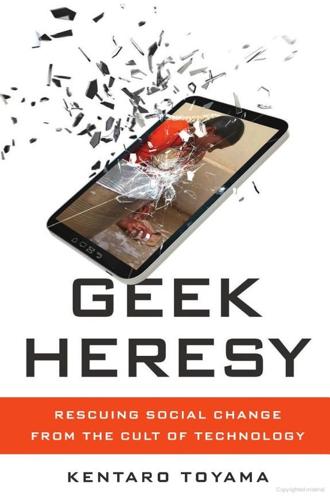
Geek Heresy: Rescuing Social Change From the Cult of Technology
by
Kentaro Toyama
Published 25 May 2015
But these are examples of people using technology to do more of what they already want to do, not making friends with old enemies. How Not to Bridge the Digital Divide The target of many social causes is some kind of inequality – of wealth, education, political voice, social status. Another is the “digital divide,” a phrase coined in the 1990s to describe unequal technology access between rich and poor Americans. The term was quickly extended to global disparities, and soon bridging the digital divide became a rallying cry. One response was to develop low-cost technologies – to make things only rich people could own affordable for everyone.
…
Selective exposure occurs when, in a bid to avoid cognitive dissonance, people tend to seek only information that confirms their beliefs. 20.Van Alstyne and Brynjolfsson (2005). 21.Stecklow (2005). 22.Mukul (2006); Raina and Timmons (2011). 23.A phablet is bigger than a smartphone, but smaller than a tablet. 24.That the digital divide is a symptom of other socioeconomic divides was astutely noted about telecenters by Economist (2005). The same article, however, curiously went on to suggest that mobile phones would somehow “promote bottom-up development” that presumably would help close socioeconomic divides because of their greater penetration. Its claim, in other words, is that the telecenter-based digital divide is a symptom of socioeconomic divides, but the mobile-phone-based digital divide is not. 25.This paragraph argues that the absolute difference in outcomes between high- and low-capacity people increases with an even spread of technology.
…
Wall Street Journal blog, Sept. 14, 2009, http://blogs.wsj.com/economics/2009/09/14/sarkozy-adds-to-calls-for-gdp-alternative/. Warschauer, Mark. (2003). Demystifying the digital divide. Scientific American 289(2):42–47, www.scientificamerican.com/article/demystifying-the-digital/. ———. (2006). Laptops and Literacy: Learning in the Wireless Classroom. Teachers College Press. Warschauer, Mark, Michele Knobel, and LeeAnn Stone. (2004). Technology and equity in schooling: Deconstructing the digital divide. Educational Policy 18(4):562–588, http://epx.sagepub.com/content/18/4/562.short. Watson, Tony. (2008). Sociology, Work and Industry, 5th ed.
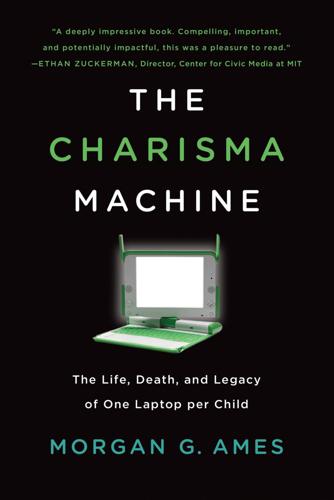
The Charisma Machine: The Life, Death, and Legacy of One Laptop Per Child
by
Morgan G. Ames
Published 19 Nov 2019
See, e.g., Bender, “One Laptop per Child”; Bender et al., Learning to Change the World; Hempel, “Miseducation of Young Nerds”; Hill, “Geek Shall Inherit the Earth,” “Laptop Liberation,” and “Technological and Cultural Imperialism”; Negroponte, “No Lap Un-topped,” “Hundred-Dollar Laptop,” and Being Digital; OLPC Wiki, “OLPC: Five Principles” and “OLPC Myths”; and Papert, “Digital Development.” 32. Amico, “Nickelodeon Partners with OLPC.” 33. La Nación, “Alumna del cuarto grado.” 34. See Fejes, “Media Imperialism.” 35. See Wolf, Europe. 36. See Parker, “Closing the Digital Divide”; Wilson, Wallin, and Reiser, “Social Stratification.” For critiques, see Warschauer, “Demystifying the Digital Divide”; Richtel, “Wasting Time.” Chapter 5: The Learning Machine and Charisma’s Cruel Optimism 1. Papert, Mindstorms, 28, 44, 50; OLPC Wiki, “OLPC Myths.” 2. Negroponte, “Email Attachment.” 3. Papert, Mindstorms, 37. 4. Papert, “Digital Development.” 5.
…
Introduction On January 26, 2005, capitalists and leaders from around the world made their annual pilgrimage to Davos, Switzerland, for the World Economic Forum. A decade before, those worshipping at this altar of neoliberal globalization had supported missions to spread computers and connectivity to the far corners of the world, such as the Technology to Alleviate Poverty project and the Digital Divide Initiative, but the dot-com crash in 2001 had largely quashed the appeal of those kinds of technological visions. Even so, Nicholas Negroponte, a professor at the Massachusetts Institute of Technology (MIT), tested the waters for rekindling that vision under a new name. He plied the halls of Davos that January with a crude mock-up and what he hoped would be a compelling story of a hundred-dollar laptop for children across the Global South.1 It would be cheap, it would be powerful, and it would be rolled out by the hundreds of millions to entire countries.
…
His hallway pitch for a hundred-dollar laptop garnered a brief blog mention by Travis Kalanick, who was attending the World Economic Forum as a “technology pioneer” (and would later start the ride-sharing platform Uber), but this mention was more due to Negroponte’s other accomplishments than his idea for a hundred-dollar laptop. New York Times technology journalist John Markoff took up Negroponte’s pitch in more depth but concluded that Negroponte had not been given more of an official platform because the forum had moved on from the ideal of closing the digital divide to solving more “fundamental” inequalities.5 This tone changed considerably the following November, when Negroponte took the stage at the World Summit on the Information Society in Tunis. Joining United Nations secretary-general Kofi Annan in a presentation in the Access2Democracy session on November 16, Negroponte unveiled an updated mock-up, which he called the “green machine”: a bright green plastic laptop about the size of a hardback book.

The New Division of Labor: How Computers Are Creating the Next Job Market
by
Frank Levy
and
Richard J. Murnane
Published 11 Apr 2004
Over the past fifteen years, computers’ growing importance has led to intense discussions of both the need for computer training and the “digital divide”—the proposition that poor children are not receiving the computer skills they need for good jobs. Is the digital divide real? The answer depends on what we mean by computer skills. In the early days of personal computers, people spoke about information “haves” and “have nots.” The “haves” were those who knew how to use a keyboard and mouse and who knew that text on a screen is just as “real” as text on paper. By the mid-1990s, this definition had expanded to include knowing how to use the Internet, and the term had changed to the digital divide. In the mid-1980s, one could legitimately worry that only some American children were acquiring these skills.
…
The standards for verbal and quantitative literacy developed by most states are quite consistent with the emphases in this chapter and with the recom- ENABLING SKILLS 105 mendations of many blue-ribbon commissions.6 But only a few states have developed tests that measure students’ ability to use reading, writing, and math to develop expertise and to communicate effectively. In some states the measures assessing literacy are more appropriate to the demands of Mary Simmons’s 1975 job than to those of her job today. If this is what tests measure, this is what students will learn and not much else. LOCATING THE DIGITAL DIVIDE A discussion of enabling skills needs to touch on a final item—the use of a computer itself. Mary Simmons spends her day at a networked computer. She is not alone. More than half of American workers do so, a dramatic increase from the 24 percent of workers who used a computer at work in 1984, when the Census Bureau first asked the question.
…
Today, 9 in 10 children 106 CHAPTER 6 now use a computer at home, in school, or in both places. While this proportion varies with income, the variation is fairly modest: 79 percent among children with household income below $25,000 and 90 to 98 percent for all children in higher income households.7 In terms of basic computer skills, the digital divide has largely been closed. But as we now know, this is just the first step of the solution. The reason Mary Simmons was able to keep her job as its demands changed was because of the things she learned to do with a computer—how to process customer questions in ways that would let her find answers in her database, how to translate database answers so that a customer could understand them, how to give short sales talks about new products and services that some customers find attractive.

Internet for the People: The Fight for Our Digital Future
by
Ben Tarnoff
Published 13 Jun 2022
In other words, the preferred strategy among policy-makers for solving the connectivity crisis is to give immense sums of public money to the firms that are responsible for causing it. In the words of one Detroit Community Technology Project staffer, “We’re trying to close the digital divide by paying Comcast and AT&T, who are responsible for the digital divide.” There are a number of federal programs, and various initiatives at the state and local levels, that provide corporate ISPs with billions of dollars’ worth of subsidies, tax breaks, and other incentives in the hopes of boosting broadband investment. Take the FCC’s Universal Service Fund.
…
In October 2018, Comcast announced it would pause buybacks owing to high debt levels stemming from its acquisition of the British media and telecom conglomerate Sky; buybacks were resumed in May 2021. 31, The result is large disparities … Microsoft research: Steve Lohr, “Digital Divide Is Wider Than We Think, Study Says,” New York Times, December 4, 2018. Disconnected are disproportionately rural and low-income: Monica Anderson, “Mobile Technology and Home Broadband 2019,” Pew Research Center, June 13, 2019. A third of rural Americans: Andrew Perrin, “Digital Gap between Rural and Nonrural America Persists,” Pew Research Center, May 31, 2019. Almost half of households with incomes below $30,000: Monica Anderson and Madhumitha Kumar, “Digital Divide Persists Even as Lower-Income Americans Make Gains in Tech Adoption,” Pew Research Center, May 7, 2019.
…
“We are working towards a future where neighbors are authentically connected,” read the Working Principles of the Equitable Internet Initiative, “with relationships of mutual aid that sustain the social, economic, and environmental health of neighborhoods.” Such an approach is a far cry from technocratic strategies to close the “digital divide” that aim merely at expanding access—and, further, imagine that doing so will solve poverty, a fantasy that scholar Daniel Greene calls “the access doctrine.” Connectivity is essential, but so is transforming how people connect. Simply plugging more users into a privatized internet does nothing to change how the internet is owned or organized, much less how it is experienced.
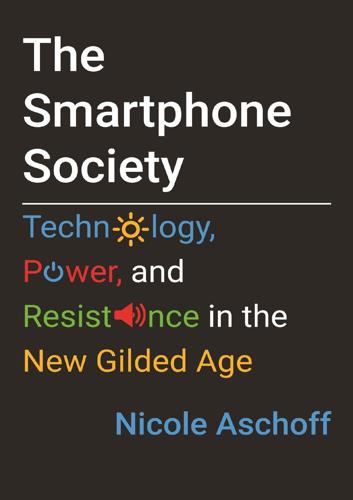
The Smartphone Society
by
Nicole Aschoff
Upgrade Cambridge, “Percent of Cambridge Households with Broadband Subscription by Household Income 2013–2016,” graph, https://upgradecambridge.org/digital-equity-in-cambridge. 39. Strain, Moore, and Gambhir, “AT&T’s Digital Divide in California.” 40. “AT&T’s Digital Redlining,” National Digital Inclusion Alliance, March 2017. 41. For an illuminating look at these digital divides, see Maria Smith’s video project Dividing Lines, https://youtu.be/E2AgxDT_494. 42. Hochschild, The Time Bind. 43. Lareau, Unequal Childhoods. 44. Board of Governors of the Federal Reserve System, “Report on the Economic Well-Being of U.S.
…
We can’t see the global divides that make the consumption patterns of wealthy countries possible.35 Instead we imagine the smartphone user, the consumer who can endlessly and effortlessly stream movies, Snapchat friends, shop the web, find the museum. The divide between those who make smartphones and those who consume them, particularly Western consumers, is just one element of what experts call the “digital divide.”36 As socioeconomic infrastructure becomes more and more dependent on digital connections the gulf between those who have easy access to high-speed internet and those who don’t appears starker than ever. In the United States, at least 24 million people, including a quarter of rural Americans and 5 million households with children, have no access to broadband internet service.37 In Cambridge, Massachusetts, a city that houses both Harvard University and the Massachusetts Institute of Technology, 40 percent of low-income households lack broadband access.38 In the late nineties, telecom providers such as AT&T and Comcast, eager to gain market share, invested heavily in expanding their networks.
…
The only people depicted clearly in the commercial are the woman who ordered the gift with a tap of her finger and the happy little girl who receives it. This is the unconscious message that we absorb from our phones today: that the people who make our emergent app economy possible are interchangeable, invisible, or unimportant.58 A Bigger Conversation Talking about mobile justice apps, sexting shame, digital divides, and appwashing starts a bigger conversation, one that moves beyond debates about whether smartphones are helping or harming society to a more dynamic discussion about power in America. The stripped-down snapshots we just saw of how race, gender, and class are being reproduced and reconfigured through our smartphones encourage us to put our phones at the center of this bigger conversation.

The End of Nice: How to Be Human in a World Run by Robots (Kindle Single)
by
Richard Newton
Published 11 Apr 2015
Because here we are: change is thundering ahead with irresistible force and speed and in its wake it is rendering society in two. On one side will be those who can free themselves from the straitjacket of their conditioning and make sense of the new way of living. On the other are those who will become lost in a world operated by robots and algorithms. This is the digital divide. Mass unemployment is inevitable. The challenge of economic survival will be matched by the even greater challenge of finding meaning and purpose in life. In this new world you can have a better life or a worse life. But more of the same is not on offer. This book is about how, at the personal level, you can thrive in the world of permanent acceleration.
…
Deep thinking, creativity and imagination happened – it was necessary for innovation after all – but such work was carried out by people considered special and boxed off from the masses. This was the case within organisations of all sorts. Such people were typically labelled boffins, artists, geeks, nerds, or in other ways exceptional. They were not People Like Us. Possibly they weren’t so “nice”. But now these people signpost the way to the pleasant side of the digital divide. As you say goodbye to the Nice Age you must unlearn the average ways of the routine and copiable. Whether you are a business or an individual you must do the things that cannot be contained in an algorithm. You must become Anti-Nice. I don’t mean, by Anti-Nice, that salvation lies in being morally bad.
…
The hands of consequence and inconsequence are both compelling. The future stands there patiently awaiting your choice: pursue your opportunities moderately and averagely or chase them passionately. One of these leads to robo-job Armageddon. Anti-moderation is the choice which takes you to the right side of the digital divide. Anti-Order “The more computers know the slower they get; The more the mind knows the faster it gets.” – Alan Fletcher Now you’ve pimped it you gotta crash it The surprising dance partner to the passionate and all-consuming, focus of Anti-Moderation is Anti-Order. Why should this be?
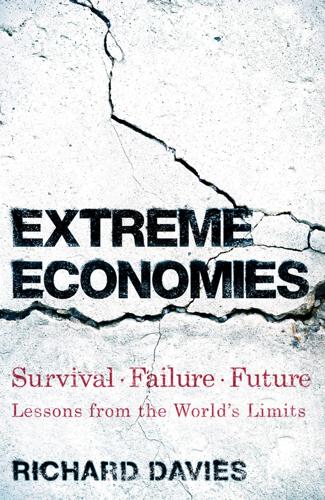
Extreme Economies: Survival, Failure, Future – Lessons From the World’s Limits
by
Richard Davies
Published 4 Sep 2019
The two fears from technology: unemployment and division On the risk that technological progress will lead to mass unemployment, see Keynes (1930) and Leontief (1952), and for a survey of the history of these kinds of concerns, see Mokyr et al. (2015). The prediction of 30 per cent automation – 44 per cent for the low skilled – is from PwC (2018); see also Muro et al. (2019) for a Brookings Institution report on the US. For recent discussion of a ‘digital divide’ or a new ‘digital underclass’, see World Bank (2016) and OECD (2018). Early concerns over the digital divide in the US are set out in FINA (1995, 1998). Estonia’s digital achievements: tax, political system, e-government For dates and facts on the Estonian ‘digital society’, see the government website: www.e-estonia.com; for the government’s long-term plan, see Ministry of Economic Affairs and Communications (2013) and State Electoral Office of Estonia (2017).
…
Estimates of the likely job losses as automation looms vary, but the latest studies suggest that 25 per cent of workers in the US and 30 per cent in the UK are at risk of being replaced by a machine. The robots are coming, the story goes, and they are going to take our jobs. The second fear is that technological advances will be unfair, generating a new type of inequality some call the ‘digital divide’. The core of this worry is that the benefits technology brings will favour some groups – the young, the urban, the educated and the wealthy – at the expense of others. Concerns over the impact of technology make Tallinn an interesting test case. Just as Akita offers a glimpse of the economics of ageing we will all soon experience, Tallinn is a technology frontier, and has already adopted many technologies that look set to catch on in our own economies.
…
(Fly Communist Party of Estonia!). The large car park, packed with employees’ shiny new vehicles, has a French-style kiosk in the corner that sells glossy magazines, and tucked behind it a memorial that carries a lengthy elegy to the Lenin factory railcar workers. If you are interested in a new digital divide in society, this is your place. The employment record of firms based in Ülemiste City is an initial clue that while technology might cause rifts, it can help heal them too. There are plenty of ethnic Russian innovators and entrepreneurs here, many in senior management positions. Playtech, a company that writes the software behind many gambling and gaming sites, was founded in Estonia in 1999 and now employs 5,000 people in 17 countries; there are lots of Russian speakers in its Tallinn office – essential, given that hundreds of coders work further east in its Ukrainian operation.

The Digital Party: Political Organisation and Online Democracy
by
Paolo Gerbaudo
Published 19 Jul 2018
Thus, for example, Podemos in the 2015 and 2016 elections has proposed the need for a new model of production that involves the ‘promotion of self-consumption facilities, giving small direct aids to the purchase of solar panels or mini-generators for self-consumption without spilling into the network’ and the ‘the establishment of fiscal measures that tax the consumption of non-renewable and polluting energies, as well as the provision of tax incentives for the use of renewable and non-polluting energies’.139 Solar energy is seen not only as a source of cheap and sustainable energy but also as a means to break the monopoly held by oil-producing countries on the global energy supply, and as a way of empowering ordinary people to produce electricity at home. Furthermore, Podemos has promised to fight against the digital divide, improving accessibility to telephony and the internet, especially for people in peripheral areas. All in all, these proposals paint an image of digital parties as progressive modernising forces that want to usher in new technologies, allowing for a more efficient, environmentally sustainable and inclusive society.
…
This tendency can, on the one hand, open up the party to various people who were previously barred from participating because of geographic remoteness, disabilities, family commitments or limited time. However, the participation offered by the cloud party can be much like real clouds, quite ethereal, and exclusionary towards those ‘disconnected’ citizens who find themselves on the other side of the digital divide. Second, the digital party is a forum party, a party that, like social media platforms, which constitute the evolution of early internet forums, is a space of discussions, involving members, sympathisers and organisers. Although in previous parties these discussions mostly happened more discreetly within the party, and its manifold committees, debates are now supposed to be conducted openly, to abide by the principle of transparency derived from hacker culture, this is seen, for example, in political meetings being live-streamed, as is often done by the Five Star Movement in Italy.
…
Then, there is a 10 per cent of active participants, but inside which, once again, we find significant polarisation, and where only 1 per cent is really active and dedicated. This phenomenon has been found in a number of online communities, starting from Wikipedia, where 0.003 per cent of users create two thirds of the website content, and it is common to many online communities.201 Thus, paradoxically the openness of participation creates a new digital divide, a ‘participation divide’ that separates those who are able and willing to participate from those who are not.202 This conundrum raises the question of whether, rather than opposing participation to representation, what should be pursued instead is some form of accommodation between participation and representation.
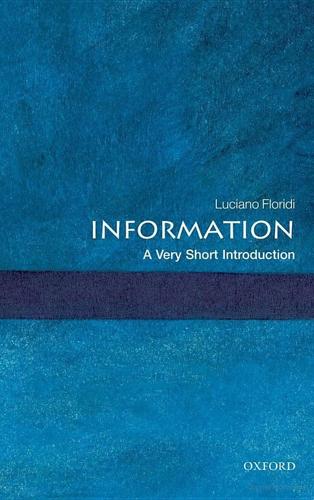
Information: A Very Short Introduction
by
Luciano Floridi
Published 25 Feb 2010
In a comparable move, the EU Heads of States and Governments acknowledged the immense impact of ICTs when they agreed to make the EU `the most competitive and dynamic knowledge-driven economy by 2010'. On the other hand, ICTs also carry significant risks and generate dilemmas and profound questions about the nature of reality and of our knowledge of it, the development of information-intensive sciences (e-science), the organization of a fair society (consider the digital divide), our responsibilities and obligations to present and future generations, our understanding of a globalized world, and the scope of our potential interactions with the environment. As a result, they have greatly outpaced our understanding of their conceptual nature and implications, while raising problems whose complexity and global dimensions are rapidly expanding, evolving, and becoming increasingly serious.
…
At the end of this volume, we shall see that we should probably be working on an ecology of the infosphere, if we wish to avoid foreseeable problems. Unfortunately, it will take some time and a whole new kind of education and sensitivity to realize that the infosphere is a common space, which needs to be preserved to the advantage of all. One thing seems indubitable though: the digital divide will become a chasm, generating new forms of discrimination between those who can be denizens of the infosphere and those who cannot, between insiders and outsiders, between information-rich and information-poor. It will redesign the map of worldwide society, generating or widening generational, geographic, socio-economic, and cultural divides.
…
Whether the (quantitative and qualitative) presence or the (total) absence of information-as-a-resource is in question, there is a perfectly reasonable sense in which information ethics may be described as the study of the moral issues arising from `the triple A': availability, accessibility, and accuracy of informational resources, independently of their format, kind, and physical support. Examples of issues in information ethics understood as an information-as-resource ethics are the so-called digital divide, the problem of infoglut, and the analysis of the reliability and trustworthiness of information sources. Information-as-a-product ethics A second, but closely related sense in which information plays an important moral role is as a product of A's moral evaluations and actions. A is not only an information consumer but also an information producer, who may be subject to constraints while being able to take advantage of opportunities.
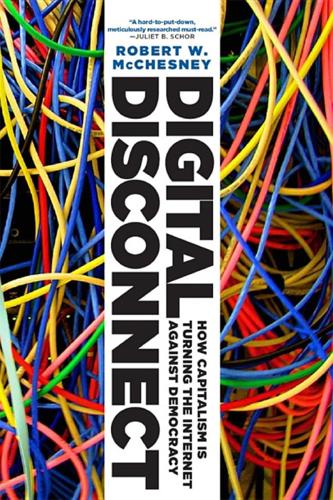
Digital Disconnect: How Capitalism Is Turning the Internet Against Democracy
by
Robert W. McChesney
Published 5 Mar 2013
Using FCC data (that the commission acknowledges probably overstates the degree of actual competition), all but 4 percent of remaining households has, at most, two choices for wired broadband access, a duopoly comprised of the local monopoly telephone provider—which may or may not be aggressively pushing wireline broadband—and a cable company.65 There is no incentive for these duopolists to expand the market if it means they must lower their monopoly prices and profits; hence the persistence of the “digital divide,” which I turn to below. The Obama administration set aside $7.2 billion in stimulus money to bring high-speed Internet to underserved areas, and while it helped in some rural areas, “it had no impact on the broader competitive situation in the market for most American consumers.”66 Moreover, it gave the big players an indirect subsidy “because a lot of the projects that were supported then need to buy connectivity from the major telcos.”67 The other great development is the rise of cell phones, smartphones, and wireless Internet access.
…
The poorest states in the nation all subscribe at under 50 percent. “Access to broadband has become critical for anyone to keep up in American society,” the report observes. “Finding and applying for jobs often takes place entirely online. Students receive assignments via e-mail. Basic government services are routinely offered online.” The digital divide thereby accentuates the gnawing inequality in the United States. The “solution” for the unwired is the cell phone with some Internet access, but as the report concludes, “a smart phone is no substitute for a home computer with a wire-line connection, at least not today.”113 And as we will see shortly, probably not tomorrow either.114 There are currently two great policy battles in the United States that may reduce the damage caused by the ISP cartel.
…
Mark Bauerlein edited a 2011 anthology with arguments “for and against” social media, including some of the writers cited in this chapter. Aside from the contributions of Douglas Rushkoff, capitalism can barely be found in the twenty-seven essays totaling 334 pages of text. See Mark Bauerlein, ed., The Digital Divide: Arguments for and Against Facebook, Google, Texting, and the Age of Social Networking (New York: Tarcher, 2011). 51. Robert A. Dahl, Democracy and Its Critics (New Haven: Yale University Press, 1989), 237. This is a common theme in the academic literature. For a nice recent discussion, see Gar Alperovitz, America Beyond Capitalism: Reclaiming Our Wealth, Our Liberty, and Our Democracy, 2d ed.
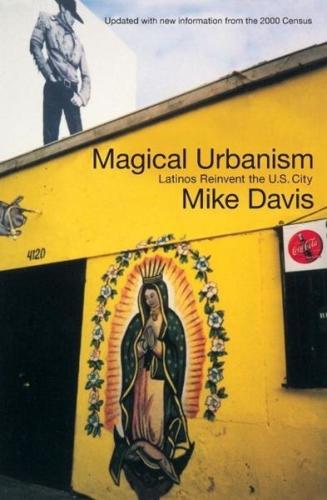
Magical Urbanism: Latinos Reinvent the US City
by
Mike Davis
Published 27 Aug 2001
In both names whole have benefited New far less urban economies than York and Los Angeles, Spanish are conspicuously absent sur- from the major high- wage indus- tries that drive their regional economies in the post-Cold era: financial services and entertainment production, War respectively. A six-month investigation by the San Francisco Chronicle in also suggests that Latinos are trapped "digital divide" on the wrong 1998 side of the by bad schools and rampant job discrimination. After analyzing the employment records of the thirty-three lead- ing Silicon Valey firms and interviewing hundreds of executives, academics and activists, the Chronicle concluded that massive un- derrepresentation of the region's Black and Latino populations in managerial and professional jobs was the result of the dearth of science and math education five factors: 1) in minority-majority schools; 2) failure to enforce federal affirmative action laws ("violators rarely tin pay fines and are almost never disqualified from government contracts"; 3) get- job recruiters' neglect of campuses with substantial minority enrollments; 4) absence of supportive "networks" ("there are virtually no top-ranking blacks and Lati- nos in Silicon Valley to inspire and mentor younger employees"); 5) pervasive image.
…
After analyzing the employment records of the thirty-three lead- ing Silicon Valey firms and interviewing hundreds of executives, academics and activists, the Chronicle concluded that massive un- derrepresentation of the region's Black and Latino populations in managerial and professional jobs was the result of the dearth of science and math education five factors: 1) in minority-majority schools; 2) failure to enforce federal affirmative action laws ("violators rarely tin pay fines and are almost never disqualified from government contracts"; 3) get- job recruiters' neglect of campuses with substantial minority enrollments; 4) absence of supportive "networks" ("there are virtually no top-ranking blacks and Lati- nos in Silicon Valley to inspire and mentor younger employees"); 5) pervasive image. racism on a scale that belies that Valley's progressive MAGICAL URBANISM 102 Table 9 The Digital Divide: Unequal Opportunity in Silicon Valley (Percentage of the Workforce) Silicon Bay Area Oracle^ Sun- white 56 61 73 71 Asian 21 28 20 22 Latino 14 7 3 4 8 4 3 3 Black * Percentages for 33 ^ VaUey* Mountain View, major high-tech firms. 11, 3 85 Source: San Francisco Chronicie, Indeed, ' Redwood Shores, some of May 4, been fined or sued the worst offenders are cyber-capital icons all of whom for racial discrimination or failure to federal diversity deadlines.
…
In a 1980 study, clerical and 17 percent factory) and immi- grant Latinas (37 percent factory and 16 percent clerical) were represented in manufacturing and clerical office markets in almost inverse proportions (Dowel Myers and Cynthia Cranford, "Temporal Differentiation in the Occupational Mobility of Immigrant and Na- tive-bom Latina Workers," American 179. "The 180. Los Angeles Times, 181. May 4, p. 70). 1998. 20 Jan. 2000. The Puerto Rican Tragedy "Gary Burtless, an economist at the that the disadvantages Hispanics face - Review 63 [Feb. 1998], Pollard and O'Hare, p. 38. Chapter 10 182. Sociological Digital Divide," San Francisco Chronicle, will diminish Brookings Institution - even over time. The United ... says he tends to think after several generations in the States, almost alone United States among developed nations, confers one advantage that tends to reduce the disadvantages faced by immigrant groups - full citizenship for 183.

The Patient Will See You Now: The Future of Medicine Is in Your Hands
by
Eric Topol
Published 6 Jan 2015
hospital-related, 186–188 molecular autopsies, 103, 205–206 Deep learning, 244, 255 DeepFace program, 245 Defense Advance Research Projects Agency (DARPA), 118–119 Delbanco, Tom, 125(quote) Dementia, 94 Democratization of medicine, 5–8 bridging the digital divide, 272–273 collaborative patient-physician relationship, 276 cost data, 157 effect of FDA and consumer genomics on, 64–71 eHealth networking, 164 frugal technology, 269–270 importance of mass technology, 285–286 lab testing through LOC, 111 mHealth movement, 169 MOOC movement, 197 MOOM, 202, 217 open access, 200 through data science, 238–239 See also Data management; Paternalism, medical Denmark disease prediction, 249 modern hospitals, 190–192 Dental X-rays, 114 Depression, 251–252 Developing countries communicable diseases, 261–267 digital divide, 271–274 lack of health professionals, 270–271 non-communicable diseases, 267–270 Development, economic, 259, 261 Devices, medical costs, 148–150 diagnosing infectious diseases in developing countries, 263–264 digital medicine in the developing world, 269–270 hacking, 230–231 malaria diagnosis, 262 open source, 116–117 telemedicine in the developing world, 270–271 Diabetes, 88, 95, 100, 162, 272 Diagnostics cancer in developing countries, 268–269 doctorless autonomy, 277–278 doctors withholding, 25–26 genome sequencing, 84–85 lab on a chip, 109–111, 262 molecular-level, 100 physical exam with a smartphone, 121–123 root-cause of rare genetic disease combinations, 17 smartphone apps for, 6 smartphones’ use in, 4–5 undiagnosed diseases, 92–93 Diet, microbiome and, 87 Difficult patients, 4, 19–20 Digital divide, 271–274 Digital quotient (DQ), 178–179 Disability: Global Burden of Disease, 258, 258(fig.)
…
Nicole Ellison, an associate professor in the School of Information at the University of Michigan, predicted, “As more of the global population comes online, there will be increased awareness of the massive disparities in access to health care, clean water, education, food, and human rights.”63 There are two divergent effects of relying on digital tools to improve health care throughout the world. On the one hand, it can, as we’ve seen through many examples, provide state-of-the-art medicine anywhere there is a mobile signal, and especially with a smartphone with Internet connectivity. That proviso emphasizes the importance of the digital divide, which is surely not just a problem outside the United States. Although the Obama administration put more than $7 billion into expanding broadband Internet reach throughout America, millions have been left by the e-wayside.64 Still about 20 percent of adults in the United States do not use the Internet via any means, including a mobile device.
…
The underrepresented, minority populations are especially overrepresented in the nonaccess group. Some will be surprised that the United States ranks seventh among the top twenty global economies for Internet adoption.65 Simply pouring more money into this does not appear to be enough: Joseph Morris, director of Internet policy at the US Commerce Department, calls the digital divide “a complex, multi-faceted challenge with no simple, one-size-fits-all solution.”64 This makes it all the more important to start investigating multiple responses. Despite this very significant challenge of democratizing broadband access and assuring universal adoption, there are signs that the current infrastructure is helping people we might not have expected it to help.

Capitalism 3.0: A Guide to Reclaiming the Commons
by
Peter Barnes
Published 29 Sep 2006
Phone companies also came up with a system— DSL—that squeezes more data through their skinny wires. There are thus now two good ways to get high-speed access to the Internet—if you can afford roughly $30 a month, or $360 a year. Since not everyone can afford this, however, we have what some people call a digital divide—a financial barrier to universal access. This is where the airwaves come in. Using digital signals, it’s now possible to bridge the last mile to the Internet through the public’s own airwaves. Not only that, it’s incredibly cheap to do so, using technologies like wi-fi. At the same time, another technical breakthrough is imminent: the Internet—including this last wireless mile—will soon be “thick” enough to carry data, telephone calls, and television pictures.
…
See surplus capitalism | 185 | 186 | carbon emissions control valve for, 87–88 global atmospheric trust, 147–49, 151 management of, 41, 162 permits vs. taxes, 40, 140, 143–44 Cato Institute, 58 cell phones, 125 Center for Economic Policy Research, 129 Center for Public Integrity, 36 CERN, 159 Chief Seattle (Suquamish tribe), 73 Children’s Opportunity Trust, 108–12, 144–45, 147, 153 Christian Broadcasting Network, 125 Cisco Systems, 71 Coase, Ronald, 58–60, 90, 92 common assets balance sheet for, 88–89 dividends from, 75, 106–8 and the economic operating system, 102 right to, 157 as shared gifts, 5–6 value of, 69–71 common property, 6, 61–62, 72–73, 106 common wealth and common property, 76, 106–7 corporate use of, 105 overview of, 6, 66–69, 71 value of, 68–71 commons decline of the, 15–20 defined, 4–6 public land, 42–45 tragedy of the, 7–8 See also common assets; community; culture; nature commons entrepreneurs, 158–60 commons rent and pollution rights, 94–96 C A P I TA L I S M 3 . 0 and poverty, 93–94, 96–98 and scarcity, 92–93 commons sector algorithms of the, 131–32, 165 balance with corporate sector, xiv–xv, 65–66, 76–78, 164 birthrights and the, 104 common property, 6, 61–62, 72–73, 106 and the economic operating system, 101, 163 enclosure of the, 128 enlarging the, x, xv governments role in the, 152–53 local initiatives, 136–40 national initiatives, 143–47 natural assets, 70 organizing principles, 73–76, 105 overview of the, xiv, 6, 65–66, 135–36, 167 regional initiatives, 140–43 social assets, 70–71 See also common assets; common property trusts; common wealth; global atmospheric trust; health care commons tax credits, 146–47 commons trustees, 47, 48, 91, 98–100 commons trusts accountability and democracy, 98–100 as balance to corporations, 88–90 and the divine right of capital, 80–82 effect on poverty, 97–98 examples of, 84–86, 136–37, 142–43 management of, 86–88 need for, 79–80 overview of, 84–86 and pollution rights, 90–92, 106 tax credits for, 146–47 trustees, 47, 48, 91, 98–100 See also commons rent Communications Act of 1934, 124 Index community and capitalism, 101 and the commons sector, 66, 164, 165 fortification of, 131 and local art, 120 as part of the commons, 5–6 public spaces, 139 scope of, 68 time banks, 139 and universal birthrights, 104 community gardens, 138, 175 Congress battles over Internet use, 126, 128 broadcast frequency giveaway, 19, 125 and copyright terms, 119 limitations of, 48 and lobbyists, 36–38 and tax laws, 39, 110–11 conservation easements, 85–86 Constitution drafting the, 34 Equal Protection clause, 45 limitations of the, 38, 99 Ninth Amendment, 103 as rules for democracy, 8 and universal birthrights, 103, 156 contract and converge, 149–50 copycat research, 129–30 copyright, xv, 74, 118–21, 132 corporations and the airwaves, 125–26 algorithms of, 50–51 ascent of, 19–22, 72 bailouts of, 38, 45 balance with commons sector, xiv–xv, 65–66, 76–77, 163, 165 battle over Internet access, 126–28 bottom lines, 51–53, 79–80 charter system, 20–21 clash with commons algorithms, 131–32 | 187 control of culture, 118–21 divine right of capital, 81 domination of government, xv–xvi, 47–48, 98–99, 155 and enclosure, 45 “influence industry,” 35–38, 145 and negative externalities, 9–10 patent ownership, 128–30 personhood, 21, 72 and pollution rights, 41, 91, 94 socially responsible, 50, 58 stock market use fees, 107 thneeds, 10–11 and trusteeship, 84, 100 Costanza, Robert, 70 culture and the airwaves, 124–26 arts/artists, 12, 118–21, 132, 175 copyright, 74, 118–21, 132 as joint inheritance, 5–6, 12, 68, 117–18 and limits on advertising, 122–24 patents, 128–31 social assets, 69–71 See also Internet; science D Declaration of Independence, 103 Defense Advance Research Projects Agency, 131 democracy, 8, 34, 45, 98–100, 145–46 Department of the Interior, 35–36 Desert Land Act of 1877, 18 Diamond, Jared, 4 digital divide, 127 digital frequencies, 19, 125 discontent, 29–31, 65 Disney Corp., 119, 125 distribution of wealth, 26–29, 105–6, 143–44 See also inequality Divine Right of Capital, The (Kelly), 80 Dole, Bob, 19 Domesday Book, 82 188 | Dr. Seuss, 10, 72, 73 Dudley Street revitalization, 136 E economic operating system and birthrights, 102–3, 110, 116 and common property trusts, 88, 100 and the divine right of capital, 80–82 illth and thneeds, 9–11 levers, 86–87 overview of our, 8–9 plan for transforming, 163–66 and poverty, 97 and start-up shares, 102–3 and state of the world, 3–4 stock market, 67–68, 71, 107–8 and trust in, 67, 68 upgrading our, xiii–xiv, 4, 11–14, 31–32, 47 See also surplus capitalism Economist, The (magazine), 52 economists, 9–10, 88–90, 161 ecosystem services, 70, 86, 89–90 ecosystems and common property trusts, xv, 88, 91 management of, 86–88, 99–100 models for preservation of, 82–84 as property-less, 38–39 education, 18, 44, 103, 104 Edwards Aquifer Authority, 138 emissions.
…
Seuss), 10, 72, 73 General Electric (NBC), 125 General Social Survey, 29–30 George, Henry, 93–94 Glaxo Wellcome, 37 global atmospheric trust, 147–50 globalization, 28, 97 Index government bias towards property owners, 39 corporate dominance of, xv–xvi, 45, 47–48, 155 corporate/commons sector balance via the, 76–78, 162 limits of regulation, 35–39, 58, 59 and pollution rights, 39–42, 60–61 role in protecing the commons, x, 33–34, 47, 152–53 Grassley, Chuck, 37 Great Britain, 16–17, 109, 114, 118, 119 Great Plains, 142 “green taxes,” 39 groundwater trusts, 138 H Haggin, James, 18–19 Hammond, Jay, 46 happiness and community, 101 and property, 110 and surplus capitalism, 29–31, 65 as universal birthright, 103, 164 Hardin, Garrett, x, 7–8, 33, 49, 169n7 Hawken, Paul, 55 health care as birthright, xv, 104, 112–15, 157, 164 management of, 109, 153 pharmaceutical lobbyists, 36–37 universal health insurance, 113–15 Hickel, Walter, 19 Homestead Act of 1862, 18 Hurwitz, Charles, 53 I illth and the commons, 9–10, 19–20, 45 definition, 9 need to address, 12 and pollution rights, 58–59 and valve keepers, 88, 163 | 189 incentives, 13, 95 inclusivity, 6, 75 inequality and birthrights, 103–5 and capitalism, 26–29, 50, 65 and commons trusts, 88 and commons rent, 96–97 in distribution of wealth, 26–29, 105–6, 143–44 in Internet access, 126–28 “influence industry,” 36–38 infrastructure, as joint inheritance, 12, 71 inheritance tax, 110–11 intellectual property, 119 Internal Revenue Service, 112 Internet digital divide, 127 “net neutrality,” 128 as product of publicly funded research, 131 resource guide, 175–76 as social asset, 70–71, 75, 118, 126–28, 157 two-tiered Internet, 128 wi-fi access, 126, 140, 145 World Wide Web, 159 J Jefferson, Thomas, 103, 108, 110, 128–29 John, King of England, 16 joint stock corporation.

Smart Cities: Big Data, Civic Hackers, and the Quest for a New Utopia
by
Anthony M. Townsend
Published 29 Sep 2013
“Give a man a fish and you feed him for a day,” the Chinese proverb goes, “teach a man to fish and you feed him for a lifetime.” From Digital Divide to Digital Dilemmas While the simple rubric of the “digital divide” has been used for nearly twenty years now to frame policy debates about technology and the poor, it is no longer useful. The problem isn’t just access to technology; it is the lack of capacity to exploit it for good. As the World Bank argues, “Not all economies are the same and not all economies are equally prepared to absorb broadband and embrace it to reap its potential benefits.”46 Thinking simply of a digital divide tricks us into believing this is a simple binary problem of haves and have-nots, when in fact it is a set of interlocking dilemmas that defy easy solution.
…
In New York City, whose 311 system averages some sixty thousand calls each day, more than 170 languages are offered.47 A resident can use 311 to interact with government without even knowing how to read or write. It would be difficult to design a more accessible system. But 311 has its own secret digital divide. According to a 2007 study conducted by Columbia University for the New York City Department of Sanitation, poor neighborhoods with large minority populations complained less frequently to 311 about missed trash pickups.48 And New York isn’t alone in its underutilization of 311 by historically disadvantaged groups.
…
E., 283–84 Curitiba, 11 CV Dazzle, face-recognition scrambling by, 14 Cyber Emergency Response Team, 268 cybernetics, 74–76, 81, 82 cyber-sabotage, 266–69 cyberspace, 49 Daley, Richard, 207 data-driven management, 210–11, 214 data mining, 206 data networks, 42–46 as fourth utility, 44 Davies, Donald, 259–60 Death and Life of Great American Cities, The (Jacobs), 16, 97–98, 103, 126 de Bruijn, Mirjam, 180 “deep analytics,” 209 Defense Department, U.S., 79–80, 111, 260, 265, 269–70 defense industry, 77, 79 de Forest, Lee, 129 de la Peña, Benjamin, 174 Deng Xiaoping, 24 “dependable computing,” 299 de Tocqueville, Alexis, 308 Detroit, Mich., 51, 295 Digital Cellular Radio (Calhoun), 52 digital divide, 189–93 issues of access and agency in, 190–91 digital identity, biometrics in, 310 Digital Media City, 28 digital networks, 7, 53 sharing economies in, 16 to transform cities with, 7–9 digital technology: for democratizing cities, 9–10 in design of smart leisure facility, 22 as solution to urban problems, 8 urbanization intersection with, 4, 6–7 digital video camera, 115 Division of Vital Statistics, U.S., 59 DIYcity.org, 155–59, 164–65, 202 Challenges for, 156–58 DIYtraffic, 157 Dodgeball, 121–26, 134, 146, 233 Dominican Republic, 176–77 Donteat.at, 150 dontflush.me, 139–40 doomsday scenarios, 276–81 Doppler radar, 68 Downtown Alliance (Manhattan), 132–33 Dreadnought, 21 Dr.
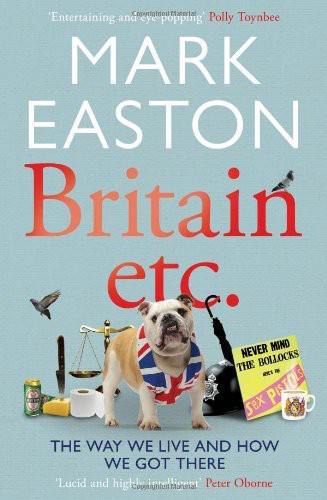
Britain Etc
by
Mark Easton
Published 1 Mar 2012
Wellman and Hampton concluded that the Internet wouldn’t destroy or transform community, but by offering an additional form of communication, it did have the capability to enrich and empower wired neighbourhoods. Their concern was for people who didn’t have access, those people on the wrong side of the digital divide. ‘What will the Internet do for community then?’ they asked. The British government was already growing anxious about the significant minority of citizens who were not on the web – less because of concerns over neighbourliness than the risk of missing out on the economic advantages promised by e-government: citizens accessing state services, paying taxes, shopping, banking, finding jobs or training online.
…
Tony Blair’s ambition to get everyone surfing away within five years was based on a belief that the meteoric growth of the Internet would continue, and the job of government was simply to help people aboard. The evidence, however, pointed to a problem: with quite a lot of British citizens apparently happy to be on the wrong side of the digital divide, new technology might serve to increase inequality and social isolation. Another study into Internet access in London reported the same difficulty: ‘A lack of interest amongst those not connected is probably the most significant problem facing policymakers.’ The capital’s politicians were warned that the number of non-users with ‘no interest’ remained stubbornly high and, with a slightly desperate tone, the report added, ‘Non-users must be convinced.’
…
Tony Blair’s ambition to get everyone on the Internet by 2005 came and went. Five years later there were still 9.2 million adults who had never been online in Britain. More than a quarter of UK households had no access to the web, with 59 per cent of those saying they either didn’t want or didn’t need it. The digital divide is partly a generation gap, with older people more reluctant to engage with new technology. But it is also a feature of a profoundly worrying aspect of British society: the sizeable minority of citizens who are increasingly disconnected from the mainstream. While just 3 per cent of graduates have never used the Internet, for those without any formal qualifications the figure rises to 55 per cent.
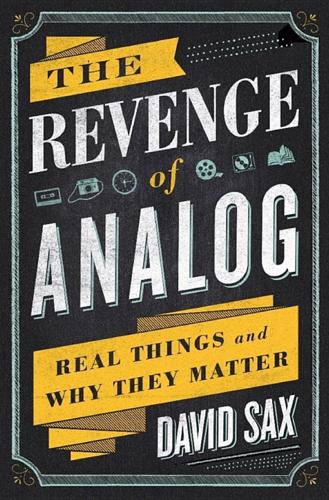
The Revenge of Analog: Real Things and Why They Matter
by
David Sax
Published 8 Nov 2016
Study after study seems to confirm how the implementation of educational technology produces little net benefit to student performance, and in many cases, actually makes things worse. The examples cited here, which represent just a fraction of the existing and ongoing research into this, show the various ways educational technology falls short. One of the big beliefs in the ed tech movement is the need to bridge the so-called digital divide between those who have access to computers and those who don’t. The theory holds that wealthy students with computers do better than poorer students who don’t have access to those computers. Increase access to computers and the Internet, in schools and at home, the thinking goes, and watch inequality fall.
…
“Further evidence suggests that providing universal access to home computers and high-speed Internet access would broaden, rather than narrow, math and reading achievement gaps. . . . For school administrators interested in maximizing achievement test scores, or reducing racial and socioeconomic disparities in test scores, all evidence suggests that a program of broadening home computer access would be counterproductive.” The same logic of bridging the digital divide was behind the wildly ambitious One Laptop per Child (OLPC) nonprofit, spearheaded by MIT Media Lab founder Nicholas Negroponte and set up in 2005 with the backing of a vast coalition of philanthropists and technology companies. OLPC’s goal was to produce and distribute rugged, inexpensive, Internet-enabled laptops to the world’s poor with innovative features such as solar panels and hand cranks.
…
“Why I Just Asked My Students to Put Their Laptops Away.” Medium, September 8, 2014. Strauss, Valerie. “Too Much Tech? An Argument for Keeping Schools Low-Tech.” Washington Post, August 26, 2014. “Students, Computers and Learning.” OECD Publishing, 2015. Vigdor, Jacob L., and Helen F. Ladd. “Scaling the Digital Divide: Home Computer Technology and Student Achievement.” Urban Institute, June 2010. Warschauer, Mark, and Morgan Ames. “Can One Laptop per Child Save the World’s Poor?” Journal of International Affairs, Fall/Winter 2010. Zakaria, Fareed. “Why America’s Obsession with STEM Education Is Dangerous.”

The Butterfly Defect: How Globalization Creates Systemic Risks, and What to Do About It
by
Ian Goldin
and
Mike Mariathasan
Published 15 Mar 2014
Overuse of sole network cables or servers also quickly leads to problems when one overconnected node fails, as our examples show. Social Risks In chapter 7 we examine social risks of the Internet in more detail. Here it is worth noting that the Internet has the potential to increase inequality due to the digital divide in access and affordability to connections. As the Internet developed, its transformative effects did not reach all regions equally. Figure 4.9 shows that the worldwide number of Internet users is rapidly increasing in the aggregate; the growth rate is higher in high- and middle-income countries than in low-income countries.
…
See also asset-backed securities developing countries: capital flow restrictions of, 20f; environmental concerns in, 134–36, 140–41, 143; foreign aid to, 21f, 186, 197; greenhouse gas emissions in, 134, 136; income inequality in, 176; incomes in, 169, 170, 177, 179t, 180; Internet access in, 14, 180, 196; mobile phone use in, 14, 180, 223n20; population growth in, 180; poverty in, 169. See also inequality Dewatripont, Mathias, 63 digital divide, 118–19, 119f, 120f disasters. See natural disasters diseases. See health risks; pandemics; viruses Dodd-Frank Act, 53b Dominican Republic, 123 Dragusanu, Raluca, 177, 182–83 Dua, André, 139 Dubé, Laurette, 121 EastWest Institute, 193 eBay, 13 ECB. See European Central Bank ecological risks: from environment, 123–26, 129–33; to environment, 123–26, 133–38, 141–42; externalities of, 128; globalization and, 123, 124, 126, 129, 133–37; invasive species, 137, 158; management of, 123–24, 141–43; as metarisks, 123; nature of, 124–28; of pollution havens, 140–41; secondary effects of, 130; systemic, 141; vulnerability to, 126–27.
…
See also inequality; poverty incomes: in advanced economies, 169–70; in developing countries, 169, 170, 177, 179t, 180; of Internet users, 119, 119f; of middle class, 182–83; skills premium, 172, 174t; social class and, 183; of working class, 172, 185. See also economic growth India: airports in, 104; income inequality in, 172–73, 175f; MBA programs in, 87 individual rationality: economic incentives and, 215–16; externalities of, 33; tension with collective outcomes, xv inequality: causes of growth in, 170–72; channels of, 180–81; digital divide, 118–19, 119f, 120f; environmental degradation and, 143; globalization and, 169–73, 176–77, 180–81, 197; increases in, 168, 176–77; migration and, 186–87; in political power, 195; reduction of, 180, 182, 186, 196–97; risks of, 168–69, 181–87; social cohesion and, 181–86; within-country, 168, 170–73, 171f, 175f, 176, 182, 196.
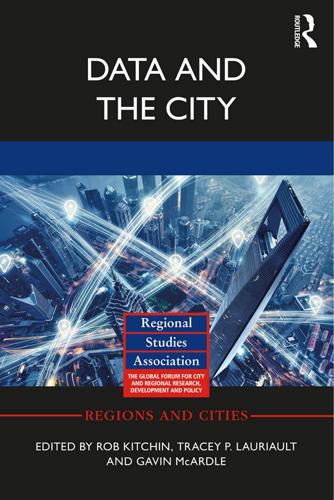
Data and the City
by
Rob Kitchin,Tracey P. Lauriault,Gavin McArdle
Published 2 Aug 2017
Foursquare can only act upon the individual that data can see, that data created in the epistemological leap from someone’s actual everyday actions to partial inscriptions thereof (Thatcher et al. 2016). The creation, capture and analysis of those inscriptions typically do not allow for, much less incorporate, many forms of difference including identity, intercultural silences and even digital divides (Dalton et al. 2016; Thatcher et al. 2016). However, just as Harris states about geodemographic targeting, ‘Given the nature of business decisions, the cost . . . would not be borne if the technique could not prove its worth’ (Harris et al. 2005: 225), the provenance of said data is ultimately immaterial to Foursquare so long as the data, in some way, produced a profit.
…
For instance, the entirety of online geographical information is at times conceptualized as an additive dimension that is intricately intertwined with physical space: a ubiquitous virtual layer that is at once separate from, parallel to, and mutually constitutive with material places (Zook and Graham 2007). Research surrounding the ‘digital divide’ explores spatial (and other) inequalities in terms of internet availability, access to datasets and digital literacy (van Dijk 2006; Graham 2011). The increasingly popular (but fuzzy) notion of amalgamated virtual-material ‘hybrid spaces’ (Gordon and de Souza e Silva 2011: 86) that are imagined to flatten and fuse geometries of distance and scale through digital interfaces is intended to allow for consideration of both physical locales and digital processes simultaneously and coequally.
…
Gordon, E. and de Souza e Silva, A. (2011) Net Locality: Why Location Matters in a Networked World. Chichester and Malden, MA: Wiley-Blackwell. Graduiertenkolleg Topologie der Technik (2015) Topological Manifesto [accessed 30 June 2015]. Graham, M. (2011) ‘Time machines and virtual portals: The spatialities of the digital divide’, Progress in Development Studies 11(3): 211–227. 168 T. Straube Graham, S. (1998) ‘The end of geography or the explosion of place? Conceptualizing space, place and information technology’, Progress in Human Geography 22(2): 165–185. Haraway, D. (1987) ‘A manifesto for cyborgs: Science, technology, and socialist feminism in the 1980s’, Australian Feminist Studies 2(4): 1–42.
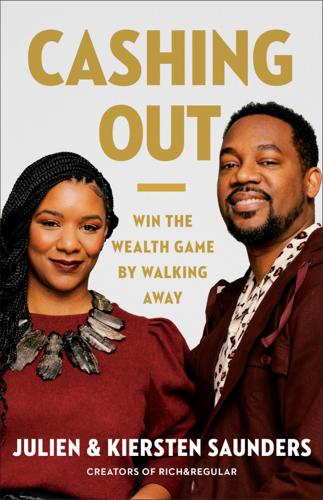
Cashing Out: Win the Wealth Game by Walking Away
by
Julien Saunders
and
Kiersten Saunders
Published 13 Jun 2022
Making more money in the twenty-first century requires you to reconcile the role that technology plays in our culture, particularly online. Because of this, we believe technological literacy is just as important as financial literacy. And as I’m sure you can guess by now, Black and Brown communities are disadvantaged here too. The digital divide has existed for a while, but a 2020 study from Deutsche Bank quantifies the impact as a function of time, not just skill level.[4] According to the report, Black and Hispanic communities have been ten years behind white communities for the last twenty years. During that time, the global digital economy has continued to grow exponentially.
…
See investment/brokerage accounts Broughton, Philip Delves, 138 Browning, Chris, 218 budgeting, importance of, 16 Buffett, Warren, 163 Bureau of Labor Statistics, 59 burnout, 31–33 Business Insider, 32, 76 Butler, Jason, 135 buying power, Black, 52–55 C cable television, 64 CampFI, 37–38, 212, 219 car dealerships, 61 career, fifteen-year, 74–102 caveats regarding, 75–76 rules and richuals for, 82, 89–90, 95, 101–2 and skeptics, 99–100 years 1–5: paying off debt, 76–82 years 6–10: building an income portfolio, 83–90 years 11–15: building an escape hatch, 90–95 “The Case Against Tokenism’ ” (King), 41 cash bonuses from banks, 130–31 Center for American Progress, 165 certainty in financial markets, lack of, 111, 114–16 children and childcare costs, 30 and fifteen-year careers, 75, 76 and 529 plans, 168, 205 funding investment accounts for, 94 choices, right to make own, 100 churches, Black, 36 civil institutions, faith in, 36–37 Clahar, Erica “Umi,” 221–22 community, time to dedicate to, 25 comparison, avoiding trap of, 224 compound interest and author’s early investments, 155 and investment fees, 172 power of, 67–68, 140, 172 confidence and the “Dwayne Johnson Effect,” 112–13 and FI community, 209 and identifying strengths, 89–90 and investing expertise, 116 conflict in relationships avoidance/fear of, 170, 195 from competing objectives, 42 as a constant, 198, 199 in couples, 11, 189–90, 190 and 51 percent rule, 198 and fighting about money, 198, 199 normalizing, 189 as opportunity for growth, 15 connectedness, false sense of, 25 consumerism and spending as addiction/compulsion, 44–45, 210 and authors’ first conversation about money, 179–88 and Black buying power, 52–55 breaking the cycle of, 45 and budgeting, 16 conversations about, 190–93 in excess of income, 210 and Fast Spenders personality type, 48–50, 51, 52, 61, 69 and identities tied to belongings, 59 and labeling people as “spenders,” 191 and “lifestyle inflation,” 39, 61 and living below your means, 72 of Middle personality type, 50–51 and purpose of income, 51–52 and stealth wealth, 38, 39 See also expenses; frugality content creators, 141–45 conversations about money about debt, 195–96 about future plans, 193–94 about saving, 193–94 about spending, 190–93 authors’ first, 11, 179–88 and constraints of labels, 191–92 exercising curiosity in, 192 and normalizing conflict, 189 pause button in, 202–3 scheduling short but frequent, 202 using “I” statements in, 194 using “tell me more” prompt in, 196–97 couples, 179–203 authors’ first conversation about money, 11, 179–88 and backgrounds of individuals, 180–81, 184–85, 187, 188 challenges faced by, 201 conversations about debt, 195–96 conversations about future plans, 193–94 conversations about saving, 193–94 conversations about spending, 190–93 and divorces, 75, 199, 201, 234 emotional attunement in, 189–90, 193, 195, 196, 202 and expectations for happiness, 200–201, 202 and 51 percent rule, 200–201, 202, 231 and fighting about money, 189, 198, 199 interaction patterns in, 189 and money-related conflicts, 189 rules and richuals for, 202–3 shared goals of, 192–93 courage to accelerate your income, 139 and the “Dwayne Johnson Effect,” 112–14 and making financial progress, 108, 111 and paying yourself first, 118 small acts of, 117–18 courses, digital, 135–37 COVID-19 pandemic changes brought by, 228–29 and FI community, 231–33 lessons learned from, 15, 229–31 and Umi Feeds (nonprofit), 222 unknown financial impact on Black America, 54 Craigslist, 134 credit cards and authors’ first conversation about money, 182–83, 186 cash bonuses from, 131 debt from, 4 high balances on, 45 and Jannese’s success story, 123, 124 paying off, 6, 82 credit scoring, 3 cryptocurrency, 114, 129, 174 curiosity, 116, 192, 196–97 D debt and authors’ first conversation about money, 179–88, 195, 197 authors’ freedom from, 6, 11 avalanche method of paying off, 79, 80 conversations about, 195–96 of couples, 195–96 and living paycheck to paycheck, 77–78 paying off, 6, 76–82, 99, 195–96 and rewarding yourself, 81–82 snowball method to paying off, 80–81, 81 student loans, 4, 6, 59, 76–77, 123, 124, 210 treated like moral failing, 195 See also credit cards Delish D’Lites, 123–24 Deutsche Bank, 128 digital divide, 128. See also technology digital platforms, 132–33 digital products/courses, 135–37 divorces, 75, 199, 201, 234 DoorDash, 135 Dorsey, Sherrell, 133 dot-com bubble (2000), 173 Dow Jones Industrial Average, 163 dual-income households, 75–76.
…
See consumerism and spending standards of living, pressure to uphold, 107 Statista, 63 stealth wealth, 37–39 stock market calculated risks in, 174 downturns in, 98–99, 173–74 and health of economy, 230 historical average returns in, 162–63, 168 index funds’ relationship to, 158–59 and investment clubs, 170 lack of certainty in, 111, 114–16 as wealth-building machine, 16 storage industry, 63–64 strengths, getting feedback on, 89–90 stress, 31–32, 97 struggle, financial, 46–48 student loan debt of authors, 6 average balance of, 76–77 challenge of paying down, 4, 59 as crisis, 210 and Jannese’s success story, 123, 124 success maintaining appearance of, 4 as six-figure salary, 147 on your own terms, 28–29 swagbucks.com, 131 T taboo of talking about money, 12, 38 talentstacker.com, 212 taskrabbit.com, 131 taxes, 165 Teachable, 137 technology advances in, 127 and digital divide, 128 entrepreneurship in, 128–29 and future of wealth, 127–29 and gig economy, 131–34 impact on entrepreneurship, 128–29 income options unlocked by, 139 technological literacy, 128 as threat to employment, 125–26 television, gurus/celebrity advisers on, 155–56, 223 terrorism, domestic, 3 “Thriller” video (Jackson), 101–2 time to do what you love, 25–26 exchanged for wages/salary, 124–27, 138 token integration, 41 Torres-Rodriguez, Jannese, 123–24 Total Stock Market Index Fund (Vanguard), 167, 168 transportation as Big 3 expense, 57, 59 trucking industry, automation in, 126 Twitter, 145 2008 economic downturn, 76, 131–34, 155, 173 U Uber, 131, 135 Umi Feeds (nonprofit), 221–22 universal basic income, 125–26 upside/urgency in entrepreneurial opportunities, 129–37, 129 U.S.

Digital Empires: The Global Battle to Regulate Technology
by
Anu Bradford
Published 25 Sep 2023
The goal of the US was to ensure that these agencies provide universal access to telecommunications infrastructure in the country, in line with principles of “competition, liberalization, privatization, and transparency.”70 During the Clinton administration, the US and other G-8 leaders—consisting of today’s G-7 countries and then-member Russia—also established a Digital Opportunity Task Force, which formed one of the first efforts to “bridge the international digital divide and create digital opportunity.”71 To further that goal, President Clinton urged the private sector to assist the US government in its efforts to expand the internet and relevant technologies in developing countries. Several companies signed on to this effort, including Cisco Systems, which committed to expanding its Cisco Networking Academies to 24 of the Least Developed Nations, and Microsoft, which agreed to support Digital Divide projects in Colombia, India, Korea, and Russia. To help finance these efforts, the Export-Import Bank of the United States offered to accept credit of many emerging market governments.
…
Bush, President of the United States, U.S.-Jordan Free Trade Agreement (Sep. 28, 2001), https://georgewbush-whitehouse.archives.gov/news/releases/2001/09/20010928-12.html. 68.Id. 69.Development Initiative, Fed. Comm. Comm’n, https://www.fcc.gov/general/development-initiative (last visited Oct. 14, 2022). 70.Id. 71.From Global Digital Divide to Digital Opportunity, The White House (July 22, 2000), https://clintonwhitehouse4.archives.gov/textonly/WH/EOP/nec/html/G8DigDivTaskForce000722.html. 72.Id. 73.Statement, William J. Clinton, President of the United States (1998) https://www.wto.org/english/thewto_e/minist_e/min98_e/anniv_e/clinton_e.htm. 74.WTO document G/L/160 of April 2, 1997, “Implementation of the Ministerial Declaration on Trade in Information Technology Products.” 75.Michael Anderson & Jacob Mohs, The Information Technology Agreement: An Assessment of World Trade in Information Technology Products, 1 J. of Int’l Comm. & Econ. 110 (Jan. 2010), https://www.usitc.gov/publications/332/journals/05_andersonmohs_itagreement.pdf. 76.WTO Document WT/MIN(98)/DEC/2 of 25 May 1998, “The Geneva Ministerial Declaration on Global Electronic Commerce.” 77.Kal Raustiala, An Internet Whole and Free: Why Washington Was Right to Give Up Control, Foreign Affs.
…
A Medium Corporation, 76–77 Abdulemam, Ali, 284 Acacia, 204–5 ACCC (Australian Competition and Consumer Commission), 334, 341, 343–44 Accenture, 136–37 Act on Improvement of Transparency and Fairness in Trading on Specified Digital Platforms (TFDPA) (Japan), 346–47 Act on the Protection of Personal Information (Japan), 333–34 Adobe, 341 AdSense program (Google), 243 advertising AdSense program (Google), 243 Digital Advertising Tax (Maryland), 239–40 on Facebook, 154–55, 260, 384 political, 66 targeted, 382 Afghanistan, 274, 282 Africa, 261, 273, 297–300. see also specific countries by name Pakistan East Africa Cable Express, 300 Silicon Valley sites, 263 African Union (AU), 18–19, 318 AFSL (Anti-Foreign Sanctions Law) (China), 202–3 Agency for Global Media, 276–77 AHRC (Australian Human Rights Commission), 350–51 AI. see artificial intelligence AI Act (EU), 114, 144–45 AI Regulation (EU), 130 AirPods (Apple), 261 Alexander, Keith, 66–67 Algeria, 317–18 Alibaba, 108, 154–55 antitrust fines, 94, 98–99, 347–48, 391 Chinese state support, 8–9, 71, 96, 391–92 compliance with Chinese regulations, 391 DSR projects, 294–95, 296 e-commerce operations, 155, 300 global influence, 70–71, 73, 208–9, 262–63, 293 Memorandum of Understanding with Pakistan Trade Development Authority, 300 prosperity initiatives, 98–99 US audits, 177 US funding, 93–94 VIE structure, 174–75 Allison, Graham, 216–17 Allow States and Victims to Fight Online Sex Trafficking Act (FOSTA) (US), 51–52, 53–54, 55 Alphabet, 153–54 Amari, Akira, 316–17 Amazon, 108, 137 acquisitions, 2, 50–51 annual revenues, 2 antitrust investigations, 224, 242–44, 249, 345 China Books portal, 159–60 compliance with Chinese laws and regulations, 155, 159–61 e-commerce operations, 155, 262 EU market, 328 European headquarters, 142–43 global influence, 133–34, 259–60, 262–63 lobbying expenditures, 55–56 market capitalization, 2 monopolistic behavior, 53–54 Safe Harbor agreement, 229–30 tax payments, 126–27, 238–39 Amazon Prime Video, 372 Amazon Warehouse Services, 262 Amazon Web Services (AWS), 155, 160 Amazon.cn, 160 AMD, 247 America First policy, 213 American Chamber of Commerce, 357 American Civil Liberties Union (ACLU), 46, 355–56 American Innovation and Choice Online Act (US), 53–54 American market-driven regulatory model, 6–10, 21–22, 23–24, 28–29, 33–68, 91–94, 106–7, 131–36, 221–54, 366–69 decline, 361–64 global influence, 16–20, 257–89 Amnesty International, 78–79, 162–63 Andersen, Ross, 86 Andorra, 333–34 Android OS (Google), 153–54, 189–90, 243, 344–45 Anonymous.Kollektiv, 280–81 Ant Group, 71, 94, 96, 175, 300 anti-censorship principles, 267–68, 270–76 Anti-Foreign Sanctions Law (AFSL) (China), 202–3 Anti-Google Law (Telecommunications Business Act 31) (South Korea), 347 Anti-Monopoly Guidelines (China), 94–95, 347–48 Anti-Monopoly Law (China), 204 Anti-Sanctions Law (China), 200 antitrust regulation Brussels effect in, 342–48 Chinese laws and fines, 71, 94 enforcement of, 2, 5, 53–55, 140, 244–45, 358 EU law, 125–26, 140, 224, 242–50, 342–48 US law, 50–51, 53–54, 63–64 AOL, 46 APIG, 123 Apple, 33–34, 54–55, 108 acquisitions, 2, 50–51 AirPods, 261 annual revenue, 2 anti-tracking measures, 382–83 antitrust investigations, 242–45, 247, 249, 345, 347, 358 App Store, 377–78 App Tracking Transparency tool, 382–83 child protection systems, 39–40 Chinese App Store, 78–79, 153, 156–57 compliance with Chinese laws and regulations, 149–50, 151, 153, 156–57, 161, 178 compliance with EU laws and regulations, 324–25 compliance with Russian laws and regulations, 163, 312, 338 content moderation, 338, 341, 377–78 core values, 149 data collection, 61 data privacy policy, 149, 324, 330, 382–83 disinformation code, 341 EU market, 328 European headquarters, 142–43 global influence, 259–60, 261 government battles, 13–15 iCloud operations, 153 iMac, 59 iOS 15 phone, 39–40 iPad, 153 iPhone, 59, 133–34, 153, 215–16, 261, 382–83 lobbying activity, 55–56, 356–57 Mac, 153 market capitalization, 2 monopolistic behavior, 53–54 neuralMatch, 39–40 Russian law against, 312 Safe Harbor data transfer agreement, 229–30 sales in China, 153 sales in Europe, 236 Siri, 59 tax payments, 126–28, 236–37, 238–39, 243–44, 245 Weather app, 338 Apple Maps, 156–57, 338 Apple Pay, 153 Apple Store, 358 Apple Watch, 156–57, 261 Applied Materials, 204–5 apps Apple’s Chinese App Store, 156–57 Chinese, 165–72 Colorful Balloons (Facebook), 158–59 Quran, 156–57 Russian, 312 Smart Voting, 163 Weather (Apple), 338 Arab countries, 267–68 Arab Spring, 272, 285–86 Argentina, 260, 333–34 ARPANET, 59 artificial intelligence (AI) AI Act (EU), 114, 144–45 Chinese, 99–100, 102, 180–81, 208–9, 210–11, 295–96, 315–16 Digital Silk Road (DSR) projects, 296 Ethics Guidelines for Trustworthy AI (EU), 350–51 facial recognition, 138 gait recognition, 101 Global Artificial Intelligence Industry Data Report, 210 Governance Principles for a New Generation of Artificial Intelligence (Chinese Ministry of Science and Technology), 92 Next Generation of Artificial Intelligence Development Plan (China), 75 Plan for Development of the New Generation of Artificial Intelligence (2017 AI Development Plan) (China), 208–9 protections against harmful applications of, 113–15 regulation of, 15–16, 142, 251–52, 337, 348–53 research and development, 197, 374–75 surveillance operations, 85, 293, 315–16 tech standards, 305–6 US–China tech war, 186–87, 207–11 VC funding, 209–10 Asia, 260–61, 300. see also specific countries by name Asia-Pacific Economic Group, 266–67 AU (African Union), 18–19, 318 Audiovisual Media Services Directive (EU), 123 Austin, Lloyd, 209 Australia, 337 AI Action Plan, 350–51 AI Ethics Framework, 350–51 anti-censorship principles, 267–68 antitrust regulation, 343–44, 345 Clean Network, 321 Code of Practice on Disinformation and Misinformation, 341–42 content moderation, 341–42 digital trade agreements, 322 news industry regulation, 351–52, 383 nonregulation principle, 266–68 Privacy Act, 334 relations with China, 197–98, 319–20 restrictions on Chinese tech companies, 193–94, 319–20 search engine market, 260–61 techno-democracy, 389–90 Australian Communications and Media Authority (ACMA), 341–42 Australian Competition and Consumer Commission (ACCC), 334, 341, 343–44 Australian Human Rights Commission (AHRC), 350–51 Austria, 126–27, 239, 242 authoritarian governments, 364–66 authoritarianism, 135, 388–89 beyond China, 308–13 digital, 77–78, 99, 290–323 automated driving, 208–9 autonomy, strategic, 132–34, 186 AWS (Amazon Web Services), 155, 160 Azure cloud-computing service (Microsoft), 154–55 B3W (Build Back Better World) initiative (G7), 321–22 Backpage, 367–68 Backpage.com, 51–52, 64 Bahrain, 284 Baidu, 73, 108, 153–54, 165, 208–9 American funding, 93–94 VIE structure, 174–75 Baker, Stewart, 233 Balkin, Jack, 53–54, 56–57 Bankruptcy Code (US), 374 Barbrook, Richard, 34 Barlow, John Perry, 36–37 Barreto, Alexandre, 344–45 Barshefsky, Charlene, 224 batteries, 134–35 Bazelon, Emily, 363–64 BeiDou Navigation Satellite System, 300 Beijing, China, 153 Beijing News, 160–61 Beijing Sinnet Technology, 160 Belarus, 285–86 Belgium, 142 Belt and Road Initiative (BRI) (China), 206, 294, 305, 321–22 Benkler, Yochai, 34–35 Berlin, Germany, 263 Bezos, Jeff, 374–75 Bhatia, Karan, 158 Biden, Joe approach toward Chinese companies, 193, 213 approach toward regulation, 53–55, 168–69 Build Back Better World (B3W) initiative, 321–22 China doctrine, 185, 213–14 Executive Order on Enhancing Safeguards for United States Signals Intelligence Activities, 235–36 foreign policy doctrine, 390 internet freedom agenda, 278–79 Big Data of Public Tranquility Project (Marseille), 296–97 bilibili, 165 Binding Corporate Rules, 231–32 Bing search engine (Microsoft), 154, 160–61, 282–83 bipolar world, 386–88 bit taxes, 286 #BlackLivesMatter movement, 41, 362–63 Blackstone, 204 Blinken, Anthony, 198–99, 278 blockchain, 295–96 Blocking Rules (Rules on Counteracting Unjustified Extra-territorial Application of Foreign Legislation and Other Measures) (China), 200, 202 Boeing, 275–76 Borrell, Josep, 111 Brazil, 344–45 BRICS Leaders Declaration, 303 Lei Geral de Proteção de Dados Pessoais, 335–36 WhatsApp users, 260 Bremmer, Ian, 259–60 Breton, Thierry, 105, 134, 234 Brexit campaign, 17–18, 120–21, 280 BRI (Belt and Road Initiative) (China), 206, 294, 305, 321–22 BRICS Leaders Declaration, 303 Brilliant, Myron, 246 Brin, Sergey, 374–75 Brookings Institution, 207–8, 282–83 Brussels effect, 324–26 in antitrust regulation, 342–48 in artificial intelligence (AI), 348–53 beyond privacy, 337–53 in content moderation, 337–42 countermeasures, 356–59 criticism of, 353–56 in data privacy policy, 326–36 in digital services taxes (DSTs), 352 foreign tech companies and governments’ concern with, 353–59 in news industry regulation, 351–52 Build Back Better World (B3W) initiative (G7), 321–22 Bulgaria, 144 Burma, 270–71, 274–75, 285–86 ByteDance, 14–15, 98–99, 165, 166–67, 175 Content Quality Center, 89 global influence, 70–71, 293–94 US funding, 93 CAC (Cyberspace Administration of China), 88–89, 173, 175 Cadence, 218 California, 40, 58, 63–64, 347 Northern District, 169 Silicon Valley, 7–8, 33–35, 42, 92–93, 263, 283–84 California Consumer Privacy Act (CCPA), 54–55, 333, 336 California effect, 332 California Privacy Rights Act (CPRA), 54–55, 333, 336 Cambridge Analytica, 4, 7–8, 66, 120–21, 251, 368–69 Cameron, Andy, 34 Canada antitrust regulation, 345 Clean Network, 321 data privacy, 331 data protection law, 333–34 digital services taxes (DSTs), 352 digital trade agreements, 322 entrepreneurship, 374 G7 relations, 321–22 relations with China, 197–98 restrictions on Chinese tech companies, 193–94 techno-democracy, 389–90 Canon, 263 Capital Markets Union (CMU), 373 capitalism digital, 6 surveillance, 4, 66, 135–36, 368–69 varieties of, 106–7 Carnegie Endowment for International Peace, 318–19 Cayman Islands, 92–93 CCP (Chinese Communist Party), 8, 18, 24–25, 69–70, 71, 73–74, 164, 166–67, 192–93, 196–97, 296 CCPA (California Consumer Privacy Act), 54–55, 333, 336 CDA. see Communications Decency Act CEIEC (China National Electronics Import & Export Corporation), 301 cellphones, 274. see also smartphones censorship, 14–15, 76–77, 141. see also content moderation anti-censorship principles, 267–68, 270–76 in Apple’s Chinese App Store, 156–57 Chinese measures, 77–85, 150–51, 152, 154, 155–64 human, 83 optimal, 80–81 porous, 81–82 proactive, 14–15 Russian measures, 309–10 state control by, 78–85 Center for Democracy & Technology (CDT), 232, 357 Central Party School, 80–81 CFIUS (Committee on Foreign Investment in the United States), 195–96 Charanzovà, Dita, 249 Charter of Fundamental Rights of the European Union (EU Charter), 110–11, 112, 116, 226 Chen, Gang, 196 Chen, Yuyu, 82 Chen Weiss, Jessica, 219 child protection systems, 39–40 Children’s Online Privacy Protection Act (COPPA) (US), 44–45 Chile, 266–67, 322 Chilecon Valley (Santiago), 263 China 50 Cent Army, 83 Administrative Measures for Internet Information Services, 88 advertising market, 154–55 AI operations, 99–100, 388–89 AI research, 180–81, 208–11 Anti-Foreign Sanctions Law (AFSL), 202–3 Anti-Monopoly Guidelines, 94–95, 347–48 Anti-Monopoly Law, 204 Anti-Sanctions Law, 200 antitrust regulation, 71, 94, 97–98, 200, 204, 347–48 Apple operations, 149–50, 261 battles with tech companies, 13–16 battles with US and EU, 11–13, 15–16, 21, 26, 27 Belt and Road Initiative (BRI), 206, 294, 305, 321–22 BRICS Leaders Declaration, 303 censorship measures, 77–91, 150–52, 154, 156–57, 163–64, 180–81, 274 Central Party School, 80–81 cloud-computing service market, 154 CN2 network, 275–76 “common prosperity”, 5, 71–72, 95–96, 98–99, 347–48 criticism of US internet freedom agenda, 284, 288–89 cyber development, 70 cyberattacks, 134 Cybersecurity Law, 79–80, 94–95, 175, 201–2 Cybersecurity Review Measures, 94–95 Cyberspace Administration of China (CAC), 88–89, 173, 175 data localization requirements, 330–31 Data Security Law (DSL), 79–80, 94–95, 175, 201–2 digital authoritarianism, 135, 290–323 digital influence, 297–302 digital protectionism, 72–77, 214 Digital Silk Road (DSR) initiative, 18, 20, 27–28, 294–97, 314, 316–17, 391–92 digital sovereignty, 215 disinformation campaigns, 282–83 dual circulation strategy, 206 e-commerce, 94–95, 155 Export Control Law (ECL), 200–3 exports, 290–323 Five-Year Plan (14th), 206 global influence, 20, 27–28, 289, 290–92, 293–308, 313–23 Great Firewall, 8–9, 78–79, 203–4, 275–76 Houston, Texas consulate, 302 human rights abuses, 100–1, 185, 190–91 influence strategy, 302–8 infrastructure, 20, 290–323 International Strategy for Cooperation on Cyberspace, 303–4 internet policy, 100, 180, 181 internet sovereignty, 288–89 limitations on foreign investment and operations in, 203–5 Made in China 2025 program, 74–75, 185–86, 214 Measures for the Security Review of Foreign Investments (FISR Measures), 203 Military-Civil Fusion strategy, 190–91, 196–97 Ministry of Commerce (MOFCOM), 200–1, 202, 203 Ministry of Foreign Affairs, 100–1 Ministry of Industry and Information Technology (MIIT), 306 Ministry of Public Security, 160 Ministry of Science and Technology, 92, 302 Ministry of State Security, 197–98 mobile payments, 96 National Development and Reform Commission (NDRC), 203 National People’s Congress (NPC), 73–74, 94–95, 201–2 national policy agenda, 73–74 national security concerns, 164–78 National Security Law, 79–80 Negative List, 203–4 Next Generation of Artificial Intelligence Development Plan, 75 Peace & Security Partnerships with the African Union, 318 People’s Liberation Army, 78–79 Personal Information Protection Law (PIPL), 91–92, 94–95, 175, 334–35 Plan for Development of the New Generation of Artificial Intelligence (2017 AI Development Plan), 208–9 political leadership, 70 propaganda campaigns, 282–83 recent tech crackdown, 94–99 regulations, 6–10, 16–20, 21, 23–25, 28–29, 57–63, 67, 69–104, 108, 131–36, 364–66, 387–88, 391 relations with African Union, 318 relations with Australia, 197–98, 319–20 relations with EU, 253–54 relations with Germany, 253, 321 relations with Russia, 310–13 restrictions on US tech companies, 76, 199–207 Rules on Counteracting Unjustified Extra-territorial Application of Foreign Legislation and Other Measures (Blocking Rules), 200, 202 science and technology diplomats, 302 search engine market, 153–54, 260–61 semiconductors, 211, 217–18 Sharp Eyes initiative, 4–5, 86 smart cities, 86 social credit system, 8–9, 87–88, 89–90 social media, 154–55, 312–13 societal security, 85 standards, 302–8 State Administration for Market Regulation (SAMR), 204, 347–48 State Administration of Radio and Television, 89 State Bureau of Surveying and Mapping, 156–57 state control, 85–88 state-controlled media, 84 State Council Information Office, 70 subsidies, 211, 217–18 support for UN, 303 Supreme People’s Court, 80 Supreme People’s Procuratorate, 80 surveillance operations, 4–5, 17, 61–62, 77–91, 188–89 tech entrepreneurs, 35 tech exports, 293 tech industry, 70–71, 72–75, 92–93, 97–98 technical standards, 291, 305–6 techno-autocracy, 389–90 techno-nationalism, 75–76 technological self-sufficiency, 73–75, 199–207 trade sanctions against, 185–86 Unreliable Entities List (UEL), 200–1, 218–19 US measures against, 187–99, 270–71 US tech companies’ battle with, 152–64 US–China relations, 74–75, 162–63, 171, 197–99, 323 US–China tech war, 10–11, 96–97, 103, 151–52, 164, 179–80, 183–220, 295, 361, 366, 386, 387 US–China trade war, 97, 185–86, 200 videoconferencing market, 154 wealth distribution, 95–96 China Books portal (Amazon), 159–60 China Daily, 84 China Development Bank, 194 China Initiative (US), 196–97 China International Book Trading Corp, 160 China International Telecommunications and Construction Corporation (CITCC), 300 China National Electronics Import & Export Corporation (CEIEC), 301 China Railway Rolling Stock Corporation, 248 China Securities Regulatory Commission (CSRC), 176–77 China Standards 2035 plan, 304 China Strategy Group, 389–90 China Telecom, 306 China Unicom, 306 Chinese apps, 165–72 Chinese Communist Party (CCP), 8, 18, 24–25, 69–70, 71, 73–74, 77–78, 84, 85, 164, 166–67, 192–93, 196–97, 296 Chinese internet, 388 Chinese Internet Propaganda Office, 83 Chinese tech companies, 98–99, 108, 170, 316, 365–66. see also specific companies by name AI technologies, 208–9 Australian restrictions on, 193–94, 319–20 business practices, 151–52 compliance with government regulations, 391 Entity List (US), 189–90 global influence, 262–63, 290–91, 297–99, 316 global smartphone sales, 215–16 internet companies, 84 relations with Chinese government, 293–94 social media companies, 166–67 surveillance technologies, 316 US funding, 93–94 US presence, 165 US restrictions on, 102–3, 164–79, 192–96 VIE structure, 174–75, 176–77 Chinese technology, 21 CHIPS and Science Act (US), 59–60, 211 chokepoint technologies, 206 Chu, Steven, 197 Cisco Networking Academies, 268 Cisco Systems acquisition of Acacia, 204–5 Clean Company, 321 European headquarters, 142–43 Internet City presence, 263 lobbying activity, 357 SolarWinds hack, 60 support for internet freedom, 274–76 surveillance equipment, 312, 316 CITCC (China International Telecommunications and Construction Corporation), 300 Citizens United, 355 Citron, Danielle, 53–54, 56–57, 283–84 CJEU. see European Court of Justice Clarifying Lawful Overseas Use of Data Act (CLOUD Act) (US), 222–23 Clean Companies, 321 Clean Network program (US), 320–21 Clean Telcos, 320–21 Clegg, Nick, 246 Clinton, Bill, 36–37, 48, 268–69 Clinton, Hillary, 40–41, 67, 265, 271–72, 273–75 clipper chips, 47–48 CLOUD Act (Clarifying Lawful Overseas Use of Data Act) (US), 222–23 cloud-computing services, 154–55, 293, 297–98 CloudWalk Technology, 85, 189–90, 298–99, 314–15 CMU (Capital Markets Union), 373 CN2 network, 275–76 code, 37 Code of Conduct on Countering Illegal Hate Speech Online (Hate Speech Code) (EU), 116–17, 338 Code of Practice on Disinformation and Misinformation (Australia), 341–42 Cohen, Jared, 389 Cold War, 58–59, 217–18, 270 Colombia, 268 Colorful Balloons app (Facebook), 158–59 Commerce Control List (US), 188–89 Committee on Foreign Investment in the United States (CFIUS), 195–96 “common prosperity” push (China), 5, 24–25, 71–72, 95–96, 347–48 Communications Decency Act (CDA) (US), 5, 46 Section 230, 42–47, 53–54, 56–57, 64, 132, 137–38, 265–66, 286–87, 364 community guidelines, 3–4 Compaq, 263 competition between regulatory models, 149–82 United States Innovation and Competition Act, 190–91 US–China tech war, 10–11, 96–97, 103, 183–220, 361 zero-sum, 219 Competition and Markets Authority (UK), 345–46 computer chips, 134 Congressional Research Service, 232 CONSENT Act (proposed), 54–55 Consumer Data Protection Act (Virginia), 336 Consumer Privacy Bill of Rights (proposed), 51, 54–55 content moderation, 3–4. see also censorship Brussels effect on, 337–42 EU approach to, 9–10, 116–18, 119–21, 141, 377–78 role in politics, 65–66 role in propaganda or disinformation, 282–83 Russian approach to, 309–10 Cook, Tim, 2, 61–62, 156–57, 333 Cooper, Alissa, 306–7 Coordinated AI Plan (EU), 134–35 COPPA (Children’s Online Privacy Protection Act) (US), 44–45 copyright Copyright Directive (EU), 122–23, 129–30, 351–52 Digital Millennium Copyright Act (US), 44–45 Correa, Rafael, 301 Cotton, Tom, 192–93 Council of Europe, 350–51 Council on Foreign Relations, 180, 193–94, 355–56 COVID-19 pandemic, 212–13, 351–52 Chinese propaganda messaging, 82–83 disinformation about, 7–8 surveillance during, 85, 315–16, 365 Cox, Chris, 43–44 CPRA (California Privacy Rights Act), 54–55, 333, 336 Crimea, 338 criminal activity cybercrime, 60 social media and, 281–82 surveillance tech and, 85, 296–97, 301, 314 CrowdStrike, 228 CSRC (China Securities Regulatory Commission), 176–77 Cuba, 270–71 cyber civil rights, 53–54 cyber development, 70 cybercrime, 60 cyberespionage, 66–67, 197–98 cybersecurity, 60, 153, 299–300 Chinese reviews, 173 private-public collaboration on, 62 sanctions to deter malicious cyber activity, 134, 197–99 Cybersecurity Law (China), 79–80, 94–95, 175, 201–2 Cybersecurity Review Measures (China), 94–95 cyberspace “A Declaration of the Independence of the Cyberspace” (Barlow), 36–37 International Strategy for Cyberspace (US), 48–49 “National Strategy to Secure Cyberspace” (US), 48–49 regulation of, 36–38 Cyberspace Administration of China (CAC), 88–89, 173, 175 Cyberspace Law and Policy Center (Australia), 357 cybersurveillance, 134. see also surveillance cyberterrorism, 284 Cyprus, 142–43 Czech Republic, 142, 374 D9 (digitally advanced EU countries) group, 142 D9+ group, 142 Dahua, 85, 189–90, 301 Dai Hong, 304 Dailymotion, 76–77 DARPA (Defense Advanced Research Project Agency) (US), 59 data breaches, 18–19, 173, 318 data collection, 4–5, 38, 61. see also data transfers data imperialism, 354–55 data localization, 234, 309, 330–31 Data Mining Tax (New York), 239–40 data privacy, 51. see also privacy Apple’s policy on, 149, 324, 330, 382–83 company policies, 326–32 country policies, 332–36 EU Data Privacy Directive, 228–29 EU-US Data Privacy Framework, 235 European standards, 19, 324–25 privacy cultures, 143–44 public interest exceptions, 335–36 regulation of, 326–36, 382 transatlantic data transfers, 226–36 US rethinking of, 54–55, 362–64 data protection. see also protection(s) adequacy decisions, 333–34 Brazilian Lei Geral de Proteção de Dados Pessoais, 335–36 Chinese measures, 173 Chinese Personal Information Protection Law (PIPL), 91–92, 94–95, 175, 334–35 EU Data Protection Board, 112 EU Data Protection Directive, 132, 137–38, 267, 286–87 EU General Data Protection Regulation (GDPR), 9–10, 28, 91–92, 112–13, 129–31, 136, 137–40 Indian Personal Data Protection Bill (PDPB), 335 Irish Data Protection Commission (DPC), 139, 230, 377 Japanese Act on the Protection of Personal Information, 333–34 Nigerian Data Protection Regulation, 335–36 right to, 111–13, 226 US CLOUD Act (Clarifying Lawful Overseas Use of Data Act), 222–23 Virginia Consumer Data Protection Act, 336 Data Retention Directive (EU), 227–28 Data Security Law (DSL) (China), 79–80, 94–95, 175, 201–2 data sovereignty, 297 data transfers Safe Harbor agreement, 111, 229–30 transatlantic, 222–23, 226–36 decisional privacy, 4, 66, 368–69 “Declaration for the Future of the Internet” (White House), 390 “A Declaration of the Independence of the Cyberspace” (Barlow), 36–37 Declaration on Global Electronic Commerce (WTO), 268–69 decoupling human, 196–97 technological, 178–82, 388 deep tech, 206–7 Defense Advanced Research Projects Agency (DARPA) (US), 59, 209 deglobalization, 151, 165–66 Deliveroo, 128–29 Dell, 263, 312 Deloitte, 60, 175, 207–8 democracy(-ies) advancement of, 40–42 European Democracy Action Plan, 119, 121–22 flawed, 389–90 preserving and strengthening, 118–23 regulatory model for, 366–69 Summit of Democracy, 390 techno-democracies, 22, 320, 388–93 Democracy-10, 389–90 democratic governments, 393 Democratic National Committee (DNC), 67 Democratic Party, 56, 272 Denmark, 142 Deutsche Bank, 217 Development Initiative (US), 268 DFJ, 93 Diaoyu Islands (Senkaku Islands), 156–57 DiDi Chuxing, 14–15, 94, 96–97, 165 annual active users, 173 data protection breach fines, 173 US restrictions on, 173–78, 201–2 user base, 262–63 Digital Advertising Tax (Maryland), 239–40 digital authoritarianism, 135 beyond China, 308–13 China’s, 77–78, 290–323 criticism of, 99 digital capitalism, 6 Digital Divide projects, 268 digital economy, 21–23, 388–93. see also e-commerce global, 385–88 local, 300 digital empires, 6–20, 23, 31–145 digital gatekeepers, 244 digital infrastructure projects, 300 digital liberalism, 132 digital markets, 129–36 Digital Markets Act (DMA) (EU), 107, 126, 130, 137, 138–39, 140, 224, 244, 245–46, 249, 342–43, 345–46, 357–58, 380–81 Digital Millennium Copyright Act (US), 44–45 Digital Opportunity Task Force, 268 Digital Platforms Inquiry (DPI) (Australia), 334, 341, 343–44 digital protectionism Chinese, 72–77, 214 European, 109, 133–34, 224, 242–46 US, 213 digital regulation(s). see also regulation(s) enforcement of, 139–42, 377–78, 381–85 to preserve and strengthen democracy, 118–23 to promote fairness and redistribution, 124–29 to safeguard fundamental rights, 110–18 digital rights, 324–59. see also rights Digital Rights Ireland, 227–28, 243–44 Digital Services Act (DSA) (EU), 117–18, 120, 130, 140, 141–42, 169–70, 224, 246, 249, 340–41, 381 digital services taxes (DSTs), 126–28, 142–43, 224, 240–41 Brussels effect on, 352 transatlantic conflict over, 236–40 Digital Silk Road (DSR) initiative (China), 18, 20, 27–28, 290–91, 294–97, 314, 316–17, 391–92 projects in Pakistan, 300 projects in South and South-East Asia, 300 digital single market (DSM) (EU), 129–30, 371–72 digital society, 25 digital sovereignty, 132–33, 135, 186, 215, 245–46, 354 digital surveillance, 4–5, 61, 170. see also surveillance criticism of, 99–100 pervasive, 85–88 digital taxation, 126–28 digital technology, 390. see also technology(-ies) digital trade agreements, 322–23 digital trust standards, 320–21 digital world order, 386–88 digitally advanced EU countries (D9) group, 142 diplomacy hostage, 193 science and technology diplomats, 302 Discord, 76–77 disinformation, 7–8, 13–14, 55–56, 100–1, 119–21, 277–78, 280–81, 282–83 Australian Code of Practice on Disinformation and Misinformation, 341–42 EU Code of Practice on Disinformation, 120, 341–42 Disinformation Code, 120 Djibouti, 300 DMA (Digital Markets Act) (EU), 107, 126, 130, 137, 138–39, 140, 224, 244, 245–46, 249, 342–43, 345–46, 357–58, 380–81 Doe v.

Stakeholder Capitalism: A Global Economy That Works for Progress, People and Planet
by
Klaus Schwab
Published 7 Jan 2021
It should come as no surprise that these longstanding inequalities have led to a dual public health crisis and a deep social and economic crisis in the US, as COVID-19 spread in 2020. But digital connectivity matters an awful lot, too. Access to Internet in this era of the Fourth Industrial Revolution is a bit like having access to oil and the combustion engine in a previous era. Immediately after the Internet became publicly available, a “digital divide” emerged between demographic groups that had access to it and those that didn't. As more and more jobs and services started to depend on digital connectivity, this caused a major shift in economic fortunes, which continues to this day. Research20 after research21 showed how crucial reliable, ubiquitous Internet access was during the worst of the COVID pandemic, for instance.
…
Møller–Maersk of, 167–168, 199–201, 202–207, 208, 213, 215 comparison of labor approach in US vs., 117–120, 123 constructive relationship between workers and companies in, 117–120 Dansk Metal's industrial robots, 115, 117 digital economy embraced by, 113–114 female-led government leadership during COVID-19 pandemic in, 224 “flexicurity” model of, 119 high union membership in, 240 income equality in, 119, 186 MAN Energy Solutions, 117–118 stakeholder concept adopted in, 174 Destiny Disrupted (Ansary), 195–196 Detroit (Michigan), 110–111, 159 Deutsche Bahn (DB) [Germany], 163 Deutsche Demokratische Republik (DDR). See East Germany DG Comp (EU), 140 Dickens, Charles, 131–132 Didi, 187, 237 Digital connectivity, 225, 227–228, 232 “Digital divide,” 227 Digital economy born during third wave of globalization, 107 globalization realities today during the, 108–114 stakeholder model on coordinated regulation of, 183 See also Technological disruption Discrimination Black Lives Matter protesting, 186, 243, 246, 250 history of US school segregation and, 226 LGBTQ people and rights groups, 123, 195, 243 redlining practice of housing, 226 Sheedi population in Pakistan fighting, 245–246 Di Stefano, Valerio, 243 Dot.com crash, 18 Drivetech Co.
…
Moller–Maersk case study on efforts to reduce, 167–168 Boston Consulting Group study on reducing, 167 CO2 emissions, 160, 161, 165–166, 182, 200, 202, 203, 207 EU's emissions cap-and-trade scheme to lower, 166, 183 fossil fuels, 49 Stakeholder Capitalism Metrics used to measure reduced, 249 See also Climate change; Pollution Green New Deal (EU), 183 Greenpeace, 50 Die Grünen (the Greens) [Germany], 78–79 The Guardian, 223 H Hartmann machine works (Chemnitz, Kingdom of Saxony), 103fig Hartmann, Richard, 103 Harvard Business School, 11 Health care COVID-19 pandemic revealing inequalities in, 3–4, 43, 73, 227 digital connectivity providing access to, 227–228 effective government focus on, 225–227 high EU percentage of GDP spent on, 231 high US cost of, 227, 231, 232 improving access in China, 225–226 Singapore's universal health care system, 230–232 Health inequalities COVID-19 pandemic revealing, 3–4, 43, 73, 227 health insurance, 43 wealth inequality, social mobility, and related, 41–42 Healthy365 app (Singapore), 232 Hess-Maier, Dorothee, 9 High-quality debt, 29 Hiroshima bombing (1945), 5 Hirsch, Jeffrey, 240 Hitachi (Japan), 142 Hong Kong carbon footprint per capita, 159 globalization driving economic growth of, 98 Nanyang Commercial Bank of, 57–58 See also Asian Tigers Horowitz, Sara, 242 Housing financial crisis 2008 and loss of, 227 redlining discriminatory practice, 226 Singapore's HDB public, 228–230 stakeholder government providing access to, 225–227 Housing Development Board (HDB) [Singapore], 228–230 Houston Natural Gas (US), 217 Houten, Frans van, 250 Huawei, 55, 60 Hughes, Chris, 128 Human capital definition of, 235 New Zealand's Living Standards Framework on, 235fig–236 Humanity Forward, 239–240 Human rights, Singapore's regulation of, 123 Hungary erosion of political center in, 83–84 Fidesz-KNDP coalition in, 83 financial crisis (2008) impact on, 112, 113 vote for right-wing populist parties (2000, 2017–2019), 84fig I IBM, 139 Iceland, 224 IDN Media (Indonesia), 94–95, 114 IDN Media HQ (Jakarta, Indonesia), 95 Inclusive Development Index (World Economic Forum), 189, 190 Income equality Denmark's success with, 119, 186 EPI plotting union membership against, 186 stakeholder government role in enabling, 178–179, 225 union membership impact on, 186 universal basic income (UBI) concept of, 239 See also Prosperity Income inequality COVID-19 pandemic revealing increased, 3–4, 43, 73 Elephant Curve of Global Inequality and Growth graph, 137–138fig First Industrial Revolution (19th century) and, 132–134 Gini Indices on China and India impact on, 37fig–38, 226 history of US, 34–36, 38–39fig, 88–89 impact on the global economic system by, 36–41 Kuznets curve on problem of, 34–41, 44–45 Kuznets Wave on, 45fig–46 wealth inequality higher than, 41 World Inequality Lab (WIL) on India and China's, 72–73fig World Inequality Report (2018) on, 38, 138fig See also Inequalities; Wealth inequality Independent contractors (freelancers), 237–238, 240–243 Independent Drivers Guild (New York), 238, 241–242 India continued trust in public institutions in, 196 COVID-19 pandemic impact on, 66, 67, 68–69 demographic changes in, 161 economic growth (1980s-2020) in, 66, 67–69, 96–97 gig workers of, 240, 243 Gini Indices on global income inequality impact of, 37fig–38 increasing national income inequality in, 40 protectionist policies and License Raj system of, 67, 69 WHO on unsafe air (2019) in, 72 World Inequality Lab (WIL) on rising inequality in, 72–73fig Indian Institutes of Technology (IIT), 68 Indignados protest (Spain), 40, 86 Indochina (19th century), 56 Indonesia Bandung entrepreneurs story (2012) on MYCL, 93–94, 96, 98, 114 continued trust in public institutions in, 196 economic recession (1997) in, 98, 109 gig workers of, 237, 240 globalization success stories in, 93–99 history of international trade by, 97 IDN Media, 94–95, 114 IT and Internet revolution role in expanding economy of, 137 predicted economic growth (2020–2021) in, 65–66 Spice Islands trade (Maluku Islands), 100 tech unicorns of, 66, 67fig Industrial Revolution (19th century), 56, 71, 108, 116, 119, 130–134, 161 Inequalities Benioff on the problem of growing, 210 Big Tech widening, 210 COVID-19 pandemic revealing increased, 3–4, 43, 73, 227 “digital divide,” 227 World Inequality Lab (WIL) on India and China's, 72–73fig See also Income inequality; Wealth inequality Inflation rates debt burden and low, 33 low-interest rates and low, 31–33 Infosys [India], 68 Infrastructure increasing funding gap (2016–2040) for, 32 New Zealand's physical capital, 235fig–236 Institute of International Finance (IIF), 27 Institutions international, 178, 179, 194, 196–197 loss of trust in public, 196 stakeholder model on need for robust, 185, 193–198 Intel, 141 Interest rates COVID-19 pandemic impact on, 31 low inflation and low, 31–33 US Federal Reserve (2009–2019), 31 Intergovernmental Panel on Climate Change (IPCC) [UN], 51, 149 Intergovernmental Platform on Biodiversity and Ecosystems Services (IPBES) report [2019], 51 International Bank for Reconstruction and Development (now World Bank), 6 International Business Council (World Economic Forum), 193, 214, 249 International communities aim to preserve peace, 179 civil society and the, 237–238 as key stakeholders, 178 weakening of institutions of, 194, 196–197 See also specific international community International Monetary Fund (IMF) continued low global GDP growth expectation by, 26–27 creation of the, 6 GDP measure used by, 24 on increasing rates of median debt by mid-2021, 28 lack of representation evidenced in, 197 2020 fiscal monitor of, 19 World Economic Outlook (2020) on ASEAN economies, 65–66 Internet “digital divide” and, 227 improving digital connectivity to, 225, 227–228, 232 Internet Agenda (World Economic Forum), 246 Internet Explorer, 139 Internet of Things, 18, 72, 161 InterNorth (US), 217, 218 Ireland, 194 Iron Curtain, 77, 80 Israel OPEC members in opposition to, 12 Yom Kippur War, 12 Italy COVID-19 pandemic impact on economy of, 68 erosion of the political center in, 83 Five Star Movement in, 83, 87–88 Marshall Plan to rebuild economy of, 6 Pitchfork protests (2013), 86 ruined post-World War II economy of, 5 J Jacobin Magazine (socialist publication), 243 Japan demographic decline in, 161 Second World War occupation of Chinese territory by, 56 Japanese economy economic boom (1945–1970s) in, 8, 109 reconstruction of post-war society and, 8 ruined post-World War II, 5 Jensen, Claus, 117 Jobs, Steve, 126 Johnson, Lyndon B., 135, 184 Jordan, 162 JPMorgan Chase, 132 Julius, Otto, 9 K Kambhampati, Uma, 224 Kennedy, John F., 76 Kenya, 27, 70 Keynes, John Maynard, 103, 104 Khadija, 99 Khan, Lina, 127, 140 Klein, Alice, 220 Klein, Ezra, 231–232 Kohl, Helmut, 78, 81 KPMG (US), 215, 250 Krugman, Paul, 127–128 Kuznets, Simon Smith, 21–25, 34, 44–45, 53, 234 Kuznets' theories Environmental Kuznets Curve, 21–22, 46–47, 53 on mistaken pursuit of GDP growth, 21–25, 34, 46, 53 on problem of income inequality, 34–41, 44–45 Kuznets Wave, 45fig–46 L Labor force automation challenges for, 115–126 collective bargaining in European countries, 10 comparison of US and Danish approach to, 117–120, 123 constructive relationship between Danish companies and, 117–120 Financial Times on loss of manufacturing jobs (1990–2016), 120 gig economy, 237–238, 240–243 increased female participation in the, 9 US and UK politically polarizing, 122–123 Labor market reskilling American labor market deficiencies in, 121–122 Denmark's “Active Labour Market Policies,” 120–121 Labor strikes call for global Uber and Lyft (2019), 187 UK miners' strike, 122 US air traffic controllers, 122 Labor unions collective bargaining, 10, 14, 17 EPI plotting income inequality against history of, 186 high membership in Denmark, 240 stakeholder approach to modern, 240–243 strikes held by, 122 Laissez-faire economy, 225 Lakner, Christoph, 137, 138 Lasn, Kalle, 40 Latin American countries average economic mobility improvement in, 44 capitalism vs. communism ideological battle in, 7 dropping voter turnout for elections in, 188 emerging markets in, 63 income inequality in, 40 “reefer ships” (1870s) and international trade by, 104, 110 “21st century socialism” of, 225 See also specific country “League of Legends” game, 60 Lee Hsien Loong, 230 Lee, Kai-Fu, 143 Legacy preferences (university admissions), 226 Lega (League) [Germany], 83, 88 Legatum Prosperity Index (2019), 231 Lenin, Vladimir, 22 Leonhard, David, 140 LGBTQ people, 123, 195 LGBTQ rights groups, 243 Liberal political parties (Europe), 188 License Raj system (India), 67, 69 “The Limits to Growth” study (Peccei), 47, 48, 52 Lin, David, 49 LinkedIn (US), 211 “Little Mermaid” statue (Copenhagen), 200 Liu Guohong, 57 Living Standards Framework (LSF) [New Zealand], 222–223, 234–236 Local government.
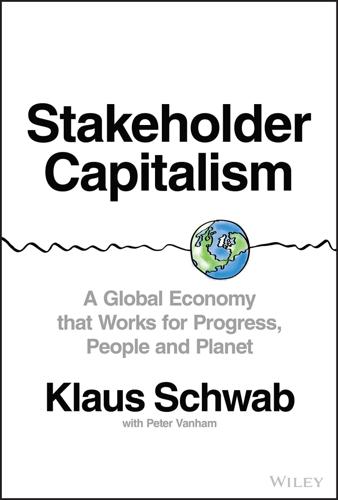
Stakeholder Capitalism: A Global Economy That Works for Progress, People and Planet
by
Klaus Schwab
and
Peter Vanham
Published 27 Jan 2021
It should come as no surprise that these longstanding inequalities have led to a dual public health crisis and a deep social and economic crisis in the US, as COVID-19 spread in 2020. But digital connectivity matters an awful lot, too. Access to Internet in this era of the Fourth Industrial Revolution is a bit like having access to oil and the combustion engine in a previous era. Immediately after the Internet became publicly available, a “digital divide” emerged between demographic groups that had access to it and those that didn't. As more and more jobs and services started to depend on digital connectivity, this caused a major shift in economic fortunes, which continues to this day. Research20 after research21 showed how crucial reliable, ubiquitous Internet access was during the worst of the COVID pandemic, for instance.
…
Møller–Maersk of, 167–168, 199–201, 202–207, 208, 213, 215 comparison of labor approach in US vs., 117–120, 123 constructive relationship between workers and companies in, 117–120 Dansk Metal's industrial robots, 115, 117 digital economy embraced by, 113–114 female-led government leadership during COVID-19 pandemic in, 224 “flexicurity” model of, 119 high union membership in, 240 income equality in, 119, 186 MAN Energy Solutions, 117–118 stakeholder concept adopted in, 174 Destiny Disrupted (Ansary), 195–196 Detroit (Michigan), 110–111, 159 Deutsche Bahn (DB) [Germany], 163 Deutsche Demokratische Republik (DDR). See East Germany DG Comp (EU), 140 Dickens, Charles, 131–132 Didi, 187, 237 Digital connectivity, 225, 227–228, 232 “Digital divide,” 227 Digital economy born during third wave of globalization, 107 globalization realities today during the, 108–114 stakeholder model on coordinated regulation of, 183 See also Technological disruption Discrimination Black Lives Matter protesting, 186, 243, 246, 250 history of US school segregation and, 226 LGBTQ people and rights groups, 123, 195, 243 redlining practice of housing, 226 Sheedi population in Pakistan fighting, 245–246 Di Stefano, Valerio, 243 Dot.com crash, 18 Drivetech Co.
…
Moller–Maersk case study on efforts to reduce, 167–168 Boston Consulting Group study on reducing, 167 CO2 emissions, 160, 161, 165–166, 182, 200, 202, 203, 207 EU's emissions cap-and-trade scheme to lower, 166, 183 fossil fuels, 49 Stakeholder Capitalism Metrics used to measure reduced, 249 See also Climate change; Pollution Green New Deal (EU), 183 Greenpeace, 50 Die Grünen (the Greens) [Germany], 78–79 The Guardian, 223 H Hartmann machine works (Chemnitz, Kingdom of Saxony), 103fig Hartmann, Richard, 103 Harvard Business School, 11 Health care COVID-19 pandemic revealing inequalities in, 3–4, 43, 73, 227 digital connectivity providing access to, 227–228 effective government focus on, 225–227 high EU percentage of GDP spent on, 231 high US cost of, 227, 231, 232 improving access in China, 225–226 Singapore's universal health care system, 230–232 Health inequalities COVID-19 pandemic revealing, 3–4, 43, 73, 227 health insurance, 43 wealth inequality, social mobility, and related, 41–42 Healthy365 app (Singapore), 232 Hess-Maier, Dorothee, 9 High-quality debt, 29 Hiroshima bombing (1945), 5 Hirsch, Jeffrey, 240 Hitachi (Japan), 142 Hong Kong carbon footprint per capita, 159 globalization driving economic growth of, 98 Nanyang Commercial Bank of, 57–58 See also Asian Tigers Horowitz, Sara, 242 Housing financial crisis 2008 and loss of, 227 redlining discriminatory practice, 226 Singapore's HDB public, 228–230 stakeholder government providing access to, 225–227 Housing Development Board (HDB) [Singapore], 228–230 Houston Natural Gas (US), 217 Houten, Frans van, 250 Huawei, 55, 60 Hughes, Chris, 128 Human capital definition of, 235 New Zealand's Living Standards Framework on, 235fig–236 Humanity Forward, 239–240 Human rights, Singapore's regulation of, 123 Hungary erosion of political center in, 83–84 Fidesz-KNDP coalition in, 83 financial crisis (2008) impact on, 112, 113 vote for right-wing populist parties (2000, 2017–2019), 84fig I IBM, 139 Iceland, 224 IDN Media (Indonesia), 94–95, 114 IDN Media HQ (Jakarta, Indonesia), 95 Inclusive Development Index (World Economic Forum), 189, 190 Income equality Denmark's success with, 119, 186 EPI plotting union membership against, 186 stakeholder government role in enabling, 178–179, 225 union membership impact on, 186 universal basic income (UBI) concept of, 239 See also Prosperity Income inequality COVID-19 pandemic revealing increased, 3–4, 43, 73 Elephant Curve of Global Inequality and Growth graph, 137–138fig First Industrial Revolution (19th century) and, 132–134 Gini Indices on China and India impact on, 37fig–38, 226 history of US, 34–36, 38–39fig, 88–89 impact on the global economic system by, 36–41 Kuznets curve on problem of, 34–41, 44–45 Kuznets Wave on, 45fig–46 wealth inequality higher than, 41 World Inequality Lab (WIL) on India and China's, 72–73fig World Inequality Report (2018) on, 38, 138fig See also Inequalities; Wealth inequality Independent contractors (freelancers), 237–238, 240–243 Independent Drivers Guild (New York), 238, 241–242 India continued trust in public institutions in, 196 COVID-19 pandemic impact on, 66, 67, 68–69 demographic changes in, 161 economic growth (1980s-2020) in, 66, 67–69, 96–97 gig workers of, 240, 243 Gini Indices on global income inequality impact of, 37fig–38 increasing national income inequality in, 40 protectionist policies and License Raj system of, 67, 69 WHO on unsafe air (2019) in, 72 World Inequality Lab (WIL) on rising inequality in, 72–73fig Indian Institutes of Technology (IIT), 68 Indignados protest (Spain), 40, 86 Indochina (19th century), 56 Indonesia Bandung entrepreneurs story (2012) on MYCL, 93–94, 96, 98, 114 continued trust in public institutions in, 196 economic recession (1997) in, 98, 109 gig workers of, 237, 240 globalization success stories in, 93–99 history of international trade by, 97 IDN Media, 94–95, 114 IT and Internet revolution role in expanding economy of, 137 predicted economic growth (2020–2021) in, 65–66 Spice Islands trade (Maluku Islands), 100 tech unicorns of, 66, 67fig Industrial Revolution (19th century), 56, 71, 108, 116, 119, 130–134, 161 Inequalities Benioff on the problem of growing, 210 Big Tech widening, 210 COVID-19 pandemic revealing increased, 3–4, 43, 73, 227 “digital divide,” 227 World Inequality Lab (WIL) on India and China's, 72–73fig See also Income inequality; Wealth inequality Inflation rates debt burden and low, 33 low-interest rates and low, 31–33 Infosys [India], 68 Infrastructure increasing funding gap (2016–2040) for, 32 New Zealand's physical capital, 235fig–236 Institute of International Finance (IIF), 27 Institutions international, 178, 179, 194, 196–197 loss of trust in public, 196 stakeholder model on need for robust, 185, 193–198 Intel, 141 Interest rates COVID-19 pandemic impact on, 31 low inflation and low, 31–33 US Federal Reserve (2009–2019), 31 Intergovernmental Panel on Climate Change (IPCC) [UN], 51, 149 Intergovernmental Platform on Biodiversity and Ecosystems Services (IPBES) report [2019], 51 International Bank for Reconstruction and Development (now World Bank), 6 International Business Council (World Economic Forum), 193, 214, 249 International communities aim to preserve peace, 179 civil society and the, 237–238 as key stakeholders, 178 weakening of institutions of, 194, 196–197 See also specific international community International Monetary Fund (IMF) continued low global GDP growth expectation by, 26–27 creation of the, 6 GDP measure used by, 24 on increasing rates of median debt by mid-2021, 28 lack of representation evidenced in, 197 2020 fiscal monitor of, 19 World Economic Outlook (2020) on ASEAN economies, 65–66 Internet “digital divide” and, 227 improving digital connectivity to, 225, 227–228, 232 Internet Agenda (World Economic Forum), 246 Internet Explorer, 139 Internet of Things, 18, 72, 161 InterNorth (US), 217, 218 Ireland, 194 Iron Curtain, 77, 80 Israel OPEC members in opposition to, 12 Yom Kippur War, 12 Italy COVID-19 pandemic impact on economy of, 68 erosion of the political center in, 83 Five Star Movement in, 83, 87–88 Marshall Plan to rebuild economy of, 6 Pitchfork protests (2013), 86 ruined post-World War II economy of, 5 J Jacobin Magazine (socialist publication), 243 Japan demographic decline in, 161 Second World War occupation of Chinese territory by, 56 Japanese economy economic boom (1945–1970s) in, 8, 109 reconstruction of post-war society and, 8 ruined post-World War II, 5 Jensen, Claus, 117 Jobs, Steve, 126 Johnson, Lyndon B., 135, 184 Jordan, 162 JPMorgan Chase, 132 Julius, Otto, 9 K Kambhampati, Uma, 224 Kennedy, John F., 76 Kenya, 27, 70 Keynes, John Maynard, 103, 104 Khadija, 99 Khan, Lina, 127, 140 Klein, Alice, 220 Klein, Ezra, 231–232 Kohl, Helmut, 78, 81 KPMG (US), 215, 250 Krugman, Paul, 127–128 Kuznets, Simon Smith, 21–25, 34, 44–45, 53, 234 Kuznets' theories Environmental Kuznets Curve, 21–22, 46–47, 53 on mistaken pursuit of GDP growth, 21–25, 34, 46, 53 on problem of income inequality, 34–41, 44–45 Kuznets Wave, 45fig–46 L Labor force automation challenges for, 115–126 collective bargaining in European countries, 10 comparison of US and Danish approach to, 117–120, 123 constructive relationship between Danish companies and, 117–120 Financial Times on loss of manufacturing jobs (1990–2016), 120 gig economy, 237–238, 240–243 increased female participation in the, 9 US and UK politically polarizing, 122–123 Labor market reskilling American labor market deficiencies in, 121–122 Denmark's “Active Labour Market Policies,” 120–121 Labor strikes call for global Uber and Lyft (2019), 187 UK miners' strike, 122 US air traffic controllers, 122 Labor unions collective bargaining, 10, 14, 17 EPI plotting income inequality against history of, 186 high membership in Denmark, 240 stakeholder approach to modern, 240–243 strikes held by, 122 Laissez-faire economy, 225 Lakner, Christoph, 137, 138 Lasn, Kalle, 40 Latin American countries average economic mobility improvement in, 44 capitalism vs. communism ideological battle in, 7 dropping voter turnout for elections in, 188 emerging markets in, 63 income inequality in, 40 “reefer ships” (1870s) and international trade by, 104, 110 “21st century socialism” of, 225 See also specific country “League of Legends” game, 60 Lee Hsien Loong, 230 Lee, Kai-Fu, 143 Legacy preferences (university admissions), 226 Lega (League) [Germany], 83, 88 Legatum Prosperity Index (2019), 231 Lenin, Vladimir, 22 Leonhard, David, 140 LGBTQ people, 123, 195 LGBTQ rights groups, 243 Liberal political parties (Europe), 188 License Raj system (India), 67, 69 “The Limits to Growth” study (Peccei), 47, 48, 52 Lin, David, 49 LinkedIn (US), 211 “Little Mermaid” statue (Copenhagen), 200 Liu Guohong, 57 Living Standards Framework (LSF) [New Zealand], 222–223, 234–236 Local government.

Who’s Raising the Kids?: Big Tech, Big Business, and the Lives of Children
by
Susan Linn
Published 12 Sep 2022
Primarily, they are watching online videos,24 which is ironic given that when the tech industry pushed phones and tablets as beneficial for kids, they argued that kids would be active on these devices rather than passively watching a screen.25 In fact, watching videos and television accounts for almost 75 percent of all the time kids zero to eight years old spend with screens. Gaming accounts for 16 percent, while reading, homework, and video chatting account for only for only 5 percent.26 Before I say any more about the tech industry and its impact on children, I want to acknowledge there is a huge digital divide—and it’s problematic. It’s true that in developed countries, smartphones provide almost universal access to the internet, but as the pandemic made painfully clear, phones don’t readily lend themselves to completing school assignments or participating in distance learning. The eighteen or so months between March 2020 and September 2021, when so many schools were shut down and so much of schooling took place online, made clear that children without highspeed internet access or whose family didn’t own larger devices like laptops or tablets were at a serious disadvantage.
…
The eighteen or so months between March 2020 and September 2021, when so many schools were shut down and so much of schooling took place online, made clear that children without highspeed internet access or whose family didn’t own larger devices like laptops or tablets were at a serious disadvantage. Research suggests, however, that just as there is a digital divide, there are also divides that are at least exacerbated by the marketing myth that tech is an adequate educational substitute for human interactions and hands-on experiences with the world. Take language acquisition, for instance. By the time children begin kindergarten, there are huge discrepancies in the number of words they know.
…
See smartphones Center for American Progress, 166–67 Center for Digital Democracy, 231, 255 Center for Humane Technology, 129–30, 255 Channel One News, 182–83 Charles Koch Foundation, 172 charter schools, 7 Chaslot, Guillaume, 48–49 Cherkin, Emily, 221 Chewbacca, 141 Chicago Tribune, 90 Children and Media Australia (CMA), 94–95, 216, 255 Children and Nature Network, 255 Children and Screens: Institute for Digital Media and Child Development, 256 Children’s Advertising Review Unit (CARU), 116 Children’s AID Program out of Boston University Medical Center, 3 children’s healthy growth and development, 11–31, 209–11 attachment, 36–38, 79, 141–43 brains and early experience, 12–13, 81–82, 210 capacity to feel awe and wonder, 21–24 constructing knowledge and making meaning, 191–92, 210 creative play, 14–17, 25–29, 42, 87, 93, 100, 210–11 critical thinking, 21, 69, 168, 180, 240 “holding environments,” 15–16, 19–20 intrinsic motivation, 8, 97–103, 107–8 language acquisition, 41–42 learning values, 95–97 the need for silence (quiet times and spaces), 25 self-regulation, 21, 42, 193 six principles of (for introducing tech), 209, 210–11 transitional objects, 79–80 Children’s Online Privacy Protection Act (COPPA), 135, 201–3 China, 68 Chromebooks, 35, 183–84 Chua, Amy, 61–62 churches, 71, 238–39 Citizens for Responsibility and Ethics in Washington (CREW), 70 civil rights movement, 230 Class Size Matters, 233–34 Clean Waters (1945 GE film), 182 climate change, 83–88 collectibles and plastics pollution, 83–88 and corporate-sponsored teaching materials in schools, 170–72, 175–76, 179–80 and greenwashing, 190 and Koch-sponsored science materials, 171–72 Cline, Lisa, 181 Clinton, Bill, 69 Clinton Foundation, 52–53 CloudPets, 9 coal industry, 170–71 Coca-Cola Company, 167, 169 CoComelon (YouTube show), 19, 212 “collectibles,” 83–88 LOL Surprise dolls, 85–86, 87 plastics packaging, 85–86 plastics pollution, 83–88 Pokémon and, 30, 84–85, 105–6 See also “unboxing videos” Color of Change, 231 Colorado State Board of Education, 234 Colorado State University, 167–68 colorism, 153 commercialism, definition of, 60–61 Common Sense Media (CSM), 94, 216 communicative robots (or “sociable bots”), 141–43, 231 consumer capitalism, 81 consumer protection movement, 166 Consumers Union of the United States, 167 Consuming Kids: The Hostile Takeover of Childhood (Linn), 2, 4, 7, 47, 60, 91, 120, 160 Cook, Tim, 68 Cookie Monster, 27 “cooperative sandbox games,” 49–50, 53–55, 218–19 COPPA. See Children’s Online Privacy Protection Act (COPPA) corporate capitalism, 81 The Corporation (film), 114–15 Corporation for Public Broadcasting (CPB), 52–53 COVID-19 pandemic, xiii–xv, 55 and children’s screen time, 39–40 and the digital divide, 40–41 and Facebook, xiv students’ use of edtech products, 189, 195–96 and systemic racism, xiii–xiv and Trump administration, xiv–xv video chats and puppet therapy during, xiii, 33, 138, 194 credit card companies, 172–75, 180 critical thinking, xiv, 21, 69, 168, 180, 240 CTA Digital’s iPotty, 107 data mining, 47–48, 81 DDB Worldwide, 69 “deep culture,” 7 default settings for online and digital services, 77–78, 200–201, 204 autoplay settings, 77–78, 128, 204 Defending the Early Years (DEY), 209, 256 Delphi, 231 democratic citizenship, public education and, 168–69, 172 deregulation of children’s television, 3, 29 developmental psychology, 12–13 brains and early experience, 12–13, 81–82, 210 as tool of digital marketing and advertising, 51–52, 112 Dewey, John, 168–69 digital beauty filters, 5, 73, 153 digital devices, 4–5, 125–43 children’s leisure time with, 14, 40, 100, 104, 129 communicative robots (or “sociable bots”), 141–43, 231 disruption to families, 130–33 effects on conversations between parents and children, 130–31, 132–33 lure of convenience, 222–23 parasocial relationships and children’s emotional attachments to, 142–44 self-control and, 129–30 sleep and, 104, 224 touch screens, 40, 215 voice-activated personal assistants, 133–41, 151 See also edtech industry; screen time, children’s; smart devices; smartphones digital divide, 40–41 digital “learning games.”

If Mayors Ruled the World: Dysfunctional Nations, Rising Cities
by
Benjamin R. Barber
Published 5 Nov 2013
As such, it offers a useful digital prototype for a parliament of mayors hoping to connect virtually to cities around the world.43 In the United States, the Benton Foundation’s Digital Divide project has mainly played defense, trying to overcome the impact of digital inequality by working to redress the continuing gap that keeps the poor and destitute in both the developed and developing worlds from enjoying whatever civic and economic benefits the web may offer. As sci-fi prophet Bill Gibson has said, the future is already here, it’s just not evenly distributed. The Foundation’s Digital Divide Network and Digital Opportunity Channel continue to press the case for fair distribution, for a more egalitarian and civically accessible-to-all web, but the firms that control the technologies evince little interest in a domain so bereft of profit.
…
These content providers and hardware and software producers, along with their archive in the “cloud” (their servers) are all you need to live, think, and breathe digitally.24 The fraught ideals of net neutrality and privacy do not stand much of a chance against the realities of monopoly power in the hands of a few global corporations. Yet everyday consumers and enthusiastic urbanists alike shower applause on these companies and the innovators who founded and run them, teaming up with them without subjecting them to scrutiny or questioning. The era is long gone in which an outfit like the Benton Foundation maintained a “Digital Divide Network” focused on unequal access to the web, which is monitored with monthly reports from “The Bridge.” The Benton Foundation and newer initiatives like Common Cause’s Media and Democracy program under the leadership of former FCC board member Michael Copps continue the battle for public media, old and new, but have a hard time being heard in all the white noise generated by the companies they try to scrutinize and report on.
…
Gavin Newsom exclaims a little too breathlessly that “technology has rendered our current system of government irrelevant, so now government must turn to technology to fix itself.”37 But that’s not happening. Following the contested 2000 presidential election in the United States, the Help America Vote Act pointed the nation toward online voting. But digital divide issues of access aside, it eventually became clear that security questions made the option less desirable than many hoped it would be. A few states, such as Arizona and Michigan, experimented with online primary voting, but within a few months a review undertaken by the Internet Policy Institute issued a judgment devastating to fans of politics on the web: “Remote Internet voting systems,” the report concluded, “pose significant risk to the integrity of the voting process and should not be fielded for use in public elections until substantial technical and social science issues are addressed.”38 Little progress has been made in the decade following.

The Economic Singularity: Artificial Intelligence and the Death of Capitalism
by
Calum Chace
Published 17 Jul 2016
Policemen say that when they are pursuing a criminal, the criminal needs to be lucky all the time whereas the police only need to get lucky once. But when the criminals are on the offensive, looking for security gaps, the boot is on the other foot. Inequality Every time a new technology is launched, people worry that only the rich will have access to it, and there will be a “digital divide” separating the haves and the have-nots. The life experiences and opportunities of the wealthy will diverge unacceptably from those of the rest of us. So far, while not groundless, this fear has been exaggerated. It is true that in recent years the super-rich have gained more income and wealth than anyone else in most developed economies.
…
Companies make far more money by selling lots of cheap smartphones (for instance) to everyone than by selling a few very expensive ones to the wealthy elite. And in a competitive economy, even if the first company to market is happy to make its money by scalping the rich, other companies will quickly come along to raise the quality and reduce the price. There is no “fridge divide”; why should there be a “digital divide”? I said this fear was exaggerated “so far”. In chapter 5 we will see that there may be more grounds for concern in the not-too-distant future. Isolation Parents have long fretted about their teenage children spending long hours in antisocial isolation, hunched over a video game console.
…
They use smart drugs, exoskeletons and genetic technologies, among others. Maybe they have engineered themselves to need less sleep.[cccxxxviii] Everyone has access to these technologies, but the elite has privileged access. They get them sooner, and this could be vitally important. I argued in chapter 3.7 that concerns about a “digital divide” were exaggerated. Companies make much more money by selling lots of relatively cheap cars and smartphones to almost everyone than they ever could by selling just a handful of diamond-encrusted versions to the super-rich. But we mustn’t forget that technology is advancing at an accelerating rate.

Philanthrocapitalism
by
Matthew Bishop
,
Michael Green
and
Bill Clinton
Published 29 Sep 2008
Outside each Carnegie library—often the most impressive building in town—was a lamppost or lantern that symbolized enlightenment, reflecting Carnegie’s belief in giving in ways that encourage people to help themselves. Gates believed that in the Internet era, self-improvement required access to the Web—and by the late 1990s, a digital divide had opened up in which poorer communities lacked the online access taken for granted in the rest of America. “Figuring out a way to bridge that gap is important to us,” he said soon after launching the libraries initiative. “We want to make sure everyone has the ability to have Internet access, regardless of where they live or how much money they have.”
…
There were already buildings and professional staff in the communities the foundation wanted to reach, which kept down the start-up and operating costs. Also, the cost of piloting the scheme had been borne by Microsoft, so the foundation could scale up a proven model, which is much less risky than starting from scratch. (Ideally, government would have taken on the job of scaling it up, but addressing the digital divide was not high on the priorities list of most politicians.) Ten thousand libraries in the United States were connected to the Internet by 2003. The foundation had hoped that if it made the initial investment, communities would then reinvest to keep the connectivity going. In the end, only around 60 percent did so, upgrading to high-speed Internet access, whilst the other 40 percent have been reluctant or unable to put up their own cash, and remain connected only at slow, or inadequate speeds.
…
Mobile phones have challenged the monopoly of the inefficient, state-controlled fixed-line telecoms dinosaurs, which had kept the telephone as an expensive luxury in much of Africa. The continent now boasts more than a hundred million mobile phone subscribers, a number that is growing not just in the wealthier nations like South Africa. In countries recovering from civil war, mobile telephony is proving the fastest way of bridging the digital divide with the rest of the world: consider the Democratic Republic of Congo, for example, where there are only ten thousand fixed-line subscribers but more than one million mobile phones. Mobile phones boost entrepreneurship and economic activity by reducing the cost of connecting with suppliers and customers.
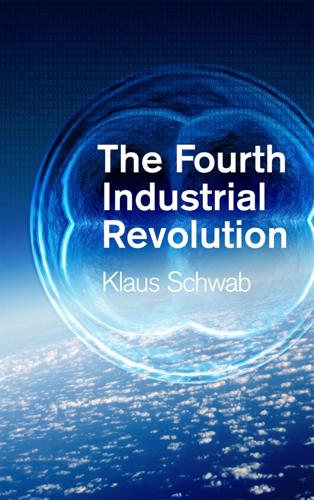
The Fourth Industrial Revolution
by
Klaus Schwab
Published 11 Jan 2016
Governments need to understand the potential provided by these technological advances. Not only do they need to adopt these technologies to optimize their internal operations, they also need to promote and support their widespread deployment and use to move forward towards a globally connected information society. The issue of digital exclusion (or digital divide) becomes ever more pressing, as it is increasingly difficult for people to participate in the digital economy and new forms of civic engagement without proper internet access and/or without access to a connected device or sufficient knowledge to use that device. Power asymmetries In today’s information society, asymmetries of information might lead to significant asymmetries of power, since whoever has the knowledge to operate the technology also has the power to do so.
…
“Half of the world’s population does not have mobile phones and 450 million people still live out of reach of a mobile signal. Some 90% of the population of low-income countries and over 60% globally are not online yet. Finally, most mobile phones are of an older generation.”45 Governments must therefore focus on bridging the digital divide in countries at all stages of development to ensure that cities and countries have the basic infrastructure required to create the economic opportunities and shared prosperity that is possible through new models of collaboration, efficiency and entrepreneurship. The Forum’s work on Data-Driven Development highlights that it is not just access to digital infrastructure that matters for grasping these opportunities.

Behind the cloud: the untold story of how Salesforce.com went from idea to billion-dollar company--and revolutionized an industry
by
Marc Benioff
and
Carlye Adler
Published 19 Nov 2009
Play #67: Choose a Cause That Makes Sense and Get Experts on Board Salesforce.com is a technology company founded on a belief in the Internet as a democratizing tool; therefore, it’s logical that our foundation aims to provide access to technology to young people in underserved communities. In 1999, when we launched our company, the digital divide, or the gap between those with and those without access to computers and the Internet—and the imbalance that gap created—was a matter of concern. I was troubled about this disparity, and I also recognized that the true power of the Internet rested on its reach being extended to the masses. In 1998, legislation called E-Rate was passed in an effort to spur the deployment of high-speed Internet access to schools in low-income areas.
…
Although the legislation was a positive step in improving access to the Internet in schools, it did not have any jurisdiction over after-school programs. We found this to be an overlooked area in which we could invest to make a difference. Through our ongoing relationship with Colin Powell and America’s Promise, we connected with PowerUP, a nonprofit organization launched to combat the digital divide. It was 144 The Corporate Philanthropy Playbook seeded with $10 million from the family foundation of AOL founder Steve Case, and it sought to leverage partnerships with public and private organizations. The goal was to promote youth development through technology and to enhance young people’s lives in after-school settings by wiring existing community centers such as YMCAs and Boys & Girls Clubs.
…
*Council on Foundations and Walker Information, ‘‘National Benchmark Study: Measuring the Business Value of Corporate Philanthropy,’’ May 2002. **2007 Deloitte Volunteer IMPACT Survey Play #69: Build a Great Program by Listening to the Constituents The first salesforce.com-sponsored technology centers aimed at bridging the digital divide were a great idea in theory, and the centers were welcome additions to communities, but the program was fraught with serious challenges. PowerUP operated as a large-scale national program with a centralized approach. We found that the one-size-fits-all model didn’t work at every center, and some centers were duplicating existing resources and services.
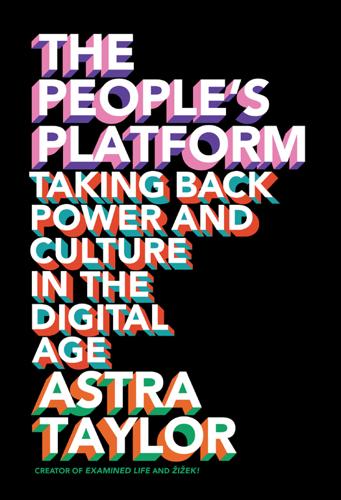
The People's Platform: Taking Back Power and Culture in the Digital Age
by
Astra Taylor
Published 4 Mar 2014
Conversations about technology tend to focus on connectivity, reinforcing the assumption that inequality will cease to be a concern once everyone is plugged in. Eszter Hargittai, a sociologist at Northwestern University, has spent over a decade showing why this is not the case: there is a “second level digital divide” that takes the form of socially stratified variations in online skills and behaviors. Even among the highly connected college-age set, Hargittai’s work reveals a stark divergence in rates of participation, dependent on socioeconomic status, race, and gender, with men considerably more likely to participate online than women.
…
One might assume such profitable companies would eagerly upgrade their facilities and replace cable wires with optical fiber to satisfy customers’ appetite for high-speed data transmission, but this is not the case. Wall Street would punish them for the substantial capital expenditures required, and with no pressure from rivals, stock prices and dividends take precedent over people’s needs. (This dynamic explains why the digital divide has not been bridged; private investment markets would rather cherry-pick districts packed with well-to-do customers than invest in broadband infrastructure to serve poor and sparsely populated regions.) Something similar holds true in the field of journalism, where government occasionally plays a positive role, for example through Federal Communications Commission requirements that broadcasters serve the public interest in return for using the public spectrum.
…
Kevin Kelly says the “atom is the past” and George Gilder talks of overthrowing material tyranny. Kevin Kelly, Out of Control: The New Biology of Machines, Social Systems and the Economic World (New York: Basic Books, 1994), 25. George Gilder, “Happy Birthday Wired,” Wired, June 2001. 2. Susan P. Crawford, “The New Digital Divide,” New York Times, December 4, 2011, SR1. 3. Those are examples taken from real life. For more, read these two profiles of leading figures in this field: Lisa Belkin, “Queen of the Mommy Bloggers,” New York Times Magazine, February 23, 2011; and Amanda Fortini, “O Pioneer Woman!,” New Yorker, May 9, 2011. 4.
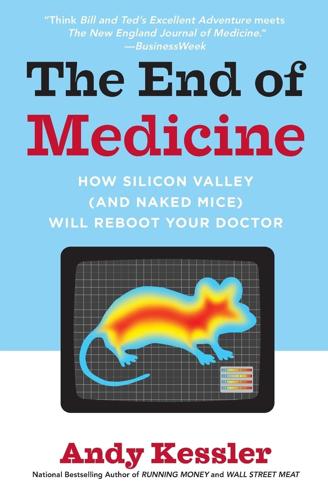
The End of Medicine: How Silicon Valley (And Naked Mice) Will Reboot Your Doctor
by
Andy Kessler
Published 12 Oct 2009
I have no doubt that lots of folks will take the Mustang behind door number two, but if we can spend billions on low-carb diets and Special K cereal and Egg Beaters, let alone Viagra and Botox, parting with some discretionary cash for a lifesaving heart scan doesn’t seem so far-fetched. No, this digital divide isn’t going to be between the haves and have-nots. I suspect it will all get cheap enough, like PCs and cell phones. No, it’s more the want-to-knows and the don’t-want-to-knows. If the end game of all this is more control of our health care, like managing your own money, some people are going to be good at it and others aren’t.
…
Consider yourself warned: 1 Unwanted paternity accusations 2 A prospective employer may think you are likely to get colon cancer and pass 3 You may actually be related to Lee Harvey Oswald and not have wanted to know this 4 Someone may plant a copy of your DNA at a bank robbery and get you hauled off to the slammer 5 You may actually have a rare disease with no cure and die of anxiety Is this what they think about at Harvard? Someone has to. They left off the most obvious problem with an open database of DNA. The knock on the door, most likely in the middle of dinner, and the person says, “Hi, I’m you.” And then there’s the digital divide. Who can afford this stuff and who can’t? You can already see the writing on the wall: Medicare will be means-tested at some point. Meaning if you can afford it, you don’t get the handout from the government. I suspect Social Security will go the same way, but that’s another story. The poor in the U.S. will still get the latest and greatest in health care, especially if early detection is a money saver over time.
…
Simpson, John Sinclair, Bob single base pair differences (SNPs) singularities Site 515 area skin transplants Smalley, Richard smallpox Smartphones smoking Social Security Social Security Amendment (1983) solar activity sonograms Sony Sorrell, Michael Space, Telecommunications and Radioscience Laboratory (STAR Lab) spectroheliograms spectrometers spinal cancer Sputnik launching (1957) standard of living Stanford Linear Accelerator Stanford Radio Propagation Lab Stanford University statins stem cell transplants stenosis stents Stereotaxis stethoscopes Steve (resident) Stewart, Martha stock market stomach-stapling surgery Strandberg, Steve stress tests strokes: costs of incidence of medications as cause of prevention of scanning for survival rate for surgeons surgery: eye heart-bypass insurance coverage for laparoscopic gallbladder micro- noninvasive procedures vs. for obesity outpatient plastic surrogate end point outcomes Taxol technicians, medical technology: acceptance of bio- cost of data for “digital divide” in economic impact of exponential growth of information (IT) insurance coverage for new trends in patents on research and development (R&D) in spending on testing of “tennis elbow” TeraRecon tests: accuracy of blood drawn for cholesterol cost of doctor’s approval for false negatives in false positives in genetic insurance coverage for mail-order overuse of results of unnecessary urine see also blood tests thalidomide thermodynamic effects 3rd Annual Workstation Face-Off 3-D imaging Today Show toll-like receptors Topel, Robert torcetrapib Toshiba Toshiba Aquilion 64 scanner toxins tracheotomies transgenic mice travel agencies Travis (technician) treadmills Troy (medical student) tummy tucks tumors: benign biopsies of blood vessels created by cancer cells in detection of tumors (cont.)

The Wealth of Networks: How Social Production Transforms Markets and Freedom
by
Yochai Benkler
Published 14 May 2006
The critique is leveled at a basic belief supposedly, and perhaps actually, held by some cyberlibertarians, that with enough access to Internet tools freedom will burst out everywhere. The argument is that China, more than any other country, shows that it is possible to allow a population access to the Internet-- it is now home to the second-largest national population of Internet users--and still control that use quite substantially. 427 5. Digital divide. While the Internet may increase the circle of participants in the public sphere, access to its tools is skewed in favor of those who already are well-off in society--in terms of wealth, race, and skills. I do not respond to this critique in this chapter. First, in the United States, this is less stark today than it was in the late 1990s.
…
Computers and Internet connections are becoming cheaper and more widely available in public libraries and schools. As they become more central to life, they [pg 237] seem to be reaching higher penetration rates, and growth rates among underrepresented groups are higher than the growth rate among the highly represented groups. The digital divide with regard to basic access within advanced economies is important as long as it persists, but seems to be a transitional problem. Moreover, it is important to recall that the democratizing effects of the Internet must be compared to democracy in the context of mass media, not in the context of an idealized utopia.
…
Second, I devote chapter 9 to the question of how and why the emergence specifically of nonmarket production provides new avenues for substantial improvements in equality of access to various desiderata that the market distributes unevenly, both within advanced economies and globally, where the maldistribution is much more acute. While the digital divide critique can therefore temper our enthusiasm for how radical the change represented by the networked information economy may be in terms of democracy, the networked information economy is itself an avenue for alleviating maldistribution. 428 The remainder of this chapter is devoted to responding to these critiques, providing a defense of the claim that the Internet can contribute to a more attractive liberal public sphere.
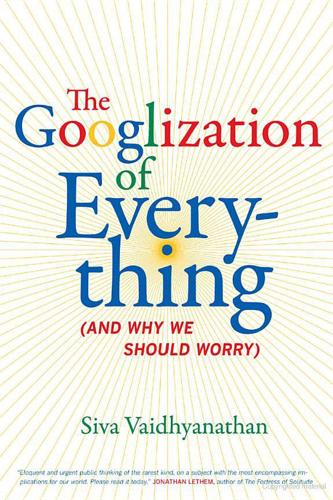
The Googlization of Everything:
by
Siva Vaidhyanathan
Published 1 Jan 2010
(London: Verso, 1991); Lincoln Dahlberg, “Rethinking the Fragmentation of the Cyberpublic: From Consensus to Contestation,” New Media Society 9, no. 5 (October 1, 2007): 827–47. 56. Nate Anderson, “How Wide Is the World’s Digital Divide, Anyway?” Ars Technica, July 1, 2009. 57. Eszter Hargittai, “The Digital Reproduction of Inequality,” in Social Stratification, ed. David Grusky (Boulder, CO: Westview Press, 2008); Eszter Hargittai and Amanda Hinnant, “Digital Inequality: Differences in Young Adults’ Use of the Internet,” Communication Research 35, no. 5 (October 1, 2008): 602–21; Neil Selwyn, “Reconsidering Political and Popular Understandings of the Digital Divide,” New Media Society 6, no. 3 (June 1, 2004): 341–62. 58. Richard Rapaport, “Bangalore,” Wired, February 1996. 59.
…
What we lack are a legal infrastructure that can let more knowledge flow freely at low or no marginal cost to the user of knowledge, removing impediments such as overly protective and anticompetitive intellectualproperty powers; a set of global policies explicitly designed to serve the underserved, closing the digital divide that privileges the wealthy and better educated; a set of protocols or norms that would help us differentiate reliable and useful knowledge from massive distractions and rumor, ending coercive Internet practices that pick winners by favoring some content over others (that is, that violate network neutrality); agreements on technical standards, ensuring the quality and preservation of information worldwide; and a system of global governance, ensuring accountability and transparency throughout the system.
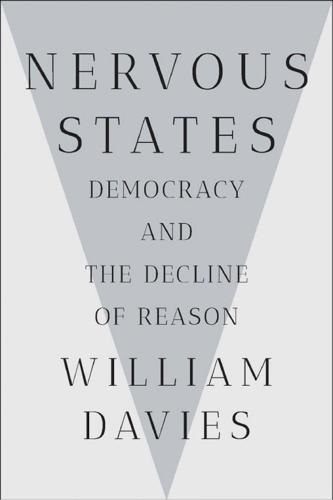
Nervous States: Democracy and the Decline of Reason
by
William Davies
Published 26 Feb 2019
The launch of the World Wide Web in 1990 ushered in a brief period of idealism, that could scarcely have been more different from the Cold War paranoia that drove early networked computing. Dreams of “e-democracy” pictured a more inclusive public sphere. The main obstacle to achieving this was the “digital divide” between the connected and the unconnected, and therefore Internet access needed to be treated as a basic democratic entitlement. This imagined network computing in Enlightenment terms, as an advanced form of printing press or parliament, or perhaps some combination of the two. In any case, it proposed—optimistically—that its function was representational and democratic.
…
In any case, it proposed—optimistically—that its function was representational and democratic. The Internet is now well established as a civilian technology, through which we shop, socialize, date, and access any kind of “content.” The spread of smartphones in the twenty-first century means that concerns about the “digital divide” are no longer as pressing. Thanks to a growing range of physical digital interfaces, we are also connected to our urban environments, material artifacts, and bodies, in ways that we are largely oblivious to. But what is becoming increasingly clear, now that the early optimism surrounding “cyberspace” and “virtual community” has dissipated, is that the Internet retains something of its military character.
…
A/B testing, 199 Acorn, 152 ad hominem attacks, 27, 124, 195 addiction, 83, 105, 116–17, 172–3, 186–7, 225 advertising, 14, 139–41, 143, 148, 178, 190, 192, 199, 219, 220 aerial bombing, 19, 125, 135, 138, 143, 180 Affectiva, 188 affective computing, 12, 141, 188 Agent Orange, 205 Alabama, United States, 154 alcoholism, 100, 115, 117 algorithms, 150, 169, 185, 188–9 Alsace, 90 alt-right, 15, 22, 50, 131, 174, 196, 209 alternative facts, 3 Amazon, 150, 173, 175, 185, 186, 187, 192, 199, 201 American Association for the Advancement of Science, 24 American Civil War (1861–5), 105, 142 American Pain Relief Society, 107 anaesthetics, 104, 142 Anderson, Benedict, 87 Anthropocene, 206, 213, 215, 216 antibiotics, 205 antitrust laws, 220 Appalachia, 90, 100 Apple, 156, 185, 187 Arab Spring (2011), 123 Arendt, Hannah, xiv, 19, 23, 26, 53, 219 Aristotle, 35, 95–6 arrogance, 39, 47, 50 artificial intelligence (AI), 12–13, 140–41, 183, 216–17 artificial video footage, 15 Ashby, Ross, 181 asymmetrical war, 146 atheism, 34, 35, 209 attention economy, 21 austerity, 100–101, 225 Australia, 103 Australian, 192 Austria, 14, 60, 128, 153–75 Austria-Hungary (1867–1918), 153–4, 159 authoritarian values, 92–4, 101–2, 108, 114, 118–19, 211–12 autocracy, 16, 20, 202 Babis, Andrej, 26 Bacon, Francis, 34, 35, 95, 97 Bank of England, 32, 33, 55, 64 Banks, Aaron, 26 Bannon, Steve, 21, 22, 60–61 Bayh–Dole Act (1980), 152 Beck Depression Inventory, 107 Berlusconi, Silvio, 202 Bernays, Edward, 14–15, 16, 143 “Beyond the Pleasure Principle” (Freud), 110 Bezos, Jeff, 150, 173 Big Data, 185–93, 198–201 Big Government, 65 Big Science, 180 Bilbao, Spain, 84 bills of mortality, 68–71, 75, 79–80, 81, 127 Birmingham, West Midlands, 85 Black Lives Matter, 10, 225 Blackpool, Lancashire, 100 blind peer reviewing, 48, 139, 195 Blitz (1940–41), 119, 143, 180 blue sky research, 133 body politic, 92–119 Bologna, Italy, 96 bookkeeping, 47, 49, 54 Booth, Charles, 74 Boston, Massachusetts, 48 Boyle, Robert, 48–50, 51–2 BP oil spill (2010), 89 brainwashing, 178 Breitbart, 22, 174 Brexit (2016–), xiv, 23 and education, 85 and elites, 33, 50, 61 and inequality, 61, 77 and NHS, 93 and opinion polling, 80–81 as self-harm, 44, 146 and statistics, 61 Unite for Europe march, 23 Vote Leave, 50, 93 British Futures, 65 Brooks, Rosa, 216 bullying, 113 Bureau of Labor, 74 Bush, George Herbert Walker, 77 Bush, George Walker, 77, 136 cadaverous research, 96, 98 call-out culture, 195 Calvinism, 35 Cambridge, Cambridgeshire, 85 University, 84, 151 Cambridge Analytica, 175, 191, 196, 199 Cameron, David, 33, 73, 100 cancer, 105 Capital in the Twenty-First Century (Piketty), 74 capital punishment, 92, 118 car accidents, 112–13 cargo-cult science, 50 Carney, Mark, 33 cartography, 59 Case, Anne, 99–100, 102, 115 Catholicism, 34 Cato Institute, 158 Cavendish, William, 3rd Earl of Devonshire, 34 Central Intelligence Agency (CIA), 3, 136, 151, 199 Center for Policy Studies, 164 chappe system, 129, 182 Charles II, King of England, Scotland, and Ireland, 34, 68, 73 Charlottesville attack (2017), 20 Chelsea, London, 100 Chevillet, Mark, 176 Chicago School, 160 China, 13, 15, 103, 145, 207 chloroform, 104 cholera, 130 Chongqing, China, 13 chronic pain, 102, 105, 106, 109 see also pain Churchill, Winston, 138 citizen science, 215, 216 civil rights movements, 21, 194 civilians, 43, 143, 204 von Clausewitz, Carl, 128–35, 141–7, 152 and defeat, 144–6 and emotion, 141–6, 197 and great leaders, 146–7, 156, 180–81 and intelligence, 134–5, 180–81 and Napoleon, 128–30, 133, 146–7 and soldiers, number of, 133–4 war, definition of, 130, 141, 193 climate change, 26, 50, 165, 205–7, 213–16 Climate Mobilization, 213–14 climate-gate (2009), 195 Clinton, Hillary, 27, 63, 77, 99, 197, 214 Clinton, William “Bill,” 77 coal mining, 90 cognitive behavioral therapy, 107 Cold War, 132, 133, 135–6, 137, 180, 182–4, 185, 223 and disruption, 204–5 intelligence agencies, 183 McCarthyism (1947–56), 137 nuclear weapons, 135, 180 scenting, 135–6 Semi-Automatic Ground Environment (SAGE), 180, 182, 200 space race, 137 and telepathy, 177–8 colonialism, 59–61, 224 commercial intelligence, 152 conscription, 127 Conservative Party, 80, 154, 160, 163, 166 Constitution of Liberty, The (Hayek), 160 consumer culture, 90, 104, 139 contraceptive pill, 94 Conway, Kellyanne, 3, 5 coordination, 148 Corbyn, Jeremy, 5, 6, 65, 80, 81, 197, 221 corporal punishment, 92 creative class, 84, 151 Cromwell, Oliver, 57, 59, 73 crop failures, 56 Crutzen, Paul, 206 culture war, xvii Cummings, Dominic, 50 currency, 166, 168 cutting, 115 cyber warfare, xii, 42, 43, 123, 126, 200, 212 Czech Republic, 103 Daily Mail, ix Damasio, Antonio, 208 Darwin, Charles, 8, 140, 142, 157, 171, 174, 179 Dash, 187 data, 49, 55, 57–8, 135, 151, 185–93, 198–201 Dawkins, Richard, 207, 209 death, 37, 44–5, 66–7, 91–101 and authoritarian values, 92–4, 101–2, 211, 224 bills of mortality, 68–71, 75, 79–80, 81, 89, 127 and Descartes, 37, 91 and Hobbes, 44–5, 67, 91, 98–9, 110, 151, 184 immortality, 149, 183–4, 224, 226 life expectancy, 62, 68–71, 72, 92, 100–101, 115, 224 suicide, 100, 101, 115 and Thiel, 149, 151 death penalty, 92, 118 Deaton, Angus, 99–100, 102, 115 DeepMind, 218 Defense Advanced Research Projects Agency (DARPA), 176, 178 Delingpole, James, 22 demagogues, 11, 145, 146, 207 Democratic Party, 77, 79, 85 Denmark, 34, 151 depression, 103, 107 derivatives, 168, 172 Descartes, René, xiii, 36–9, 57, 147 and body, 36–8, 91, 96–7, 98, 104 and doubt, 36–8, 39, 46, 52 and dualism, 36–8, 39, 86, 94, 131, 139–40, 179, 186, 223 and nature, 37, 38, 86, 203 and pain, 104, 105 Descartes’ Error (Damasio), 208 Devonshire, Earl of, see Cavendish, William digital divide, 184 direct democracy, 202 disempowerment, 20, 22, 106, 113–19 disruption, 18, 20, 146, 147, 151, 171, 175 dog whistle politics, 200 Donors Trust, 165 Dorling, Danny, 100 Downs Survey (1655), 57, 59, 73 doxing, 195 drone warfare, 43, 194 drug abuse, 43, 100, 105, 115–16, 131, 172–3 Du Bois, William Edward Burghardt, 74 Dugan, Regina, 176–7 Dunkirk evacuation (1940), 119 e-democracy, 184 Echo, 187 ecocide, 205 Economic Calculation in the Socialist Commonwealth (Mises), 154, 166 economics, 59, 153–75 Economist, 85, 99 education, 85, 90–91 electroencephalography (EEG), 140 Elizabethan era (1558–1603), 51 embodied knowledge, 162 emotion and advertising, 14 artificial intelligence, 12–13, 140–41 and crowd-based politics, 4, 5, 8, 9, 10, 15, 16, 21, 23–7 Darwin’s analysis, 8, 140 Descartes on, 94, 131 and experts, 53, 60, 64, 66, 90 fear, 11–12, 16–22, 34, 40–45, 52, 60, 142 Hobbes on, 39, 41 James’ analysis, 140 and markets, 168, 175 moral, 21 and nationalism, 71, 210 pain, 102–19 sentiment analysis, xiii, 12–13, 140, 188 and war, 124–6, 142 empathy, 5, 12, 65, 102, 104, 109, 112, 118, 177, 179, 197 engagement, 7, 219 England Bank of England founded (1694), 55 bills of mortality, 68–71, 75, 79–80, 81, 89, 127 civil servants, 54 Civil War (1642–51), 33–4, 45, 53 Elizabethan era (1558–1603), 51 Great Fire of London (1666), 67 hospitals, 57 Irish War (1649–53), 59 national debt, 55 Parliament, 54, 55 plagues, 67–71, 75, 79–80, 81, 89, 127 Royal Society, 48–52, 56, 68, 86, 208, 218 tax collection, 54 Treasury, 54 see also United Kingdom English Defense League, ix entrepreneurship, 149, 156, 162 environment, 21, 26, 50, 61, 86, 165, 204–7, 213–16 climate change, 26, 50, 165, 205–7, 213–16 flying insects, decline of, 205, 215 Environmental Protection Agency, 23 ether, 104 European Commission, 60 European Space Agency, 175 European Union (EU), xiv, 22, 60 Brexit (2016–), see under Brexit and elites, 60, 145, 202 euro, 60, 78 Greek bailout (2015), 31 immigration, 60 and nationalism, 60, 145, 146 quantitative easing, 31 refugee crisis (2015–), 60, 225 Unite for Europe march (2017), 23 Exeter, Devon, 85 experts and crowd-based politics, 5, 6, 23, 25, 27 Hayek on, 162–4, 170 and representative democracy, 7 and statistics, 62–91 and technocracy, 53–61, 78, 87, 89, 90 trust in, 25–33, 63–4, 66, 74–5, 77–9, 170, 202 violence of, 59–61 Expression of the Emotions in Man and Animal, The (Darwin), 8, 140 Exxon, 165 Facebook, xvi, 15, 201 advertising, 190, 192, 199, 219, 220 data mining, 49, 185, 189, 190, 191, 192, 198, 219 and dog whistle politics, 200 and emotional artificial intelligence, 140 as engagement machine, 219 and fake news, 199 and haptics, 176, 182 and oligarchy, 174 and psychological profiling, 124 and Russia, 199 and sentiment analysis, 188 and telepathy, 176–8, 181, 185, 186 and Thiel, 149, 150 and unity, 197–8 weaponization of, 18 facial recognition, 13, 188–9 failed states, 42 fake news, 8, 15, 199 Farage, Nigel, 65 fascism, 154, 203, 209 fear, 11–12, 16–22, 34, 40–45, 52, 60, 142 Federal Bureau of Investigation (FBI), 137 Federal Reserve, 33 feeling, definition of, xii feminism, 66, 194 Fifth Amendment, 44 fight or flight, 111, 114 Financial Times, 15 first past the post, 13 First World War, see World War I Fitbit, 187 fixed currency exchange rates, 166 Florida, Richard, 84 flu, 67, 191 flying insects, 205, 215 France censuses, 66, 73 conscription introduced (1793), 127 Front National, 27, 61, 79, 87, 92 Hobbes in (1640–51), 33–4, 41–2 Le Bon’s crowd psychology, 8–12, 13, 15, 16, 20, 24, 25, 38 life expectancy, 101 Napoleonic Wars (1803–15), see Napoleonic Wars Paris climate accord (2015), 205, 207 Paris Commune (1871), 8 Prussian War (1870–71), 8, 142 Revolution (1789–99), xv, 71, 126–9, 141, 142, 144, 204 statistics agency established (1800), 72 unemployment, 83 Franklin, Benjamin, 66 free markets, 26, 79, 84, 88, 154–75 free speech, 22, 113, 194, 208, 209, 224 free will, 16 Freud, Sigmund, 9, 14, 44, 107, 109–10, 111, 112, 114, 139 Friedman, Milton, 160, 163, 166 Front National, 27, 61, 79, 87, 92, 101–2 full spectrum warfare, 43 functional magnetic resonance imaging (fMRI), 140 futurists, 168 Galen, 95–6 Galilei, Galileo, 35 gambling, 116–17 game theory, 132 gaming, 193–4 Gandhi, Mohandas, 224 gate control theory, 106 Gates, Sylvester James “Jim,” 24 Gavotti, Giulio, 143 geek humor, 193 Gehry, Frank, 84 Geller, Uri, 178 geometry, 35, 49, 57, 59, 203 Gerasimov, Valery, 123, 125, 126, 130 Germany, 34, 72, 137, 205, 215 gig economy, 173 global financial crisis (2007–9), 5, 29–32, 53, 218 austerity, 100–101 bailouts, 29–32, 40, 42 and gross domestic product (GDP), 76 as “heart attack,” 57 and Obama administration, 158 and quantitative easing, 31–2, 222 and securitization of loans, 218–19 and statistics, 53, 65 and suicide, 101 and unemployment, 82 globalization, 21, 78, 84, 145, 146 Gonzales, Alberto, 136 Google, xvi, 174, 182, 185, 186, 191, 192 DeepMind, 218 Maps, 182 Transparency Project, 198 Government Accountability Office, 29 Graunt, John, 67–9, 73, 75, 79–80, 81, 85, 89, 127, 167 Great Fire of London (1666), 67 great leaders, 146–8 Great Recession (2007–13), 76, 82, 101 Greece, 5, 31, 101 Greenpeace, 10 Grenfell Tower fire (2017), 10 Grillo, Beppe, 26 gross domestic product (GDP), 62, 65, 71, 75–9, 82, 87, 138 guerrillas, 128, 146, 194, 196 Haldane, Andrew, 32 haptics, 176, 182 Harvey, William, 34, 35, 38, 57, 96, 97 hate speech, 42 von Hayek, Friedrich, 159–73, 219 health, 92–119, 224 hedge funds, 173, 174 hedonism, 70, 224 helicopter money, 222 Heritage Foundation, 164, 214 heroin, 105, 117 heroism and disruption, 18, 146 and genius, 218 and Hobbes, 44, 151 and Napoleonic Wars, 87, 127, 142 and nationalism, 87, 119, 210 and pain, 212 and protection, 202–3 and technocracy, 101 and technology, 127 Heyer, Heather, 20 Hiroshima atomic bombing (1945), 206 Hobbes, Thomas, xiii, xvi, 33–6, 38–45, 67, 147 on arrogance, 39, 47, 50, 125 and body, 96, 98–9 and Boyle, 49, 50, 51 on civil society, 42, 119 and death, 44–5, 67, 69–70, 91, 98–9, 110, 151, 184 on equality, 89 on fear, 40–45, 52, 67, 125 France, exile in (1640–51), 33–4, 41 on geometry, 35, 38, 49, 56, 57 and heroism, 44, 151 on language, 38–9 natural philosophy, 35–6 and nature, 38, 50 and Petty, 56, 57, 58 on promises, 39–42, 45, 148, 217–18 and Royal Society, 49, 50, 51 on senses, 38, 49, 147 and sovereign/state, 40–45, 46, 52, 53, 54, 60, 67, 73, 126, 166, 217, 220 on “state of nature,” 40, 133, 206, 217 war and peace, separation of, 40–45, 54, 60, 73, 125–6, 131, 201, 212 Hobsbawm, Eric, 87, 147 Hochschild, Arlie Russell, 221 holistic remedies, 95, 97 Holland, see under Netherlands homeopathy, 95 Homer, xiv Hungary, 20, 60, 87, 146 hysteria, 139 IBM, 179 identity politics, 208, 209 Iglesias Turrión, Pablo, 5 imagined communities, 87 immigration, 60, 63, 65, 79, 87, 145 immortality, 149, 183–4, 224 in-jokes, 193 individual autonomy, 16 Industrial Revolution, 133, 206 inequality, 59, 61, 62, 76, 77, 83, 85, 88–90 inflation, 62, 76, 78, 82 infographics, 75 information theory, 147 information war, 43, 196 insurance, 59 intellectual property, 150 intelligence, 132–9 intensity, 79–83 International Association for the Study of Pain, 106 International Monetary Fund (IMF), 64, 78 Internet, 184–201, 219 IP addresses, 193 Iraq War (2003–11), 74, 132 Ireland, 57, 73 Irish Republican Army (IRA), 43 “Is This How You Feel?
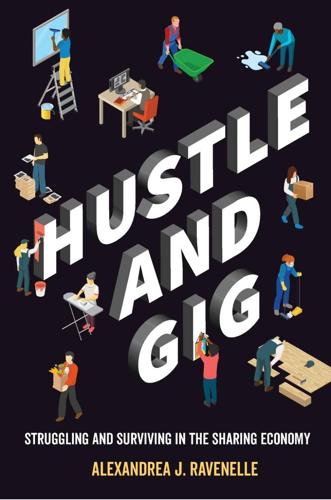
Hustle and Gig: Struggling and Surviving in the Sharing Economy
by
Alexandrea J. Ravenelle
Published 12 Mar 2019
African Americans appear to be less likely to work in the sharing economy. An Uber-funded study found that Uber drivers were more likely to be white, and less likely to be black, than local chauffer-taxi drivers.76 It’s not certain if the “whiteness” of sharing economy services is due to an awareness of such discrimination or to the digital divide. For instance, lower-income minorities may be less likely to have access to the types of smartphones and robust data plans that are needed for successful hustling in the sharing economy. Additionally, African Americans also appear to be less likely to use the sharing economy. In a March 2016 Pew Research Center survey of 4,787 American adults—a detailed study of the scope and impact of the shared, collaborative, and on-demand economy—Pew found that platform usage varied widely across the population.
…
Index Abundant Host, 46 acceptance rates, 1–2 access, 28fig. 2 accidental occupational liability policies, 110–11 Adshade, Marina, 127 advertisements: Airbnb, 44fig. 5; by Kitchensurfing, 57, 59; TaskRabbit, 100fig. 12; by Uber, 50, 51fig. 7 African-Americans: as Airbnb hosts, 35, 39; digital divide and, 193; discrimination against, 169, 193; economic issues of, 140; as Uber users, 35; wealth gap and, 195 age issues: age of chefs, 59; age of drivers, 53; age of hosts, 49; age of sharing economy workers, 62; age of TaskRabbits, 56; child labor, 65, 70, 224n12, 225n15; Schor on, 224n1; in textile industry, 67, 225n15 Airbnb: overview, 7, 21, 22; African-American hosts, 35–36, 39; background on, 43–49; bathroom use, 88; business use of, 182, 228n14; children and hosting, 12–13; choices, 168; commercial user crackdown, 20; communication issues, 63; Couchsurfing and, 9; cultural capital and, 165, 166–67; discrimination and, 170; as durable-assets-sharing sites, 27; economic impact of, 39; employee monitoring, 204; entrepreneurship and, 6, 164–66; flexibility, 168; high capital-barrier, 43, 43tab. 1, 166–68; for homeless people, 4; illegal rentals, 40, 41, 149–52; income potential, 19; Instant Book service, 170; interaction-free key transfers, 34; low pricing strategy, 231n8 (ch.7); marketing, 160; multilocation hosts, 40; participant recruitment and methodology, 42–43; Peers and, 72; promises of, 25; response rates, 81–82, 160; safety issues, 113–14; as sharing economy company, 26, 27–29; social interactions and, 33; striving workers and, 132; struggling workers and, 132; successful workers and, 19–21, 39–40, 131–32; trust and, 30; worker-client sexual interactions, 128–31 Airbnb hosts.
…
See also pivots Pooper, 173–74, 174fig. 13 portable benefits plan, 201–2, 203 possession monetization, 27 Postmates, 110–11, 127–28, 142, 155, 203 postrecession effects, 26–27 poverty, criminal activity and, 140, 142 precariat, defined, 37 price-fixing conspiracy lawsuit, 71 profiles: fake profiles, 140; guest screening and, 169; by Kitchensurfing, 57; profile pictures, 29, 47 promises, of Uber, 50, 54fig. 10 Pugh, Allison, 38 Pullman Palace Car Company, 68 putting-out system, 66, 68. See also piecemeal system race issues: digital divide and, 193; discrimination, 35–36, 193; race of chefs, 59; race of TaskRabbit workers, 56; segregation, 119; vulnerability categories, 193–94 Ravenelle, Alexandrea, 194 Reagan, Ronald, 178 recession effects, 26–27 recession of 1981–1982, 178 recirculation of goods, 27 recruitment: by Kitchensurfing, 57, 58–59; by Uber, 50 redress options, 6, 22 registration requirements, 222–23n64 regulation issues, 37 regulatory issues, 50 RelayRides, 33 rental cars, 2, 5 rentals: in East Village, 41, 129; Ellis Law, 41; landlord-tenant disputes, 13; long-term rentals, 39, 39–41; necessity of shared rentals, 132; rent-controlled residents, 41; renter protections, 41; short-term rentals, 19–20, 40, 149–50.
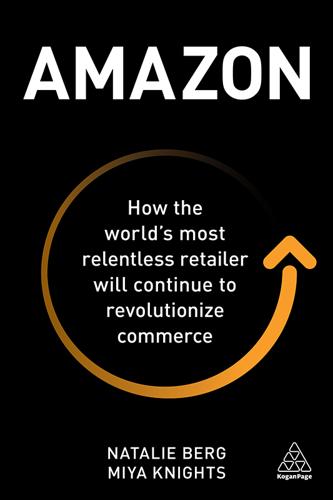
Amazon: How the World’s Most Relentless Retailer Will Continue to Revolutionize Commerce
by
Natalie Berg
and
Miya Knights
Published 28 Jan 2019
Available from: https://www.esmmagazine.com/shoptalk-europe-eye-opening-journey-future-retail/50514 [Last accessed 29/6/2018]. 8 Simpson, Emma (2017) New John Lewis boss says department store needs reinventing, BBC, 30 March. Available from: https://www.bbc.co.uk/news/business-39441039 [Last accessed 29/6/2018]. 9 Amazon UK Analyst Briefing, London, July 2018. 10 Simpson, Jeff, Lokesh Ohri and Kasey M Lobaugh (2016) The new digital divide, Deloitte, 12 September. Available from: https://dupress.deloitte.com/dup-us-en/industry/retail-distribution/digital-divide-changing-consumer-behavior.html [Last accessed 29/6/2018]. 11 Del Ray, Jason (2016) 55 percent of online shoppers start their product searches on Amazon, Recode, 27 September. Available from: https://www.recode.net/2016/9/27/13078526/amazon-online-shopping-product-search-engine [Last accessed 29/6/2018]. 12 Garcia, Krista (2018) Consumers’ trust in online reviews gives Amazon an edge, eMarketer, 7 March.
…
This is where Amazon’s technology business gives it an unprecedented advantage, and why it is wrong for both traditional and online retailers to compare themselves directly against it. They are traditional retailers; Amazon is a retail technology firm. Technology drivers Technology is not only transforming the way consumers interact with retailers in this way, it is blurring the physical and digital divide. To understand how Amazon has successfully harnessed its technology advantage to provide a digitally enabled, frictionless shopping experience, it is necessary to first break down the fundamental drivers of technology that underpin the frictionless objectives of the on-my-terms shopper. They are: ubiquitous connectivity; pervasive interfaces; and autonomous computing.

This Is for Everyone: The Captivating Memoir From the Inventor of the World Wide Web
by
Tim Berners-Lee
Published 8 Sep 2025
In W3C we worked hard to make the web better, but we were aware of a wide range of ways in which the web had a negative or dangerous effect on the world. I felt a strong sense of obligation to address these serious concerns about the web – while also increasing access to it. Every time the people in W3C made the web more powerful they, in a way, increased the gap between the haves and have-nots. The digital divide got greater. At the same time, there were social impacts that were not being addressed – from political polarization to online gender-based violence. It made sense for me to initiate some fundraising to help tackle these issues; Rosemary handled strategy and building the management team. My initial fundraising efforts weren’t so successful, until I had a chance encounter with Alberto Ibargüen, then the president of the non-profit American Knight Foundation, at his flagship event in Washington, DC.
…
We were queuing up for food at the buffet together, and I figured I might pick his brain about the best way to start. Now there’s an old saying about the non-profit world that I have found to be sometimes true: ‘If you ask for money, they give you advice, and if you ask for advice, they give you money.’ And as I asked Ibargüen about what to do, he confessed that the looming digital divide was a matter of great concern at the Knight Foundation, and that he’d been looking to fund exactly such a project. ‘I can write you a cheque for $200,000,’ he said, and told me he would pitch his idea to the board that same day. Sometime later, after we completed the grant applications and went through a detailed diligence process, Alberto agreed to support the launch of our Web Foundation.
…
Nash ref1 electronics experiments ref1, ref2 home-built computer ref1, ref2, ref3, ref4 knighthood ref1 lecture tours ref1 marriage to Rosemary ref1, ref2 model railway ref1 move to USA ref1 music ref1 Order of Merit ref1 Oxford University ref1, ref2, ref3, ref4 Plessey ref1, ref2, ref3 Royal Society election ref1 running ref1, ref2 sailing ref1, ref2 skiing ref1, ref2, ref3 windsurfing ref1 see also CERN; MIT; World Wide Web ‘best viewed in’ ref1, ref2 Bezos, Jeff ref1 Bezos, Mackenzie ref1 Bina, Eric ref1, ref2, ref3 biometrics ref1, ref2 Bitcoin ref1 Black Mountains, Wales ref1 Bletchley Park ref1, ref2 blockchain technology ref1, ref2 blogosphere ref1 blogs ref1, ref2, ref3 Bluesky ref1 Bono ref1 bookmarks ref1 Bos, Burt ref1 Boston ref1, ref2, ref3, ref4 Bostrom, Nick ref1 bots ref1 Bouazizi, Mohamed ref1 Bourgeois, Alain ref1 Boutell, Thomas ref1 Boyera, Stephan ref1 Boyle, Danny ref1, ref2 Bratt, Steve ref1 Brazil ref1 Brewer, Judy ref1 Brexit ref1 Brin, Sergei ref1 broadband ref1 broadband providers Africa ref1 cable ref1 speeds ref1 Brown, Gordon ref1, ref2 browsers Cello ref1 Chrome ref1 cookies ref1, ref2, ref3 early development ref1, ref2, ref3 Firefox ref1 Internet Explorer ref1, ref2, ref3, ref4, ref5 landing pages ref1 Mosaic ref1, ref2, ref3, ref4 Netscape ref1, ref2 Opera ref1, ref2 smartphones ref1 Bruce, John ref1, ref2, ref3, ref4 Bruce, Tom ref1, ref2, ref3 Buckingham Palace ref1, ref2 Bulletin Board Services (BBS) ref1 bulletin board services (BBS) ref1 Burkina Faso ref1, ref2 Bush, Kate ref1 Bush, Vannevar ref1, ref2 Butler, Christopher ref1, ref2 ByteDance ref1 cable companies ref1 Cailliau, Robert ref1, ref2, ref3, ref4, ref5, ref6, ref7 Cairo ref1 calendars interoperability ref1, ref2 Mary Lee Berners-Lee design ref1 Cambridge Analytica ref1, ref2, ref3 Cambridge University ref1 Cameron, David ref1 Campbell Gray, Helen (grandmother) ref1 canals ref1, ref2 Capital One ref1 car analogy, net neutrality ref1 Cargill, Carl ref1 Carpenter, Brian ref1, ref2, ref3 Carroll, Lewis ref1 cathode-ray tubes ref1 Cello browser ref1, ref2 censorship ref1, ref2, ref3, ref4, ref5 Center for Democracy and Technology (CDT) ref1 Center for Humane Technology ref1 Cerf, Vint ref1, ref2, ref3, ref4, ref5, ref6, ref7 CERN CERNDoc ref1 culture ref1, ref2 description of site ref1 ‘Enquire-within’ program ref1, ref2, ref3 history and foundation ref1 information systems ref1 International Conference for the World Wide Web (WWW1) ref1, ref2 LAN ref1 language protocols ref1 Large Electron–Positron (LEP) ref1, ref2 Large Hadron Collider (LHC) ref1, ref2 mission ref1, ref2, ref3 phone numbers website ref1 Proton Synchrotron Booster (PSB) ref1, ref2 real-time data acquisition ref1, ref2 Tim Berners-Lee’s arrival ref1 Tim Berners-Lee’s return ref1 WWW intellectual property rights ref1, ref2 Charlie (an AI that works for you) ref1, ref2 chatbots ref1 ChatGPT ref1, ref2, ref3, ref4, ref5 chemistry ref1 Chequers ref1 chess ref1, ref2 children, smartphones access ref1 China ref1, ref2 Chrétien, Jean ref1 Christianity ref1 Chrome ref1, ref2, ref3 cities ‘rational’ ref1 rivers ref1 citizens’ data ref1, ref2, ref3, ref4 civil liberties ref1, ref2, ref3 Clark, David ref1 Clark, Jim ref1 Clarke, Arthur C. ref1 Clarke, Joan ref1 climate change ref1 Clippy ref1 closed captioning ref1 ‘The Cluetrain Manifesto’ ref1 Coalition for Content Provenance and Authenticity (C2PA) ref1 Coffey, Shelby ref1 collaboration collaborative filtering ref1 early websites ref1 intercreativity ref1, ref2, ref3, ref4 principle ref1, ref2, ref3 TPAC (Technical Plenary Advisory Committee) conferences ref1 Collage ref1 Common Crawl ref1, ref2, ref3 communication CERN information systems and LAN ref1, ref2 internet protocols ref1, ref2 compassion ref1, ref2 CompuServe ref1 computer mouse ref1 computer science, home education ref1 computer terminals ref1 computers home-built ref1, ref2, ref3, ref4 interoperability ref1 NeXT ref1, ref2, ref3, ref4, ref5, ref6, ref7 PC revolution ref1 Xerox Alto ref1 confidentiality ref1 connections ref1, ref2, ref3 connectivity ref1, ref2, ref3 Connolly, Dan ref1 consciousness ref1 consistent hashing ref1 conspiracy theories ref1, ref2 Content ID ref1 Contract for the Web ref1, ref2, ref3 cookies ref1, ref2, ref3 Copilot ref1 copyright ref1, ref2 Cortico ref1 Cosgrave, Paddy ref1 cost-of-living crisis ref1 Covid-19 ref1 Craigslist ref1 crawlers ref1 creativity ref1, ref2, ref3, ref4, ref5, ref6 cryptocurrency ref1 cryptography ref1, ref2, ref3, ref4 CSS (cascading style sheets) ref1, ref2 culture, trust ref1 Cunningham, Ward ref1 cybercriminals ref1 cybersquatting ref1, ref2 Cyc ref1 Daleks ref1 Dalitz, Meryl ref1 DARPA (Defense Advanced Research Projects Agency) ref1, ref2 data breaches ref1 compared to documents ref1 garbage in, garbage out ref1 linking ref1, ref2, ref3 open data ref1 PODS (Personal Online Data Stores) ref1 read–write web ref1 silos ref1 structures ref1, ref2, ref3, ref4 data packets ref1 data sheets ref1 data sovereignty ref1, ref2, ref3, ref4, ref5, ref6, ref7, ref8 data wallets ref1 see also PODS data.gov.uk ref1 Datasolids ref1 Davies, Roger ref1 Dawkins, Richard ref1 De Martin, Noel ref1 dead links ref1 Deakin, Roger ref1 decentralization ref1, ref2, ref3 deep web ref1 deepfakes ref1, ref2 DeepMind ref1, ref2 democracy Arab Spring ref1 Burkina Faso ref1 Cambridge Analytica ref1, ref2 deepfakes ref1 digital citizenship ref1 historical record ref1, ref2 Philippines ref1 see also civil liberties Denmark ref1 Dertouzos, Michael ref1, ref2, ref3, ref4 ‘Design Issues’ ref1, ref2, ref3, ref4 D.G. Nash ref1, ref2 digital commons ref1 digital divide ref1 Digital Equipment Corporation (DEC) ref1 digital signatures ref1 dishwasher poem (GPT-4) ref1 disinformation ref1, ref2 Ditchley Foundation ref1, ref2, ref3, ref4 DNS (Domain Name System) ref1, ref2, ref3 documentation systems ref1, ref2 documents compared to data ref1 doomscrolling ref1, ref2 dot-com bubble ref1, ref2, ref3 dot-matrix printers ref1 Doubleclick ref1 Dougherty, Dale ref1 Dow Jones ref1 Dropbox ref1 e-commerce ref1 E-Trade ref1 East Sheen, London ref1 ECMAScript ref1 Edelman, Richard ref1 Edelman Trust Barometer ref1 Edge ref1 Egypt ref1 eigenvectors 151n Elbaz, Gil ref1 electromagnets ref1 Electronic Frontier Foundation (EFF) ref1, ref2, ref3 Elizabeth II ref1, ref2, ref3, ref4 email ref1, ref2 Emanuel School ref1, ref2, ref3 encryption ref1, ref2, ref3, ref4 engagement, algorithms ref1, ref2, ref3, ref4 Engelbart, Douglas ref1, ref2 Enigma cipher ref1 ‘Enquire-within’ program ref1, ref2, ref3 Enquire Within Upon Everything ref1 equality ref1 Equifax ref1 error codes ref1 Erwise ref1 Eternal September ref1 Ethiopia ref1 Euler’s formula ref1 European Commission ref1 European Computer Manufacturers Association (ECMA) ref1 European Council for Nuclear Research see CERN European Semiconductor Equipment Company ref1 European Union Brexit ref1 GDPR (General Data Protection Regulation) ref1, ref2 Ex Machina (film, 2014) ref1 Excite ref1 Expedia ref1 Facebook advertisements ref1 Africa ref1 AI training ref1 Arab Spring ref1 collaborative filtering and polarization ref1, ref2 data breaches ref1 data ownership ref1 microtargeting ref1 users as the product ref1, ref2 facts, encoding ref1, ref2 farming ref1 Fediverse ref1, ref2, ref3 Fermilab ref1 Ferranti ref1, ref2, ref3 Ferranti, Basil de ref1 File Transfer Protocol (FTP) ref1, ref2 Filo, David ref1 Finland ref1 Firefox ref1, ref2 First Parish Church, Lexington ref1 Flametree ref1 Flanders ref1, ref2 Fora ref1 Ford Foundation ref1 Forth (programming language) ref1 forums ref1 Foster, Norman ref1 free speech ref1 Freud, Lucien ref1 Friendster ref1 Fry, Stephen ref1 Gal, Yarin ref1 Gallaudet University ref1, ref2 garbage in, garbage out ref1 Gates, Bill ref1, ref2, ref3, ref4 GDPR (General Data Protection Regulation) ref1, ref2 GEC ref1 Gemini ref1 generalization ref1 Geneva ref1, ref2, ref3, ref4, ref5 Geneva Amateur Operatic Society (GAOS) ref1 genome-sequencing providers ref1 Geocities ref1 geospatial mapping ref1 Ghana ref1 Gifford, David ref1 GIFs ref1, ref2 Gilliat, Bruce ref1 Gilmore, John ref1 Gilyard-Beer, Peter ref1 Glasswing ref1, ref2 Global News Network (GNN) ref1 Gmail ref1 Go (game) ref1, ref2 Gods of Literature ref1, ref2 Goldstein, Jono ref1, ref2 Google AJAX ref1 anti-trust lawsuits ref1 Applied Semantics purchase ref1 China ref1 Chrome ref1 DeepMind ref1 Gemini ref1, ref2 Gmail ref1 Google Docs ref1 Google Maps ref1, ref2 Google Meet ref1 hosted web anniversary dinner ref1 HTML and WHATWG ref1 passkeys ref1 search functionality ref1, ref2 standards ref1 start-up ref1 transformers ref1 users as the product ref1 Web Index ref1 Zeitgeist network event ref1 Google Maps ref1, ref2 Gopher ref1, ref2 Gore, Al ref1, ref2, ref3, ref4 government data ref1, ref2, ref3 governments and Contract for the Web ref1, ref2, ref3 GPS data ref1, ref2 GPTs (Generative Pre-trained Transformers) ref1, ref2, ref3, ref4 GPUs (Graphical Processing Units) ref1 Grail ref1 graph structures ref1, ref2 Great Firewall of China ref1, ref2 Greif, Irene ref1 Grisham, John ref1 Grok AI ref1 Grundy, Frank ref1, ref2 hacktivism ref1 Hall, Justin ref1 Halonen, Tarja ref1 Hanamura, Wendy ref1 haptic touch ref1 Harari, Yuval Noah ref1, ref2 Hardin, Joseph ref1, ref2, ref3 Harris, Kamala ref1 Harris, Tristan ref1 Harrison, George ref1 Harvard Berkman Klein Center for Internet and Society ref1, ref2 Institute for Rebooting Social Media ref1 Hassabis, Demis ref1, ref2 Hawke, Sandro ref1 Helsinki ref1 Helsinki University of Technology ref1 Hendler, Jim ref1 Herzberg, Frederick ref1 Heywood, Jeremy ref1 Hickson, Ian (Hixie) ref1, ref2 hierarchies ref1 Higgins, Eliot ref1 Higgs boson ref1 Higgs, Peter ref1 Hinton, Geoffrey ref1 holiday bookings ref1, ref2 Home Depot ref1 home pages ref1 Hoogland, Walter ref1, ref2 Hoschka, Philipp ref1, ref2 HTML (Hypertext Markup Language) ref1, ref2, ref3, ref4, ref5, ref6 HTTP (Hypertext Transfer Protocol) ref1, ref2, ref3, ref4, ref5 HTTPS standard ref1 human first systems ref1 human rights ref1, ref2, ref3, ref4, ref5, ref6 see also civil liberties humans as social animals ref1 HyperCard ref1 hyperlinks ref1, ref2, ref3, ref4, ref5, ref6, ref7, ref8 hypertext ref1, ref2, ref3 see also HTML Hypertext ‘91 conference ref1 Hypertext ‘93 conference ref1 Ibargüen, Alberto ref1 IBM, Watson ref1 identity theft ref1 IETF (Internet Engineering Task Force) ref1, ref2, ref3 images GIFs ref1, ref2 IMG tag ref1 PNG (Portable Network Graphics) ref1 Imitation Game, The (film, 2014) ref1 ‘Imitation Game’ (Turing) ref1, ref2 inclusivity ref1, ref2 India ref1, ref2 indigenous communities, land rights ref1 Industrial Revolution ref1 Inflection.AI ref1 Infosys ref1 infrastructure evolution ref1 INRIA (National Institute for Research in Digital Science and Technology), France ref1, ref2 Inrupt ref1, ref2, ref3, ref4 Instagram ref1, ref2, ref3 Institute for Rebooting Social Media ref1 integrated circuits ref1 intellectual property rights ref1, ref2 intelligence agencies ref1, ref2 intention economy ref1, ref2, ref3, ref4 intercreativity ref1, ref2, ref3, ref4 International Standards Organization (ISO) ref1 internet Al Gore funding bill ref1, ref2 blackouts ref1 deep web ref1 early development ref1 early functionality ref1 free ethos ref1, ref2, ref3 Map of Everything ref1, ref2, ref3 protocols ref1, ref2 size ref1 universal access ref1, ref2 see also World Wide Web Internet Archive ref1, ref2 Internet Explorer ref1, ref2, ref3, ref4, ref5 internet service providers (ISPs) ref1, ref2, ref3 interoperability ref1, ref2, ref3, ref4, ref5 Intuit ref1 invisible pixels ref1 IP addresses ref1, ref2, ref3 iPhone ref1, ref2, ref3 Iran ref1 ITT ref1 Jambon, Jan ref1 Java ref1 JavaScript ref1, ref2, ref3 Jitsi ref1 Jobs, Steve ref1, ref2, ref3, ref4, ref5, ref6, ref7 Jones, Peter ref1 JScript ref1 JSTOR ref1 Justin’s Links from the Underground ref1, ref2 Kagame, Paul ref1 Kahle, Brewster ref1, ref2 Kahn, Bob ref1, ref2 Kapor, Mitch ref1 Keio University, Tokyo ref1 Kendall, Alex ref1 Kenya ref1 killer apps ref1 Kirk, Anna ref1 Kirk, Matthew ref1 Knight Foundation ref1 Kotok, Alan ref1 Krotoski, Aleks ref1 Kubrick, Stanley ref1 Kunz, Paul ref1 Kurzweil, Ray ref1 labelling reality or fakes ref1 land rights ref1 LANs (Local Area Networks) ref1 Larkin, Philip ref1 Lassila, Ora ref1 Last.fm ref1 Le Corbusier ref1 LeCun, Yann ref1 Legal Information Institute (LII) ref1, ref2 Legg, Shane ref1 legislation Data Use and Access Bill ref1 GDPR (General Data Protection Regulation) ref1, ref2 mobile phone spectrum ref1 open data ref1 Leighton, Tom ref1 Leith, Rosemary (wife) Berkman Klein Center for Internet and Society ref1 investments ref1 marriage to Tim ref1 sailing ref1, ref2 visits Beijing ref1 web anniversary speech ref1 Web Foundation ref1, ref2, ref3 Lenat, Doug ref1 Lessig, Lawrence ref1 Lewin, Daniel ref1 Li, Angel ref1 liability of hosts ref1 Library of Alexandria ref1, ref2 Library of Congress ref1 LibreOffice ref1 Libya ref1 Lie, Hakon ref1, ref2, ref3 lifeloggers ref1, ref2 lists ref1 Literature, Gods of ref1, ref2 LLMs (Large Language Models) ref1, ref2, ref3, ref4 LocalFirst Community ref1 location data ref1 logic agents ref1, ref2 logic gates ref1, ref2, ref3 London 2012 Olympics ref1, ref2 Lovett, Adrian ref1 Lycos ref1 Lynx ref1 Ma, Jack ref1, ref2 Mac OS X ref1 MacArthur Fellowship ref1 McBryan, Oliver ref1 McCahill, Mark ref1 McCartney, Paul ref1, ref2 McCourt, Frank ref1 machine learning collaborative filtering ref1 neural networks ref1, ref2 see also artificial intelligence machine translation ref1 McManus, Richard ref1 MacWWW ref1 Malamud, Carl ref1 Mandelbrot ref1 maps geospatial mapping ref1 Google Maps ref1, ref2 Map of Everything on the Internet ref1, ref2, ref3 OpenStreetMap ref1, ref2 World Wide Web Middle Earth ref1 Marcos, Bongbong ref1 Markey, Ed ref1, ref2 Martin, George R.

Physics of the Future: How Science Will Shape Human Destiny and Our Daily Lives by the Year 2100
by
Michio Kaku
Published 15 Mar 2011
The wealth of Japan today is a testament to the industriousness and unity of its people, rather than the wealth under its feet. Unfortunately, many nations do not grasp this fundamental fact and do not prepare their citizens for the future, relying instead mainly on commodities. This means that nations that are rich in natural resources and do not understand this principle may sink into poverty in the future. DIGITAL DIVIDE? Some voices decry the information revolution, stating that we will have a widening chasm between the “digital rich” and the “digital poor,” that is, those with access to computer power and those without. This revolution, they claim, will widen the fault lines of society, opening up new disparities of wealth and inequalities that could tear at the fabric of society.
…
Clausewitz, Carl von Cloning, 3.1, 3.2 Cloud computing, 1.1, 7.1 Cochlear implants Code breaking Collins, Francis Comets Common sense, 2.1, 2.2, 2.3, 7.1, 7.2 Computers animations created by augmented reality bioinformatics brain simulations carbon nanotubes and cloud computing, 1.1, 7.1 digital divide DNA computers driverless cars exponential growth of computer power (Moore’s law), 1.1, 1.2, 1.3, 4.1 fairy tale life and far future (2070) four stages of technology and Internet glasses and contact lenses, 1.1, 1.2 medicine and midcentury (2030) mind control of molecular and atomic transistors nanotechnology and near future (present to 2030) optical computers parallel processing physics of computer revolution quantum computers quantum dot computers quantum theory and, 1.1, 4.1, 4.2, 4.3 scrap computers self-assembly and silicon chips, limitations of, 1.1, 1.2, 4.1 telekinesis with 3-D technology universal translators virtual reality wall screens See also Mind reading; Robotics/AI Condorcet, Marquis de Conscious robots, 2.1, 2.2 Constellation Program COROT satellite, 6.1, 8.1 Crick, Francis Criminology Crutzen, Paul Culture in Type I civilization Customization of products Cybertourism, itr.1, itr.2 CYC project Damasio, Antonio Dating in 2100, 9.1, 9.2, 9.3, 9.4 Davies, Stephen Da Vinci robotic system Dawkins, Richard, 3.1, 3.2, 3.3 Dawn computer Dean, Thomas Decoherence problem Deep Blue computer, 2.1, 2.2, 2.3 Delayed gratification DEMO fusion reactor Depression treatments Designer children, 3.1, 3.2, 3.3 Developing nations, 7.1, 7.2 Diamandis, Peter Dictatorships Digital divide Dinosaur resurrection Disease, elimination of, 3.1, 8.1 DNA chips DNA computers Dog breeds Donoghue, John, 1.1, 1.2 Dreams, photographing of Drexler, Eric Driverless cars Duell, Charles H.
…
Clausewitz, Carl von Cloning, 3.1, 3.2 Cloud computing, 1.1, 7.1 Cochlear implants Code breaking Collins, Francis Comets Common sense, 2.1, 2.2, 2.3, 7.1, 7.2 Computers animations created by augmented reality bioinformatics brain simulations carbon nanotubes and cloud computing, 1.1, 7.1 digital divide DNA computers driverless cars exponential growth of computer power (Moore’s law), 1.1, 1.2, 1.3, 4.1 fairy tale life and far future (2070) four stages of technology and Internet glasses and contact lenses, 1.1, 1.2 medicine and midcentury (2030) mind control of molecular and atomic transistors nanotechnology and near future (present to 2030) optical computers parallel processing physics of computer revolution quantum computers quantum dot computers quantum theory and, 1.1, 4.1, 4.2, 4.3 scrap computers self-assembly and silicon chips, limitations of, 1.1, 1.2, 4.1 telekinesis with 3-D technology universal translators virtual reality wall screens See also Mind reading; Robotics/AI Condorcet, Marquis de Conscious robots, 2.1, 2.2 Constellation Program COROT satellite, 6.1, 8.1 Crick, Francis Criminology Crutzen, Paul Culture in Type I civilization Customization of products Cybertourism, itr.1, itr.2 CYC project Damasio, Antonio Dating in 2100, 9.1, 9.2, 9.3, 9.4 Davies, Stephen Da Vinci robotic system Dawkins, Richard, 3.1, 3.2, 3.3 Dawn computer Dean, Thomas Decoherence problem Deep Blue computer, 2.1, 2.2, 2.3 Delayed gratification DEMO fusion reactor Depression treatments Designer children, 3.1, 3.2, 3.3 Developing nations, 7.1, 7.2 Diamandis, Peter Dictatorships Digital divide Dinosaur resurrection Disease, elimination of, 3.1, 8.1 DNA chips DNA computers Dog breeds Donoghue, John, 1.1, 1.2 Dreams, photographing of Drexler, Eric Driverless cars Duell, Charles H. Dyson, Freeman, 5.1, 6.1, 6.2, 7.1, 8.1 Dyson sphere Ebola virus Economics bubbles and crashes entertainment industry, 7.1, 7.2 far future (2070) four stages of technology and fundamental forces of the universe and job market, 7.1, 7.2 midcentury (2030) near future (present to 2030) science and technology as engines of prosperity Type I civilization and See also Intellectual capitalism Edison, Thomas, 5.1, 7.1, 7.2, 7.3 Education, itr.1, itr.2, 1.1, 7.1, 7.2, 8.1 EEG (electroencephalogram), 1.1, 1.2 Einstein, Albert, itr.1, itr.2, 4.1, 5.1, 6.1, 8.1 Eisenhower, Dwight Ekenstam, Robin Elbon, John Electric cars Electricity as utility Electromagnetic force, itr.1, 7.1, 7.2 Emergent phenomena Emotional robots Energy carbon nanotubes and electric cars far future (2070) life’s origins and magnetic energy, 5.1, 9.1 midcentury (2030) for molecular machines near future (present to 2030) nuclear fission nuclear weapons, dangers of oil Planck energy solar/hydrogen economy solar power space solar power volcano vents as source of wind power See also Global warming; Nuclear fusion English as lingua franca Entertainment, human need for, itr.1, itr.2, itr.3 Entertainment industry, 7.1, 7.2 Entropy civilizations and longevity and Environmental threats, 8.1.

Your Computer Is on Fire
by
Thomas S. Mullaney
,
Benjamin Peters
,
Mar Hicks
and
Kavita Philip
Published 9 Mar 2021
is one of a profusion of social movements that seek to reframe the wired world through new combinations of social and technological analysis.3 Critiques of colonialism, in particular, have been trending in technological circles. All of the ways we speak of and work with the internet are shaped by historical legacies of colonial ways of knowing, and representing, the world. Even well-meaning attempts to bring “development” to the former colonial world by bridging the digital divide or collecting data on poor societies, for example, seem inadvertently to reprise colonial models of backwardness and “catch-up strategies” of modernization. Before we rush to know the Global South better through better connectivity or the accumulation of more precise, extensive data, we need to reflect on the questions that shape, and politicize, that data.4 Figure 4.1 Campaign graphic, Decolonize the Internet!
…
It is hard to integrate varied disciplinary and national perspectives, and even harder to know why they matter. Euro-American studies tend to take high-bandwidth infrastructural functioning for granted and focus on representational and policy issues framed by national politics. “Developing world” studies, then, focus on bridging the digital divide and the challenges to infrastructural provisioning. There are many definitions of the internet, and that descriptive diversity reflects the many ways in which people experience the internet. The last few decades have offered up several competing narratives about the internet, none of which are strictly false.
…
By 2012, the Indian telecommunications companies Reliance and Tata together owned “20% of the total length of fiber-optic cables on the ocean floor and about 12% of high-capacity bandwidth capacity across the globe.”29 In the year 2000, the fifty-three-year-old postcolonial nation’s popular image was of an underdeveloped economy that successfully used computational technology to leapfrog over its historical legacy of underdevelopment.30 Many internet narratives of the 1990s—incorporating assumptions about “advanced” and “backward” stages of growth, light and dark regions of the world, actively masculine and passively feminized populations, and so on—had pointed to real disparities in access to networks, or the “digital divide.” But they missed the ways in which the developing world was responding to this challenge by accelerating infrastructure development. Another economic downturn hit the US in 2008. After Edward Snowden’s 2013 allegations about NSA surveillance, Brazil’s President Dilma Rousseff declared the need to produce independent internet infrastructure.
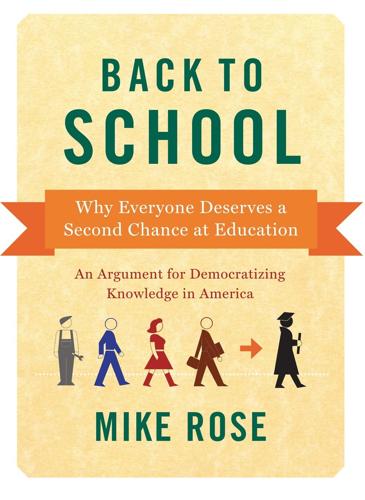
Back to School: Why Everyone Deserves a Second Chance at Education
by
Mike Rose
Published 17 Sep 2012
Seeing the site as a front desk brings to the fore a whole host of design issues that are beyond the scope of this discussion but that in general would be driven by the requirement that the site’s content and design are matched to student need—which means expending some effort to understand that need before putting fancy technical systems in place. The digital divide is still very much with us, so the ideal front desk area would also have computer terminals nearby. And because some students will not be familiar with navigating a website, terminals should be placed at the front desk itself, where staff can demonstrate when necessary how to find the information a 151 BAC K TO S C HO OL student requires.
…
They signal a recognition that teaching is more than transmitting a body of knowledge and set of skills but also involves providing entry to the knowledge and skills and tricks of the trade necessary for fuller participation in learning. Most instructors spend time at the beginning of their classes orienting students to the textbook and other instructional materials or computer-based augmentations, such as class websites and e-portfolios. And given the continual digital divide, careful guidance with online aids is crucial, as is directing students to resources on campus where computers are available. Some faculty go further and provide instruction on note taking and on reading the textbook (and a few schools offer a oneunit class on reading textbooks in a specific discipline).
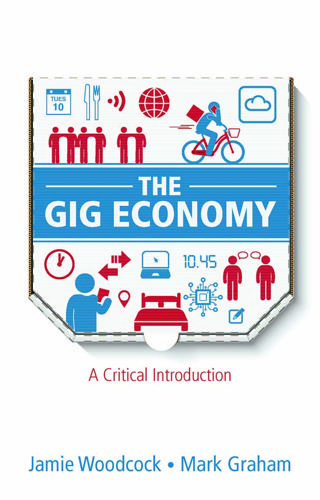
The Gig Economy: A Critical Introduction
by
Jamie Woodcock
and
Mark Graham
Published 17 Jan 2020
For example, in 2006, the internet penetration rate in what the International Telecommunications Union (ITU) defined as ‘developing countries’ was 18 per cent.2 Much has changed since then! At the time of writing this book, over half of the world’s population is now connected to the internet. So-called digital divides remain real, but in high-income countries almost everyone who wants to use the internet has at least some form of access. Penetration rates are lower in the rest of the world, with the ITU reporting that it is now 44.7 per cent for men and 37.5 per cent for women in the ‘developing world’.3 We are also in the midst of a ‘mobile revolution’ in many countries.
…
Bezos’ letters 87–8, 106 Turkopticon 106–7, 123, 133 Anderson, B. 80 Antunes, Ricardo 36 application programming interfaces (API) 58 apps 5, 51, 52, 133, 138 artificial intelligence 50, 58, 60, 66 Aslam, Yaseen 76 assembly line 24, 94, 117 Australia 127 Australian Independent Contractors Act 128 automation 66–7 Avendano, Pablo 73 B Badger, Adam 86–7 Bangalore (India) 98–9, 102 Barbrook, R. 37 Barry, J. 49 Beck, Ulrich 17 Bent, P. 13, 16 Berg, J. 55 Besant, Annie 14 Bezos, Jeff 87 Bolt 77 Bourdieu, Pierre 17 ‘BrainWorkers’ 33 Braverman, Harry 111 Bryant and May match factory 14 C Californian Ideology 37 call centres 24, 31 outsourcing of 37, 54 Callinicos, Brent 49 Cameron, A. 37 Cant, Callum 40, 96 capitalism cognitive 37 gendered basis of 29 car industry 110 care work 64, 66, 79–83 low barriers to entry 67 and repeat transactions 68 Care.com 80, 80–1 casualization 5, 15 Caviar 73 ‘ChainWorkers’ 33 Cheung, Adora 103 China worker resistance and strikes 100 Christie, N. 73 cleaning work 5–6, 64 low barriers to entry 67 migrant workers 30 cloudworker platforms 6, 43, 53–61, 63, 64, 69, 93 atomization of 92 availability of 56 location of 55, 57 removal of barriers to entry for 69 and resistance 104–8 setting rates of pay 65 and spatial control 63 temporal control 64 cognitive capitalism 37 collaborations 123, 132, 136 collective bargaining 30, 34, 37, 49, 80, 130, 134, 135–6, 143 collective organization 100, 134 commercial content moderation (CCM) 61 computerization 66 consumer attitudes/preferences 27 contingent work 19 Convention on Platform Work, Draft 130, 146–51 cooperatives, platform 138–9 Countouris, N. 129 Craigslist 22 crowdsourcing 58 crowdworkers 55, 90 see also microwork; online freelancing D Dalla Costa, Mariarosa 29 Darcy, Alison 60 data collection 65–6 De Stefano, V. 129 deindustrialization 36, 84 Deliveroo 2, 6, 23, 32, 40, 71–4, 115, 127 experience of working for 7–8, 31, 71, 72–4 self-organization for workers 95 strike action 95–6, 97 delivery work(ers)/platforms 5, 27, 62, 63, 68 and automation 67 and collective organization 134 experiences of workers 71–5 low entry requirements 67 see also Deliveroo democratic ownership 136–40, 141 Denmark 3F trade union 134–5 Desai, Bhairavi 79 developing countries internet penetration rate 25 Didi Chuxing 22, 102 digital divides 25 digital legibility 23–5, 65–7 digital platforms 1, 2, 3, 4, 54–5 Directive on Transparent and Predictable Working Condition in the European Union 129 dock work(ers) 13–14, 15, 38 strike (1889) 15 domestic work(ers) 29–30, 62, 63, 66, 79–83 as central component of capitalism 29 factors determining working conditions 80 numbers 80 positive and negative outcomes for 81 and repeat transactions 68 in South Africa 81–3 Doogan, Kevin 18 E economic crisis (late 1970s) 33 Elance 22 entertainment industries 135 Eurobarometer 40 European Commission 35 Expensify 60 F Facebook 45, 60, 121, 123, 133 factories/factory work 15–16, 94 measuring of factory labour process by Taylor 23–4 Fair Crowd Work website 123 Fairwork Foundation project 121–2, 130, 146–51 Farrar, James 75, 75–6, 77–8, 101 feedback 52, 80, 92, 93 financial crisis (2008) 35 Fiverr 20, 23 flexibility, desire for by workers 4–5, 30–3, 71, 115 flexicurity 35 Flipkart 22 Foodora 127 Fordism 117 fragmented work 5, 40, 114 Freelancer 6, 54, 64, 89 freelancing, online see online freelancing Frey, C.B. 66 G gamification 86 gender and capitalism 29 and relationships of work 28–30 geographically tethered work/platforms 5–6, 7, 34, 50–2, 63 control over workforce 68 forms of resistance in 94–104 setting rates of pay 65 temporal control 64–5 Ghana 8, 64, 92 gig economy advantages 4–5 characteristics 114–15 controversy over classification of people involved 43–4 existence due to digital transformation 114 factors facilitating growth of 19, 114 five principles for ‘fair work’ in 122 future 112–45 governance in 62 meaning of 3–7 numbers working in 1–2 operation of 41–69 origins 11–40 pitfalls 5, 116 preconditions that shape the 19–28 rise of 38–40 ways to bring about change 142–4 gig economy workers barriers to entry for 67–8 communicating with each other 132–4 de-personalization of 118, 120 desire for flexibility 4–5, 31–3, 71, 115 experiences of 70–92 invisibility of 6, 80 lack of collective voice 6, 77 lack of effective regulation for 128–9 misclassified as self-employed 44 numbers 39–40 securing protection through courts 127 working conditions 6, 9 gigs, musical 3 Global North 12, 13, 32, 46 and cloudworkers 55 and microwork 84 and outsourcing 44 size of gig economy 39 Global South 32, 46 internet penetration rate 25 size of gig economy 39 women and online freelancing 90 globalization 19, 37–8 Goodwin, Tom 45, 121 Graeber, David 31 Guru.com 22 H Handy 80 Harvey, David 33, 53 Heeks, Richard 39 Herman, S. 39 Hilfr.dk 134–5 Homejoy 68, 103–4 Howe, J. 58 human intelligence tasks (HITs) 60 Humphries, S. 13–14 Hunt, A. 28, 81, 82 Huws, U. 39–40 I IAEA (International Arts and Entertainment Alliance) 135 Iles, Anthony 32 ILO (International Labour Organization) 16–17, 129 Declaration of Philadelphia (1944) 142 Independent Workers Union of Great Britain see IWGB India delivery drivers 74 strikes by Uber drivers 102 Industrial Workers of the Word see IWW industrialization 16 interface 45 International Arts and Entertainment Alliance see IAEA International Labour Organization see ILO Internet access and penetration rate 25 Irani, Lilly 106 IWGB (Independent Workers Union of Great Britain) 73, 97, 101, 109, 127, 134 IWW (Industrial Workers of the World) 97, 101 J James, Selma 29, 81 job insecurity, growth in 18–19 K Kalanick, Travis 23, 48, 49 Kalleberg, A.L. 18 Kenya Ajira Digital programme 35 Kessler, Sarah 11 L labour law 114, 117, 126, 128, 129 Lagos (Nigeria) 89, 124 Lanier, Jaron 58 LaPlante, Rochelle 60 lean platforms 35, 45 legibility, digital 23–5, 65–7 Li, Qi 100 Limer, Eric 85–6 Living Wage Foundation 122 London taxi arrangement 47 long-term unemployment 18 low-paid work, increase in 35, 139 M Machingura, F. 81, 82 McKinsey 1–2, 39 McKinsey Global Institute 66 Manila (Philippines) 89, 90 Maputo (Mozambique) 26–7 Marsh, Greg 129 Marx, Karl 11–12, 22, 72, 121 Mason, Paul 35 mass connectivity 25–7 Massey, Doreen 63 Matchwoman strike 14 Mateescu, A. 79, 80, 81 Messina, Jim 48–9 microwork 6, 55, 58–61, 62, 83–9, 104 and automation 66–7 experiences of workers 83–9 feelings of alienation 88 numbers engaged in 83–4 wages 84–5 see also Amazon Mechanical Turk 59 migrant workers 30, 80, 90 migration status 30 Mitropoulos, Angela 17, 32 mobile phones 25–6 Mondragon Corporation 138–9 Moody, Kim 40, 111 Moyer-Lee, Jason 98 N Nedelkoska, L. 66 neoliberalism 18, 33–5, 52 characteristics of 34 New York Uber 78–9 NHS (National Health Service) 5 Novogratz, Mike 49–50 O O’Connor vs Uber Technologies Inc. (2015) 124, 126 Ojanperä, Sanna 55 Ola 102 online freelancing 6, 7, 8–9, 43, 55, 62, 141 barriers to entry for workers 67 barriers to organizing 104 experiences of workers 89–92 and feedback 93 reasons for doing 89–90 support forums 104–5 wages 90, 91 and worker resistance 104–5 Osborne, M.A. 66 outcome thinking 118, 124 outsourcing 19, 37–8, 39, 44–5, 51, 54 microwork as extension of 58 P Pandor, Aisha 83 Pasha, Tanveer 102 pay rates, setting of 65 Peck, Jamie 33, 35 Peterloo Massacre (1819) 108 Platform Cooperative Consortium 138 platforms/platform work 2, 4 ability to set pay rates 65 and accountability 125–30 barriers to entry for workers 67–8 as a civic utility 139–40 cloudwork see cloudwork connecting workers and clients 20–1, 22–3, 43, 138 cooperatives 138–9 core functions 23 degree of explicit coordination 68–9 democratic ownership of 136–40, 141 digital legibility 23–5, 65–7 Draft Convention on Platform Work 130, 146–51 early 22 geographically tethered model see geographically tethered model infrastructure 20–3 intermediate function 42–3 lean 35, 45 meaning and operation of 42–6 microwork see microwork negotiation-based matching 22–3 reliance on network effects 45 repeat transactions 68 setting up of ‘counter’ 123 spatial control 62, 63–4 spatiality and temporality of 42–3 spending money on public relations and advertising 28 static-price matching 23 temporal control 64–5 understanding how they work 61–9 Plouffe, David 49 Pollman, E. 49 precariat 18 precarious work(ers) 13–19, 32–3, 38 definition 16–17 two kinds of 33 profitability, crisis of 35, 36, 42 public sector and gig economy 17 and outsourcing 44 Q Quintini, G. 66 R racialization of work 30 racism 30 ratings strategy and transparency 122–3 Ravenelle, Alexandrea 37, 70 Raw, Louise 14 Reagan, Ronald 34 reddit 123 regulation 144 lack of for gig economy workers 128–9 labour law 19, 114, 117, 126, 128 state 19, 33–6 regulatory entrepreneurship 49 repeat transactions and platforms 68 resistance see worker resistance Roberts, Sarah 61 S SAG-AFTRA 135 Samman, E. 28 Schifter, Doug 79 Scholz, Trebor 48, 49, 138, 139 Schor, Juliet 103 Screen Actors Guild (SAG) 135 Second World War 110 self-employment 32, 43–4, 96, 98, 108 Semuels, Alana 84 service industries, growth of 34 Seymour, Richard 18–19 sharing economy 11 Shekhawat, Dushyant 74 ‘shock doctrine’ 34 short term contracts 4 Silberman, Six 106 slavery 30 Slee, Tom 50, 78 soldiering 23 South Africa domestic workers in 81–3 Uber 76, 127–8 worker resistance 99–100 South African Domestic Services and Allied Workers Union (SADSAWU) 82–3 South African Labour Relations Act 128 South Korea 35 South London Gas Workers strike (1889) 14–15 Spain 127 spatial control and platforms 62, 63–4 Srnicek, Nick 4, 42, 45 standard employment relationship 5, 12–13, 16, 18, 32, 33–4 Standing, Guy 17–18, 27 state regulation 19, 33–6 strikes 14–15, 94, 95–6, 99–100, 109, 142–3 preconditions for starting 109 surveillance 24 of delivery drivers 74 Upwork workers’ resistance to 105 Susskind, R. 118 SweepSouth 80, 81–3 Switzerland Notime 102 T TaskRabbit 103 taxi industry 51–2 taxi work(ers) 75–9, 134 and collective organization 134 see also Uber Taylor, Bill 100 Taylor, Frederick 23–4 Taylor, Matthew 129 Taylor Review of Modern Working Practices, The 129 technological changes 19, 21 temporal control and platforms 64–5 temporary work(ers) 3, 17 Thatcher, Margaret 34 Thompson, S. 34 Ticona, J. 79, 80, 81 Tillett, Ben 14 tipping 75 Tolpuddle Martyrs 108–9 trade unions 6, 18, 34, 36, 92–3, 97, 108–9, 134, 135, 143–4 decline of 36, 37 and dock workers 15 early 108–9 and gig economy workers 109–10, 136 and IWGB 97 rise in membership 15 textile 108 Transnational Federation of Couriers 97 transparency 118–24, 141 establishment of ‘counter platforms’ 123 ratings strategy 122–3 Transport for London 28 Turkopticon 106–7, 123, 133 U Uber 2, 4, 20, 23, 25, 32, 44, 45, 46–50, 52, 61, 73–9, 94–5, 108, 115, 121, 124, 139 business model 48 Change.org petition 28 data collection 50, 65–6 drivers’ wages 49–50, 77–8 engagement with regulation and transport policy 48 funding 47–8 and ‘greyballing’ 49 in New York 78–9 O’Connor vs Uber Technologies Inc. (2015) 124, 126 power passengers hold over drivers 75–6 public relations and lobbying campaigns 48–9 rating system 75 safety issues and rising petrol prices for drivers in South Africa 76–7 and self-driving vehicles 50 and tipping 75 Uber International Holding(s) BV 128 Uber Technologies SA 127 UberX 47 worker resistance and strikes 100–2 unfair dismissal 44, 134 United Kingdom employment regulation issues 129 neoliberalism 34 and outsourcing 44–5 worker resistance and strikes 100–1 United Private Hire Drivers (UPHD) 75 United States neoliberalism 34 Uber 47–9 UPHD (United Private Hire Drivers) 76, 101 UpWork 6, 8, 43, 54, 64, 121 resistance of surveillance methods by workers 105 Upwork.com 89, 91 US Chamber of Commerce 108 V van Doorn, Niels 42 Vandaele, Kurt 95, 97 venture capital 36 visibility 136 vWorker 22 W wages microworkers 84–5 online freelancing 90, 91 setting of pay rates 65 Uber drivers 49–50, 77–8 Ward, H. 73 Webster, G.E. 16 Weightman, G.E. 13–14 WhatsApp 95, 99, 123, 132, 133 Williams, Eric 30 women and domestic work 29–30 and online freelancing in the Global South 90 Wood, Alex 95, 104–5, 107 work, transformation of 12–13 worker power 19, 36–7, 130–6, 141 worker resistance 93–111, 113–14 and cloudworkers 104–8 and communication 107 food platform strikes 95–7 formation of networks and meetings 95, 98–9 geographically tethered work 94–104 history of 94 legal battles over employment status 98 and online freelancing 104–5 and self-employment status 98 strikes 14–15, 94, 95–6, 99, 100–1 taking of work off-platform 103 and trade unions 97, 107–11 Uber 101–2 and WhatsApp groups 98, 99, 132 workers’ rights 34, 44, 98, 101, 130, 135, 139, 140, 144 Y YouTube 60 Z Zomato 98–9 POLITY END USER LICENSE AGREEMENT Go to www.politybooks.com/eula to access Polity’s ebook EULA.
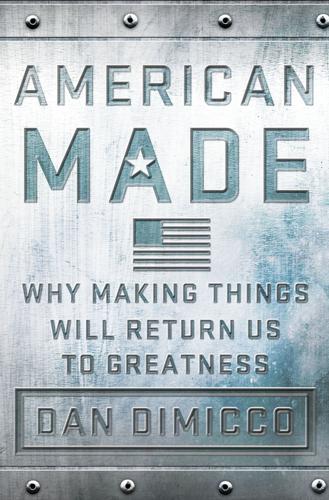
American Made: Why Making Things Will Return Us to Greatness
by
Dan Dimicco
Published 3 Mar 2015
Lois Weiss, “Caution: Breath-Holding Zone,” New York Post, August 8, 2012, http://nypost.com/2012/08/08/caution-breath-holding-zone/. 13. Gerry Smith, “Internet Speed in United States Lags behind Many Countries, Highlighting Global Digital Divide,” Huffington Post, September 10, 2012, http://www.huffingtonpost.com/2012/09/05/internet-speed-united-states-digital-divide_n_1855054.html. 14. “2013 Report Card for America’s Infrastructure,” American Society of Civil Engineers, March 19, 2013, http://www.infrastructurereportcard.org/. 15. “Failure to Act: The Impact of Current Infrastructure Investment on America’s Economic Future,” American Society of Civil Engineers, January 15, 2013, http://www.asce.org/uploadedFiles/Infrastructure/Failure_to_Act/Failure_to_Act_Report.pdf. 16. “2013 Report Card for America’s Infrastructure,” American Society of Civil Engineers, March 19, 2013, http://www.infrastructurereportcard.org/. 17.
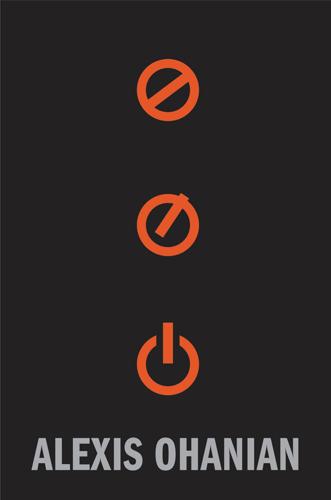
Without Their Permission: How the 21st Century Will Be Made, Not Managed
by
Alexis Ohanian
Published 30 Sep 2013
I want to lionize the efforts of some of the innovators who’ve benefited from this new medium and inspire others to join them in creating something themselves. Generations X and Y were raised to believe that they could be and do anything they wanted. I never did become a professional football player, but when one takes a more rational approach to life goals, the online opportunities become boundless. There is still a significant digital divide, even in the United States, and certainly in the developing world, but I intend this book to spotlight what happens when a population has its most basic needs fulfilled and can use the Internet for remarkable things. All these are reasons to bridge this divide, whether in Yerevan or Brooklyn.
…
Imagine what just a decade more of Internet freedom will do. That’s how fast innovation moves online—not just for startups, but also, as I’ve shown, in the fields of art, activism, philanthropy, and politics. Every industry is getting swallowed up as code eats the world, and the result is a free and flat network. That’s why bridging the digital divide is so important—it’s part access and part education, and it’s all vital both to the health of our nations and to our Internet. A quality Internet connection is a public utility that should be accessible to all people, regardless of how much money they have and where they live. If we believe every American has a right to electricity, why would we withhold humanity’s greatest omnidirectional flow of information?

Whole Earth Discipline: An Ecopragmatist Manifesto
by
Stewart Brand
Published 15 Mar 2009
American travelers are often shocked to find that cellphone connectivity is better in developing countries than in the United States. Technology historian Kevin Kelly draws an interesting conclusion from this:A decade ago many folks who like to worry about the advance of technology were worried about the “digital divide.” This phrase signified the unfair gap between those who had computers and the internet and those who did not. The question was usually framed in these words: “What are you going to do about the digital divide?” At the time my standard reply was, “Nothing. This is a case of the haves and have-laters. The haves (that’s us) are going to overpay for crummy early technology that barely works in order to make it cheaper and better for the have-laters, who will get it for dirt cheap pretty soon.”
…
In reality, intended consequences are what usually happen, surprises are balanced between good and bad, and they’re easy to recognize and to expand on or correct, as needed. If cellphones had been subject to the precautionary principle, the arguments against them would have included: They’ll microwave your brain; they’ll exacerbate the Digital Divide; they’ll lead to the corporate takeover of all communications; they’ll homogenize society—prove they won’t! In reality none of those things occurred—though of course other problems did, such as incompatible standards and new forms of discourtesy. The main outcome was enormous, rapid success, with a vast empowering of individuals everywhere, especially the poor.
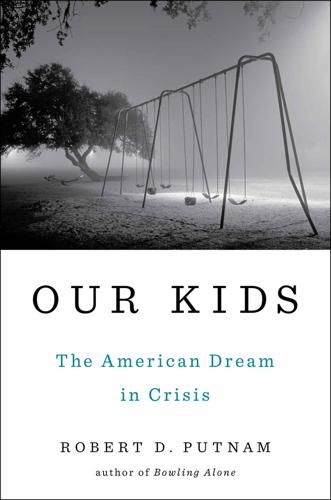
Our Kids: The American Dream in Crisis
by
Robert D. Putnam
Published 10 Mar 2015
In principle, it could multiply weak ties—that’s the purpose of LinkedIn, for example. However, since online and offline connections tend to be closely correlated,18 simply multiplying online ties would not necessarily narrow the class gap if those online ties were (like “real life” ties) more readily available to more educated Americans. Is there a “digital divide”? In the early years of the Internet, simple access was unequally distributed, as less educated Americans, especially nonwhites, were slower to gain access to the Web. More recently, however, this digital access divide has narrowed substantially, and indeed racial differences have virtually disappeared.19 But having equal access to the Internet does not mean that everyone gains equal benefit from that access.
…
High-quality national surveys of high school seniors confirm that kids from less educated homes are less knowledgeable about and interested in politics, less likely to trust the government, less likely to vote, and much less likely to be civically engaged in local affairs than their counterparts from college-educated homes. Moreover, these class differences are much larger among whites than among nonwhites.18 Online participation has been growing rapidly, but the digital divide on political uses of the Internet is very great and shows no signs of diminishing.19 Still worse, as political scientists Kay Schlozman, Sidney Verba, and Henry Brady have shown, this class gap in political participation is increasingly intergenerational, because kids tend to inherit their parents’ degree of political engagement, just as they tend to inherit their parents’ socioeconomic standing.
…
.: affluence in, 50–54 child poverty in, 47–48, 48 economic disparity in, 46–49 housing boom in, 46–47 life stories of, see Andrew; Darleen; Earl; Joe; Kayla; Patty logging industry in, 46 old-timers vs. newcomers in, 46–49 as tourist destination, 264 Bernanke, Ben, 32 Big Brothers Big Sisters, 213 Birmingham, Ala., 270 birth control, see contraception births: cultural shifts and, 73–75 shotgun marriages and, 62 teen, 2, 196, 203–5, 245–46 “Black Mecca,” 81 blended families, 68–71 Boston, Mass., 261, 265 Bowling Alone (Putnam), 211 Boyd, Danah, 212 Brady, Henry, 236 brain development, 109–117, 246 Brown, Margaret Wise, 125–26, 242 Building Strong Families initiative, 244 Bush, George W., 244 Bush, Laura, 130 C California High School Exit Exam (CAHSEE), 156 Carl, 83–86, 88–92, 101, 110, 118, 119–20, 209, 229 Carlson, Marcia, 75 Catholic schools, 84, 201, 254–55 certificate courses, 186 character building, 176 charter schools, 204, 253–54 Chelsea, 2, 24–26, 30, 31, 32, 39, 43, 78, 261, 266 Cherlin, Andrew J., 73 Cheryl, 2, 12–13, 15–19, 30, 213, 274 Chetty, Raj, 228 child care: day care and, 128–30, 248–49 early childhood education and, 153, 249–51 nannies and, 194–95 nonparental, 128–30, 248–49 parental time in, 126–28, 127 spending gap in, 125–26 child development: Adverse Childhood Experiences Scale and, 112–13, 113 autonomy and, 89 brain development in, 109–17, 246 class differences and, 119–20 discipline and, 96–97 family impact on, 79 emotional security and, 115 government policies and, 248–51 neglect and, 111–12 parenting and, 83, 109–17, 129–30, 222, 248–51 poverty and, 116, 122 stages of, 109–10 toxic stress and, 111–14 childhood diabetes, 90–91 childhood obesity, 222–23, 222 child-parent relationships, time and, 126–28, 127 child poverty: in Bend, Oreg., 47–48, 48 brain development and, 116 costs of, 231–32 in Port Clinton, Ohio, 22, 23 child tax credit, 247 churches: Catholic, 84, 192, 193, 201, 254–55 as social networks, 4, 10, 89–90, 193, 201 City University of New York (CUNY), 84, 85 civic engagement, 235–36, 235, 265 Civil Rights movement, 81 Clara, 137, 139–48, 158–59, 164–65, 174, 209, 213, 229 class gap: in 1950s Port Clinton, 6–8 in 21st-century Port Clinton, 19–23 college and, 184–90, 187 consequences of, 77–79 disciplinary suspensions, 170–71, 171 education and, 137, 138, 160–73 extracurricular activities and, 176–78, 177 financial stress and, 130–32, 131 parenting and, 119–22, 120 politics and, 237–38 race and, 161–62 reasons for, 72–77 savvy and, 216 social networks and, 207–10, 208 social trust and, 219–20 in spending, 125–28, 126 Coalition for Community Schools, 254 cognitive skills, 109–11, 115–18, 122, 124–25, 128, 131, 162, 174, 273 cohabitation, 67–68 collective efficacy, 218–19, 221 college: class gap and, 184–90, 187 educational attainment in, 184–90, 189, 190 financing of, 59 parental encouragement and, 8 scholarships and, 8, 14, 17, 141 socioeconomic status and, 189–90 tracking and, 143, 173 Common School movement, 160 community, 191–226 affluence in, 193–98 government policies and, 258–60 mentor support and, 206, 213–17, 215 neighborhood support and, 217–23 poverty in, 198–206 religious support in, 197, 201–4, 223–26 vs. rugged individualism, 206, 261 safety nets in, 132, 206, 229, 246–47, 254, 258–59, 261, 264, 265 social networks and, 206–13 solutions for problems of, 258–60 youth resources in, 206–226 community colleges, 59, 157, 185, 256–58 community schools, 253 computers, 85, 125, 130, 147 brain compared to, 110 concerted cultivation, 101, 118 contingent reciprocity, 110 contraception, 62, 64–65, 73, 196, 245–46 crime: in neighborhoods, 102–3, 199–200 in schools, 153–54, 170 curriculum, 143, 153, 168 D dance classes, 139, 177, 178 Darlene, 54–58, 60, 64, 68, 73–74, 123, 128 David, 2, 26–33, 39, 43, 68, 78, 188, 216, 233, 237, 240, 256, 263, 273 day care: Head Start and, 250 parenting gap and, 128–30, 249 quality of, 248–49 Declaration of Independence, 241 depression, 60, 194 Desmond, 83–92, 118–19, 121, 123, 125, 128, 209, 272–73 Dewey, John, 253 diabetes, childhood, 90–91 Dick, 24, 92 Digital Divide, 211–36 disability payments, 60 discipline, 89, 96, 118–22 in schools, 171 Disneyland, 135, 141, 151, 162 divorce: in 1970s, 62 co-parenting and, 194 and family structure, 61–63, 67, 75, 78, 269 rates of, 21, 67 see also single-parent families domestic violence: child abuse, 93, 105, 106 emotional abuse, 106 physical abuse, 55, 102, 105, 111 spousal abuse, 55, 102 verbal abuse, 105 Don, 3–4, 5, 6, 8, 18, 30, 44, 213, 223, 274 Dr.
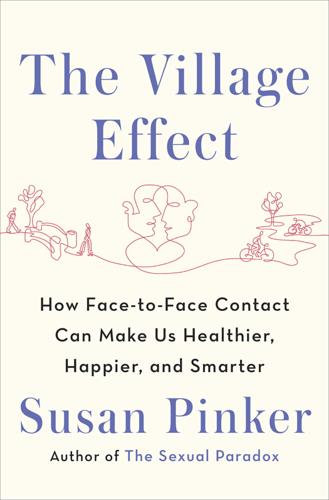
The Village Effect: How Face-To-Face Contact Can Make Us Healthier, Happier, and Smarter
by
Susan Pinker
Published 30 Sep 2013
A study of more than two thousand children published by the Kaiser Family Foundation in 2010 found that media use had increased dramatically since they started monitoring it in the late nineties; most children now devote well over seven and a half hours a day to TV, video games, and social networking sites. Most striking was a class-related digital divide. Children whose parents did not have a college degree were spending ninety minutes more a day with various media than children from more educated families. Black and Hispanic children spent nearly four and a half hours more a day on TV and computer games than white children. There was no proof that screens were the cause, but children who were heavy media users were getting lower grades in school.4 Dr.
…
; Tad Simons, “England’s Experience with Whiteboards Is Instructive for the Rest of Us,” Training, January 11, 2005. 48. Luke Hopewell, “Budget 2012: OLPC Gets Cash, Praises Govt,” ZD Net, May 9, 2012. 49. Tom Vanderbilt, “The Call of the Future,” Wilson Quarterly, Spring 2012, http://www.wilsonquarterly.com/essays/call-future. 50. Jacob L. Vigdor and Helen F. Ladd, “Scaling the Digital Divide: Home Computer Technology and Student Achievement,” NBER Working Paper 16078 (Cambridge, Mass.: National Bureau of Economic Research, 2010). 51. Bryan Goodwin, “One-to-One Laptop Programs Are No Silver Bullet,” Educational Leadership 68, no. 5 (2011); Larissa Campuzano et al., Effectiveness of Reading and Mathematics Software Products: Findings from Two Student Cohorts (Washington, D.C.: National Center for Education Evaluation and Regional Assistance, 2009); Richtel, “In Classroom of Future”; D.
…
Minding the Campus, November 10, 2013, http://www.mindingthecampus.com/originals/2013/11/why_do_students_drop_out_of_mo.html; Ezekiel J. Emanuel, “Online Education: MOOCs Taken by Educated Few,” Nature 503, no. 342 (2013). 31. Matt Richtel, “A Silicon Valley School that Doesn’t Compute,” New York Times, October 22, 2011. 32. Jacob L. Vigdor and Helen F. Ladd, “Scaling the Digital Divide: Home Computer Technology and Student Achievement,” NBER Working Paper 16078 (Cambridge, Mass.: National Bureau of Economic Research, 2010). 33. Warschauer, Learning in the Cloud, 96–97. 34. United States Census Bureau. “State and County Quick Facts: Miami-Dade County, Florida,” 2012, http://quickfacts.census.gov/qfd/states/12/12086.html (accessed June 1, 2013). 35.

Brilliant, Crazy, Cocky: How the Top 1% of Entrepreneurs Profit From Global Chaos
by
Sarah Lacy
Published 6 Jan 2011
In just a few years, Nexian has surged from a “nobody” to a company sel ing more than 5 mil ion handsets per year, and eating into Nokia’s market share. The Indonesian desire for keyboards—not touchscreens—isn’t surprising given that the country’s Web obsession is built on checking in, Tweeting, and messaging. Like so many other parts of the developing world, the Indonesian digital divide is being bridged with phones more than laptops, and Indonesians are doing it in a uniquely social way. Yet unlike China, India, and even Israel, almost no Western Internet companies have sizable operations in Indonesia. Yahoo! is the closest, with a handful of employees that in 2010 started making offers to acquire smal Indonesian homegrown properties on the sly.
…
We’d just been airlifted by the military into La Macarena and visited the John F. Kennedy School, a large open-air classroom on the edge of the jungle, where every child had a smal , rugged laptop from the One Laptop Per Child program. At first glance, the rows of children in their uniforms and bright green-and-white computers was a stunning visual of the digital divide being bridged, until they told us the area didn’t have Internet access, making al those computers a lot less useful. But that problem was easy. Ross could fix things like that. He could make a cal to the local telecom companies or throw some U.S. aid dol ars at a mesh wireless network. But he couldn’t create a high-growth economy for La Macarena.
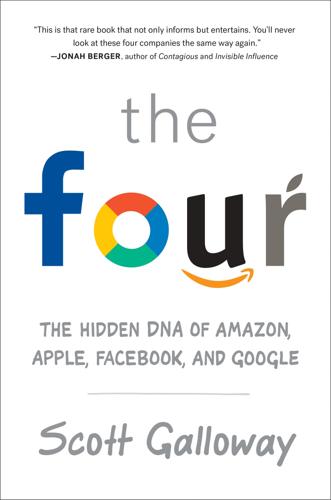
The Four: How Amazon, Apple, Facebook, and Google Divided and Conquered the World
by
Scott Galloway
Published 2 Oct 2017
October 10, 2004. http://www.nytimes.com/2004/10/10/health/can-prayers-heal-critics-say-studies-go-past-sciences-reach.html. 8. Poushter, Jacob. “2. Smartphone ownership rates skyrocket in many emerging economies, but digital divide remains.” Pew Research Center. February 22, 2016. http://www.pewglobal.org/2016/02/22/smartphone-ownership-rates-skyrocket-in-many-emerging-economies-but-digital-divide-remains/. 9. “Internet Users.” Internet Live Stats. http://www.internetlivestats.com/internet-users/. 10. Sharma, Rakesh. “Apple Is Most Innovative Company: PricewaterhouseCooper (AAPL).” Investopedia.

Tubes: A Journey to the Center of the Internet
by
Andrew Blum
Published 28 May 2012
Construction began on a seventeen-mile fiber loop around The Dalles, from city hall to a hub at the BPA’s Big Eddy substation, on the outskirts of town. Its total cost was $1.8 million, funded half with federal and state grants, and half with a loan. No city funds were used. The Dalles’s predicament was typical of towns on the wrong side of the “digital divide,” as politicians call poorer communities’ lack of access to broadband. The big nationwide backbones were quickly and robustly built, but they often passed through rural areas without stopping. The reasons were both economic and technological. Long-distance fiber-optic networks are built in fifty-odd-mile segments, which is the distance light signals in fiber-optic cables can travel before needing to be broken down and reamplified.
…
See Google Deutsche Telecom, 138 Deutscher Commercial Internet Exchange (DE-CIX) AMS-IX and, 133–35, 145 Blum’s visit to, 135–46 characteristics of, 112, 155 core of, 113, 130–31, 143–45 “fail-over” at, 141 founding of, 138 and Frankfurt as geographic center of Europe, 147 importance of, 144, 145 location of Internet exchanges and, 113 momentos from, 145 peering and, 128, 130 routers at, 157, 161 security at, 140–41 structure of Internet and, 27 as symbol of infinity, 144 traffic at, 133–34 undersea cables and, 197 Diaz, Eddie, 166–71, 267 Digg, 72, 93 “digital divide,” 236 Digital Equipment Corporation (DEC), 52, 74–76, 86, 87, 88 Digital Realty Trust, 232 DMARC (demarcation point), 98–99 Docklands. See London Internet Exchange Doerr, John, 70 dot-com boom, 57, 73 DuPont Fabros, 90, 96 earthquakes, 197, 200, 201, 233 eBay, 82, 96 The Education of Henry Adams (Adams), 143–44 Einstein, Albert, 142 Emerson, Ralph Waldo, 162–63 Empire City Subway (New York City), 165–66 Energy Department, US, 52 Equinix in Amsterdam, 154 characteristics of large Internet exchanges and, 111–12 definition of Internet exchange and, 109 expansion of, 95 founding of, 72 function of, 152 funding for, 87–88 as “Internet Business Exchange,” 87 MAE-East and, 73 as NANOG party sponsor, 131, 135 in New York City, 164 PAIX and, 76–77, 87 and rerouting traffic, 200–201 security at, 141 Telx as competitor of, 174 trademark architecture of, 95 UK data center of, 214 US locations of, 266 in Virginia, 90–100 See also Adelson, Jay; Ashburn, Virginia, Equinix in; Troyer, Eric EUnet, 53, 138 euNetworks, 152 Europe history of Internet and, 52–53 MAE-East and, 88 US telephone connection to, 175 See also specific Internet exchange European Academic Research Network (EARN), 53 Facebook as content provider, 79 data center/storage for, 126, 230, 231, 250–62, 267 at Equinix, 96 ethos of, 257–58 and important Internet places, 127 and Internet as series of tubes, 5 location of, 70–71 NANOGers at, 120 Open Compute Project of, 258 openness of, 257–58 peering and, 125–28, 129 privacy issues at, 258 private stock offering for, 260–61 Falmouth, Gibraltar, and Malta Telegraph Company, 204 Feldman, Steve, 58–59, 60–61, 64, 65–66, 121, 152 fiber-optic cables/networks basic principle of, 193 damage to, 117 fifty-odd mile segments of, 236 as heart of Internet, 158 in Netherlands, 147–48 in New York City, 163–71, 172 New York City–Washington, 26 See also routes/routers; specific exchange or topic fiber vaults (Ashburn, Virginia), 101–3 FiberMux Magnum machine, 65 financial industry, 198–99 Financial Times Print Works, 183 Fitzgerald, F.

Matchmakers: The New Economics of Multisided Platforms
by
David S. Evans
and
Richard Schmalensee
Published 23 May 2016
Shelly Banjo and Drew Fitzgerald, “Stores Confront New World of Reduced Shopper Traffic,” Wall Street Journal, January 16, 2014, http://www.wsj.com/articles/SB10001424052702304419104579325100372435802. 14. Pew Research Center, “Device Ownership Over Time,” http://www.pewinternet.org/data-trend/mobile/device-ownership/; Deloitte Digital, “Navigating the New Digital Divide: Capitalization on Digital Influence in Retail,” May 13, 2015, 6, http://www2.deloitte.com/content/dam/Deloitte/us/Documents/consumer-business/us-cb-navigating-the-new-digital-divide-051315.pdf. 15. Ed Zimmer, “The Death of Retail,” Entrepreneur Network, 1999, http://tenonline.org/art/9909.html. 16. Ali Hortasçu and Chad Syverson, “The Ongoing Evolution of US Retail: A Format Tug-of-War,” Journal of Economic Perspectives 29, no. 4 (Fall 2015): 89–112. 17.
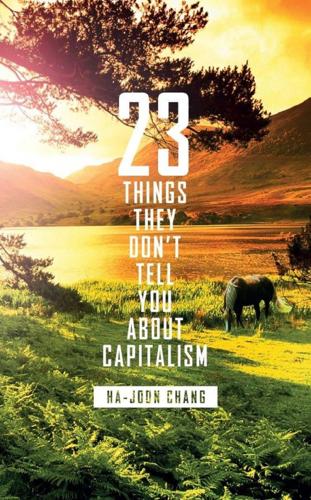
23 Things They Don't Tell You About Capitalism
by
Ha-Joon Chang
Published 1 Jan 2010
And as I explain in Thing 9, this belief in ‘post-industrial society’ has led those countries to unduly neglect their manufacturing sector, with adverse consequences for their economies. Even more worryingly, the fascination with the internet by people in rich countries has moved the international community to worry about the ‘digital divide’ between the rich countries and the poor countries. This has led companies, charitable foundations and individuals to donate money to developing countries to buy computer equipment and internet facilities. The question, however, is whether this is what the developing countries need the most. Perhaps giving money for those less fashionable things such as digging wells, extending electricity grids and making more affordable washing machines would have improved people’s lives more than giving every child a laptop computer or setting up internet centres in rural villages.
…
Index active economic citizenship xvi, xvii Administrative Behaviour (Simon) 173–4 Africa see Sub-Saharan Africa AIG 172–3 Air France 131 AOL 132–3 apartheid 214–16 Argentina education and growth 181 growth 73 hyperinflation 53–4 Austria geography 121 government direction 132 protectionism 70 balance of payments 97–100, 101 Baldursson, Fridrik 235 Bangladesh entrepreneurship 159–60 and microfinance 161–2, 163, 164 Bank of England 252 (second) Bank of the USA 68 Bank for International Settlements (BIS) 262 bankruptcy law 227–8 Barad, Jill 154 Bard College 172 Bateman, Milford 162 Baugur 233 Baumol, William 250 Bebchuk, Lucian 154 behaviouralist school 173–4 Belgium ethnic division 122 income inequality 144, 146 manufacturing 70, 91 R&D funding 206 standard of living 109 Benin, entrepreneurship 159 Bennett, Alan 214 Besley, Tim 246 big government 221–2, 260–61 and growth 228–30 see also government direction; industrial policy BIS (Bank for International Settlements) 262 Black, Eugene 126 Blair, Tony 82, 143, 179 borderless world 39–40 bounded rationality theory 168, 170, 173–7, 250, 254 Brazilian inflation 55 Britain industrial dominance/decline 89–91 protectionism 69–70 British Academy 246–7 British Airways 131 brownfield investment 84 Brunei 258 Buffet, Warren 30, 239 Bukharin, Nikolai 139 Bunning, Senator Jim 8 Burkina Faso (formerly Upper Volta) 121, 200 Bush, George W. 8, 158, 159, 174 Bush Sr, George 207 business sector see corporate sector Cameroon 116 capital mobility 59–60 nationality 74–5, 76–7 capitalism Golden Age of 142, 147, 243 models 253–4 capitalists, vs. workers 140–42 captains of industry 16 Carnegie, Andrew 15 Case, Steve 132–3 Cassano, Joe 172–3 CDOs (collateralized debt obligations) 238 CDSs (credit default swaps) 238 CEO compensation see executive pay, in US Cerberus 77–8 Chavez, Hugo 68 chess, complexity of 175–6 child-labour regulation 2–3, 197 China business regulation 196 communes 216 economic officials 244 industrial predominance 89, 91, 93, 96 as planned economy 203–4 PPP income 107 protectionism and growth 63–4, 65 Chocolate mobile phone 129 Chrysler 77–8, 191 Chung, Ju-Yung 129 Churchill, Winston 253 climate factors 120–21 Clinton, Bill 143 cognitive psychology 173–4 collateralized debt obligations (CDOs) 238 collective entrepreneurship 165 communist system 200–204 Concorde project 130–31 conditions of trade 5 Confucianism 212–13 Congo (Democratic Republic) 116, 121 consumption smoothing 163 cooperatives 166 corporate sector importance 190–91 planning in 207–9 regulation effect 196–8 suspicion of 192–3 see also regulation; transnational corporations Cotton Factories Regulation Act 1819 2 credit default swaps (CDSs) 238 Crotty, Jim 236–8 culture issues 123, 212–13 Daimler-Benz 77–8 Darling, Alistair 172 de-industrialization 91 balance of payments 97–100, 101 causes 91–6 concerns 96–9 deflation, Japan 54 deliberation councils 134 Denmark cooperatives 166 protectionism 69 standard of living 104, 106, 232–3 deregulation see under regulation derivatives 239 Detroit car-makers 191–2 developing countries entrepreneurship and poverty 158–60 and free market policies 62–3, 71–3, 118–19, 261–2 policy space 262–3 digital divide 39 dishwashers 34 distribution of income see downward redistribution of income; income irregularity; upward redistribution of income domestic service 32–3 double-dip recession xiii downward redistribution of income 142–3, 146–7 Dubai 235 Duménil, Gérard 236 East Asia economic officials 249–50 educational achievements 180–81 ethnic divisions 122–3 government direction 131–2 growth 42, 56, 243–4 industrial policy 125–36, 205 École Nationale d’Administration (ENA) 133 economic crises 247 Economic Policy Institute (EPI) 144, 150 economists alternative schools 248–51 as bureaucrats 242–3 collective imagination 247 and economic growth 243–5 role in economic crises 247–8 Ecuador 73 Edgerton, David 37 Edison, Thomas 15, 165, 166 education and enterprise 188–9 higher education effect 185–8 importance 178–9 knowledge economy 183–5 mechanization effect 184–5 outcome equality 217–18 and productivity 179–81 relevance 182–3 Elizabeth II, Queen 245–7 ENA (École Nationale d’Administration) 133 enlightened self-interest 255–6 entrepreneurship, and poverty 157–8 and collective institutions 165–7 as developing country feature 158–60 finance see microfinance environmental regulations 3 EPI (Economic Policy Institute) 144, 150 equality of opportunity 210–11, 256–7 and equality of outcome 217–20, 257 and markets 213–15 socio-economic environment 215–17 equality of outcome 217–20 ethnic divisions 122–3 executive pay and non-market forces 153–6 international comparisons 152–3 relative to workers’ pay 149–53, 257 US 148–9 fair trade, vs. free trade 6–7 Fannie Mae 8 Far Eastern Economic Review 196 Federal Reserve Board (US) 171, 172, 246 female occupational structure 35–6 Fiat 78 financial crisis (2008) xiii, 155–6, 171–2, 233–4, 254 financial derivatives 239, 254–5 financial markets deregulation 234–8, 259–60 effects 239–41 efficiency 231–2, 240–41 sector growth 237–9 Finland government direction 133 income inequality 144 industrial production 100 protectionism 69, 70 R&D funding 206 welfare state and growth 229 Fischer, Stanley 54 Ford cars 191, 237 Ford, Henry 15, 200 foreign direct investment (FDI) 83–5 France and entrepreneurship 158 financial deregulation 236 government direction 132, 133–4, 135 indicative planning 204–5 protectionism 70 Frank, Robert H 151 Franklin, Benjamin 65–6, 67 Freddie Mac 8 free market boundaries 8–10 and developing countries 62–3, 71–3, 118–19, 261–2 labour see under labour nineteenth-century rhetoric 140–43 as political definition 1–2 rationale xiii–xiv, 169–70 results xiv–xv, xvi–xvii system redesign 252, 263 see also markets; neo-liberalism free trade, vs. fair trade 6–7 Fried, Jesse 154 Friedman, Milton 1, 169, 214 Galbraith, John Kenneth 16, 245 Garicano, Luis 245 Gates, Bill 165, 166, 200 General Electric (GE) 17, 45, 86, 237 General Motors Acceptance Corporation (GMAC) 194, 237 General Motors (GM) 20, 22, 45, 80, 86, 154, 190–98 decline 193–6 financialization 237 pre-eminence 191–2 geographical factors 121 Germany blitzkrieg mobility 191 CEO remuneration 152–3 cooperatives 166 emigration 69 hyperinflation 52–4 industrial policy 205 manufacturing 90 R&D funding 206 welfare state and growth 228–9 Ghana, entrepreneurship 159 Ghosn, Carlos 75–6, 78 globalization of management 75–6 and technological change 40 GM see General Motors GMAC (General Motors Acceptance Corporation) 194, 237 Golden Age of Capitalism 142, 147, 243 Goldilocks economy 246 Goodwin, Sir Fred 156 Gosplan 145 government direction balance of results 134–6 and business information 132–4 failure examples 130–31 and market discipline 44–5, 129–30, 134 share ownership 21 success examples 125–6, 131–4 see also big government; industrial policy Grameen Bank 161–4 Grant, Ulysses 67 Great Depression 1929 24, 192, 236, 249, 252 greenfield investment 84 Greenspan, Alan 172, 246 Hamilton, Alexander 66–7, 69 Hayami, Masaru 54 Hennessy, Peter 246–7 higher education 185–8 Hirschman, Albert 249 History Boys (Bennett) 214 Hitler, Adolf 54 home country bias 78–82, 83, 86–7 Honda 135 Hong Kong 71 household appliances 34–6, 37 HSBC 172 Human relations school 47 Hungary, hyperinflation 53–4 hyperinflation 52–4 see also inflation Hyundai Group 129, 244 Iceland financial crisis 232–4, 235 foreign debt 234 standard of living 104–5 ICT (Information and Communication Technology) 39 ILO (International Labour Organization) 32, 143–4 IMF see International Monetary Fund immigration control 5, 23, 26–8, 30 income per capita income 104–11 see also downward redistribution of income; income inequality; upward redistribution of income income inequality 18, 72–3, 102, 104–5, 108, 110, 143–5, 147, 247–8, 253, 262 India 99, 121 indicative planning 205 indicative planning 204–6 Indonesia 234 industrial policy 84, 125–36, 199, 205, 242, 259, 261 see also government direction Industrial Revolution 70, 90, 243 infant industry argument 66–8, 69–70, 71–2 inflation control 51–2 and growth 54–6, 60–61 hyperinflation 52–4 and stability 56–61 Information and Communication Technology (ICT) 39 institutional quality 29–30, 112–13, 115, 117, 123–4, 165–7 interest rate control 5–6 international dollar 106–7 International Labour Organization (ILO) 32, 143–4 International Monetary Fund (IMF) 54–5, 57, 66, 72, 244, 262 SAPs 118 International Year of Microcredit 162 internet revolution 31–2 impact 36–7, 38, 39 and rationality 174 investment brownfield/greenfield 84 foreign direct investment 83–5 share 18–19 invisible reward/sanction mechanisms 48–50 Ireland financial crisis 234–5 Italy cooperatives 166 emigrants to US 103 Jackson, Andrew 68 Japan business regulation 196 CEO remuneration 152–3 deflation 54 deliberation councils 134 government direction 133–4, 135, 259 indicative planning 205 industrial policy 131, 135, 242–5 industrial production 100 production system 47, 167 protectionism 62, 70 R&D funding 206 Jefferson, Thomas 67–8, 239 job security/insecurity 20, 58–61, 108–9, 111, 225–8, 247, 253, 259 Journal of Political Economy 34 Kaldor, Nicolas 249 Keynes, John Maynard 249 Kindleberger, Charles 249 knowledge economy 183–5 Kobe Steel 42–3, 46 Kong Tze (Confucius) 212 Korea traditional 211–13 see also North Korea; South Korea Koufax, Sandy 172 Kuwait 258 labour free market rewards 23–30 job security 58–60 in manufacturing 91–2 market flexibility 52 regulation 2–3 relative price 33, 34 Latin America 32–3, 55, 73, 112, 122, 140, 196–7, 211, 245, 262 Latvia 235 Lazonick, William 20 Lenin, Vladimir 138 Levin, Jerry 133 Lévy, Dominique 236 LG Group 129, 134 liberals neo-liberalism xv, 60, 73 nineteenth-century 140–42 limited liability 12–15, 21, 228, 239, 257 Lincoln, Abraham 37, 67 List, Friedrich 249 London School of Economics 245–6 LTCM (Long-Term Capital Management) 170–71 Luxemburg, standard of living 102, 104–5, 107, 109, 232–3, 258 macro-economic stability 51–61, 240, 259, 261 Madoff, Bernie 172 Malthus, Thomas 141 managerial capitalism 14–17 Mandelson, Lord (Peter) 82–3, 87 manufacturing industry comparative dynamism 96 employment changes 91–2 importance 88–101, 257–9 productivity rise 91–6, 184–5 relative prices 94–5 statistical changes 92–3 Mao Zedong 215–16 Marchionne, Sergio 78 markets and bounded rationality theory 168, 173–6, 177, 254 conditions of trade 5 and equality of opportunity 213–15 failure theories 250 financial see financial markets government direction 44–5, 125–36 government regulation 4–6, 168–9, 176–7 participation restrictions 4 price regulations 5–6 and self-interest 44–5 see also free market Marx, Karl 14, 198, 201, 208, 249 Marxism 80, 185, 201–3 mathematics 180, 182–3 MBSs (mortgage-backed securities) 238 medicine’s popularity 222–4 Merriwether, John 171 Merton, Robert 170–71 Michelin 75–6 microfinance critique 162 and development 160–62 Microsoft 135 Minsky, Hyman 249 Monaco 258 morality, as optical illusion 48–50 Morduch, Jonathan 162 mortgage-backed securities (MBSs) 238 motivation complexity 46–7 Mugabe, Robert 54 NAFTA (North American Free Trade Agreement) 67 National Health Service (UK) 261 nationality of capital 74–87 natural resources 69, 115–16, 119–20, 121–2 neo-liberalism xv, 60, 73, 145 neo-classical school 250 see also free market Nestlé 76–7, 79 Netherlands CEO remuneration 152–3 cooperatives 166 intellectual property rights 71 protectionism 71 welfare state and growth 228–9 New Public Management School 45 New York Times 37, 151 New York University 172 Nissan 75–6, 84, 135, 214 Nobel Peace Prize 162 Prize in economics 170, 171–2, 173, 208, 246 Nobel, Alfred 170 Nokia 135, 259–60 North American Free Trade Agreement (NAFTA) 67 North Korea 211 Norway government direction 132, 133, 205 standard of living 104 welfare state and growth 222, 229 Obama, Barack 149 OECD (Organization for Economic Cooperation and Development) 57, 159, 229 Oh, Won-Chul 244 Ohmae, Kenichi 39 Opel 191 Opium War 9 opportunities see equality of opportunity Organization for Economic Cooperation and Development (OECD) 57, 159, 229 organizational economy 208–9 outcomes equality 217–20 Palin, Sarah 113 Palma, Gabriel 237 Park, Chung-Hee 129 Park, Tae-Joon 127–8 participation restrictions 4 Perot, Ross 67 Peru 219 PGAM (Platinum Grove Asset Management) 171 Philippines, education and growth 180, 181 Phoenix Venture Holdings 86 Pigou, Arthur 250 Pinochet, Augusto 245 PISA (Program for International Student Assessment) 180 Plain English Campaign 175 planned economies communist system 200–204 indicative systems 204–6 survival 199–200, 208–9 Platinum Grove Asset Management (PGAM) 171 Pohang Iron and Steel Company (POSCO) 127–8 pollution 3, 9, 169 poor individuals 28–30, 140–42, 216–18 Portes, Richard 235 Portman, Natalie 162 POSCO (Pohang Iron and Steel Company) 127–8 post-industrial society 39, 88–9, 91–2, 96, 98, 101, 257–8 Poverty Reduction Strategy Papers (PRSPs) 118 see also SAPs PPP (purchasing power parity) 106–9 Preobrazhensky, Yevgeni 138–40, 141 price regulations 5–6 stability 51–61 Pritchett, Lant 181 private equity funds 85–6, 87 professional managers 14–22, 44–5, 166, 200 Program for International Student Assessment (PISA) 180 protectionism and growth 62–3, 72–3 infant industry argument 66–8, 69–70, 71–2 positive examples 63–5, 69 PRSPs see Poverty Reduction Strategy Papers purchasing power parity (PPP) 106–9 R&D see research and development (R&D) Rai, Aishwarya 162 Rania, Queen 162 rationality see bounded rationality theory RBS (Royal Bank of Scotland) 156 real demand effect 94 regulation business/corporate 196–8 child labour 2–3, 197 deregulation 234–8, 259–60 legitimacy 4–6 markets 4–6, 168–9, 176–7 price 5–6 Reinhart, Carmen 57, 59 Renault 21, 75–6 Report on the Subject of Manufactures (Hamilton) 66 The Rescuers (Disney animation) 113–14 research and development (R&D) 78–9, 87, 132, 166 funding 206 reward/sanction mechanisms 48–50 Ricardo, David 141 rich individuals 28–30, 140–42 river transport 121 Rogoff, Kenneth 57, 59 Roodman, David 162 Roosevelt, Franklin 191 Rover 86 Royal Bank of Scotland (RBS) 156 Rubinow, I.M. 34 Ruhr occupation 52 Rumsfeld, Donald 174–5 Rwanda 123 Santander 172 SAPs (Structural Adjustment Programs) 118, 124 Sarkozy, Nicolas 90 Scholes, Myron 170–71 Schumpeter, Joseph 16, 165–7, 249 Second World War planning 204 (second) Bank of the USA 68 self-interest 41–2, 45 critique 42–3 enlightened 255–6 invisible reward/sanction mechanisms 48–50 and market discipline 44–5 and motivation complexity 46–7 Sen, Amartya 250 Senegal 118 service industries 92–3 balance of payments 97–100, 101 comparative dynamism 94–5, 96–7 knowledge-based 98, 99 Seychelles 100 share buybacks 19–20 shareholder value maximisation 17–22 shareholders government 21 ownership of companies 11 short-term interests 11–12, 19–20 shipbuilders 219 Simon, Herbert 173–6, 208–9, 250 Singapore government direction 133 industrial production 100 PPP income 107 protectionism 70 SOEs 205 Sloan Jr, Alfred 191–2 Smith, Adam 13, 14, 15, 41, 43, 169, 239 social dumping 67 social mobility 103–4, 220 socio-economic environment 215–17 SOEs (state-owned enterprises) 127, 132, 133, 205–6 South Africa 55, 121 and apartheid 213–16 South Korea bank loans 81 economic officials 244 education and growth 181 ethnic divisions 123 financial drive 235 foreign debt 234 government direction 126–9, 133–4, 135, 136 indicative planning 205 industrial policy 125–36, 205, 242–5 inflation 55, 56 job insecurity effect 222–4, 226, 227 post-war 212–14 protectionism 62, 69, 70 R&D funding 206 regulation 196–7 Soviet Union 200–204 Spain 122 Spielberg, Steven 172 Sri Lanka 121 Stalin, Josef 139–40, 145 standard of living comparisons 105–7 US 102–11 Stanford, Alan 172 state owned enterprises (SOEs) 127, 132, 133, 205–6 steel mill subsidies 126–8 workers 219 Stiglitz, Joseph 250 Structural Adjustment Programs (SAPs) 118, 124 Sub-Saharan Africa 73, 112–24 culture issues 123 education and growth 181 ethnic divisions 122–3 free market policies 118–19, 262 geographical factors 121 growth rates 73, 112, 116–19 institutional quality 123 natural resources 119–20, 121–2 structural conditions 114–16, 119–24 underdevelopment 112–13, 124 Sutton, Willie 52 Sweden 15, 21–2 CEO remuneration 152 income inequality 144 industrial policy 205 industrial production 100 per capita income 104 R&D funding 206 welfare state and growth 229 Switzerland CEO remuneration 152–3 ethnic divisions 122 geography 121 higher education 185–6, 188 intellectual property rights 71 manufacturing 100, 258 protectionism 69, 71 standard of living 104–6, 232–3 Taiwan business regulation 196 economic officials 244 education and growth 180 government direction 136 indicative planning 205 protectionism 69, 70 Tanzania 116 TARP (Troubled Asset Relief Program) 8 tax havens 258 technological revolution 31–2, 38–40 telegraph 37–8 Telenor 164 Thatcher, Margaret 50, 225–6, 261 Time-Warner group 132–3 TIMSS (Trends in International Mathematics and Science Study) 180, 183 Toledo, Alejandro 219 Toyota and apartheid 214 production system 47 public money bail-out 80 trade restrictions 4 transnational corporations historical debts 80 home country bias 78–82, 83, 86–7 nationality of capital 74–5, 76–7 production movement 79, 81–2 see also corporate sector Trends in International Mathematics and Science Study (TIMSS) 180, 183 trickle-down economics 137–8 and upward distribution of income 144–7 Trotsky, Leon 138 Troubled Asset Relief Program (TARP) 8 2008 financial crisis xiii, 144, 155–6, 171–2, 197–8, 233–4, 236, , 238–9, 245–7, 249, 254 Uganda 115–16 uncertainty 174–5 unemployment 218–19 United Kingdom CEO remuneration 153, 155–6 financial deregulation 235–6, 237 NHS 261 shipbuilders 219 see also Britain United Nations 162 United States economic model 104 Federal Reserve Board 171, 172, 246 financial deregulation 235–8 immigrant expectations 103–4 income inequality 144 inequalities 107–11 protectionism and growth 64–8, 69 R&D funding 206 standard of living 102–11 steel workers 219 welfare state and growth 228–30 United States Agency for International Development (USAID) 136 university education effect 185–8 Upper Volta (now Burkina Faso) 200 upward redistribution of income 143–4 and trickle-down economics 144–7 Uruguay growth 73 income inequality 144 USAID (United States Agency for International Development) 136 vacuum cleaners 34 Venezuela 144 Versailles Treaty 52 Vietnam 203–4 Volkswagen government share ownership 21 public money bail-out 80 wage gaps political determination 23–8 and protectionism 23–6, 67 wage legislation 5 Wagoner, Rick 45 Wall Street Journal 68, 83 Walpole, Robert 69–70 washing machines 31–2, 34–6 Washington, George 65, 66–7 Welch, Jack 17, 22, 45 welfare economics 250 welfare states 59, 110–43, 146–7, 215, 220, 221–30 and growth 228–30 Wilson, Charlie 192, 193 Windows Vista system 135 woollen manufacturing industry 70 work to rule 46–7 working hours 2, 7, 109–10 World Bank and free market 262 and free trade 72 and POSCO 126–8 government intervention 42, 44, 66 macro-economic stability 56 SAPs 118 WTO (World Trade Organization) 66, 262 Yes, Minister/Prime Minister (comedy series) 44 Yunus, Muhammad 161–2 Zimbabwe, hyperinflation 53–4

Palaces for the People: How Social Infrastructure Can Help Fight Inequality, Polarization, and the Decline of Civic Life
by
Eric Klinenberg
Published 10 Sep 2018
Democratic politics, Sunstein argues, works better when we are regularly exposed to different people and competing positions. Civil society does too. Sunstein’s book #Republic focuses on the Internet and social media, whose “architecture,” he warns, insulates us in echo chambers and shores up group identity. I’m also concerned about the digital divide, but it’s only one part of the problem. The architecture of division extends beyond our screens and onto the sidewalks, streets, and shared spaces where we make and unmake our communities every day. It’s encroaching into the entire social infrastructure, polarizing us at a moment when we need to build common ground.
…
Throughout the country, grassroots organizations have been collaborating with nonprofits and local governments on social infrastructure projects that enhance resilience during weather disasters and dramatically improve residents’ everyday lives too. One particularly effective initiative is the “floating schools and libraries” program, led by Shidhulai Swanirvar Sangstha, a nonprofit that’s addressing climate change, access to education, human rights, health care, and the digital divide with buoyant social infrastructure—in this case, boats. Shidhulai operates a fleet of fifty-four vessels in flood-prone areas in northwest Bangladesh, where recurrent flooding, even from routine rain events, regularly renders schools, hospitals, and libraries inaccessible. The boats, which are tethered to particular places and function as local institutions, are large and steady enough to host classrooms and health clinics during all but the stormiest weather.

The Future of the Internet: And How to Stop It
by
Jonathan Zittrain
Published 27 May 2009
Just as domain names were originally first-come, first-served, and no major companies reserved their own names or foresaw a trademark problem, poor schoolchildren may not be deemed enough of an economic market to be worth vying for—either in attracting their eyeballs to show them advertising, or in preventing them from exchanging bits that could be copyrighted. There are no preexisting CD sales among them to dent. XO is but the most prominent and well-funded of a series of enterprises to attempt to bridge the digital divide. Other efforts, such as the Volkscomputer in Brazil, the VillagePDA, and the Ink have fared poorly, stuck at some phase of development or production.11 Negroponte’s impatience with tentative initial steps, and with the kind of planning and study that firm-based ventures usually require, has worried many in the international development community.
…
The metaphor that comes to mind is that if we were in the ramp-up to the Black Plague in the middle ages, these groups would be trying to find ways to subsidize the purchase of pet rats.15 Spafford appears to recognize the delicate condition of today’s Net, and he believes that a pause in expansion is needed—a bit of time to digest the problems that beset it. The easier and more risk-averse path is to distribute mobile phones and other basic Net appliances to the developing world just as those devices are becoming more central in the developed one, bridging the digital divide in one sense—providing useful technology—while leaving out the generative elements most important to the digital space’s success: the integration of people as participants in it rather than only consumers of it. But a project like OLPC offers an opportunity to demonstrate fixes to the Net’s problems among audiences that have yet to encounter it.
…
CONCLUSION 1. The XO organization reports that the United Nations Development Programme will partner with them to assist governments in distribution and support of the machines as they are made available. See United Nations Development Programme, $100 Laptop Project Moves Closer to Narrowing Digital Divide (Jan. 28, 2006), http://content.undp.org/go/newsroom/january-2006/100-dollar-laptop-20060128.en?categoryID=349425&lang=en; OLPC, One Laptop per Child http://wiki.laptop.org/go/ One_Laptop_per_Child. 2. See One Laptop Per Child (OLPC), Progress, http://www.laptop.org/en/vision/ progress/index.shtml; Tim Bloomberg, Quanta to start “One Laptop” Project in Sept., THE CHINA POST, May 16, 2007, available at http://www.chinapost.com.tw/news/ archives/business/2007516/109813.htm.
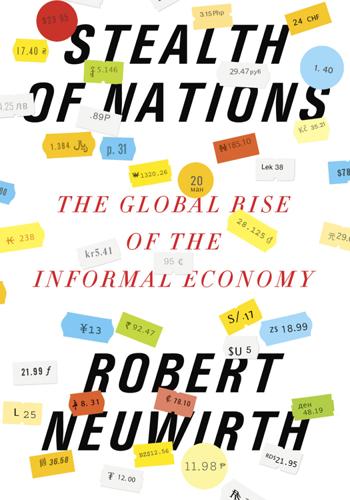
Stealth of Nations
by
Robert Neuwirth
Published 18 Oct 2011
Paraguay, small, landlocked, and long dominated by larger and more prosperous neighbors, has engineered a decent balance of trade through judicious System D smuggling. The world over, System D is synonymous with entrepreneurialism and employment. The global economy may be contracting, but System D is providing jobs. The digital divide may be a concern, but System D is spreading technology around the world at prices even poor people can afford. Squatter communities may be growing, but System D is bringing commerce and opportunity to these neighborhoods that are off the governmental grid. System D is distributing products more equitably and cheaply than any big company can.
…
Without this hyperactive System D marketplace, all of West Africa would be digitally deprived. Merchants in Alaba would not be able to e-mail or text their suppliers, dump pickers would not be able to afford a mobile phone, and merchants from across the continent would not be able to get low-priced laptops. Ikeja Computer Village, in short, is bridging the digital divide one sale at a time. The streets were a mixture of earth, trash, and motor oil pounded to a fine finish by thousands of footfalls. Barefoot men, bent almost double, tugged at hand trucks and grasped at the jagged nubs of snapped motor mounts to urge car engines over the greasy hummocks. One massive motor slipped on its dolly and pincered a man’s right hand.

Black Code: Inside the Battle for Cyberspace
by
Ronald J. Deibert
Published 13 May 2013
Cyberspace has become what researchers call a “totally immersive environment,” a phenomenon that cannot be avoided or ignored, increasingly embedded in societies rich and poor, a communications arena that does not discriminate. Connectivity in Africa, for instance, grows at some 2,000 percent a year. While the digital divide remains deep, it’s shrinking fast, and access to cyberspace is growing much faster than good governance over it. Indeed, in many regions rapid connectivity is taking place in a context of chronic underemployment, disease, malnutrition, environmental stress, and failed or failing states. Cyberspace is now an unavoidable reality that wraps our planet in a complex information and communications skin.
…
The UN ranks Somalia 181st out of 194 countries for life expectancy, a mere forty-eight years. But while the bursting cities of the developing world – flush with favelas, with streets that reek of diesel and are littered with garbage, with omnipresent poverty and crime just around the next corner – may seem inhospitable to the digital world, they are not. Although the digital divide still exists, it’s shrinking, fast: cheap and easy-to-use means of communication are as irresistible here as anywhere on Earth, and as digital networks approach 100 percent saturation in the global North, the South and East have become the next frontiers of rapid expansion. Somewhat counterintuitively, the persistent chaos, corruption, and crime might facilitate, rather than retard, their wider development.
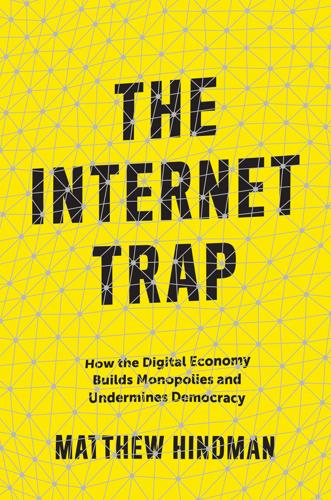
The Internet Trap: How the Digital Economy Builds Monopolies and Undermines Democracy
by
Matthew Hindman
Published 24 Sep 2018
Users prefer websites not just that they know, but that they know how to use. While brand-specific skills are a powerful force in many markets, the web provides an especially large role for brand-specific consumer learning. Evidence for the importance of user learning comes from many areas of scholarship, including longstanding work on the so-called “digital divide.” While early digital divide research focused on disparities in access, recent work has focused on large, and strikingly persistent, gaps in web users’ skills. In this area the work of sociologist and communication scholar Eszter Hargittai and her collaborators has been especially important. Even as the web has diffused widely, Hargittai and her coauthors have shown that many common tasks remain difficult for most users.70 Some have suggested that younger users will show fewer differences in digital skills, but the data has challenged these claims.
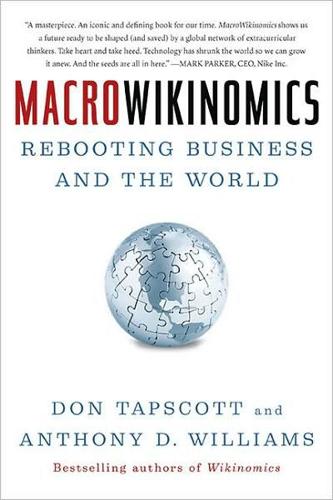
MacroWikinomics: Rebooting Business and the World
by
Don Tapscott
and
Anthony D. Williams
Published 28 Sep 2010
Initiatives like the Wikiversity from the Wikimedia Foundation represent a good start in creating a national and global platform for all scholars and learners to build the content required. But we need more entrepreneurs building interactive courseware for all disciplines and categories of human knowledge. Governments could help by investing in networks to build the access and broadband capacity required to close the global digital divide. The world needs a “Digital Marshall Plan.” Governments should terminate their subsidization of academic journals in libraries and shift funding to building the digital infrastructure. David W. Lewis, dean of the University Library at Indiana University–Purdue University Indianapolis (IUPUI), argues that scholarly communication is a public good and, as such, requires subsidy.
…
Both of these are basically impossible, even though everyone says they want to do it,” says Matthew Holt of consulting group Health 2.0. He argues that mass consumer demand or legislation can also be powerful forces causing private industry to change. To be sure, there are numerous other challenges. Setting aside the vanguard identified in this chapter, it will take time for some doctors to adjust to this notion. The digital divide is a problem. Unfortunately, not everyone has equal access to the Internet, and measures need to be taken that ensure low-income citizens have good access to broadband service in areas such as local community centers, drop-in centers, and libraries. Fear of litigation may discourage some physicians from committing their thoughts to paper on a medical record they don’t control, especially in the current litigious environment in the United States.
…
CEO Sam Palmisano believed so strongly in the concept that he committed up to $100 million to develop the ideas with the most social and economic potential.20 The World Urban Forum Secretariat didn’t have that kind of money to throw at urban sustainability initiatives, but through the courage and support of hundreds of organizations and individuals from around the world, the Habitat Jam broke down the barriers of language, literacy, disability, poverty, war, and the digital divide to enable over 39,000 people from 158 countries to begin a conversation that some say will change the world.21 The diversity of the 39,000 was impressive. Slum dwellers participated alongside government ministers, who participated alongside schoolchildren, who participated alongside leading academics.
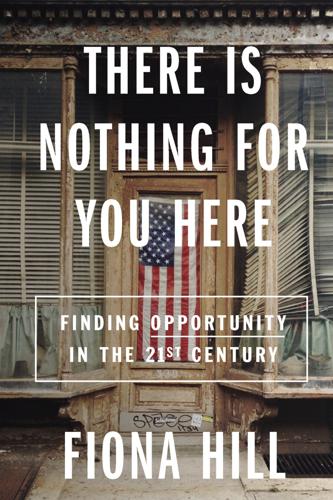
There Is Nothing for You Here: Finding Opportunity in the Twenty-First Century
by
Fiona Hill
Published 4 Oct 2021
But in practice, schools and children across the country did not have equal access to technology, including broadband, Wi-Fi, and personal computers. They became victims of the digital divide between the technological haves and have-nots. The new digital world and the role of big data and technology suddenly coalesced to form yet another obstacle to opportunity for disadvantaged kids. This played out in a remarkable fashion in the UK in the summer of 2020, when the COVID-19 pandemic wreaked havoc on the higher education prospects of the entire national cohort of working-class kids applying to college. The digital divide in this case was manifested not by inadequate technological hardware and bandwidth but rather by the ones and zeroes that flowed through it and the human biases that they channeled.
…
Many of my school friends didn’t bother with the job placement scheme because of the lack of options. In the United States, private-sector interventions could easily assist public-sector efforts at the local and state level in establishing larger internships and job placement schemes for schools. Big tech companies could help bridge the digital divide for schools in rural communities to access information about programs as well as online programming. Based on my family’s experience with the Durham Miners’ Association, labor unions and workers’ collectives have a role to play alongside private companies. Even though in the 1970s and 1980s it seemed like trade unions were fixated on nothing more than pay disputes and strikes, the older workers’ collectives like the DMA focused on creating dignity and respect in work.
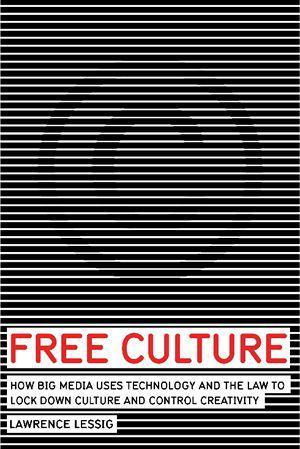
Free culture: how big media uses technology and the law to lock down culture and control creativity
by
Lawrence Lessig
Published 15 Nov 2004
If you know you were led through a film, the film has failed. Yet the push for an expanded literacy—one that goes beyond text to include audio and visual elements—is not about making better film directors. The aim is not to improve the profession of filmmaking at all. Instead, as Daley explained, From my perspective, probably the most important digital divide is not access to a box. It's the ability to be empowered with the language that that box works in. Otherwise only a very few people can write with this language, and all the rest of us are reduced to being read-only. "Read-only." Passive recipients of culture produced elsewhere. Couch potatoes.
…
Lipincott Company, 1956), 209. [7] See "Saints: The Heroes and Geniuses of the Electronic Era," First Electronic Church of America, at www.webstationone.com/fecha, available at link #1. [8] Lessing, 226. [9] Lessing, 256. [10] Amanda Lenhart, "The Ever-Shifting Internet Population: A New Look at Internet Access and the Digital Divide," Pew Internet and American Life Project, 15 April 2003: 6, available at link #2. [11] This is not the only purpose of copyright, though it is the overwhelmingly primary purpose of the copyright established in the federal constitution. State copyright law historically protected not just the commercial interest in publication, but also a privacy interest.
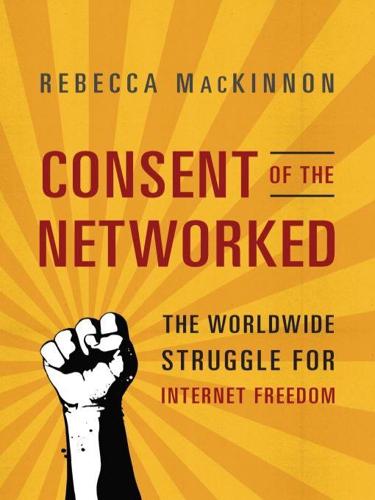
Consent of the Networked: The Worldwide Struggle for Internet Freedom
by
Rebecca MacKinnon
Published 31 Jan 2012
Many developing-world governments supported this plan because they have more power in the ITU, where all countries have equal voice, no matter whether they are represented by engineers or by diplomats who may or may not understand the technical complexities under discussion. At ICANN, the perspectives of Western engineers and Western companies have tended to dominate, especially in its early years—and those lacking technical understanding have been paid little attention. Despite recognizing that this digital divide does not serve the interests of developing-country Internet users, human rights and civil liberties groups from all over the world have been united in opposition to any plan to transfer control over critical Internet resources from ICANN to the United Nations. Such a move would empower governments that routinely practice political and religious censorship.
…
Though the IGF has no power to set policy or make binding decisions, it does provide a forum through which governments, companies, and NGOs from all over the world can identify common problems, disagreements, and solutions. Over the past six annual IGF meetings, many transnational “public-private partnerships” have emerged to handle issues like cyber-crime, the digital divide, and child protection. In his book Networks and States, Internet governance scholar Milton Mueller of Syracuse University argues that the IGF, if organized and managed well, has the potential to serve as a global “coral reef,” supporting a whole ecosystem of formal and informal “policy networks.”
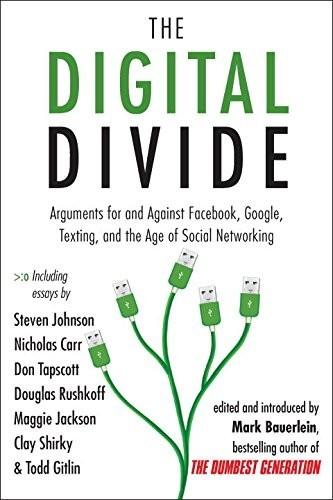
The Digital Divide: Arguments for and Against Facebook, Google, Texting, and the Age of Social Netwo Rking
by
Mark Bauerlein
Published 7 Sep 2011
Special books or book excerpts also can be created to fit specific needs. For details, write Penguin Group (USA) Inc. Special Markets, 375 Hudson Street, New York, NY 10014. Library of Congress Cataloging-in-Publication Data The digital divide: arguments for and against Facebook, Google, texting, and the age of social networking/edited and introduced by Mark Bauerlein. p. cm. Includes bibliographical references and index. ISBN : 978-1-101-54752-6 1. Digital divide. 2. Technological innovations—Social aspects. 3. Social networks. I. Bauerlein, Mark. HM851.D524 2011 2011019688 303.48’33—dc23 While the author has made every effort to provide accurate telephone numbers and Internet addresses at the time of publication, neither the publisher nor the author assumes any responsibility for errors, or for changes that occur after publication.
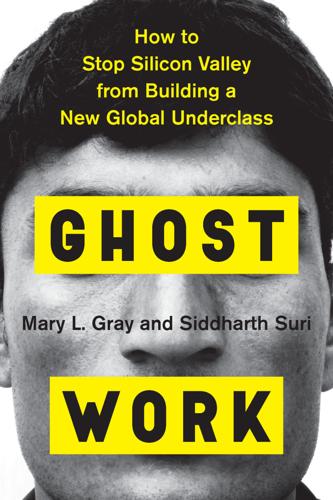
Ghost Work: How to Stop Silicon Valley From Building a New Global Underclass
by
Mary L. Gray
and
Siddharth Suri
Published 6 May 2019
Both LeadGenius’s and Amara’s success at fulfilling their double bottom lines tacitly depend on factors far outside of their control, namely, internet access and both basic computer literacy and a liberal arts education that equips people to think creatively and learn how to learn rather than recall facts that any computer can now store. It is true that far more people around the globe have access to the internet than ever before. At the same time, after 20 years of trying to close the divide between digital haves and have-nots, the mere presence of technology is not enough to level the playing field. The persistence of the digital divide and the digital inequalities that follow from it will become an even more pressing problem if the vast majority of participation in a global information services economy depends on three things: a stable internet connection, continuous access to educational resources, and the means to cover basic healthcare, sick leave, and family leave no longer provided by a single employer.
…
See on-demand employment crowdwork, xv D Danelle, 114–15 Daqri, 167–68 deadlines, artificial, 77 deaf and hard-of-hearing communities, xxix, 28, 152, 225 n29 DeepMind, xx, 220 n14 degrees. See college education demographics, on-demand employment Amara, 29 LeadGenius, 23–24, 224 n27 MTurk, 3–4, 10, 11, 126 UHRS, 18, 19 Upwork, 169 Department of Labor, 11, 168 design flaws, 91–93 Diane, 78–79 Dietterich, Tom, xx–xxi, 220 n15 Digital Divide, 162 disability captioning for, xxix, 28, 152–55, 225 n29 on-demand work perceived as, xxx employment, 113–17, 175 insurance for, 60 laws pertaining to, 237 n35 discrimination APIs, 172 collaboration, 135–37 digital access, 161–62 glass ceilings, 113–17 marital status, 53–54 skin color, 226 n3 slavery, 40–41, 226 n2 See also women disenfranchisement, 86 Disney, scheduling, 100 “dollars for dicks,” x DoorDash, 157–58, 162, 189 double bottom line, 140–65 Amara and, 153–55 defined, 141 by design, 148–52, 240 n9 Good Work Code, 156–58 overview of, 140–43 peer-to-peer sharing company, 155–56 platform cooperatives, 158–59 shortcomings of, 159–63 vs single bottom line, 144–47 social entrepreneurship and, 147 tragedy of the commons, 164–65 driver-partners (Uber), 145–46, 240 n5 Dynamo, 136–37 E Economic Policy Institute, xxv education college, xxix, 50, 97, 98, 101, 190 recommendations for, 190 requirement of, 10, 161–62 skill development, 110–13 for women, 114 See also training empathy, 184–85 employees.

The Cultural Logic of Computation
by
David Golumbia
Published 31 Mar 2009
Cambridge, MA: Harvard University Press. ———. 2007. Gamer Theory. Cambridge, MA: Harvard University Press. Warschauer, Mark. 2000. “Language, Identity, and the Internet.” In Kolko, Nakamura, and Rodman (2000), 151–170. ———. 2002. “Reconceptualizing the Digital Divide.” First Monday 7 (July). http://www.firstmonday.org/. ———. 2003. Technology and Social Inclusion: Rethinking the Digital Divide. Cambridge, MA: The MIT Press. Weaver, Warren. 1949. “Translation.” In Locke and Booth (1955), 15–23. ———. 1955. “Foreword: The New Tower.” In Locke and Booth (1955), v–vi. Weinberger, David. 2003. Small Pieces Loosely Joined: A Unified Theory of the Web.
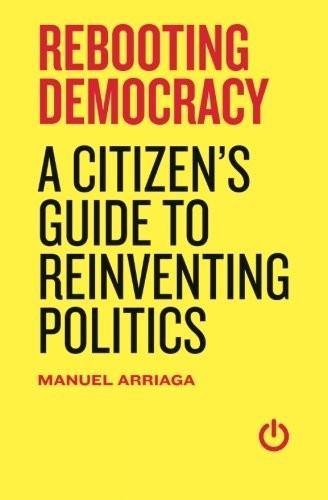
Rebooting Democracy: A Citizen's Guide to Reinventing Politics
by
Manuel Arriaga
Published 1 Jan 2014
His “Grant and Franklin Project,” named for the past US presidents whose faces appear on $50 and $100 bills, would see citizens receive a $50 or $100 tax rebate that they could use to fund political candidates or parties of their choosing. [xxiv] Obviously, any proposal along these lines would need to take into account the “digital divide,” which excludes significant parts of the population from accessing and sharing information online. [xxv] A referendum of this kind is often called an “abrogative” referendum. As in the previous chapters, the details matter: the required number of signatures needs to simultaneously balance the conflicting needs of (i) being high enough as not to make everyday governance impossible and (ii) being low enough so that the referendum acts as an effective check on politicians.
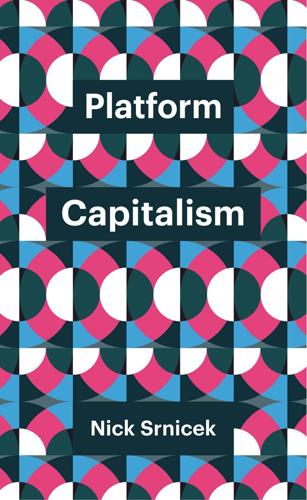
Platform Capitalism
by
Nick Srnicek
Published 22 Dec 2016
(Newspapers are currently grappling with a declining advertising stream; even The New York Times is forced to resort to services like meal delivery in order to gain revenue.)61 On this option, rent is extracted from the use of a service and, given the monopoly position of these platforms, alternatives remain out of reach. Combined with stagnant wages and rising inequality, this future depicts a world with a massively increased digital divide. Finally, in the event of a major cutback on advertising, these platforms could be forced to cut back on all extravagant spending on long-shot ventures (drones, virtual reality, driverless cars, etc.), and to return to their core businesses. The cross-subsidisation of these ventures would come to an end, as would their ability to compete with other major platforms.
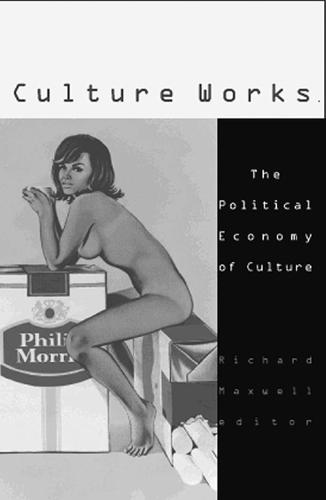
Culture works: the political economy of culture
by
Richard Maxwell
Published 15 Jan 2001
In 1999, North America possessed 64 percent of Internet host computers, and Europe had another 24 percent; there were more hosts in New York than in all of Africa.17 Seventy percent of all Web sites originated in the United States.18 English, which may be spoken by only 15 percent of the world,19 remained the overriding language of the Web, accounting for 78 percent of all sites and 96 percent of E-commerce sites.20 Of course, the quarter of the world that was illiterate was unlikely to find much use for the Web.21 Poverty and low telecommunications subsidies in much of the less developed world made Internet access seem far out of reach for the foreseeable future. The digital divide cut mainly between North and South, with most of the disconnected located in Latin America, the Middle East, India, and especially Africa, where the average Sierra Leonean would have had to fork over 118 percent of her year’s earnings for a month of Internet access.22 Dramatic regional disparities in access had emerged in Latin America, where about half of all Internet users were in Brazil, and Africa, where South Africans comprised almost all of the connected.23 Even in the United States, where 41.5 percent of households were connected in 2000, hype about the exponential spread of access hid gross and still growing inequalities along race and class lines.
…
McChesney, Robert W., Ellen Meiksins Wood, and John Bellamy Foster, eds. Capitalism and the Information Age: The Political Economy of the Global Communication Revolution. New York: Monthly Review Press, 1998. National Telecommunications and Information Administration. Falling through the Net: Defining the Digital Divide. Washington, D.C.: National Telecommunications and Information Administration, 1999. Schiller, Dan. Digital Capitalism: Networking the Global Market System. Cambridge: MIT Press, 1999. Webster, Frank, and Kevin Robins. Information Technology: A Luddite Analysis. Norwood, N.J.: Ablex, 1986. 220 The Web Notes 1.

#Republic: Divided Democracy in the Age of Social Media
by
Cass R. Sunstein
Published 7 Mar 2017
This is an exceedingly important debate, to be sure, but one that raises issues very different from those explored in this book.19 Nor will I explore the sharply contested question, in some ways related, of “net neutrality,” designed to level the playing field among communications providers. I will not be discussing the “digital divide,” at least not as the term is ordinarily understood. People concerned about that problem emphasize the existing inequality in access to new communications technologies—an inequality that divides those with and without access to the Internet. That is indeed an important issue, certainly domestically and even more so internationally, because it threatens to aggravate existing social inequalities, many of them unjust, at the same time that it deprives many millions (perhaps billions) of people of information and opportunities.
…
My focus will be on the distinctive cultural and political divides, across values and tastes, that are emerging in the presence of universal access—on how reasonable choices by individual consumers might produce both individual and social harm. This point is emphatically connected with inequalities, but not in access to technologies; it does not depend in any way on inequalities there. The digital divides that I will explore may or may not be a nightmare. But if I am right, there is all the reason in the world to reject the view that free markets, as embodied in the notion of “consumer sovereignty,” exhaust the concerns of those who seek to evaluate any system of communications. The imagined world of innumerable, diverse editions of the Daily Me is not a utopian dream, and it would create—is creating—serious problems from the democratic point of view. 2 AN ANALOGY AND AN IDEAL The changes now being produced by contemporary communications technologies are understated, not overstated, by the idea of the Daily Me.

Rise of the Robots: Technology and the Threat of a Jobless Future
by
Martin Ford
Published 4 May 2015
The most prominent digital optimists typically live at the extreme left of the long tail—or, even better, they’ve perhaps founded a company that owns the entire distribution. In a PBS television special that aired in 2012, inventor and futurist Ray Kurzweil was asked about the possibility of a “digital divide”—meaning that only a small percentage of the population will be able to thrive in the new information economy. Kurzweil dismissed the idea of such a divide and instead pointed to empowering technologies like mobile phones. Anybody with a smart phone, he said, “is carrying around billions of dollars of capability circa 20 or 30 years ago.”12 Left unsaid was how the average person is supposed to leverage that technology into a livable income.
…
See Defense Advanced Research Projects Agency (DARPA) debt deflation and, 217 financial crisis and, 218–219 income inequality and consumer spending, 214 ratio to income, 199–200 Deep Blue computer, xiv, 97–98, 122 deep learning, 92–93, 121, 231 Defense Advanced Research Projects Agency (DARPA), 80, 181–183 deflation, 216–217 Delta Electronics, Inc., 10 Delta Cost Project, 140 demand, 196–197 in China, 223–227 productivity and, 207–208 Democrats, income distribution preferred by, 47n design philosophy, 254–255 developing countries, 10–12, 25, 78–79 diagnostic tool, repurposing Watson as, 102–103 digital computer, effect of, 33–34 digital divide, 78 digital economy, long-tail opportunities in, 76–78 DiNardo, Courtney, 148 disruptive technology, xviii, 66 division of labour, 73 Dow News Service, 113–114 Drexler, K. Eric, 241–242, 243, 244–245, 246, 247 driverless cars, See autonomous cars drone-based delivery, 190n drug prices, 170–171 Drum, Kevin, 188 Dunning, David, 18–19 dystopian future, automation and predictions of, 31–32, 219–220 Earned Income Tax Credit (EITC), 271, 277 eBay, 16, 76 economic argument for guaranteed income, 264–267 economic growth, 65, 212–215 economic mobility, decrease in, 46–47 economic policy, 57–58, 217–218 Economic Policy Institute, 127, 158 economic recoveries, jobs created during, 49–50 economics, mathematical models and, x, 205–206 economic trends bear market for labor/bull market for corporations, 38–41 declining incomes and underemployment for college graduates, 48–49 effect of information technology on, 58–61 income inequality, 46–48 job creation, jobless recoveries, and long-term unemployment, 43–46 labor force participation, 41–43 polarization and part-time jobs, 49–51 stagnant wages, 34–38 economists on impact of automation, 60 on income inequality, 202–206 economy complexity of, 211–212 defined, 266n effect of climate change on, 282–283 post-scarcity, 247 e-Discovery software, 124 Edison, Thomas, 234 education basic income guarantee and, 263 collaboration with machines and, 121–128 diminishing returns to, 250–253 effect on income, 48–49 nature of unemployment problem and, 249–250 See also higher education educational robots, 7 edX, 132, 133, 137 Egypt, 46 EITC.
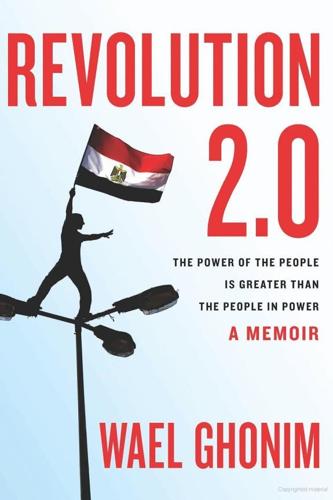
Revolution 2:0: A Memoir and Call to Action
by
Wael Ghonim
Published 15 Jan 2012
We celebrated this milestone. The Facebook page had become a resource powerful enough to compete with official media for readership. “Kullena Khaled Said” members, however, tended to be young, while the older citizens who influenced political events in Egypt remained far from our page. This gap, or “digital divide,” turned out to be useful later, when people started promoting the revolution. No officials were able to predict the size of the turnout. We were still a long way from that, though. In September 2010, the Khaled Said case was on hold and the Silent Stands had lost their appeal. We needed to find some other way to keep the members engaged and united and to continue pressing for change in Egypt.
…
See also Martyrs on Friday of Anger, [>] at Tahrir Square, [>], [>] Deming, W. Edwards, [>] Democracy façade of, [>] in “Kullena Khaled Said” page decision making, [>] under Nasser, [>] Safwat El-Sherif’s speech on, [>] Democratic Front, [>] Diab, Mohamed, [>], [>], [>], [>] Digital divide, [>] Discussion, encouraging, [>]–[>] Economic conditions, [>], [>]–[>] Education (in Egypt), [>]–[>] Education Sector Administrators’ Movement, [>] Egyptian, colloquial, [>] Egyptian army, [>]–[>], [>] demands for, [>], [>] on Friday of Anger, [>]–[>] support for protesters by, [>] and Tahrir Square attacks, [>] “Egyptian Conscience” blog, [>]–[>] Egyptian Movement for Change (Kefaya), [>]–[>], [>], [>] Egyptian people boosting hopes of, [>] changes in, [>]–[>] character of, [>], [>]–[>] dignity and beauty of, [>] empowerment of, [>] political opinions of, [>]–[>] post–Day of Anger activities of, [>]–[>] regime’s attitude toward, [>] and Tunisian uprising, [>] Egyptian State Security, [>]–[>] Abbas’s arrests by, [>] attempted brainwashing of author by, [>]–[>], [>] author’s arrest by, [>]–[>], [>]–[>] author’s interrogations by, [>]–[>], [>]–[>], [>]–[>] author’s 2007 encounter with, [>]–[>], [>], [>] bloggers arrested/harassed by, [>] changes in strategy of, [>] imams influenced by, [>] Jan25 arrests by, [>] manner of interrogation by, [>] media campaign of, [>] mission of, [>] monitoring by, [>]–[>], [>] al-Nagar’s arrest by, [>], [>]–[>] pressure on author from, [>] and protest of Khaled Said’s murder, [>] pseudonyms used by, [>] public loathing of, [>] Egyptian Sugar Cane Juice page, [>] Egyptian Women for Change, [>] Ehab, Ahmed, [>] Eisa, Mohamed, [>] Eissa, Ibrahim, [>] ElBaradei, Ali, [>], [>], [>], [>] ElBaradei, Mohamed Mostafa, [>]–[>] Al-Shorouk interview with, [>] author’s meeting with, [>]–[>] campaign progress of, [>]–[>] at Commander Ibrahim Mosque protest, [>] defamation campaign against, [>]–[>], [>]–[>] Facebook page promoting, [>]–[>], [>]–[>] February 2010 return to Egypt, [>], [>] and Friday of Anger, [>]–[>] interrogation of author about, [>]–[>] and Iraq weapons of mass destruction, [>] online questions for, [>]–[>] public image of, [>]–[>] as a savior, [>] at second Silent Stand, [>]–[>] security officers’ impression of, [>] state campaign to control, [>]–[>] and 2010 elections, [>] ElBaradei Facebook page, [>]–[>], [>] Ask ElBaradei feature on, [>]–[>] author’s lessening involvement with, [>] author’s public support on, [>] membership of, [>] opinion polls on, [>]–[>] “ElBaradei President of Egypt 2001” Facebook group, [>]–[>], [>], [>] “ElBaradei’s Seven Demands for Change,” [>]–[>], [>]–[>], [>], [>], [>]–[>] Elections rigging of, [>] of 2005, [>]–[>] of 2010, [>]–[>] voting for Khaled Said, [>]–[>] Electronic Committee (NDP), [>], [>]–[>], [>], [>], [>] ElGarhi, Muhamed, [>] Elshaheeed.org, [>] Emergency law (1958), [>] arrests under, [>] 1980 suspension of, [>] 2005 renewal of, [>] Emigration, [>] Emotional bond, creating, [>] Engagement as core concept of “Kullena Khaled Said” page, [>] encouraging, [>]–[>] at Google, [>] Esseily, Ahmed el-, [>] Expatriate Egyptians responses to revolution, [>] solidarity extended to, [>] Tahrir Square monitoring by, [>] Facebook government and media attack on, [>] government’s block of, [>], [>], [>] mistaken loss of anonymity on, [>]–[>] “My Name Is Khaled Mohamed Said” blocked by, [>] police officers’ use of, [>] pro-revolution accounts on, [>] suspension of “Kullena Khaled Said” page, [>]–[>] TV appearance discussion on, [>] Facebook events first Silent Stand, [>] Friday of Anger, [>]–[>] Friday of Departure, [>] “I will not protest on Friday,” [>] Jan25, [>], [>] second Silent Stand, [>]–[>] third Silent Stand, [>], [>] Facebook groups for April [>] strike, [>] Facebook pages vs., [>] supporting ElBaradei, [>]–[>] Facebook pages anti-Mubarak, [>] for ElBaradei (See ElBaradei Facebook page) Facebook groups vs., [>] “I Nominate Wael Ghonim to Speak on Behalf of Egypt’s Protesters,” [>] “Monitoring—2010 Parliament,” [>] “My Name Is Khaled Mohamed Said,” [>], [>]–[>] for Police Day, [>] pro-revolution, [>] for Khaled Mohamed Said (See “Kullena Khaled Said” Facebook page) supporting the Khaled Said cause, [>] for 2006–2007 strikes, [>] “We Are All Khaled Said” (See “Kullena Khaled Said” Facebook page) “Facebook Youth Campaign,” [>]–[>] Fadl, Bilal, [>] Farid, Eman, [>] Fattah, Israa Abdel, [>], [>], [>] Fear, [>], [>]–[>], [>], [>] Feedback, encouraging, [>]–[>] Fekry, Martina, [>] Fekry, Maryam, [>] Feky, Anas el-, [>] Fraud, [>], [>]–[>] Friday of Anger, [>]–[>], [>] aftermath of, [>], [>]–[>] event page for, [>]–[>] events of, [>]–[>] locations for, [>] promotion of, [>]–[>] Friday of Departure, [>], [>] Gamra, Mostafa Abu, [>]–[>] Gandhi, Mohandas, [>]–[>] Ganzoury, Kamal al-, [>] Gawab.com, [>]–[>] Ghazala, Mohamed Abu, [>] Ghoneim, Mohamed, [>] Ghonim, Adam (son), [>], [>], [>], [>] Ghonim, Hazem (brother), [>], [>], [>], [>], [>], [>], [>] Ghonim, Ilka (wife), [>]–[>], [>]–[>], [>]–[>], [>], [>], [>]–[>], [>], [>], [>]–[>], [>]–[>], [>]–[>], [>], [>]–[>], [>] Ghonim, Isra (daughter), [>], [>]–[>], [>], [>], [>]–[>] Ghonim, Wael activism’s effect on personal life, [>]–[>], [>] address at Tahrir Square, [>]–[>] Al Arabiya appearance of, [>]–[>] applying to Google, [>]–[>] arrest of, [>]–[>] attempted brainwashing of, [>]–[>], [>] children of, [>], [>] citizenship of, [>] CNN appearance of, [>], [>] early Internet use, [>] education in Egypt, [>]–[>] and ElBaradei’s campaign progress, [>]–[>] Facebook pages created by (See specific Facebook pages) family life of, [>]–[>], [>] father of, [>]–[>], [>], [>]–[>], [>] grandfather of, [>] imprisonment of, [>]–[>], [>]–[>], [>]–[>] Internet “addiction” of, [>] IslamWay website, [>]–[>] Jan25 farewell message to page members, [>]–[>] job at Gaweb, [>]–[>] job at Google, [>]–[>], [>]–[>], [>], [>], [>], [>], [>]–[>] job at NTG, [>]–[>] marriage of, [>]–[>] in MBA program, [>]–[>] meeting with ElBaradei, [>]–[>] mother of, [>], [>], [>], [>], [>], [>], [>] online marriage search, [>]–[>] political satire of, [>] post-Jan25 concealment of, [>]–[>], [>] release from prison, [>]–[>] religious faith of, [>] in Saudi Arabia, [>], [>], [>] search for, [>]–[>], [>], [>]–[>] TV appearance after release, [>]–[>] Twitter followers of, [>] 2007 encounter with State Security, [>]–[>], [>], [>] U.S. trip to donate IslamWay, [>]–[>] Giglio, Michael, [>]–[>] Giza, [>] Google, [>]–[>] author’s performance at, [>], [>] culture of, [>]–[>] interrogation of author about, [>]–[>] Middle East team of, [>]–[>] and search for author, [>], [>], [>]–[>] 2010 conferences with Arab web developers, [>] Google Groups “ElBaradei,” [>] for Friday of Anger, [>] GoogleModerator, [>] Government (Egypt) Facebook and Twitter blocked by, [>] Jan28 communication cut-off by, [>] Gamal Mubarak’s allies in, [>]–[>] response to Silent Stands, [>] State Security approval of appointments, [>] Green card lottery, [>], [>] Guardian, [>] Gumaa, Noman, [>] Hamas, [>], [>] Hegazy, El-Mostafa, [>] Heroes, [>], [>], [>]–[>], [>], [>] Hetta, Mahmoud al-, [>], [>] Hezbollah, [>], [>], [>] Hope, inspiring, [>], [>], [>]–[>] Howaidy, Fahmy, [>] Human rights as focus of Jan25, [>], [>] as focus of Khaled Said case, [>] Maher’s abduction/torture, [>] and Nadeem Center for Rehabilitation of Victims of Violence, [>] publishing information on abuses, [>]–[>] Khaled Said’s death, [>]–[>], [>] IAEA (International Atomic Energy Agency), [>] Ibrahim, Mohamed, [>], [>], [>] Ideas, viral spread of, [>] Image power, [>]–[>], [>].
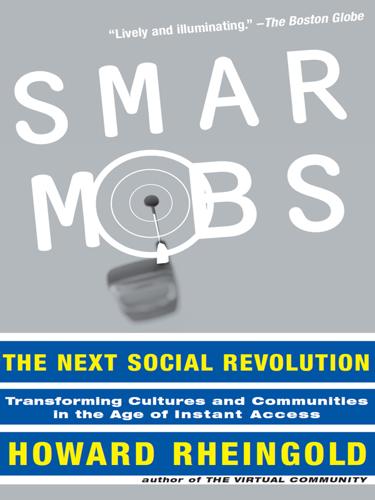
Smart Mobs: The Next Social Revolution
by
Howard Rheingold
Published 24 Dec 2011
As online events are woven into the fabric of our physical world, governments and corporations will gain even more power over our behavior and beliefs than large institutions wield today. At the same time, citizens will discover new ways to band together to resist powerful institutions. A new kind of digital divide ten years from now will separate those who know how to use new media to band together from those who don’t. Knowing who to trust is going to become even more important. Banding together, from lynch mobs to democracies, taps the power of collective action. At the core of collective action is reputation—the histories each of us pull behind us that others routinely inspect to decide our value for everything from conversation partners to mortgage risks.
…
I knew that he had written about the subject: “The modern city of office towers is as much an artifact of the invention of the telephone as the decentralization of manufacturing and residences to the suburbs.”68 Wireless Internet access points provided by NYCWireless in Washington Square Park in 2001 and Bryant Square Park in 2002 are changing the way the people who work in those neighborhoods go about their business—in ways that Townsend believes can be more convivial than constant confinement in cubicles. As an urban researcher, Townsend sees both opportunities and dangers. “The digital divide with location-based services,” he told a reporter in 2001, “is going to be about who controls the information about your community. When I go to Harlem, do I get information that’s created by the residents of Harlem, or by Yahoo! in Santa Clara, or by Verizon and the Yellow Pages?”69 Townsend believes swarming is already accelerating urban metabolism and that wide diffusion of mobile devices and citywide information structures has created new feedback patterns he calls “the real-time city.”
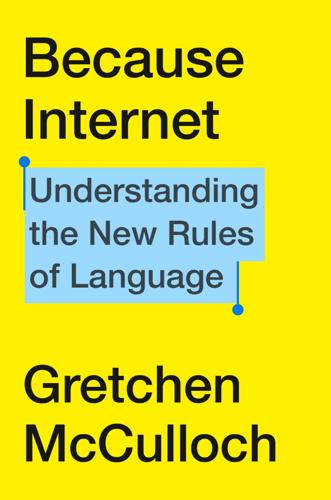
Because Internet: Understanding the New Rules of Language
by
Gretchen McCulloch
Published 22 Jul 2019
From an internet linguistics perspective, language variation online is important not so much because it’s new (language has always varied), but because it’s only rarely been written down. Literature favors a few elite languages and dialects, even though there are around seven thousand languages in the world and at least half of the world’s population speaks more than one language. So this glorious variety masks a digital divide: people who switch between languages or who speak a less written linguistic variety run into difficulties with many of the automated linguistic tools that internet residents rely on, such as search, voice recognition, automatic language detection, and machine translation. These tools are trained on large corpora, often from formal sources like books, newspapers, and radio, which are biased towards the forms of language that are already well documented.
…
between 2015 and 2018: Monica Anderson, Andrew Perrin, and Jingjing Jiang. March 5, 2018. “11% of Americans Don’t Use the Internet. Who Are They?” Pew Research Center. http://www.pewresearch.org/fact-tank/2018/03/05/some-americans-dont-use-the-internet-who-are-they/. more common among older people: Jessamyn West. 2016. “Solve the Digital Divide with One Neat Trick!” Presented at the New Hampshire 2016 Fall Conference and Business Meeting, November 3, 2016, Hooksett, New Hampshire. www.librarian.net/talks/nhla16/nhla16.pdf. Her role becomes as much: Jessamyn West. October 16, 2015. “Transcription: Jessamyn West, Technology Lady.” Medium. medium.com/tilty/transcription-jessamyn-west-technology-lady-6c6f5fefa507.
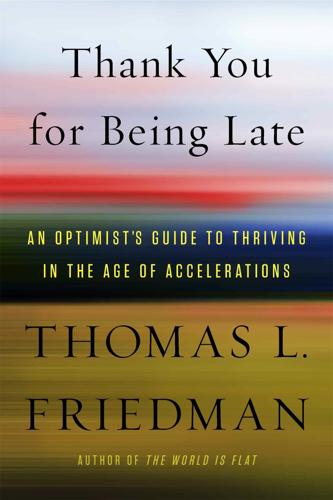
Thank You for Being Late: An Optimist's Guide to Thriving in the Age of Accelerations
by
Thomas L. Friedman
Published 22 Nov 2016
“When I walk into a subway and see someone playing Candy Crush [Saga] on their phone, [I think] there’s a wasted five minutes when they could be bettering themselves.” For more than a decade after the Internet emerged in the mid-1990s, there was much lamenting about the “digital divide”—New York City had Internet and upstate New York didn’t. America had it and Mexico didn’t. South Africa had it and Niger didn’t. That really mattered because it limited what you could learn, how and where you could do business, and with whom you could collaborate. Within the next decade that digital divide will largely disappear. And when that happens only one divide will matter, says Marina Gorbis, executive director of the Institute for the Future, and that is “the motivational divide.”
…
IBM ice sheets; shrinking of identity, proof of IEDs (improvised explosive devices) IEX illiteracy Ilulissat, Greenland Immelt, Jeff immigrants, immigration; diversity and; as entrepreneurs; into Europe; integration of; policy reform for imperialism, fading of inclusion, ethos of India; connectivity in Indian Institute of Technology Indonesia Industrial Revolution; Second inflection points; age of accelerations; year 2000; year 2007 information technology revolution infrastructure; in weak states innovation: in geopolitics; global flows and; in India; lag between consequences and; in Mexico; in post–post–Cold War geopolitics; as response to change; in social technologies; supernova and; see also education, innovation in; ethics, innovation in; politics, innovation in; software innovation; technological change; workforce, innovation in Institute for the Future integrated circuits; Moore’s law and Intel intelligent algorithms intelligent assistance; AT&T and; skill sets and intelligent assistants; education and; job seekers and; workforce and interdependence; in ecosystems; in financial flow; in geopolitics; healthy vs. unhealthy; of natural systems International Commission on Stratigraphy International Institute for Strategic Studies International Journal of Business, Humanities, and Technology International Organization for Migration International Rescue Committee Internet; cloud and, see supernova (cloud computing); digital divide and; GDP and; government policy on; mobile phones and; weak states and Internet of Things Internet of Things Foundry intuition, and detection of weak signals Invictus (film) Iorio, Luana iOS iPhones; AT&T’s gamble on Iran Iraq Iraq War Isbin, Sharon Islam Islamic State (ISIS); videos by Islamists Islamist terrorism isolation, as disease Israel Israeli-Palestinian War (1982) Istanbul Itasca Project Ixigo.com Jabr, Jumana Jacklin, Tony Jackson, Wes Jacobs, Irwin Jacobs, Jeff Jacobs, Lawrence Jacobs, Paul Japan Japanese Americans Jennings, Ken Jennings, Peter Jeopardy!
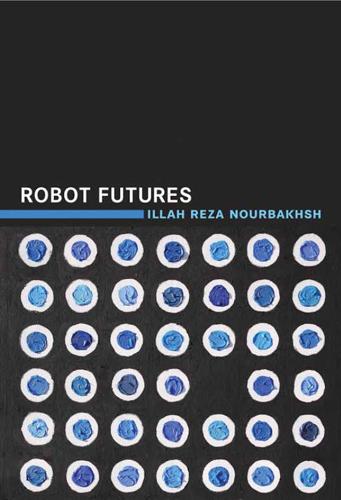
Robot Futures
by
Illah Reza Nourbakhsh
Published 1 Mar 2013
Robotics for community empowerment offers an exciting prospect for renewed democratic action because it enables local actors to reclaim power in a world where levers have been sucking power away from local citizenry: extremely concentrated wealth, corporate interests, technocratic specialization, short-sighted government politics, and the digital divide. New technology is easily misunderstood, and first uses of innovation can greatly guide its downstream applications by narrowing peoples’ imaginations and sense of personal investment (Gieryn 1999). How can society better comprehend the consequences of the robotics future and the ramifications of its uses?
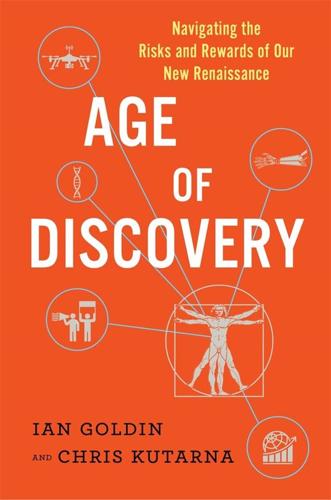
Age of Discovery: Navigating the Risks and Rewards of Our New Renaissance
by
Ian Goldin
and
Chris Kutarna
Published 23 May 2016
Globally, governments spend on average over $4,600 per pupil on public education; sub-Saharan Africa spends only $185—and that figure is up 15 percent from 1990.87 The shortfall makes it harder to roll out everything from the science against smoking, to savings accounts, to semiconductors, to the conviction that women and men are equal. Countries that have good education systems, do a lot of their own research and industry, and have the budgets to build supporting infrastructure can put new technologies and ideas to use much faster than countries that don’t.‡ The digital divide is a current case in point, with big social consequences. The Internet and mobile technologies help leapfrog barriers to information, education and communication. More than any other technology today, telecom infrastructure is progress. But it’s not equally available. The International Telecommunications Union (ITU) maintains a ranking of over 150 countries by their level of telecom infrastructure, including telephone and mobile penetration, household computer and Internet access, and wired and wireless broadband subscriptions.
…
The International Telecommunications Union (ITU) maintains a ranking of over 150 countries by their level of telecom infrastructure, including telephone and mobile penetration, household computer and Internet access, and wired and wireless broadband subscriptions. The top 20 countries—all in Europe, North America and high-income parts of Southeast Asia—boast abundant Internet bandwidth, high broadband penetration and more wireless subscriptions than people. On the other side of the digital divide, the bottom 20 countries—all African—still have limited (mostly dial-up) Internet access, few users, weak wireless broadband penetration and poor links to international data trunks. In all, the ITU identifies 39 “least connected countries,” home to 2.4 billion people, that fit this description.88 (Innovative solutions, like Facebook’s solar-powered drones and Google’s high-altitude balloons, may soon help Africa patch some of these gaps.)

A People’s History of Computing in the United States
by
Joy Lisi Rankin
By 1975, the 950 terminals on the nationwide PLATO network enabled “on-line” communication in the form of bulletin boards, instant messages, and electronic mail. PLATO users swapped jokes and stories every day on their online network, and they reveled in this new sociability. At the same time, they struggled with security, censorship, and harassment, and their interactions revealed a gendered digital divide. The Epilogue emphasizes the significance of the myriad connections among the students, educators, communities, and corporations in A P eople’s History of Computing in the United States. I contend that each of the computing communities described in previous chapters struggled with the transition from computing citizenship to computing consumption.
…
These citizens developed practices that are now integral to our modern digital experiences. PLATO people swapped jokes and stories on their online network, and they reveled in this new sociability. At the same time, they struggled with security, censorship, and harassment, and their interactions revealed a gendered digital divide. PLATO’s Republic (or, the Other ARPANET) 195 The first section analyzes how Lamont and her graduate student peer Stuart Umpleby reimagined PLATO as a political tool. Lamont’s and Umpleby’s work illustrates how PLATO authors pursued their own goals on the system, and how new communities coalesced around PLATO usage.

The Great Firewall of China
by
James Griffiths;
Published 15 Jan 2018
Understandably, this arrangement didn’t sit well with many other countries, particularly in Europe, where many internet pioneers were based and key technologies (such as the world wide web, the top layer of the internet and the one with which we interact most on a daily basis) had been invented. Around this time, preparations began for the United Nations World Summit on the Information Society (WSIS), a major international conference intended to help bridge a growing ‘digital divide’ between rich and poor countries.23 As the meeting neared, however, it became apparent that it would largely be a referendum on US control over the internet, with developing countries making it clear that “what was good for an internet with one million users would be not good enough for an internet with one billion users”.24 Washington fuelled this burgeoning resentment by declaring, in the run-up to WSIS, that the US intended to “maintain its historic role in authorising changes or modifications to the authoritative root zone file”.25 While few failed to recognise the historical success of the internet under US oversight, there was a legitimate fear that any country with unilateral control over the root could use it as a political weapon by, for example, deleting entirely the top-level domain for a given country or otherwise hampering its use.
…
Index Abbott, Tony, 203 acceptable criticism, boundaries of, 75 Access Now, 236 Adelaide, Australia, 206 Adkins, Heather, 169 Admiralty, camp, 19 Adobe, 170 Africa: China presence, 287–8; Huawei earnings, 304; internet in, 291; Xinhua success, 80 Agora, dark web, 100 Ahmadinejad, Mahmoud, 111 AI software, 200 Ai Weiwei, 170, 214 Albert Einstein College of Medicine, 38 Al-Assad, Bashir, 209 Al-Bashir, Omar, 291 Al-Ghanim, Mohamed Nasser, 231 Algeria, 230 Ali, Guzelnur, 195, 198 Alibaba, 200, 235, 242, 279; Alipay, 281; Taobao online marketplace, 210; Yahoo stake in, 67 Allawi, Ayad, 223 Alphabet, 315 Al Qaeda, 199 American Civil Liberties Union, 245 Amir-Ebrahimi, Masserat, 150 Amnesty International, 280 Andreessen Horowitz, 279 Angola, 289 Anhui province, 78 Anite, Evelyn, 303 Anonymous, 185–6, 188 Anti, Michael, 36, 93, 116 anti-Rightist Movement, Xinjiang avoidance, 133 anti-surveillance tools, 5 Antonov, Polina, 254–5 Antonov, Vadim, 253–4 Apple, 1990s faltering, 277 Applebaum, Jacob, 104–5 APT1, 186–7 Arab Spring, 8, 10, 264, 311 Artux, 132, 134 Asia-America Gateway, underwater cable system, 155 AsiaInfo, 31 Asiaweek, 54 Associated Press, 80 Aum Shinrikyo cult, 49 Australia, censorship, 315 Aximujiang Aimaiti, killing of, 146 Azat, Nijat, 157 baby formula scandal, 204 Badiucao, 175, 178–9, 184, 204–5, 207–8, 211–12, 215; smear attempts, 214; ‘traitor’ accusation, 210; Weibo account deleted, 206 Baidu, 4, 63, 171–2, 242, 260; Baike web site, 210; market share growth, 126; party members, 235; patriotism boast, 124; search engine, 165 balinghou generation, 204 Bandurski, David, 212 Bardin, Valery, 253, 255–6 Barlow, John Perry, 6, 243, 246; utopian language, 7 Barlow, Norman, 243 Barr, Aaron, 185–6, 188 Bastrykin, Alexander, 251 Beach, Sophie, 212 Beidaihe, China resort, 47, 89 Beijing, 29; academia elite circles, 134; Beihang University, 234; Engagement Centre ICANN, 234; jamming signals, 107; Medical University, 37; Niujie mosque, 138; Youth Daily, 73 Berners-Lee, Tim, 252 Besigye, Kizza, 292–3, 295–6; ‘preventative arrest’, 298; treason charge, 299 Big Vs, 180 Bijie, 95 Bildt, Carl, 223 Bingtuan, 134 BitTorrent, 5 Blocked on Weibo, 183 blogging, 93 Bloomberg, 80 Bluetooth, communication use, 19 Brand, Stewart, 244 Brautigam, Deborah, 290 Brin, Sergey, 62–3, 116, 119, 168, 315; family history, 171 Brito, Jerry, 229 broadband connection, 155 Brown University, USA, 85 Burkina Faso, 288 Burkov, Dmitry, 253 Bush, George W., 110, 246 BuzzFeed, 199 Charlie Hebdo, attacks on, 209 Callahan, Michael, 119 Cambridge Analytica, 313, 317 Cambridge University, 162 Canada, 232; Tibet Committee, 85–6 Cankao Xiaoxi, 36 Cao Guowei, 182–3 Carnegie, Dale, 117 Cartoonists, persecution of, 209 Catalonia, 2017 referendum, 316 Causeway Bay, camp, 19 CCTV International, 287 censorship: AI-based, 315; anti-tools, 102–3; in-house, 183; manual, 75; software, 101 Cerf, Vint, 221, 228 CERN, 252 Chan, Connie, 279 Chen Jieren, 171 Chen, Kathy, 312 Cheney, Dick, 243–4 Cheng Jianping, 74 China, People’s Republic of, 137, 204; Academy of Sciences, 49, 51; Africa criticism Western hypocrisy, 290–1; Africa investments, 305; censorship, 27; Central Television, 181; Civil Aviation Administration, 310; courts conviction rates, 198; cyber sovereignty doctrine, 8, 234, 292; cybersecurity law 2017, 280; Cyberspace Administration of, 3; Democracy Party, 41–2, 92; Development Bank, 304;domestic security profits, 201; early internet enthusiasm, 32; elite, 90, 117; elite hackers, 172, 192; entertainment industry, 215; factory sexual harassment, 145; first commercial internet service, 25; globalised online influence, 212; Google compromised, 315; high-speed rail system, 176–7; human rights lawyers, 206; internet companies overseas business, 236; Internet Network Information Centre, 235; Internet Society of, 64; Ministry of Foreign Affairs, 165, 167; Ministry of Public Security, 26; National Electronics Import & Export Corporation, 303; National Defence Daily, 153; nationalised internet, 231; Netcom Communications, 31–2; official aid budget, 289; PLA, see below; Qigong Science Research Society, 48; Qing Empire era, 205; social credit system, 281–3; State Council, 42, 11, 181, 241; tech firms security contracts, 200; Telecom, 30–1, 156; telecoms buying, 30; 2008 Olympics, 180; UN advocacy, 233; Unicom, 156; US Embassy in, 180; -US relations, 109; WTO joining, 91, 92; Youth Daily, 64, 172 China Digital Times, US-based, 76 ChinaNet, 30 Chinese Communist Party (CCP), CCP, 8, 42, 74, 288; internal politics, 312; Politburo Standing Committee, 165 Chinese Golden Shield, 104 Chinese Institute of Computer Applications, 24 Chinese People’s Political Consultative Conference, 77 choke points, China internet, 29 CIA (US Central Intelligence Agency), 85, 161; Q-Tel venture capital arm, 108 circumvention tools: Tor, 101; user lack, 71 Cisco, 29, 32, 115, 119, 236, 304; basic filtering technology, 32 Citizen Lab, 159–60, 163–4, 276 Civic Square, Hong Kong, 15, 17, 20; pro-democracy rally 2014, 16 ‘civilized behaviour’, as censorship, 240 Clarke, Ian, 99 Clinton, Bill, 43, 246; China internet optimism, 42 Clinton, Hillary, 173, 211, 264 CNET.com, 84 CNN, 56–7 Coca Cola, 187 Cohen, Jared, 111 Cold War, 106 collective action, China surveillance attention, 74 Columbia Law School, 241 Comey, James, 190–1 Comment Crew, 187 Communications Decency Act, USA, 245 Communist Youth League, 171 “Complete IT Intrusion Portfolio”, 293 Confucius Institute, 288 Connaught Road camp, Hong Kong, 17 Contemporary Business News, 64 Crimea, Russian invasion, 267 CQRS, 49 Crowley, P.J., 111 Cuba, 237 Cultural Revolution, 8, 23, 24, 48, 176, 205; Xinjing avoidance, 133 ‘cyber-sovereignty’, China doctrine, 8, 234, 237–8, 242, 250 Cyberspace Administration of China, 181 Da Cankao, 35–6, 79, 91, 93, 97; back issues, 100; defeat of, 92; first issue, 39 Dalai Lama, 84–5, 87, 160, 206, 309; office hacked, 162 Darfur, 291 Deibert, Ron, 159–60 Delta Airlines, 309 Democracy Forum, 65, 66 Democratic National Committee, Russian hacking of, 192 Demos/Relcom, Russia, 252–3, 255–6 Deng Xiaoping, 21–4, 47, 89; martial law declaration, 37 Dharamsala, 85–8, 160, 163, 276; internet, 84, 160 ‘digital divide’, 222 Dilshat Perhat, 150 Ding, James, 30–1 DIT, Broadcasting Board of Governors, 108 Diyarim.com, 150–1, 157 Djibouti naval base, 289 domain name system (DNS), 220 Dorsey, Jack, 111 dot.com bubble, first, 84 Dourado, Eli, 228–32 Dow Chemical, 170 Dow Jones, 81 Downey, Brandon, 314 Dreazen, Yochi, 110 DropBox, 276 Drummond, David, 61–2, 171 Dunhuang, 154 Durov, Pavel, 259–63, 265–6, 268–9, 272; Dubai exile, 270; flight, 267 Dynamic Internet Technology, 104, 106–7; Broadcasting Board of Governors, 108 DynaWeb, 101–2; Foundation, 106 Dzungaria, 136 ‘East Turkestan’, 136, 149; question of, 152 Eastern Buddhas Study Falun Dafa Association, 97 Education Computer Resource Centre, India, 86 Egypt, 230–1; Twitter, 264 Eiffel Tower, website crash, 2 Electronic Frontier Foundation, 244–6 elite, Chinese, 90, 117 email address grabbing, 35 encryption, 268–9 Epoch Times, 96–8 Epstein, Helen, 297 Ethiopia, 10, 289, 304 EU (European Union), WSIS stance, 223 Eudora, 88 Eximbank, 288 Facebook, 18, 242, 264, 282, 286, 297, 301, 303, 312–13, 317; banned, 183; censoring by, 314; Firewall blocked, 259, 278; Internet.org, 291 ‘fake news’ panic, 311, 314 Falun Gong, 9, 28, 45–6, 49, 59, 62, 91, 96, 102, 107–8, 112, 118; anti- campaign, 48, 58; blocking of, 99; China mass detentions, 54; community, 103; CRQS withdrawal, 51; members self-immolating, 56; -neoconservatives link, 98; North America shift, 96–7; online censorship, 55; origins, 47 Research Society, 54 FalunDafa.org, 97 Fang Binxing, 249–50 FBI (US Federal Bureau of Investigations), 186, 190–1 FDC (Forum for Democratic Change, 294–6, 300 Ferzat, Ali, 209 filters, border, 29 financial crash 2008, 8, 289 FinFisher, 293, 294 FireChat, 19 FireEye, 192 foreign media coverage, importance of, 255 France, Rwanda Hutu aid, 291 Freedom House, 104 FreeGate, 95–6, 103, 105, 107–9, 110, 112–13; successful, 104; user-friendly, 102 FreeNet China, 99, 101; 2001 launched, 100 freetibet.org, 163 Friedman, Tom, 90, 246 Friendster, 260 Friends of Tibet, 308 FSB, Russia, 265–6, 269 Fuyou Street, Beijing, 45 Gaddafi, Muammar, 290 Gallagher, Ryan, 314 Gamma Group, 293 Gang of Eight, USSR, 254–5 Gauthier, Ursula, 199 George Mason University, 228 Geshe Sopa, 84 Ghost Remote Administration Tool (Gh0st Rat), 162–3; hackers, 164 Gilmore, John, 244 Github, DDos attack, 1–4, 310 global governance, cycles of, 236 Global Internet Freedom Consortium (GIFC), 102, 110; funding boom, 109; projects, 112 Global Internet Inc, 106 Global Times, 172 GoAgent, 5, 6 Golden Shield project, 26–7, 91 Goldsmith, Jack, 30, 219, 243 gongfu, Chinese martial art, 48 Google, 64, 113; 2002 blocked, 91, 2006 China attitude, 115, 2009 accusations, 167, censorship compliance, 118, censorship reversal, 172, China ‘foreignness’ accusation, 125, China blocked, 166, China brand, 117, China cultural errors, 126, China operating, 116, China strategy, 119, Chinese-language search engine, 62, Congressional hearing, 120, 124, cultural mistakes, 125; Dragonfly, 314, Google China, 61, 62, 165, 246; Google Drive, 162; hacked, 168, Schrage accusation, 121, shareholder critique, 168, US criticism, 173, US media criticism, 115 Google.cn search engine, 117 Gorbachev, Mikhail, 75, 173, 252, 255–6; KGB detained, 253 Gordon, Richard, 176 Gore, Al, 31 government commentators employed, 213 Grateful Dead, 244 Great Cannon, China cyber weapon, 3–4 ‘Great Firewall’, 5, 8, 9, 26–7, 29, 43, 46, 58, 66, 71, 90, 92, 99, 101, 107, 112, 117, 159, 199, 207, 242, 311; Cisco help, 116; costs of fighting it, 106; export of, 10; Google brief ejection, 124; international spreading of, 310; keywords detection, 28; Kremlin copy, 260; Uganda import, 287; upgrading of, 92; US components, 30 Great Hall of the People, 23 Great Leap Forward, 8, 138; Xinjiang avoidance, 133 Great Wall, historical, 25 GreatFire.org, 3–4 ‘Green Dam Youth Escort’, 27, 98 Greenwald, Glenn, 268 Group of 77, 237 Gu Ge, name error, 125 see also NoGuGe Guangdong, 143, 201 Guangxi, 78 Guangzhou, 29 Gulf of Aden, 289 Guo Wengui, 92 Guomindang, 49 Guonei Dongtai Qingyang, 79 Haig, Dan, 83–4, 86–8, 160 Hainan, Lingshui: signals intelligence, 164; servers in, 163 ‘Harmony’ CCP-speak, 72 Harris, Rachel, 151 Harvard, 71, 74, 91; Law, 244 HBGary Federal, 185–6; hack, 188 He Guoqiang, 171 He Zuoxiu, 49 Hefei, anti-corruption case, 280 Hinton, Carma, 176 Hitchens, Christopher, 49 Hoglund, Greg, 186 Holder, Eric, 189 Holdstock, Nick, 137, 149 home routers, 217 Hong Kong: Admiralty, 18; Broadband, 155; Chinese University, 217; Civic Square, 15; independence discussions, 20; Internet Exchange, 217–18; parliamentary elections, 19; Science Park, 200; 2014 effect, 19; Umbrella Movement, 255 Horowitz, Michael, 107, 109 hosts.txt file, 219 HP corporation, 245 Hsu, Stephen, 108 Hu Jintao, 184 Hu Qiheng, 234 Hu Yaobang, 21 Huai Jinping, 234 Huang Cuilian, 145 Huang Shike, arrest of, 280 Huang, Alan, 102 Huawei, 251, 288; military ties, 235; Uganda censorship profits, 304 Hudson Institute, 107 Human Rights in China, New York, 76 Human Rights Watch, 147, 234 Hvistendahl, Mara, 281 IBM Nazi Germany connection comparison, 119, 122–3 ICANN see Corporation for Assigned Names and Numbers Ilham, Jewher, 141, 195–8 images, censorship challenges, 208 India, blackouts, 87 Indiana University, 195–6 Infocom, 222; prosecution of, 223 Inner Mongolia massacre, 133 Instagram, 309, 316 intellectuals, anti-qigong, 49 International Centre for Human Rights and Democracy, 30 International Criminal Court, 299 international telecommunications, access as human right, 232 internet: access points, 28; Africa blackouts, 10; China war on, 6; Chinese characters, 31; construction control, 156; content providers government registration, 72; founders, 219; governance, 225, 228; intergovernmental control, 223; unwritten rules, 72; US control conflict, 222; utopianism, 245; workings of, 155 Internet Assigned Numbers Authority, 219, 222 Internet Corporation for Assigned Names and Numbers (ICANN), 221–5, 228, 230, 256; China influence, 234; China pushing, 237 Internet Engineering Task Force (IETF), 234 Internet Explorer browser, 169 Internet Governance Forum, 224 Internet Society of China, 234–5 IP server connection, 28, 155; addresses workings of, 154; numbers, 219 Iran, 111; Green revolution, 311; social networking blocking, 111; 2009 election protests, 110, 112, 246 Iraq: US invasion of 2003, 223; Uyghur fighters, 199 ‘iron rice bowl’ jobs, 47 Isa, Aziz, 151 Islamic State, 199; internet use, 9; Paris attacks, 269 Islamists, 195 Israeli intelligence, 190 Jacobs, Justin, 137 Jiang Qing, 133 Jiang Zemin, 32, 78, 90–1, 184 Jiangsu province, 74 Jiao Guobiao, dismissal of, 95 Jilin, China, 47–8 Jobs, Steve, 117, 259 Jones, Roy, 307–9 Kadeer, Rebiya, China riots blame, 152 Kaifu Lee, 116–17, 124–6, 165–6, 171–2; government fights, 167; Making a World of Difference, 118 Kalathil, Shanthi, 236 Kang Xiaoguang, 54 Kapor, Mitch, 244 Kaspersky Labs, Moscow, 192 keywords, 184; Chinese language filtering, 208; detection, 28 KGB/FSB (USSR/Russia), 256–7, 265–6, 269 Kirillovich, Vladimir, 249 Kiselyov, Dmitry, 247 Kissinger, Henry, 108 Kleinwächter, Wolfgang, 223 Kot, Edward, 264–5 Kramer, Terry, 228–9, 232–3 Kremlin, deep packet inspection, 266 Kristof, Nick, 46 Krumholtz, Jack, 122–3 Kryuchkov, Vladimir, 253 Kurchatov Institute of Atomic Energy, 252, 256, 261 LAN protocols, 241 Lantos, Tom, 122 Leach, Jim, 120; censorship accusation, 121 Leavy, Penny, 186 Leo Technology, Urumqi-based, 200 letter substitutions, 107 Leung Chun-ying, 19 Leviev, Lev, 267 Levy, Stephen, 118 Lhasa, 85 Li Chang, 54 Li Changchun, 165–6, 171 Li Dongxiao, 178 Li Gang, 5 Li Hongkuan, 35–6, 38–9, 79, 91–3, 99 Li Hongzhi, 47–50, 53–6, 96–7, 99, 103; books banned, 46; teachings of, 52; USA move, 51 Li Keqiang, 240 Li Peng, 26, 42; martial law declaration, 21 Li Yuanlong, 95; son’s arrest, 96 Li Zhi, 148 Li, Robin, 124–6, 172 Lin Hai, 39 Link, Parry, 73 Liu Xiaobo, 66, 198 LiveJournal, DDoS attack, 264 Lo, Kenneth, 217–18 Lockheed Martin, 187 Lokodo, Simon, 304 love bug, 161 Lu, Phus, 5–6 Lu Wei, 78, 80–1, 207, 237, 242, 249, 312; downfall of, 313; promotion, 181; rise of, 79 Luo Fuhe, 77 Ma Zhaoxu, 173 Ma, Jack, 67 Ma, Pony, 280 MacArthur Genius Grant, 76 MacKinnon, Rebecca, Consent of the Networked, 72 Mail.ru, 267 Makanim.com, 149 Makerere University, 295, 300 Malofeev, Konstantin, 248–51 malware, 162; specialised, 163 Mandiant, malware, 186, 188–90 Manitsme, malware family, 188 Manning, Chelsea, 229; defence fund, 186 Mao Zedong, 184, 240; Anti-Rightist campaigns, 205; death of, 23; Great Leap Forward, 89 Marczak, Bill, 3 Marriott Global Reservations Sales and Customer Care Centre, 307–8; China apology, 309; Chinese language website, 308 Martínez, Antonio García, 317 mass mailings, 103 May Fourth Movement, 176 McLaughlin, Andrew, 117 Medvedev, Dmitry, 263 melamine, contaminated, 204 Messi, Lionel, 278 Micek, Peter, 236 Microsoft, 115–16, 119, 245 Millward, James, 133, 137 Minghui.org, 97 Ministry of Industry and Information Technology, 235–6 Minzu Iniversity, 134 Mirilashvili, Vyacheslav, 260, 267 MIT Media Lab, 243 mobile payments, 279 Moma, Google intranet, targeted, 169 Mong Kok, camp, 19 Montreal, 85 Morozov, Evgeny, 110 Mountain View Google HQ, 116, 169 Mugabe, Robert, 285, 290 Murong Xuecun, 205 Museveni, Yoweri, 285, 287, 292–3, 296–8, 300, 301–3, 305; Kampala opposition, 286; 2016 swearing in, 299 Museveni, Janet, 286 MySpace, 260 Nagaraja, Shishir, 162 Nairobi, Chinese language signs, 288 Namubiru, Lydia, 305 Nanfang Daily, 64 Nanjing, 36; University, 212 Nasa, Goddard Space Flight Center, 99 National Endowment for Democracy, 92, 108 National Reconciliation Day, 158 nationalism, Chinese, 8 Navalny, Alexei, 263–5 Negroponte, Nicholas, 243 Network Solutions, 220–1 New Tang Dynasty Television, 97 Newland, Jesse, 2 Ng, Jason Q., 183 Nigeria, 232 Noah, Trevor, 302 NoGuGe.com, 126 non-aggression, cyber pact, 251 Northrop Grumman, 170 Nossik, Anton, 257, 262 Nur Bekri, 146, 148 Nureli, 157 Nyanzi, Stella, 286–7, 303, 305; imprisoned, 301–2; Stella, persecution of, 300 Obama, Barack, 157, 165, 191, 228, 246; ‘pivot to Asia’, 192 Obote, Milton, 292; overthrow of, 285 Occupy movement, 9 Office of Personnel Management (OPM), 190, Chinese hacked, 191 “Operation Fungua Macho”, 293 Ownby, David, 55, 98 Page, Larry, 116, 168, 171 Palmer, David, 50 Palmer, Mark, 107–9 Pan Shiyi, 180–2 Pan Yiheng, 177 Panama Papers, 251 ‘patriotic hackers’,161 peer-to-peer software, Chinese, 101 Pegasus, early email software, 86 Pentagon, the, 161 perestroika, 75 Perhat, Dilshat, 157 Pfeifle, Mark, 110 Philippines, 161; China boycotts call, 77 Piccuta, Dan, 165–6 Pirate Bay, file-sharing website, 185 PLA (Chinese People’s Liberation Army), 22, 37, 132, 240, 242, 251, 312; Third Technical Department, 164; US indictment, 189 pornography, 91, 105–6 Postel, John, 219, 221–2, 228; ‘benevolent dictator’, 220 Press, Larry, 254–5 Prophet Muhammed, image forbidden, 209 proxies: sharing of, 102; use of, 101 ‘public opinion channellers’, 214 ‘public order’, CCP-speak, 72 Public Pledge on Self-Discipline for the Chinese Internet, 64 Public Security Bureau, 149 Putin, Vladimir, 228, 247, 249, 251, 257, 262–6; internet concern, 261 qigong, 55; enthusiasm for, 47; groups, 50 masters’ absurd claims, 49; opinion shift against, 48 Qin Yongmin, 42 Qin Zhihui, arrest, 182 Qing Gang, 35 QQ, 182, 277 Qzone, 182, 278 Radio Free Asia, 106, 147, 248, 311 Rajagopalan, Megha, 199 Rand Corporation, 192 Razak, Najib, 209 Reagan, Ronald, 248 Rebel Pepper, 212, 215 Red Guards, 133 Reincarnation Party, 209 Relcom see Demos/Relcom Ren Zhengfei, 251 RenRen, 182 Reporters Without Borders, 64 Republic of China (ROC/Taiwan), 288 Reuters, 80–1 RFA, 108; 1994 launch, 107 riots, Urumqi, 148 ‘River Elegy’, TV programme, 20 Robinson, Michael, 30–2 Roldugin, Sergei, 251 root authority, 201 rootkit.com, 186, 188 Rosenberg, Jonathan, 117 Roskomnadzor, 266, 269, 270 Ross, Alec, 264 Rossiya Segodnya, 247–8 RSA, hacked, 187 RT, TV station, 247, 311 Runet, 257, 270 Russian Federation, 10, 237; early years of, 256; FAPSI, 257; firewall urgency of, 251; internet blacklist, 266; internet use surge, 257; liberal internet era, 262; Libertarian Party, 272 nationalised internet, 231; Safe Internet Forum, 248; 2012 election protests, 251 Sadikejiang Kaze, killing of, 146 Safe Internet League, 249–50 Safe Web, Triangle Boy, 108 Sakharov, Andrei, 270 Salkin.com, 157 Samdup, Thubten, 85–6, 160 Saudi Arabia, 230 Saulsbury, Brendan, 190 Schmidt, Eric, 116, 124, 127, 168; China strategy support, 126; Google outvoted, 171 Schneider, Rick, 87 Schrage, Elliot, 120–4 ‘secret backdoors’, 162 Seldon, Tenzin, 170 self-censorship, Google justification, 120 self-immolation, 58 SenseTime, 200 Sha Tin New Town, Hong Kong, 217 Shambaugh, David, 233 Shanghai, 29; Cooperation Organisation, 251; Cyberspace Administration, 308; European Jews haven, 205; Expo 2010, 180; police computer security, 35 Shaoguan incident see Xuri Toy factory Shchyogolev, Igor, 248, 250 Shen Yun, performance group, 97 Shenzhen, 143; public security bureau, surveillance division, 72–3 Shi Caidong, 51–3 Shi Tao, 64–5 67, 76, 116, 119; prison sentence, 66 Sichuan province, 201 Siemens BS2000 mainframe computer, 24 Signal, encryption app, 268 Silicon Valley, 1; biggest companies, 59; private enterprise victory, 7 Silk Road, dark web, 100 Sima Nan, 49 Sina Weibo, 182–3, 278; censors at, 75 Sino-Soviet split, 288 Sither, Lobsang Gyatso, 276–7, 283 Smirnov, Sergei, 266 Smith, Chris, 115 Smith, Craig, 90, 309 Snapchat, 260 Snowden, Edward, 190, 268, 269; revelations of, 313 Sobel, David, 245 social media, companies, 7 Soldatov, Alexey, 256, 261 solidarity: surveillance attention, 74; threat of, 10 Solzhenitsyn, Alexander, 5 Song Zheng, 235 South China Sea: Chinese ambitions, 192; international court ruling, 77 spammers, trading among, 39 ‘spear-phishing’, 159, 187 ‘spiritual pollution’, 35 Sprint, 30–1 St Petersburg: briefcase bomb 2017, 269; State University, 260 Stanford Research Institute, 220 State Commission of Machine Industry, 24 Steve Jackson Games, 245 Stevens, John Paul, 245 Students for a Free Tibet, 170 Stuxnet virus, 190 Sudan, 230, 290 Sullivan, Andrew, 110 Sulzberger Jr, Arthur Ochs, 89–90 supremacist ideology, Han, 133 Surkov, Vladislav, 262–3 Sweden, 232 Symantec, 108, 170 Syria, Uyghur fighters, 199 System of Operative Search Measures, Russia, 257 Taiwan see Republic of China Tanzania, 288; Tan–Zam railway line, 287 Tarim Basin, 136 Tarnoff, Ben, 317 tear gas, 18 tech giants, collaboration accusation, 119 techno-libertarians, 243, 246 Telegram app, 268, 272; banned, 269; blocked, 270 Tencent, 182, 235, 279, 281–2; data hoovering, 280; leg up, 278; WeChat, 277; Weibo, 278 The Atlantic, 110 The Gate of Heavenly Peace, subtitled version, 176 The New Republic, 110 The New York Times, 3, 89–90, 100, 111, 179, 211, 223, 257 The People’s Daily, 21, 79, 172, 178, 246 The Wall Street Journal, 110, 309 The Washington Post, 57, 110, 302 Third World Academy of Sciences, 24 Tian, David, 99 Tian, Edward, 30–1 Tiananmen Square, 9, 21, 25, 46, 62, 99, 175; anger, 38; crackdown, 89, 107; massacre, 22, 26, 3, 208; massacre 20th anniversary, 166; Mothers, 65; movement, 20, 76; Papers, 100; protests, 78; self-immolation, 56–7; Tianjin protest, 52–4 Tibet, 83–4, 98, 106, 138, 149, 210; Action Institute, 274, 276; Computer Resource Centre, 86, 161; diaspora battling cyberspies, 276; Freedom Movement fund for, 163; Institute of the Performing Arts, 85; PLA victory, 85; Youth Congress, 85 Tohti, Ilham, 132, 134, 140–1, 143, 150, 152, 158, 195, 199; detention, 157; father killing, 133; harassment experience, 135; trial of, 131, US exile, 140 Tor Browser, 100, 102 Touré, Hamadoun, 228, 231, 236 traffic spikes, websites, 2 Trivedi, Aseem, 209 trolls: Badiucao attacks, 211; pro-China government, 92, 212 Trump, Donald, 192 Tsai Ing-wen, 212 Tsang, Donald, 15 Tunis Agreement 2005, 237 Tunisia, 9; Facebook, 264 Turnbull, Malcolm, 203 Tusiime, Samson, 295–6, 304; arrest of, 300 Twitter, 111, 207, 211, 246, 296–7, 303, 307, 309, 311–12; banned, 183; blocked, 27; ‘Revolution’, 110 UAE (United Arab Emirates), 230 Uganda: Chieftaincy of Military Intelligence, 293; Communications Commission, 303–4; Computer Misuse Act, 300; fake wireless hotspots, 294; security services, China learning, 295, 303; Special Investigations Unit, 300; Telecom, 304; Trojan horse viruses, 294; Twitter, 300; 2016 election, 296–8; ‘walk to work’ protests, 292 UgandaDecides, hashtag, 297 UglyGorilla, 187–8 UK (United Kingdom), 232 Ukraine, 250 Ulhaque, Zulkiflee Anwar (Zunar), 209 UltraSurf, 102, 105, 107–10, 112; programming, 106; successful, 104 Umbrella Movement/generation, 16, 19–20 United Nations, 10, 313; ‘cyber-sovereignty’, concept of, 224; ITU, 225, 227–32, 236; ITRs, 225, 233; WSIS, 222 Unit 61398, 190–1; indictment of, 189 United Arab Emirates, 230 United Russia party 2011 rally, 263 University of British Columbia, 309 University of California, Berkeley, 30 University of Edinburgh, 99 University of Helsinki, 253 University of Southern California, 220–1 University of Toronto, 159; Citizen Lab, 3–4 university servers, 35 URLs: blocking of, 29; proxies, 102–3 Urumqi, 132, 136, 153–4, 201; -Beijing link, 156; Han revenge attacks, 149; internet cut-off, 151; People’s Intermediate Court, 131; police attack, 148; proxies, 102–3; riots, 183; student protest, 146–7 USA: Chinese Embassy protests, 98; -China relationship, 112; Commerce Department, 222; Defense Advanced Research Projects Agency, 219; Google Congressional hearing, 122; House Subcommittee on Human Rights, 115; imperialism internet use, 112; National Security Agency, 170, 244, 268, 293, 313; Republican Party, 244; Senate Sub-Committee on Human Rights, 108; State Department, 22, 81, 109–11, 166, 298 UseNet, 253 Usmanov, Alisher, 261, 267 USSR (Union of Soviet Socialist Republics): dissolution of, 256; 1990s internet start, 252 Uyghurs, Chinese language forums, 157, dangerous vagabonds characterised, 132; discrimination against, 138–9, 152; doppa headgear, 132; internet, 143, 150; pervasive unemployment, 134; stereotyping of, 140; terrorism label, 140; Uyghur Online, 131, 135, 139, 151, 157; websites control, 149 Villeneuve, Nart, 159–60, 162–3 VIP Reference, 35 virtual private networks (VPNs), 9, 103, 113, 157, 299; apps, 297; users, 28 VKontakte (VK), 259–60, 262, 267; customer support, 265; groups, 270; user base growth, 261 Voice of America, 106–8, 248, 311 Voice of China, 287 Voice of Russia, 247 “Walk to Work” protests, 294 Walton, Greg, 160–3, 276 Wang Baodong, 109 Wang Dong, 188–9 Wang Lequan, 152 Wang Liming, 209, 210 Wang Yongping, 178 Wang Youcai, 42 Wang Yunfeng, 24, 25 Wang Zhiwen, 54 Wang, Jack, 188 ‘War on Terror’, 290 WCITLeaks, 229–31, 233, 236 Weaver, Nicholas, 3 WeChat (Weixin), 207, 242, 277–8, 281–3; censorship challenge, 268; monopoly of, 278; payments system, 279–80 Weibo, 46, 177–9, 181, 184, 206–7, 210, 268, 277; failure, 215; ingenuity of, 182; microbloggers use, 180; muzzling of, 214; public offering, 182; surveillance sidestep attempts, 208; Weiboscope, 77 Weigel, Moira, 317 Weir, Bob, 244 Wen Jiabao, 79–80 Wenhui Daily, 173 Wenzhou train crash, 177, 179; internet revealed, 178 Westinghouse, 187 Wexler, Robert, 123 WhatsApp, 16, 268, 278, 296, 303, 316 Whole Earth ‘Lectronic Link, 244 WikiLeaks, 104, 185–6, 315–16 Wikipedia, specific pages blocked, 27 Wired, 84, 106, 243–4 World Bank, 24 World Conference on International Telecommunications, 227; Leaks see above World Internet Conference 2015, 241 World Uyghur Congress, 152 World Wide Web Consortium (W3C), 234 WSIS 10, 237; US victory, 224 WTO (World Trade Organization), 80–1; China joining, 42, 91–2 Wu, Dandan, 125 Wu, Tim, 30, 219, 241, 243 wumao, 212 wumaodang, recruited students, 213 Wuyi, Zhejiang province, 310 Wuzhen, 239–40 Xabnam.com, 157 Xi Jinping, 81, 181, 191, 203, 207, 238–40, 281, 312; internet clampdown, 78 Xia, Bill, 99–100, 102–3, 107, 112 Xiao Qiang, 76, 21 Xi’an, Shaanxi province, 154 Xinhua, 56–7, 64, 77, 78, 156, 181; commercial offerings, 80; Hong Kong bureau, 79; journalists’ watchdog role, 79; official line, 148 Xinjiang Autonomous Region, 107, 131–2, 135, 140, 148, 156, 195, 199, 210, 280; Beijing terrorism lens, 152; famine avoidance, 138; internet access, 156; internet blackout, 153; new policies of control, 200; Qing Empire, 137; Shanshan county, 201; University, 150 Xu Hong, 39 Xu Wendi, 42 Xue, Charles, 180, 181 Xuri Toy Factory/Shaoguan incident, 143, 146; footage of, 151; Uyghur workers, 144–5 Yahoo, 115, 119, 170; arrest responsibility, 116; China subsidiary, 63–4, 67; informer role criticised, 66 Yanayev, Gennady, 253 Yang Jisheng, 20 Yang, Jerry, 66–7 Yanukovych, Viktor, 267 Yeltsin, Boris, 75, 254–5, 257; resignation, 261 YouTube, 167, 246, 274, 303, 314, 316; blocked, 183 Yu Jie, China’s Best Actor, 80 Yu Wanli, 173–4, 246 Yuan Zengxin, 138 Zambia, 304 Zara, 309 Zhang Zhenhuan, 49 Zhang Jianchuan, 235 Zhang, Shawn, 309 Zhao Houlin, 236–7 Zhao Jing, 36 Zhao Ziyang, 80, 889; house arrest, 21–2 Zhongnanhai complex, 45; 1999 protest, 46, 52–3, 55 Zhou Yongkang, 171 Zhu Rongji, 53 Zhu, Julie, 62 Zhuan Falun, 50; text banned, 52 Zimbabwe, 10, 290, 304 Zorn, Werner, 24–5 ZTE, 288 Zuckerberg, Mark, 260, 312 Zed is a platform for marginalised voices across the globe.
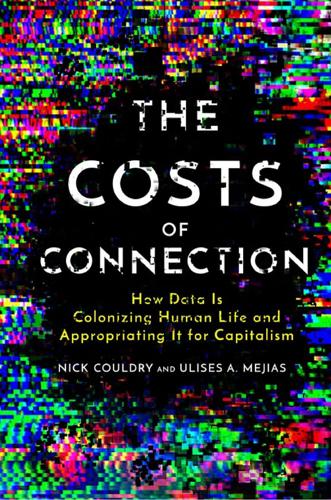
The Costs of Connection: How Data Is Colonizing Human Life and Appropriating It for Capitalism
by
Nick Couldry
and
Ulises A. Mejias
Published 19 Aug 2019
Data ownership can be a poor starting point for data governance, and can even be misleading. . . . The important question isn’t who owns the data. Ultimately, we all do. A better question is who owns the means of analysis? Because that’s how . . . you get the right information in the right place. The digital divide isn’t about who owns data—it’s about who can put that data to work.16 What is suggested by this kind of discourse is that data “oil” needs corporations to transform it into something useful. Thus, the appropriation of this resource is presented as something natural, with benefits for all of us.
…
Additionally, the program breaks net neutrality principles by preventing users from browsing the internet openly, and, more importantly, it collects data about all the activities of users (restricted as they are), not just those conducted on Facebook. Because most users of Free Basics are people already connected to the internet who merely want to lower their data-plan bills, the report concludes that the program is motivated more by the desire to capture new audiences and less by a desire to help people bridge the digital divide. That is probably why in 2016, civil society in India organized to force the government to prevent Free Basics from being offered in that country,44 a move that drove Marc Andreessen (cofounder of Netscape and a Facebook investor) to lecture Indian civil society via Twitter on the economic futility of anticolonialism.45 Expand Indians have plenty of reason to be suspicious of foreign corporations.

The Metaverse: And How It Will Revolutionize Everything
by
Matthew Ball
Published 18 Jul 2022
Thus it’s not that the prices for the “non-white” Cryptopunks are low, but that “white” Cryptopunks are too scarce. One position is that perhaps the “discount” on the former is positive—it makes these would-be avatars and supposed membership cards more affordable to those who have less wealth in general. Other concerns include the “digital divide” and “virtual isolation,” though these appear easier to address. A decade ago, some worried that the adoption of superpowered mobile devices—most of which cost hundreds of dollars more than a “dumbphone”—would exacerbate inequality. The most frequently used example was that of iPads in education.
…
See decentralized apps (“dapps”) Dassault Systèmes, 118 data rights, 17, 290, 292 data security, 17, 290 dating apps, 19, 203, 215, 255, 272 Daydream VR platform, 142 DC Comics, 139 Death Stranding, 117 Decentraland, 115 decentralization, 58–59 in blockchains, 210, 235 of compute resources, 100–102, 223–24 downsides of, 208, 235, 291 Metaverse in tension with centralization, 283–85 “progressive decentralization,” 214 decentralized apps (“dapps”), 210–11, 214–16, 222–23, 283 decentralized autonomous organizations (DAOs), 225–29, 230, 300 deepfakes, 292 Denmark, xiv Diamond Age, The, 255n Dick, Philip K., 5 “digital divide,” 294 digital payment networks, 61, 171–72, 177 digital twins, 30–31, 48, 118, 157, 255, 267–68, 280, 282 Discord, 62, 134–35, 179, 228, 229 Disney hypothetical use of IPs in blockchains, 233 Industrial Light & Magic (ILM) special effects division, 118–19, 136, 258–59 Marvel Comics, 30, 139, 248, 259, 263 Pixar, 29–30, 36–37, 82, 89–90, 118, 136 use of Unity, 118–19 disruption, xiv–xv common patterns of, 205 confusion as necessary to, 23–28 generational changes in computing and networking, 61–62 Metaverse as opportunity for, xiv–xv, 213–14, 294 recursive innovation and, 27–28, 274, 295 stopping disruptive technologies, 193–99 see also blockchains; decentralization Dixon, Chris, 233 dotcom crash, 9, 24, 27, 128, 309 “Downtown Drop” branded experience, 264 Dropcam, 158 “dumbphones,” 240, 294 eBay, 212, 301 Echo Frames, 143 Edge browser, 286 “edge computers” or “edge servers,” 161 Edison, Thomas, 240, 242 education, 30, 34, 190, 250–54, 291, 300 EGS.

The Equality Machine: Harnessing Digital Technology for a Brighter, More Inclusive Future
by
Orly Lobel
Published 17 Oct 2022
In 2016, the National Science and Technology Council described the shortage of women and minorities as “one of the most critical and high-priority challenges for computer science and AI.”22 Without people from all backgrounds and identities participating in the field of AI, the field’s trajectory and all that arises from it cannot and will not reflect society as a whole and certainly won’t embody the interests of the more vulnerable. The digital divide is sourced in power. Women and minorities are underrepresented, yet the technologies that are being produced have universal aspirations. Technology is designed and data is gathered by a concentrated few, but the data is derived from—and the tech is consumed by—people all over the world. Technology can build knowledge and construct reality in a way that appears objective and neutral, all the while concealing underlying exclusions.
…
To be sure, the same technology can serve to support and to surveil, to learn and to manipulate, to heal and to harm, to detect and to conceal, to equalize and to exclude. The silicon curtain is the new term to describe the barriers to the transfer of technology between China and the West. More broadly, the term signifies the digital divide between countries racing to dominate digital innovation, including genetics, biotech, automation, and computing powers—all of which require greater access to data. AI affects the political order in society. Liberal democracies need to grapple with and confront the global playing field and the normative implications of uneven races more deliberately and directly.

Careless People: A Cautionary Tale of Power, Greed, and Lost Idealism
by
Sarah Wynn-Williams
Published 11 Mar 2025
Internet.org prohibits encryption that could protect users from government surveillance or fraud or cyberattacks. There’s no two-factor security protecting people’s data and identities. It pushes all these problems onto the people least able to solve them. In short, Internet.org entrenches the digital divide between the haves and the have-nots, by delivering a crap version of the internet to two-thirds of the world. The two-thirds least digitally literate and able to cope with it. What Mark’s running, in the digital rights groups’ view, is a bait and switch. He’s pretending in his lofty speeches that this is all about connectivity and handing people the tools they need to better their lives, when in fact he’s delivering nothing even close.
…
(I point this out to him afterward, and within days the name of the meeting room has been changed.) I leave the meeting convinced that we’re on the wrong side of this one. I feel like Mark is wrapping himself in a cloak of moral superiority when he pitches Internet.org, pretending it’s advancing human rights and solving the digital divide, and what he’s delivering is so far from that. It’s ugly. This isn’t Facebook as a force for good or Mark acting responsibly. I, perhaps foolishly, write an email to the leaders of Internet.org arguing that we shouldn’t pretend that we’re trying to save the world with Internet.org. Let’s just admit we’re doing it to get more users.

As the Future Catches You: How Genomics & Other Forces Are Changing Your Work, Health & Wealth
by
Juan Enriquez
Published 15 Feb 2001
MEDIAN SALARY (1997) ALL OCCUPATIONS $22,734 Engineering managers 72,675 Electrical engineers 59,155 Geologists 52,395 Computer engineers 50,606 Chemists 43,971 Biology scientists 43,701 (According to the Bureau of Labor Statistics, each of the five fastest-growing job categories in the United States from 1998 to 2008 is expected to be computer-related.) How to address educational disparities, digital divides, and technological illiteracy is a hot topic. All politicians preach an education credo … All promise to spend more money on schools … To make sure better teachers are hired … But few societies have the discipline it takes … To invest and support an effort that will pay off in decades instead of months.
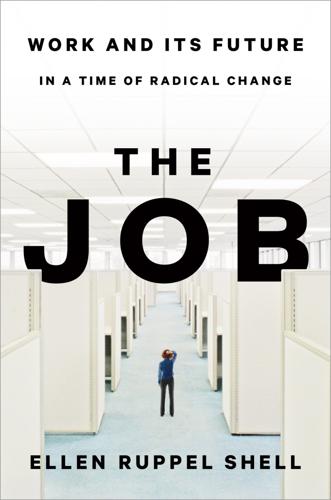
The Job: The Future of Work in the Modern Era
by
Ellen Ruppel Shell
Published 22 Oct 2018
They sought out almost every position posted for which they qualified, including entry-level jobs at Sears, Walmart, and Target. Mostly they applied online, as required. They sometimes found this process intimidating, but not for the reasons some employers claim. They had no difficulty reading and understanding the questions, no trouble doing the math, no trouble operating the computer—there was no “digital divide” keeping them from a job. It was the subtext that stumped them. Here are a couple of questions on a Target job application: “Do you think your parents are proud of you?” “Have you ever applied for food stamps?” What is the “correct” answer to questions like these? If you suggest that your parents are “proud,” does that make you seem confident or arrogant?
…
This is especially true in Appalachian Kentucky, where nearly a quarter of the population lives below the poverty line. Exports are an economic imperative here, and broadband Internet access is key. Low-income households are far less likely than wealthier households to have broadband, especially in rural areas like Appalachia. Microsoft, among other companies, is working to close that digital divide. But broadband access does not automatically engender sustainable employment opportunities. For example, call center jobs enabled by the Internet offer little stability: in recent years, hundreds of thousands of these jobs have vanished from low-income US communities, most of them transferred to lower-wage nations like the Philippines and India.
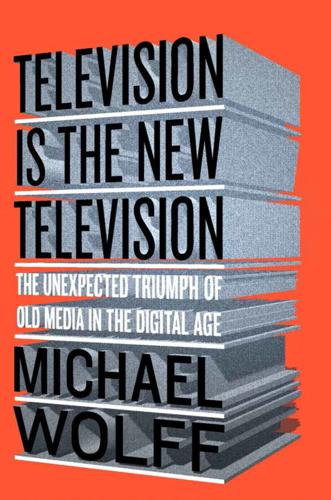
Television Is the New Television: The Unexpected Triumph of Old Media in the Digital Age
by
Michael Wolff
Published 22 Jun 2015
This leads to things like John McCain’s introduction of legislation in 2013 to force unbundling, as well as the FCC’s recent me-too interest in the topic. In a straight-up world, the prospect of more oversight and more regulation might otherwise be worrisome to an industry. But the unbundling debate tends to reduce to a cable-digital divide. There’s cable on one side, with its opaque packages and high fees; digital, on the other, with its promise of vast à la carte menus, but inevitably under the thumb and designs of secretive and hegemonic platforms. And, as a vastly interested third party, the producers of content, who benefit from bundling, depend on it even, but who benefit, in some cases with greater advantages, from many unbundling scenarios.
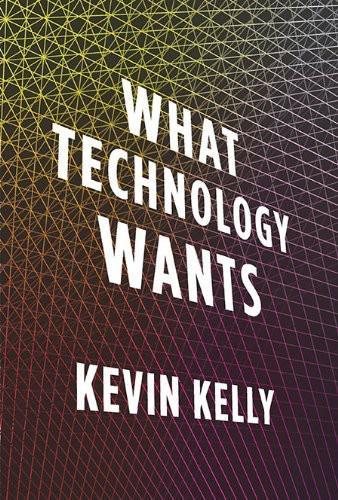
What Technology Wants
by
Kevin Kelly
Published 14 Jul 2010
The citizens of one America were poor people who could not afford a computer, and of the other, wealthy individuals equipped with PCs who reaped all the benefits. During the 1990s, when technology boosters like me were promoting the advent of the internet, we were often asked: What are we going to do about the digital divide? My answer was simple: nothing. We didn’t have to do anything, because the natural history of a technology such as the internet was self-fulfilling. The have-nots were a temporary imbalance that would be cured (and more) by technological forces. There was so much profit to be made connecting up the rest of the world, and the unconnected were so eager to join, that they were already paying higher telecom rates (when they could get such service) than the haves.
…
The fiercest critics of technology still focus on the ephemeral have-and-have-not divide, but that flimsy border is a distraction. The significant threshold of technological development lies at the boundary between commonplace and ubiquity, between the have-laters and the “all have.” When critics asked us champions of the internet what we were going to do about the digital divide and I said “nothing,” I added a challenge: “If you want to worry about something, don’t worry about the folks who are currently offline. They’ll stampede on faster than you think. Instead you should worry about what we are going to do when everyone is online. When the internet has six billion people, and they are all e-mailing at once, when no one is disconnected and always on day and night, when everything is digital and nothing offline, when the internet is ubiquitous.

Life Inc.: How the World Became a Corporation and How to Take It Back
by
Douglas Rushkoff
Published 1 Jun 2009
What we do notice, however, is that our media doesn’t seem to reflect the diversity of viewpoints and values in our communities. We notice that radio stations rely on uninspired, repetitive playlists programmed by corporate headquarters instead of local DJs. We notice that TV stations have cut their news teams and focus more on driving profits than driving public debate. We notice that the “digital divide” widens the gap between richer and poorer areas with unequal access to broadband. The spectrum itself may be invisible, but we notice the effects of bad spectrum policy all the time. At the Prometheus Radio Project, we work to demystify the radio spectrum and the esoteric system that governs our media.
…
Digital inclusion means closing the gap between those who can afford to access the Internet and those who cannot. As we develop new technologies and tools, we continue to rely on the radio spectrum to communicate. That spectrum, like the right to communicate, belongs to us all. Support policies at the local, state, and federal level that close the digital divide. 6. Get Involved with the Prometheus Radio Project! Volunteer with Prometheus, attend a radio barn raising, make a donation, or learn more at http://prometheusradio.org. Team Up to Compete Super CTAs: How a New Kind of Contractor Can Serve the Greater Good ReddixGroup (http://reddixgroup.com) by Chris Charuhas Big corporations can cause big problems.

Twitter and Tear Gas: The Power and Fragility of Networked Protest
by
Zeynep Tufekci
Published 14 May 2017
Halls, The Rules of Sociological Method (New York: Free Press, 1982). 23. Hans K. Klein and Daniel Lee Kleinman, “The Social Construction of Technology: Structural Considerations,” Science, Technology and Human Values 27, no. 1 (2002): 28–52. 24. Massimo Ragnedda and Glenn W. Muschert, The Digital Divide: The Internet and Social Inequality in International Perspective (New York: Routledge, 2013); Eszter Hargittai, “The Digital Divide and What to Do about It,” in New Economy Handbook, ed. Derek C. Jones (San Diego: Academic Press, 2003), 821–39. 25. John Perry Barlow, “A Cyberspace Independence Declaration,” 1996, https://w2.eff.org/Censorship/Internet_censorship_bills/barlow_0296.declaration. 26.
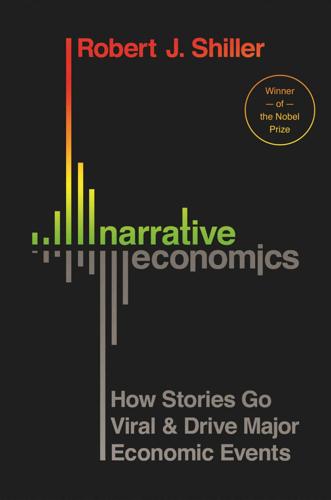
Narrative Economics: How Stories Go Viral and Drive Major Economic Events
by
Robert J. Shiller
Published 14 Oct 2019
ProQuest News & Newspapers reveals essentially the same uptrend. Public attention to inequality has burgeoned, with much attention to the increased share of income by the top 1% or the top one-tenth of 1%. Thomas Piketty’s Capital in the Twenty-First Century, which described this trend, was a best seller that generated intense discussion. The term “digital divide” has gone viral, describing a sort of inequality related to access to digital computers. No one can predict the effects of labor-saving and intelligent machines on livelihoods and work in the future, but the narratives themselves have the potential to drive amplified economic booms and recessions, as well as public policy.
…
See Great Depression of 1930s depressions: in American colonies following French and Indian War, 58–59; biggest in US since 1854, 111–12; causes listed by economic historians, 112; crowd psychology and suggestibility in understanding of, 120; expected after World War II, 196–97, 199; gold standard narrative during, 158–59; information cascades and, 300; as narratives in themselves, 112; nineteenth-century worldviews and, 116–17; psychologically based economic narrative of, 118; technological unemployment narrative during, 176 The Desk Set (film), 201 devaluation: entering English language in 1914, 159; as positive terminology, 172–73; of US dollar in 1933, 172 dial telephone, and unemployment, 187, 190–91 digital divide, 211 digital signature algorithm, 5, 9–10 The Disposable American (Uchitelle), 150 donkeys for important ideas, 26, 303n11 dot-com boom, 109, 205, 206 dreaming: narrative form of, 32; suggestibility and, 120, 121 driverless vehicles, 8–9, 174–75, 207, 314n1 Dust Bowl, 130–31 dysnarrativia, 65–66 Ebola epidemics, 18–19, 19f, 21, 23–24; co-epidemics with narratives, 23; SEIHFR model of, 294 Eckstein, Otto, 112 eclipse of the sun in 2017, 61–62 economic behavior affected by narratives, xi, xiii, xviii, 3; brief exposure to narrative and, 80; difficulty in establishing connection, 93, 286; false narratives and, 97; forgetting and, x; with impact changing through time, 93–95, 283–84; scripts involved in, 74; in small fraction of population, 29; uncertain knowledge and, 96; years after the relevant narrative, 109.

The Lonely Century: How Isolation Imperils Our Future
by
Noreena Hertz
Published 13 May 2020
Some workers fear that they will result in them having to stay even longer in the office; others that they would feel more anxious trying to keep up with emails during their workday, and some consider this degree of micromanagement disempowering.90 And, of course, the privilege of ‘disconnection’ is yet another benefit unavailable to the growing swathe of gig economy workers – by which I mean those whose employ with companies as various as TaskRabbit or Uber is facilitated via apps or online platforms, and for whom every hour disconnected means an hour with no chance to earn.91 Just as screen-free schools and phone-free nannies epitomise the new digital divide between wealthy and poor children, guaranteeing the ‘right to disconnect’ for employees with stable, high-paying jobs does nothing for the self-employed who are often the ones whose very livelihood is dependent on constant connection. Paid to care Recognising the interplay between loneliness at work and loneliness at home, employers could also do a much better job of acknowledging their employees as human beings with responsibilities outside of the workplace, whose mental and physical health is significantly affected by their ability to nurture and retain their external relationships and bonds.
…
Children Now Have One’, NPR Education, 31 October 2019, https://www.npr.org/2019/10/31/774838891/its-a-smartphone-life-more-than-half-of-u-s-children-now-have-one; Zoe Kleinman, ‘Half of UK 10-year-olds own a smartphone’, BBC News, 4 February 2020, https://www.bbc.co.uk/news/technology-51358192. 56 ‘Most children own mobile phone by age of seven, study finds’, Guardian, 30 January 2020, https://www.theguardian.com/society/2020/jan/30/most-children-own-mobile-phone-by-age-of-seven-study-finds. 57 Nick Bilton, ‘Steve Jobs Was a Low-Tech Parent’, New York Times, 10 September 2014, https://www.nytimes.com/2014/09/11/fashion/steve-jobs-apple-was-a-low-tech-parent.html; Chris Weller, ‘Bill Gates and Steve Jobs Raised Their Kids Tech-Free and It Should Have Been a Red Flag’, Independent, 24 October 2017, https://www.independent.co.uk/life-style/gadgets-and-tech/bill-gates-and-steve-jobs-raised-their-kids-techfree-and-it-shouldve-been-a-red-flag-a8017136.html. 58 Matt Richtel, ‘A Silicon Valley School That Doesn’t Compute’, New York Times, 22 October 2011, https://www.nytimes.com/2011/10/23/technology/at-waldorf-school-in-silicon-valley-technology-can-wait.html. 59 Nellie Bowles, ‘Silicon Valley Nannies Are Phone Police for Kids’, New York Times, 26 October 2018, https://www.nytimes.com/2018/10/26/style/silicon-valley-nannies.html. 60 Nellie Bowles, ‘The Digital Gap Between Rich and Poor Kids Is Not What We Expected’, New York Times, 26 October 2018, https://www.nytimes.com/2018/10/26/style/digital-divide-screens-schools.html. 61 This is amongst those who have devices. Rani Molla, ‘Poor kids spend nearly 2 hours more on screens each day than rich kids’, Vox, 29 October 2019, https://www.vox.com/recode/2019/10/29/20937870/kids-screentime-rich-poor-common-sense-media; original data from ‘The Common Sense Census: Media Use by Tweens and Teens, 2019’ (Common Sense Media, 2019), https://www.commonsensemedia.org/research/the-common-sense-census-media-use-by-tweens-and-teens-2019. 62 Personal conversation, October 2019. 63 Ben Hoyle, ‘Jittery American pupils can hold on to their phones’, The Times, 22 January 2020, https://www.thetimes.co.uk/article/jittery-american-pupils-can-hold-on-to-their-phones-z0zxr972c. 64 The acronym is based on the questions themselves: 1.

The Hype Machine: How Social Media Disrupts Our Elections, Our Economy, and Our Health--And How We Must Adapt
by
Sinan Aral
Published 14 Sep 2020
Three forces create unequal access to the opportunities created by the Hype Machine. First, there are disparities in access to the Hype Machine across geography, socioeconomic status, and gender. Developing countries lag behind advanced economies in Internet, social media, and smartphone access. But beyond the digital divide in access to social media, there is a digital divide between what my friend and colleague Eszter Hargittai calls “capacity enhancing” and recreational uses of social media. The economically advantaged tend to use social media in ways that offer “opportunities for upward mobility,” including relationship and reputation building, information seeking, collaboration, mobilization, and other “activities that may lead to more informed political participation, career advancement, or information seeking about financial and health services.”
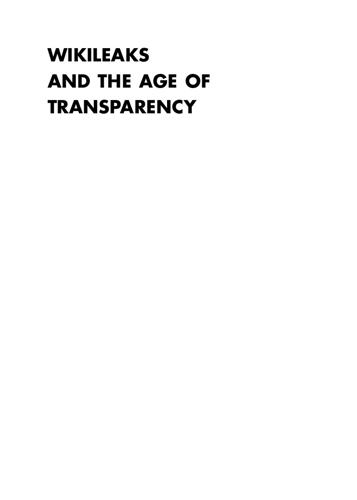
WikiLeaks and the Age of Transparency
by
Micah L. Sifry
Published 19 Feb 2011
In the United States, for example, the Pew Internet & American Life Project estimates that roughly seventy-nine percent of all American adults are Internet users, meaning they go online or use email at least occasionally. Among Americans aged eighteen to forty-nine, the proportion tops ninety percent.8 While there is still a digital divide in America, it is primarily older people who are least likely to go online, and poorer and more rural Americans who lack affordable access to high-speed broadband. The digital disconnect is unlikely to dramatically improve for the elderly, but as more mobile phones come equipped with fast connections to the web, the gap will disappear for nearly everyone else.
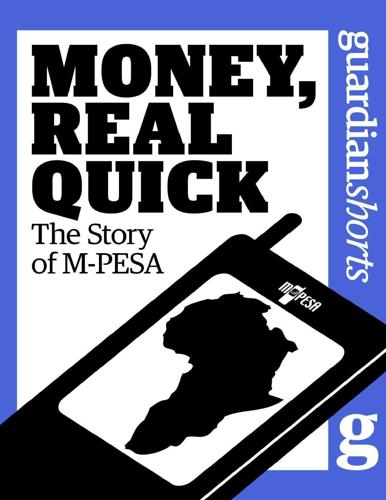
Money, Real Quick: The Story of M-PESA
by
Tonny K. Omwansa
,
Nicholas P. Sullivan
and
The Guardian
Published 28 Feb 2012
During the initial framing of the book and throughout the writing, we had conversations and interviews with numerous people who were close to the MPESA story, including (in alphabetical order): Kamal Budhabhatti, founder and CEO of Craft Silicon, an international software company with headquarters in Nairobi, Kenya; Charlene Chen, product manager at KickStart, which manufactures and sells foot-powered water pumps in Africa; Frederick Eijkman, co-founder and CEO of Pep Intermedius, which owns and operates numerous M-PESA agencies; Wolfgang Fengler, lead economist in the Nairobi office of the World Bank; David Ferrand, director of Financial Sector Deepening in Nairobi,; ******ebook converter DEMO Watermarks******* Jared Getenga, project manager, Kenya Credit Information Sharing Initiative; Nick Hughes, the “godfather” of M-PESA dating to his tenure at Vodafone, and who is now a director of SignalPoint Partners; Steve Isaboke, general manager of MultiChoice Kenya, a satellite TV service; Michael Joseph, former CEO of Safaricom, who oversaw the deployment and diffusion of M-PESA, and is now director of mobile payments at Vodafone, as well as a fellow at the World Bank; Meoli Kashorda, professor at United States International University (USIU) Kenya and Pdirector at Kenya Education Network (KENET); John Kieti, manager at m:Lab East Africa, which is helping to build knowledge companies; Jay Kimmelman, co-founder and CEO of Bridge International Academies, a chain of cashless schools in Kenya; Professor Muragu Kinandu, professor and executive director of the Kenya School of Monetary Studies (KSMS); Mathew Krueger, formerly in the department of m-banking research and strategy at Equity Bank; George Maina, formerly CEO of Musoni in Kenya, a cashless microfinance institution; Ignacio Mas, formerly a deputy director at the Bill & Melinda Gates Foundation, now a mobile money consultant who has published widely on the topic; Jesse Moore, former director of the GMSA Development Fund who had initiated talks with the Rockefeller Foundation, and who is now a director at SignalPoint Partners in Nairobi; Matu Mugo, assistant director of supervision at the Central Bank of Kenya; ******ebook converter DEMO Watermarks******* Betty Mwangi, general manager of financial services at Safaricom; Stephen Mwaura, head of payments at the Central Bank of Kenya; Bitange Ndemo, permanent secretary, Ministry of Information and Communications in Kenya; Njuguna Ndun’gu, governor of the Central Bank of Kenya; Susie Lonie, who led Vodafone’s efforts on the ground in Nairobi during the pilot and launch of M-PESA; Amollo Ng’weno, co-founder of Africa Online, then a deputy director at the Bill & Melinda Gates Foundation, who is now managing director of Digital Divide Data, Kenya. David Porteous, founder and director of Bankable Frontier Associates, and known as one of the pre-eminent global consultants in mobile finance; Nat Robinson, CEO of Juhudi Kilimo, a microfinance institution in Nairobi, Kenya; John Staley, director of mobile money at Equity Bank; Guy Stuart, a fellow at the Ash Center, Harvard University, who has collected and analyzed diaries of M-PESA users; Professor Timothy Waema at the University of Nairobi is a leading ICT policy researcher and consultant.

The fortune at the bottom of the pyramid
by
C. K. Prahalad
Published 15 Jan 2005
Before IPKO, Meyer wrote speeches for President Clinton, graduated from Yale Law School, and deployed IT systems to help reunite refugee children separated from their families in West Africa and the Balkans. After returning from Kosovo, Meyer was a Senior Fellow of the Markle Foundation, where he studied efforts to “bridge the digital divide”—projects using information and communications technologies (ICTs) to support development. He summarized his findings in three general points: 1. Most projects were deployed on a pilot basis and were fundamentally not scalable. Making a system work in one village in India is very different from making it work in 600,000 villages in India. 2.
…
InfoDev was founded in September 1995, and is a global grant program managed by the World Bank to promote innovative projects in the use of information and communication technologies (ICTs) for economic and social development, with a special emphasis on the needs of the poor in developing countries. http://www.infodev.org/, February 2004. 7. Pew Internet and American Life. “The Ever Shifting Internet Population: A New Look at Internet Access and the Digital Divide.” http://www.pewinternet.org/reports/toc.asp?Report=88, April 16, 2003. This report was written by Cynthia Casas and William C. Lajoie under the supervision of Professor C. K. Prahalad. This report is intended to be a catalyst for discussion and is not intended to illustrate effective or ineffective strategies.

Convergence Culture: Where Old and New Media Collide
by
Henry Jenkins
Published 31 Jul 2006
I w i l l be focusing throughout this book on the competing and contradictory ideas about participation that are shaping this new media culture. Yet, I must acknowledge that not all consumers have access to the skills and resources needed to be full participants i n the cultural practices I am describing. Increasingly, the digital divide is giving w a y to concern about the participation gap. Throughout the 1990s, the primary question was one of access. Today, most Americans have some limited access to the Internet, say, though for many, that access is through the public library or the local school. Yet many of the activities this book w i l l describe depend on more extended access to those technologies, a greater familiarity w i t h the new kinds of social interactions they enable, a fuller mastery over the conceptual skills that consumers have developed i n response to media convergence.
…
We have identified some of those obstacles i n the book, most centrally the challenges surrounding corporate control over intellectual property and the need for a clearer definition of the kinds of fair-use rights held by amateur artists, writers, journalists, and critics, w h o want to share w o r k inspired or incited by existing media content. Another core obstacle might be described as the participation gap. So far, m u c h of the discussion of the digital divide has emphasized problems of access, seeing the issue primarily i n technical terms—but a m e d i u m is more than a technology. A s activists have sought a variety of means to broaden access to digital media, they have created a hodgepodge of different opportunities for participation. Some have extended access to these resources through the home, and others have limited, filtered, regulated access through schools and public libraries.
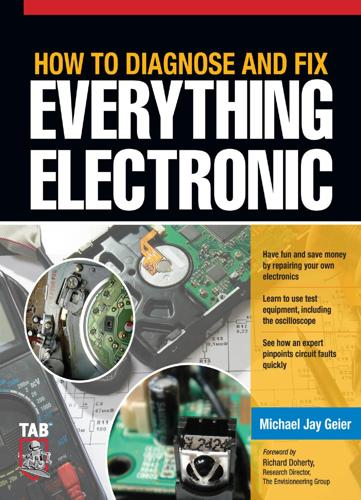
How to Diagnose and Fix Everything Electronic
by
Michael Geier
Published 6 Jan 2011
The digital frequency synthesizer solves the stability problem by providing frequency agility while still being referenced to the unvarying frequency of a quartz crystal. Pulling that off isn’t simple. There are two basic techniques. In a classic hybrid analog/ digital synthesizer, an analog oscillator’s frequency is controlled by a voltage from the synthesizer. The resulting frequency is digitally divided or multiplied until it matches that of the crystal. The two are then compared, and the controlling voltage is adjusted 68 How to Diagnose and Fix Everything Electronic to keep them at the same frequency. So, even though the analog oscillator really isn’t at the same frequency as the crystal, the comparison circuit thinks it is.
…
Glossary 299 oscillator A circuit that produces a steady signal of constant frequency, or variable frequency in some cases, through the use of constructive, or reinforcing ("positive"), feedback. phase-locked loop (PLL) A multistage circuit used to slave the frequency of an oscillator to that of a reference signal or another oscillator. By inserting digital dividers between the oscillator and the rest of the loop, the oscillator can be forced to lock to a multiple of the reference frequency, a crucial technique in frequency synthesis. PLLs are used to tune receivers, to recover color information from analog videotape and data from the laser head’s signals in CD and DVD players, and in many other applications. power supply Any circuit or power source that provides the power the rest of the device requires.

After the New Economy: The Binge . . . And the Hangover That Won't Go Away
by
Doug Henwood
Published 9 May 2005
For the last few years, the WEF was convening against a backdrop of very bad news—^Enron, Argentina, recession, terrorism, and protests outside directed against them and all they stand for. Reporting on the 2002 New York meeting, the Washington Post noted with apparent surprise, "The titles of workshops read like headUnes in The Nation: 'Understanding Global An-ger,"Bridging the Digital Divide' and'The PoHtics of Apology.'" That's not all there was; other session titles could have come out of The Economist or Foreign Affairs. Still, the men and few women of Davos are feeUng considerably less triumphant these days. The stars of the 2002 worryfest were the unlikely duo of Bono, the lead singer of U2, and Bill Gates, the world's richest human.
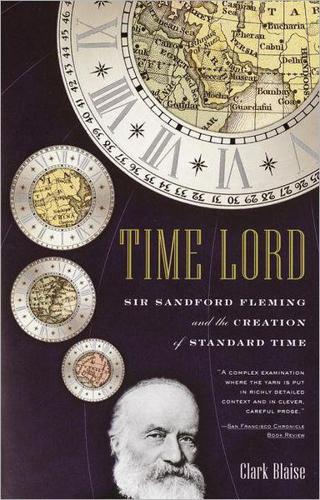
Time Lord: Sir Sandford Fleming and the Creation of Standard Time
by
Clark Blaise
Published 27 Oct 2000
The difference is less than a second per day; UTC enfolds the leap-second phenomenon within it, to compensate for the earth’s decelerating rotation. The only country still using Greenwich time is Britain. A HUNDRED and fifteen years after the agreements on standard time, familiar conditions are reappearing. I’ve called them “a-temporal” manifestations, but they’re also commonly gathered under the rubric “the digital divide.” To enumerate: cell phones, jet travel, e-mail, DNA analysis, computer-speed communication, storage, and retrieval—they all transcend the normal fixed-time, fixed-space concepts of the time-space continuum. Crimes committed decades ago and thousands of miles away can be solved. Phone calls can be made or received independent of a fixed location of sending or receiving.
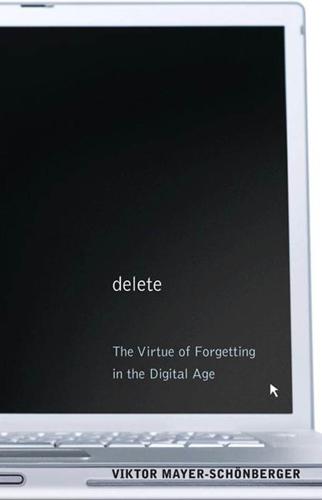
Delete: The Virtue of Forgetting in the Digital Age
by
Viktor Mayer-Schönberger
Published 1 Jan 2009
Beyond the scope of this book (although we do need to have a conversation in our society about these) are thoughts on the institutions and processes of societal remembering, what their tasks will be in the digital age, and who will control what they are doing. This is especially important in a world with a continuing digital divide in which few collect information about many. I am delighted that we are now beginning to have debates over remembering and forgetting in the digital age, and how to respond to the challenges they pose. Most proposals put forward to counter the troubling consequences of digital remembering fall into one of the seven responses I detailed in chapters 5 and 6.
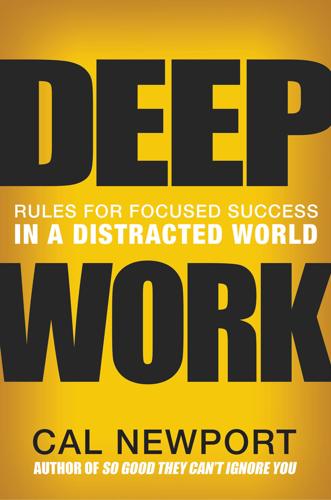
Deep Work: Rules for Focused Success in a Distracted World
by
Cal Newport
Published 5 Jan 2016
How to Become a Winner in the New Economy I just identified two groups that are poised to thrive and that I claim are accessible: those who can work creatively with intelligent machines and those who are stars in their field. What’s the secret to landing in these lucrative sectors of the widening digital divide? I argue that the following two core abilities are crucial. Two Core Abilities for Thriving in the New Economy 1. The ability to quickly master hard things. 2. The ability to produce at an elite level, in terms of both quality and speed. Let’s begin with the first ability. To start, we must remember that we’ve been spoiled by the intuitive and drop-dead-simple user experience of many consumer-facing technologies, like Twitter and the iPhone.

Radical Cities: Across Latin America in Search of a New Architecture
by
Justin McGuirk
Published 15 Feb 2014
Cardenas calls it an ‘urban observatory’, and I’m reminded of Antanas Mockus’s think tank. It’s a place of research, but also a learning centre for the community where Torolab partners with Ensenada’s Centre for Scientific Research to bring computer literacy to the community. ‘How do you deal with the digital divide in a place with no access to technology, in a place that doesn’t read and where books are three times more expensive than in the US?’ Cárdenas talks rapidly, like he’s wired on caffeine, or just can’t contain his excitement. He’s addicted to the taste of potential change. Having weathered the tough times, he can see imminent transformation everywhere.

Uncanny Valley: A Memoir
by
Anna Wiener
Published 14 Jan 2020
Even venture capitalists would eventually be disrupted and rendered obsolete. I found this all very exciting—a way to reformat cynicism about the industry as optimism about the future. In late fall, the VP of Social Impact arranged for a visit from the secretary of Housing and Urban Development. The company had been working on an initiative of his, to bridge the digital divide by bringing high-speed internet, computers, and educational programs to people in low-income housing. I had spent a week in Washington, D.C., sitting in on meetings about the initiative, and had found it encouraging to hear elected officials—rather than the industry’s self-appointed leaders of borderless digital societies—talk about how technology could change the world.
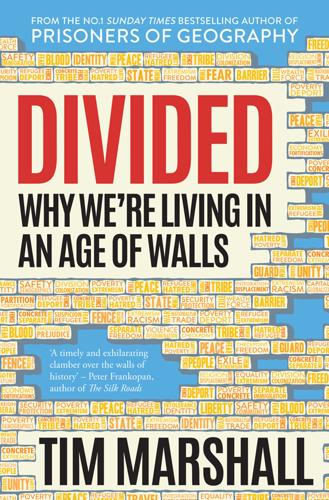
Divided: Why We're Living in an Age of Walls
by
Tim Marshall
Published 8 Mar 2018
He ensured his supporters were elected to the politburo and they in turn now promote the concept of ‘Xi Jinping Thought On Socialism with Chinese Characteristics for a New Era’. This was the first time since Mao that a leader’s ideas were promoted as ‘thought’, which in Chinese political terms is the top of the tree. Yet another digital divide is between the minority of Chinese who speak English and those who do not. Type ‘Tiananmen Square, uprising, tank’ into Baidu’s search box in German and you might possibly get back a link, in German, to the events of 1989. Type the same words in Chinese and you’ll probably see: ‘According to relevant laws, regulations and policies, some results are not displayed’, or, if you’re lucky, a nice photomontage of one of the great tourist attractions of the world.

Automating Inequality
by
Virginia Eubanks
Ware, Nathanial Welch, Peggy welfare and public assistance benefits as personal property and due process eligibility modernization eligibility rules for and “mop-up” programs and privatization racial discrimination in sanctions social insurance as distinct from public assistance and voluntary resettlement plan “welfare queen” stereotype See also individual programs welfare diversion welfare rights movement and Adequate Income Act backlash against Mothers for Adequate Welfare National Welfare Rights Organization (NWRO) success of West, Terry White, Magner white supremacy Wilde, Dylan Willis, Tom Wilmot, William Wong, Julia Carrie Workflow Management System (WFMS) Works Progress Administration (WPA) World Courts of Women World War II Xerox Yates, John Van Ness Yellow Pages test Young, Omega Zimmerman, Roger Zuckerberg, Mark MORE PRAISE FOR AUTOMATING INEQUALITY “In this remarkable chronicle of ‘how the other half lives’ in the age of automation, Eubanks uncovers a new digital divide—a totalizing web of surveillance ensnaring our most marginalized communities. This powerful, sobering, and humane book exposes the dystopia of data-driven policy and urges us to create a more just society for all.” —Alondra Nelson, author of The Social Life of DNA “In this illuminating book, Eubanks shows us that in spite of cosmetic reforms, our policies for the disadvantaged remain dominated by the ancient credo of the poor law, obsessed with the exclusion and punishment of the neediest in our communities.”

The System: Who Owns the Internet, and How It Owns Us
by
James Ball
Published 19 Aug 2020
CONCLUSION 1https://www.populationpyramid.net/world/2018/ 2I was at first relatively sure I had coined this term myself, but a Google search throws up a few results, including this from Shoshana Zuboff (author of The Age of Surveillance Capitalism) article from 2014: https://www.shoshanazuboff.com/new/my-new-article-on-the-weapons-of-mass-detection/ 3http://www.cityam.com/273662/sainsburys-shares-crash-asda-merger-torpedoed 4https://www.bbc.co.uk/news/business-26266689 5https://www.theguardian.com/business/2012/jan/31/fred-goodwin-stripped-of-knighthood 6The idea that the internet is an essential service may still be contentious to some, but consider this: the idea would have been laughable a decade ago, but now in a country like the UK it is immensely difficult to access information on utility bills and payments, taxation, social housing lists, benefit information and applications, and more, without it. That digital divide will only widen. 7https://www.theguardian.com/technology/2017/jul/27/facebook-free-basics-developing-markets Index Aadhaar, here Abramson, Jill, here Ackerman, Spencer, here Acquisti, Alessandro, here ad blockers, here, here advertising, online, here, here, here, here, here, here complexity of, here, here and consumer benefits, here CPM (cost per mille), here programmatic advertising, here, here, here see also surveillance airspace spectrum, here Al Shabab, here Alexander, General Keith, here, here, here Alibaba, here al-Qaeda, here Amazon, here, here, here, here, here, here, here, here and advertising, here and centralisation of power, here and regulation, here Andreessen, Marc, here, here Android, here, here angel investors, here, here, here, here, here antitrust laws, here AOL, here, here, here Apple, here, here, here, here, here, here AppNexus, here, here, here ARPANET, here, here, here, here, here, here, here, here, here, here separation of military elements, here, here see also DARPA Ars Technica, here artificial intelligence (AI), here, here, here Associated Press, here AT&T, here, here, here, here Atlantic, here Baidu, here Barlow, John Perry, here, here, here batch processing, here Bell, Emily, here, here Berners-Lee, Tim, here, here, here betaworks, here, here Bezos, Jeff, here bit.ly, here Bitcoin, here, here, here blackholing, here blockchains, here Bomis, here book publishers, here Border Gateway Protocol (BGP), here Borthwick, John, here, here, here, here, here, here botnets, here Brandeis, Louis, here broadband customers, here, here BT, here, here BuzzFeed, here cable companies, here lobbying, here peering agreements, here profits, here, here reputation and trust, here tier one providers, here, here traffic blocking, here transit fees, here cable TV, here, here, here Cambridge Analytica, here Carnegie, Andrew, here celebrities, here Cerf, Vint, here, here, here, here Certbot, here Chicago School of Economics, here China, here, here, here, here, here, here, here, here Chrome, here CIA, here Cisco, here Clinton, Hillary, here ‘cloud, the’, here CNN, here Cohn, Cindy, here, here Cold War, here, here Comcast, here, here, here, here, here CompuServe, here computers, early, here content farms, here, here cookies, here, here, here, here, here Cox, Ben, here credit cards, here Crimea, here Crocker, Steve, here, here, here, here, here, here, here cryptocurrencies, here, here, here, here Daily Caller, here, here Daly, Tom, here, here, here DARPA, here, here, here, here, here data brokers, here, here, here Defense Communications Agency, here del.icio.us, here Deliveroo, here ‘digital colonialism’, here DirecTV, here distributed denial of service (DDoS) attacks, here, here, here Dolby, here Domain Name System (DNS), here, here, here, here, here, here Dots and Two Dots, here DoubleClick, here duolingo, here Duvall, Bill, here Dyn attack, here eBay, here, here Eisenstein, Elizabeth, here elections, interference in, here Electronic Frontier Foundation (EFF), here, here Eliason, Frank, here, here, here, here, here Encarta, here encryption, here, here Engelbart, Doug, here Etsy, here European Union (EU), here, here, here, here, here, here see also General Data Protection Regulation (GDPR) Facebook, here, here, here, here, here, here, here, here, here, here, here, here, here, here acquisition of WhatsApp, here, here, here, here and advertising, here, here, here, here, here, here and centralisation of power, here and ‘digital colonialism’, here and government entities, here influence on elections, here Menlo Park campus, here privacy scandals, here and regulation, here, here, here, here Facetime, here facial recognition, here FakeMailGenerator, com, here Fastclick, here Fastly, here FBI, here, here Federal Communications Commission (FCC), here, here, here financial crash, here, here FireEye, here First World War, here, here Five Eyes, here, here, here Flickr, here Flint, Michigan, here Foreign Policy, here, here Fotolog, here, here, here Foursquare, here Franz Ferdinand, Archduke, here Free Basics, here free speech, here, here, here, here, here Freedom of Information Act, here GCHQ, here, here, here, here, here and encryption, here General Data Protection Regulation (GDPR), here, here, here George V, King, here Ghonim, Wael, here Gibson, Janine, here, here, here Gilded Age, here, here, here Gilmore, John, here Gimlet media, here Giphy, here Gizmodo blog, here Gmail, here Goodwin, Sir Fred, here Google, here, here, here, here, here, here, here, here, here, here, here, here, here, here, here and advertising, here, here, here, here, here, here, here and centralisation of power, here London headquarters, here and regulation, here, here, here Grateful Dead, here Greene, Jeff, here, here, here Greenwald, Glenn, here Grindr, here Guardian, here, here, here, here and Snowden leaks, here, here Guo Ping, here Gutenberg press, here Heatherwick, Thomas, here Herzfeld, Charles, here Hoffman, Reid, here Hong Kong, here HOSTS.TXT, here Hotmail, here HTML, here HTTP, here, here HTTPS Everywhere, here Huawei, here, here Hutchins, Marcus, here IBM, here identity, here India, here, here Industrial Revolution, here Instagram, here intellectual property, here, here internet, origins of, here, here commercialisation and globalisation, here gradual expansion, here logging and security, here the name, here origins of networking, here separation of military elements, here, here see also ARPANET Internet Corporation for Assigned Names and Numbers (ICANN), here, here, here, here Internet Hall of Fame, here, here Internet of Things, here internet service providers (ISPs), here, here, here, here, here, here, here, here and Pakistan/YouTube incident, here intranets, here IP (Internet Protocol), here IP addresses, here, here, here, here, here, here, here, here, here and blackholing attacks, here iPhones, here, here Iran, here, here, here, here Stuxnet worm attack, here, here ISIS, here Jackson, Steve, here Jarvis, Jeff, here journalism, here see also newspapers Kaspersky, here key cards, here Kickstarter, here, here, here Kidane v.

Tomorrow's Capitalist: My Search for the Soul of Business
by
Alan Murray
Published 15 Dec 2022
But the rapid pace of change is daunting, as is the need to gird workers for the new realities of the fast-moving twenty-first-century workplace. Some have called it our Sputnik moment. It is the leap we have to take to be competitive in a new era. In the US, it involves addressing the education divide and the digital divide, which is a part of it—the stark contrast in preparedness and resources among different populations in this country. We have a long way to go. According to the Digital US Coalition’s May 2020 report, “Building a Digitally Resilient Workforce: Creating On-Ramps to Opportunity”:13 > 18 million households lack internet access; > 32 million adults can’t use a computer effectively; > One-half of Americans aren’t comfortable using technology to learn.
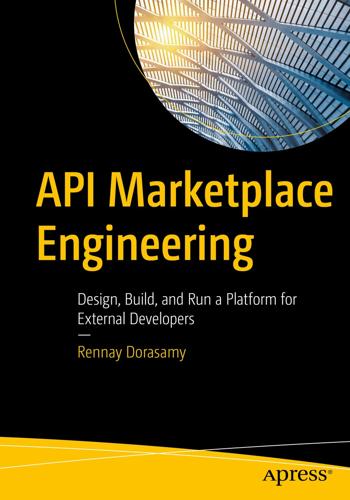
API Marketplace Engineering: Design, Build, and Run a Platform for External Developers
by
Rennay Dorasamy
Published 2 Dec 2021
Technical teams may become enamored with the cool factor and bragging rights of integrating into a legacy mainframe using a morse-code protocol developed by the founders of the Unix operating system. If the functionality it exposes is of no interest or little use to consumers outside your organization, the effort is wasted. Product owners have the unenviable task of bridging the digital divide between semi-delusional backend providers who believe their legacy system has ground-breaking capability and flighty third-party consumers looking to build the next killer-app. The Sandbox concept, discussed in great detail, is a tool which can and must be used to facilitate this interaction.

Cultural Backlash: Trump, Brexit, and Authoritarian Populism
by
Pippa Norris
and
Ronald Inglehart
Published 31 Dec 2018
Social Science Research 37: 268–286; Ingrid Storm, Maria Sobolewska, and Robert Ford. 2017. ‘Is ethnic prejudice declining in Britain? Change in social distance 58 16. 17. 18. 19. 20. 21. 22. 23. 24. 25. 26. 27. The Cultural Backlash Theory attitudes among ethnic majority and minority Britons.’ The British Journal of Sociology 68: 410–434. Pippa Norris. 2000. Digital Divide. New York: Cambridge University Press. James H. Spencer. 2014. Globalization and Urbanization: The Global Urban Ecosystem. New York: Rowman & Littlefield. See, for example, Cliff Zukin, Scott Keeter, Molly Andolina, Krista Jenkins, and Michael X. Delli Carpini. 2006. A New Engagement? Political Participation, Civic Life and the Changing American Citizen.
…
Norpoth, Helmut, Michael S. Lewis-Beck, and Jean-Dominique Lafay. Eds. 1991. Economics and Politics: The Calculus of Support. Ann Arbor, MI: University of Michigan Press. Norris, Pippa. 2000. A Virtuous Circle: Political Communication in PostIndustrial Democracies. New York: Cambridge University Press. 2001. Digital Divide: Civic Engagement, Information Poverty and the Internet Worldwide. New York: Cambridge University Press. 2002. Democratic Phoenix: Political Activism Worldwide. New York: Cambridge University Press. 2004. Electoral Engineering: Voting Rules and Political Behavior. New York: Cambridge University Press. 2005.

The Complacent Class: The Self-Defeating Quest for the American Dream
by
Tyler Cowen
Published 27 Feb 2017
But not everyone knows this or is motivated to learn this. Some people are simply not so good at manipulating and interpreting digital information, so they don’t gain nearly as much from the internet and the matching capabilities it gives us. Another group that misses out from all these matching gains is those on the losing side of the digital divide. They are not well connected either at home or with smartphones, even if in a more just and less poverty-ridden world they might be superb at using the internet to improve their lives. Finally, for all the benefits of matching, those benefits are distributed along class lines. Most of the matching I’ve outlined truly is beneficial, but still, it has helped to cement in a lot of segregation, stasis, and complacency of the successful.
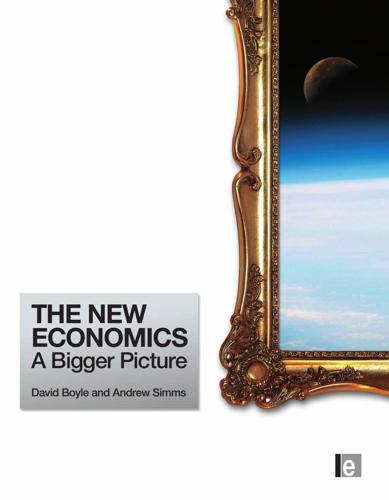
The New Economics: A Bigger Picture
by
David Boyle
and
Andrew Simms
Published 14 Jun 2009
There have been several proposals for reinvigorating SDRs in recent years for various purposes that range from reserve allocation to poverty reduction and the provision of global public goods. The financier George Soros has suggested that SDR allocations be used to provide global public goods, in particular for the fight against communicable disease, especially AIDS and TB, for education, judicial reform and initiatives to close the digital divide. Other commentators have suggested that the IMF use SDR allocations to cancel some of the debt owed by poor countries. Create a new currency based on emissions rights Instead of being linked to gold, currencies could be linked to carbon emission entitlements under a global system that sets a safe cap on emissions.
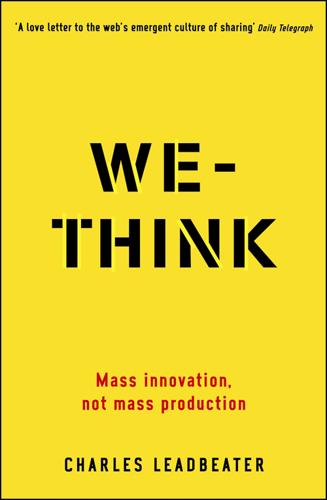
We-Think: Mass Innovation, Not Mass Production
by
Charles Leadbeater
Published 9 Dec 2010
They cover the following topics: Wikipedia: Examines the accuracy and economics of the online encyclopaedia. OhmyNews: A briefing on the online news site. Linux: A history of the popular open-source operating system, including an overview of the Linux community and a rundown of its expansion. Digital Divides: The web’s impact on equality. International Polar Year: A multinational feat of collaboration in climate science. 2008 Presidential Campaign: The influence of web 2.0 and social networking on the US presidential election 2008. Open-Source Manufacturing: Will the web hand production over to the people?

Propaganda and the Public Mind
by
Noam Chomsky
and
David Barsamian
Published 31 Mar 2015
The Internet is a tremendous tool for information, understanding, organizing, and communication. There is no doubt at all that the business world, which has been given this public gift, intends to turn it into something else. If they’re able to do it, that will be a very serious blow to freedom and democracy. And this is quite independent from what is called the “digital divide,” which is access at all. That’s also very critical, but it’s not the same issue. You described the Intenet to me once as a “lethal weapon.” Someone once wrote an article and put your name on it and circulated it on the Net. That happened. That article was then picked off the Net and published.

Scary Smart: The Future of Artificial Intelligence and How You Can Save Our World
by
Mo Gawdat
Published 29 Sep 2021
Each of these reshaped our lives in ways we could have never predicted. Jason is right, I thought. Imagining the future of humanity before the age of the printing press or personal computing or the internet was nothing more than a guess. At those times we worried about losing jobs or creating a digital divide that would shred our society to pieces. Well, we’re still here and we’ve muddled through it somehow. But then I recognized a fundamental difference. Every piece of tech we’ve ever created, up to the creation of AI, was just what Jason described it as – a tool. Which basically meant it was within our control.
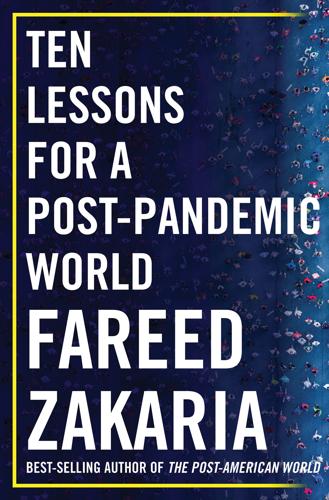
Ten Lessons for a Post-Pandemic World
by
Fareed Zakaria
Published 5 Oct 2020
Even then, in 2010, the majority of India’s billion-plus people couldn’t go online with their phones, which were usually simple handsets. Then along came 4G, which allowed a $30 smartphone to connect easily to the Internet. Now over 550 million people in India have a minicomputer in their hands. They use it to buy and sell products, watch the news, entertain themselves, join groups, and work remotely. India leapfrogged the digital divide with astonishing speed. In 2015, it ranked 155th in the world in mobile broadband penetration. By 2017, it was consuming more mobile data than any other country on earth. And by 2025, hundreds of millions more Indians are expected to have handheld computers connected to the Internet. This move has been given a massive push by Mukesh Ambani, the chairman of Reliance, India’s largest company, who invested a staggering $37 billion in creating a new wireless network and offering it to consumers at giveaway prices.
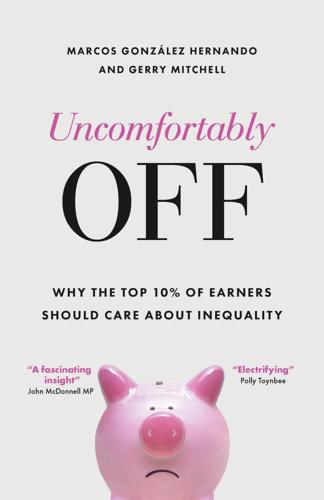
Uncomfortably Off: Why the Top 10% of Earners Should Care About Inequality
by
Marcos González Hernando
and
Gerry Mitchell
Published 23 May 2023
Without social services, too many people will remain vulnerable and unable to gain access to the basic ingredients of wellbeing and economic participation, including education, job security and health. And without innovation, economic growth and solutions to pressing societal problems – whether a pandemic, climate change or the digital divide – will remain out of reach.50 However, rather than a government with moral resolve and a bold, visionary plan for our future, the pandemic has exposed the moral bankruptcy of the corporate governance we currently have. It has allowed billions in public bailout money to be funnelled to shareholders while jobs are cut and massive companies are allowed to profiteer in crucial sectors of the economy.

Amateurs!: How We Built Internet Culture and Why It Matters
by
Joanna Walsh
Published 22 Sep 2025
, ArtReview, 5 May 2023. 43.Ugrešić, The Museum of Unconditional Surrender, p. 28. 2001: Decuperation Loops 1.Giorgio Agamben, ‘The Melancholy Angel’, in The Man Without Content (Stanford University Press, 1999), p. 110. 2.Ibid. 3.Puloma Basu and Robert Hatch-Miller, Other Music (Production Company Productions, 2019, 83 minutes). 4.Jean-Luc Nancy, The Sense of the World (University of Minnesota Press, 1998), p. 126. 5.Sasha Frere-Jones, ‘Looped In’, New Yorker, 3 November 2014. 6.Karl Marx, Capital: Volume II, 1885, marxists.org. 7.Gilles Deleuze and Felix Guattari, Anti-Oedipus (University of Minnesota Press, 1983), p. 10. 8.Ibid., p. 4. 9.Tim O’Reilly, ‘What is Web 2.0’, oreilly.com, 30 September 2005. 10.McKenzie Wark, Capital Is Dead (London: Verso, 2019), p. 45. 11.Julia Kristeva, ‘Women’s Time’, Signs, vol. 7, no. 1, autumn 1981, p. 18. 12.Claire Bishop, ‘The Digital Divide: Contemporary Art and New Media’, Artforum, vol. 51, no. 1, September 2012. 13.Nicholas Carr, The Shallows: What the Internet Is Doing to Our Brains (W. W. Norton & Company, 2010), p. 222. 14.Walter Benjamin, ‘Paralipomena to “On the Concept of History” ’, in Selected Writings: Volume 4 (1938–1940) (Harvard University Press, 1996), p. 402. 15.Nick Land, ‘A Quick and Dirty Introduction to Accelerationism’, Jacobite, 25 May 2017. 16.Rancière, Aesthetics and its Discontents, p. 24. 17.Hebdige, Subculture, p. 90. 18.David Stubbs, Future Sounds: The Story of Electronic Music from Stockhausen to Skrillex (Faber & Faber, 2018), p. 352. 238 19.Lars Gotrich, ‘Divinity from Dust: The Healing Power of “The Disintegration Loops” ’, npr.org, 15 November 2012. 20.Joseph P.

The Rise of the Network Society
by
Manuel Castells
Published 31 Aug 1996
By 2009 rates of penetration reached more than 60 percent in most developed countries and were increasing at a fast pace in developing countries. Global Internet penetration in 2008 was still at around one-fifth of the world’s population and fewer than 10 percent of Internet users had access to broadband. However, since 2000, the digital divide, measured in terms of access, has been shrinking. The ratio between Internet access in OECD and developing countries fell from 80.6:1 in 1997 to 5.8:1 in 2007. In 2005, almost twice as many new Internet users were added in developing countries as in OECD countries. China is the country with the fastest growth of Internet users, even though the penetration rate remained under 20 percent of the population in 2008.
…
death; see also infant mortality Deben, Leon debt; see also lending December, John decision-making deindustrialization Dell Computers Dell-Direct World Denison, Edward F Dentsu Institute Dentsu Institute/DataFlow International deregulation derivatives Derriennic, J. P. deskilling developing countries: FDI; global economy; IMF/World Bank; multinational corporations; trade imbalance; see also Third World developmental state Deyo, Frederick Di Fazio, Williams Dicken, Peter Dickinson, H. W. digital divide digital switching distributive services Dizard, Wilson P. DNA Dodgson, M. Dohse, K. Dolly the sheep Dondero, George Dordick, Herbert S. Dosi, Giovanni Dower, John W. Downs, Anthony downsizing Doyle, Marc Draper, Roger Drexler, K. Eric Drucker, Peter F. drug trade Duarte, Fabio Dubois, Pierre Duchin, Faye Dunford, M.
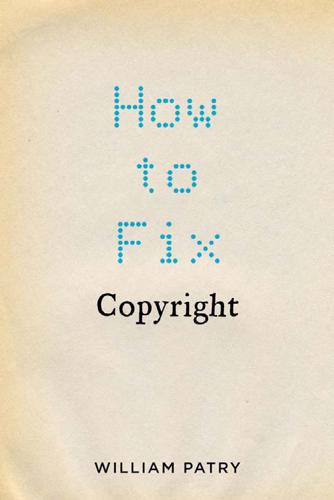
How to Fix Copyright
by
William Patry
Published 3 Jan 2012
Such review should be mandated legislatively to avoid separation of powers or authorization issues. See http://www.slightlyrightofcentre.com/2011/01/exclusive-ecraised-concerns-on-uk.html. Id., Response 8. A May 2011 report of the Special Rapporteur to the United Nations on the promotion and protection of the right to freedom of opinion and expression decried the increasing digital divide between the poor and other members of society, and condemned efforts like those in the UK, France, and New Zealand to cut off Internet access for alleged copyright violations as an outright violation of human rights under the International Covenant on Civil and Political Rights. See United National General Assembly, document A/ HRC/17/27, May 16, 2011, paragraphs 61 and 78, available at: http:// www2.ohchr.org/english/bodies/hrcouncil/docs/17session/A.
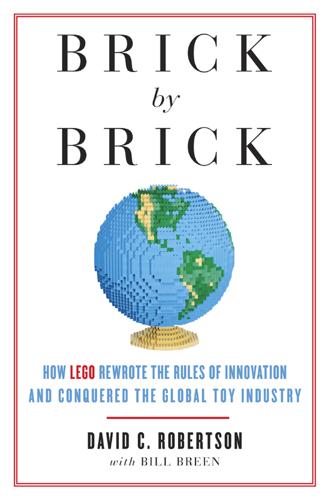
Brick by Brick: How LEGO Rewrote the Rules of Innovation and Conquered the Global Toy Industry
by
David Robertson
and
Bill Breen
Published 24 Jun 2013
But LEGO executives have long known they had to disrupt their plastic brick business with a digital brick business, lest a competitor do it for them. Minecraft, however, got to the digital future first. In 2012, the year LEGO shuttered Universe, Mojang—Minecraft’s parent company—earned $90 million on sales of $235 million. As 3-D printing improves, LEGO might one day find that Minecraft (or something like it) has jumped the digital divide to become a more compelling, richer, and easier way to construct plastic buildings, characters, and vehicles. As many disrupted companies have learned, what was low-end yesterday can be mainstream tomorrow. One of Clayton Christensen’s most counterintuitive arguments is that managers sometimes fail because they are smart, not because they are stupid.
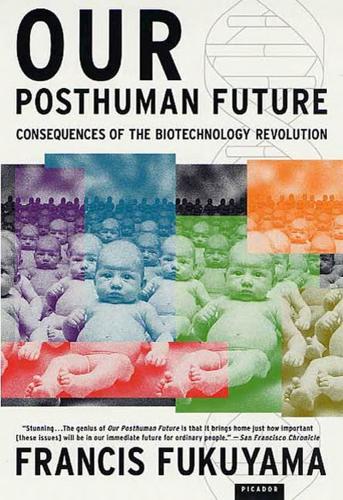
Our Posthuman Future: Consequences of the Biotechnology Revolution
by
Francis Fukuyama
Published 1 Jan 2002
Personal computers and the Internet are examples: these new forms of information technology (IT) promised to create wealth, spread access to information and therefore power around more democratically, and foster community among their users. People had to look hard for downsides to the Information Revolution; what they have found to date are issues like the so-called digital divide (that is, inequality of access to IT) and threats to privacy, neither of which qualify as earth-shaking matters of justice or morality. Despite occasional efforts on the part of the world’s more statist societies to try to control the use of IT, it has blossomed in recent years with minimal regulatory oversight on either a national or international level.

The Age of Stagnation: Why Perpetual Growth Is Unattainable and the Global Economy Is in Peril
by
Satyajit Das
Published 9 Feb 2016
The lack of public education facilities in many countries forces disadvantaged students to take out loans, leaving them deeply indebted. Poor health and chronic illnesses affect employability and the ability to complete educational and training courses. Lack or the high cost of childcare prevents participation in the workforce and the improving of skills. The digital divide exacerbates inequality. Lower income families frequently lack access to fast broadband connections, essential to participation in the knowledge economy. This deprives children of an essential educational tool. The gap in educational achievements between the children of higher and lower income families, measured by college enrolment and graduation rates, has increased.
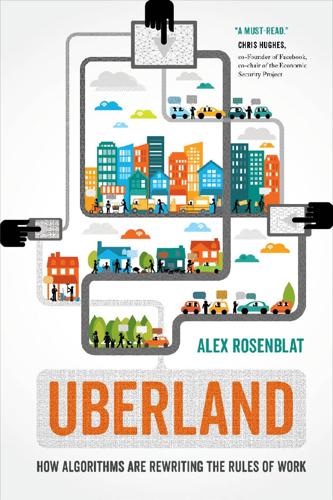
Uberland: How Algorithms Are Rewriting the Rules of Work
by
Alex Rosenblat
Published 22 Oct 2018
This logic is especially salient because some corners of American technology culture de-emphasize the importance of a social welfare net and are receptive instead to the interventions of private wealth to salve public deficits. One of Uber’s Silicon Valley neighbors, Facebook, received serious criticism when it took that attitude abroad. In a program called “Free Basics,” Facebook aimed to bring the Internet to underserved populations in India on the premise that this program would bridge the digital divide between those who are connected and those who are not. “Free Basics” wasn’t the Internet, though; it was a Facebook portal with some access to Facebook-curated content and limited access to other digital functions. In effect, Facebook positioned itself as the Internet. In a backlash that continues through 2018, Facebook’s efforts have been widely decried as “digital colonialism.”7 There is a certain receptiveness to tech companies who come in to replace public infrastructure, because they promise certain benefits, like free laptops or, in Uber’s case, less road congestion.8 New York Times journalist Natasha Singer identified these dynamics in a multipronged investigation of education-technology adoption in public schools.9 Her investigation revealed that tech oligarchs were equipping schools with ed-tech programs and devices, and in the process they were changing the nature of the curriculum without any public reckoning of these changes.

The Pirate's Dilemma: How Youth Culture Is Reinventing Capitalism
by
Matt Mason
What are these teenagers going to have to say about these things when they get the chance? One thing is certain: they will get that chance. The Internet was great news for those of us with high-speed connections, but didn't mean much to the half of the world's population that has never used a telephone. Efforts are being made to close the digital divide between the developed and the developing worlds. Open-source education, $100 laptops, and free, decentralized WiFi networks are a great start. A report on Internet readiness rankings by the Economist Intelligence Unit in April 2007 shows that Asian and African nations are catching up with big Net users in the West.
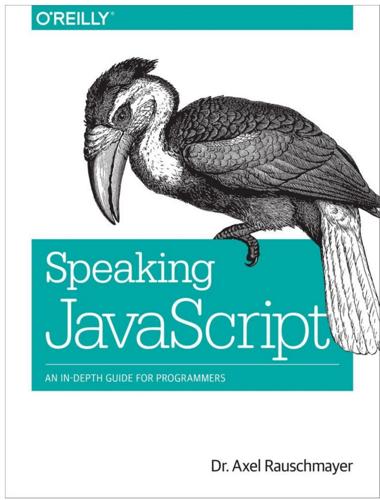
Speaking JavaScript: An In-Depth Guide for Programmers
by
Axel Rauschmayer
Published 25 Feb 2014
Bitwise Shift Operators JavaScript has three bitwise shift operators: number << digitCount (left shift): > (parseInt('1', 2) << 1).toString(2) '10' number >> digitCount (signed right shift): The 32-bit binary number is interpreted as signed (see the preceding section). When shifting right, the sign is preserved: > (parseInt('11111111111111111111111111111110', 2) >> 1).toString(2) '-1' We have right-shifted –2. The result, –1, is equivalent to a 32-bit integer whose digits are all 1 (the twos’ complement of 1). In other words, a signed right shift by one digit divides both negative and positive integers by two. number >>> digitCount` (unsigned right shift): > (parseInt('11100', 2) >>> 1).toString(2) '1110' As you can see, this operator shifts in zeros from the left. The Function Number The function Number can be invoked in two ways: Number(value) As a normal function, it converts value to a primitive number (see Converting to Number): > Number('123') 123 > typeof Number(3) // no change 'number' new Number(num) As a constructor, it creates a new instance of Number (see Wrapper Objects for Primitives), an object that wraps num (after converting it to a number).

Data Action: Using Data for Public Good
by
Sarah Williams
Published 14 Sep 2020
That doesn't necessarily mean these communities were satisfied with the services; it is more likely related to a lack of knowledge about making 311 calls in the community, or to cultural norms around government responsibilities toward the public. As a result, we used the analysis as evidence to prove the need advertise the 311 hotline in languages other than English. Lack of data can also illustrate digital divides—areas that have fewer technologies can point to the need for the development of technology infrastructure. Ground-Truthing Our Results with the People Data Analysis Affects Using data in this way shows the importance of validating the results, or ground-truthing our data analytics, with the people represented in the data or by those who will be affected by its implications.

How to Prevent the Next Pandemic
by
Bill Gates
Published 2 May 2022
GO TO NOTE REFERENCE IN TEXT Algebra I is a key milestone: Timothy Stoelinga and James Lynn, “Algebra and the Underprepared Learner,” UIC Research on Urban Education Policy Initiative, June 2013, https://mcmi.uic.edu/. GO TO NOTE REFERENCE IN TEXT The gap has narrowed: Emily A. Vogels, “Some Digital Divides Persist Between Rural, Urban and Suburban America,” Pew Research Center, Aug. 19, 2021, https://www.pewresearch.org/. GO TO NOTE REFERENCE IN TEXT This is especially true for: Sara Atske and Andrew Perrin, “Home Broadband Adoption, Computer Ownership Vary by Race, Ethnicity in the U.S.,” Pew Research Center, July 16, 2021, https://www.pewresearch.org.

Wired for War: The Robotics Revolution and Conflict in the 21st Century
by
P. W. Singer
Published 1 Jan 2010
As Ralph Peters succinctly puts it, “Now the ignorant know what’s going on, and so there is less bliss.” The have-nots may be living in the same squalor as their great-great-great-grandparents, but they now do have a television set or Internet connection that allows them to see that it is not that way for everyone. Experts sometimes talk about the “digital divide,” that certain information technologies like the Internet are not being spread around the globe at equal rates. The real divide may instead come from its solution: the more people are connected, the more what separates us becomes visible. The same holds for the cliché of the “borderless world.”
…
It will also be a religious problem, some opposition will [even] come from the Christian right. They are already asking questions like, ‘Are we playing God? Is this God’s will?’ ” Finally, Clarke sees anger brewing among those left economically disadvantaged by the technology. “There will be a real digital divide—people who don’t have the skill sets to compete anymore.” This opposition is just starting to crystallize, but at its essence is a fundamental sense of being overwhelmed by change. “When they look around, they see real questions about genetics, AI, robotics. . . . They see a technologic horizon rushing at them, see a radical change for the nature of society.”

The Singularity Is Near: When Humans Transcend Biology
by
Ray Kurzweil
Published 14 Jul 2005
We have societies in Asia that jumped from agrarian economies to information economies, without going through industrialization. NED: That may be so, but the digital divide is getting worse. RAY: I know that people keep saying that, but how can that possibly be true? The number of humans is growing only very slowly. The number of digitally connected humans, no matter how you measure it, is growing rapidly. A larger and larger fraction of the world's population is getting electronic communicators and leapfrogging our primitive phone-wiring system by hooking up to the Internet wirelessly, so the digital divide is rapidly diminishing, not growing. MOLLY 2004: I still feel that the have/have not issue doesn't get enough attention.
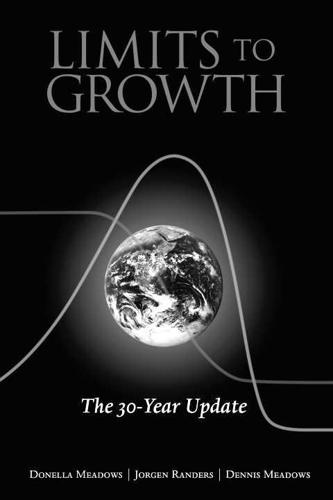
The Limits to Growth: The 30-Year Update
by
Donella H. Meadows
,
Jørgen Randers
and
Dennis L. Meadows
Published 15 Apr 2004
We disagree; the needs of the underprivileged cannot be effectively communicated, nor can the world benefit from their contributions, unless their voices can be heard. Some of the greatest gains in material and energy efficiency have come in the design of communications equipment. It is possible within a sustainable ecological footprint for everyone to have the opportunity for global as well as local networking. We must close the "Digital Divide." If some part of the sustainability revolution interests you, you can find or form a network of others who share your particular interests. The network will help you discover where to go for information, what publications and tools are available, where to find administrative and financial support, and who can help with specific tasks.

Steampunk Prime: A Vintage Steampunk Reader
by
Mike Ashley
and
Paul Di Filippo
Published 1 Jul 2010
. _____ Cult Magazines: From A to Z, A Compendium of Culturally Obsessive & Curiously Expressive Publications Edited by Earl Kemp & Luis Ortiz $34.95 ISBN: 978-1-933065-14-4 Featuring full-color reproductions of hundreds of distinctive cult magazine cover images, this reference’s backgrounds, histories, and essays offer a complete picture of a bygone era. Fully illustrated in color. _____ Other Spaces, Other Times: A Life Spent in the Future by Robert Silverberg $29.95 Hardcover ISBN: 978-1-933065-12-0 A collection of autobiographical writings. Fully illustrated, partial color. _____ Paint or Pixel: The Digital Divide in Illustration Art Edited by Jane Frank $29.95 ISBN: 978-1-933065-10-6 This collection of art and essays, by the best of today’s science fiction and fantasy artists, presents candid opinions behind the revolution now taking place in the field. Fully illustrated in color. _____ Library of American Artists Vol. 1: Arts Unknown: The Life & Art of Lee Brown Coye by Luis Ortiz; $39.95 hardcover.Fully illustrated in color.
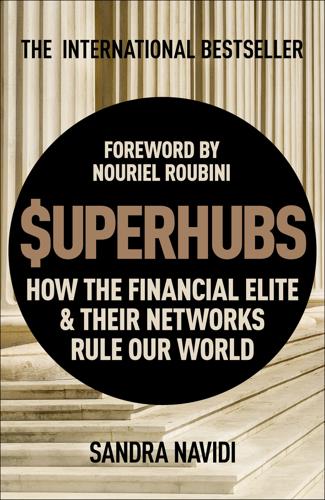
SUPERHUBS: How the Financial Elite and Their Networks Rule Our World
by
Sandra Navidi
Published 24 Jan 2017
Gillian Tett, “Klaus Schwab Opens Door for His Davos Successor,” Financial Times, May 19, 2015, https://next.ft.com/content/0fcb6966-fdfd-11e4-9f10-00144feabdc0. 5. Jaron Lanier, You Are Not a Gadget: A Manifesto (New York: Random House, 2009), Kindle locations 121-26, Kindle edition. 6. Mark Bauerlein, The Digital Divide: Arguments for and Against Facebook, Google, Tex-ting, and the Age of Social Networking (New York: Penguin, 2011), Kindle location 60, Kindle edition; Sherry Turkle, Alone Together: Why We Expect More from Technology and Less from Each Other (New York: Perseus Books Group, 2011), Kindle edition. 7.

The Human Age: The World Shaped by Us
by
Diane Ackerman
Published 9 Sep 2014
Frankenstein’s Cat: Cuddling Up to Biotech’s Brave New Beasts. London: Oneworld, 2013. Balmford, Andrew. Wild Hope: On the Front Lines of Conservation Success. Chicago: University of Chicago Press, 2012. Bates, Marston. Man in Nature. 2nd ed. Englewood Cliffs, NJ: Prentice-Hall, 1964. Bauerlein, Mark, ed. The Digital Divide: Arguments for and against Facebook, Google, Texting, and the Age of Social Networking. New York: Tarcher/Putnam, 2011. Benyus, Janine. Biomimicry: Innovation Inspired by Nature. New York: William Morrow, 2002. Berry, Thomas. The Dream of the Earth. San Francisco: Sierra Club Books, 1990. Blanc, Patrick.
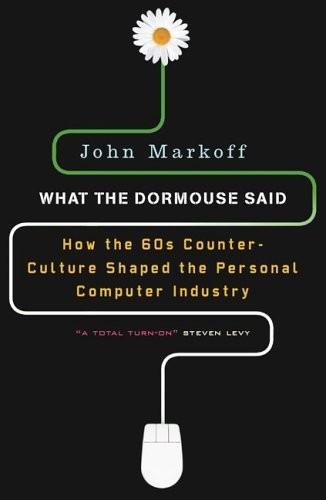
What the Dormouse Said: How the Sixties Counterculture Shaped the Personal Computer Industry
by
John Markoff
Published 1 Jan 2005
To Nelson’s thinking and to the minds of the People’s Computer Company hobbyists, cybercrud was the embodiment of the dull, gray, IBM-dominated world of the computing professionals. His book, he explained, was his break with the world of computer professionals, who had once been genuine computer fans but who had unfortunately grown older and become reactionary. It was another mark of the digital divide between the class of experts who controlled the machines from within the glass rooms and the unruly outsiders who had begun to glimpse the idea of computing as a medium, one they could control for their own means. By the early 1970s, Menlo Park had become ground zero for the new search for community that had evolved from the antiwar politics and the drug culture of the previous decade.

Don't Be Evil: How Big Tech Betrayed Its Founding Principles--And All of US
by
Rana Foroohar
Published 5 Nov 2019
Tech and finance sit at the top of that chart, whereas sectors that actually create the most jobs—such as retail, education, and government—remain woefully behind. That means you end up with a two-tiered economy: a top level that’s very productive, takes the majority of wealth, and creates few jobs, and a bottom one that stagnates.28 There are large digital divides along geographic lines as well, which further exacerbates the winner-takes-all trend. For companies to exploit a more entrepreneurial, digitalized economy—whatever sector they operate in—they need access to high-speed broadband, which is three times as likely in urban areas compared with rural ones.
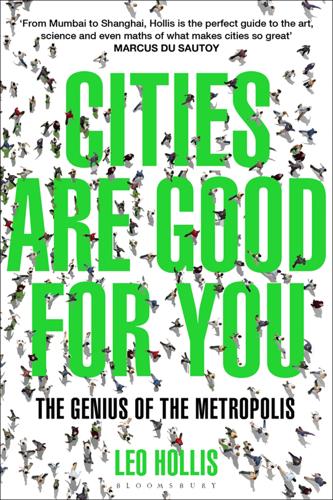
Cities Are Good for You: The Genius of the Metropolis
by
Leo Hollis
Published 31 Mar 2013
Technology can be used for inclusion with great impact: M-Pesa offers banking services for the first time to millions who never had an account in Kenya; it is also very good at collecting and gathering data. The smart city is one that integrates the big city-hall projects but allows more open-source involvement to continue. If not, there is every chance that it will be proven once again that we learn nothing from history and the two sides of the digital divide – the cyber Robert Moses and Jane Jacobs – will clash, just as they did in 1961. The bottom-up ‘info-structure’ will not by its nature be an ‘end-to-end solution’. It will combine a number of devices and platforms, from electronic road signage, mobile phones and GPS, to bikes and maps. It will undoubtedly exhibit some of the most creative and innovative thinking about the metropolis, opening up new ways of navigating our cities, making urban life easier and more diverse.

New Laws of Robotics: Defending Human Expertise in the Age of AI
by
Frank Pasquale
Published 14 May 2020
Jurisprudence on obscenity revolves around such distinctions; however, they are also embedded in a much broader framework of evaluation. Without such context, the physical / digital distinction is not a good proxy for the aesthetic / non-aesthetic divide: one can easily imagine drawn pornography and digital drawings or photographs of nude bodies with great artistic merit. The digital / non-digital divide is, however, very useful in another way: it is much easier to imagine a future machine-vision system effortlessly parsing the difference between paint and pixels than convincingly distinguishing between a still from the beginning of a pornographic film and a photograph documenting the lives of sex workers in a tasteful and artistic way.
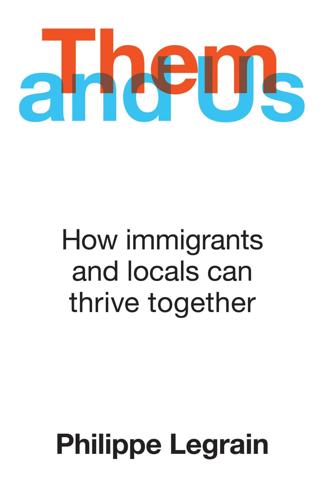
Them and Us: How Immigrants and Locals Can Thrive Together
by
Philippe Legrain
Published 14 Oct 2020
Health effects of African health professional emigration’, Center for Global Development Working Paper 114, March 2007. https://www.cgdev.org/sites/default/files/13123_file_Clemens_Do_visas_kill_3_.pdf 37 Michael Clemens, Cindy Huang, Jimmy Graham and Kate Gough, ‘Migration Is What You Make It: Seven Policy Decisions that Turned Challenges into Opportunities’, Center for Global Development, May 2018. https://www.cgdev.org/publication/migration-what-you-make-it-seven-policy-decisions-turned-challenges-opportunities#ftnref8 38 Albert Bollard, David McKenzie, Melanie Morten and Hillel Rapoport, ‘Remittances and the brain drain revisited: The microdata show that more educated migrants remit more’, World Bank Economic Review, 25:1, 2011, pp. 132–56. https://doi.org/10.1093/wber/lhr013 39 Aisha Salaudeen, ‘Nigerian neurosurgeon takes pay cut to perform free operations’, CNN, 4 October 2019. https://edition.cnn.com/2019/10/03/africa/dr-sulaiman-free-surgeries-intl/index.html 40 For an overview, see Priyanka Debnath, ‘Leveraging Return Migration for Development: The Role of Countries of Origin – A Literature Review’, KNOMAD, November 2016. https://www.knomad.org/publication/leveraging-return-migration-development-role-countries-origin-literature-review 41 F.C. Kohli, The IT Revolution in India: Selected Speeches and Writings, Rupa, 2005. 42 Forbes, ‘2019 Malaysia’s 50 Richest Net Worth. #38 Anthony Tan’. Accessed on 24 January 2020 at https://www.forbes.com/profile/anthony-tan/#6d35624a485c 43 Anthony Tan, ‘Tech groups must address the digital divide in south-east Asia’, Financial Times, 9 January 2020. https://www.ft.com/content/f5818706-3093-11ea-a329-0bcf87a328f2 44 Mercedes Ruehl and James Kynge, ‘Fintech: the rise of the Asian ‘super app’’, Financial Times, 12 December 2019. https://www.ft.com/content/0788d906-1a7b-11ea-97df-cc63de1d73f4 45 Jinyoung Kim and Jungsoo Park, ‘Foreign Direct Investment and Country-Specific Human Capital’, Economic Inquiry, 51:1, 2013, pp. 198–210. https://ideas.repec.org/a/bla/ecinqu/v51y2013i1p198-210.html 46 Huiyao Yang, ‘China’s Return Migration and its Impact on Home Development’, UN Chronicle, L:3, September 2013. http://unchronicle.un.org/article/chinas-return-migration-and-its-impact-homedevelopment 47 ‘What happens when Chinese students abroad return home’, The Economist, 17 May 2018. https://www.economist.com/special-report/2018/05/17/what-happens-when-chinese-students-abroad-return-home?

Neurodiversity at Work: Drive Innovation, Performance and Productivity With a Neurodiverse Workforce
by
Amanda Kirby
and
Theo Smith
Published 2 Aug 2021
An ‘empty review’ of research into ‘neurodiversity’ and a road map for developing the inclusion agenda, Equality, Diversity and Inclusion: An International Journal 16 Roberson, Q M (2018) Diversity in the workplace: a review, synthesis, and future research agenda, Annual Review of Organizational Psychology and Organizational Behavior, https://doi.org/10.1146/annurev-orgpsych-012218-015243 (archived at https://perma.cc/6UEW-PUQE) 17 Kalargyrou, V, Kalargiros, E and Kutz, D (2018) Social entrepreneurship and disability inclusion in the hospitality industry, International Journal of Hospitality & Tourism Administration, https://www.tandfonline.com/doi/full/10.1080/15256480.2018.1478356 (archived at https://perma.cc/XP7G-23PU) 18 Bassuk, E L et al (2016) Peer-delivered recovery support services for addictions in the United States: A systematic review, Journal of Substance Abuse Treatment, https://doi.org/10.1016/j.jsat.2016.01.003 (archived at https://perma.cc/E4W6-6XUJ) 19 Leamy, M et al (2011) Conceptual framework for personal recovery in mental health: systematic review and narrative synthesis, British Journal of Psychiatry, https://doi.org/10.1192/bjp.bp.110.083733 (archived at https://perma.cc/VWF7-LR2J) 20 Thamesreach (2010) Homelessness Literacy Report, Turning the Key: Portraits of low literacy amongst people with experience of homelessness, https://thamesreach.org.uk/wp-content/uploads/2017/07/Turning-the-Key-Literacy-Report.pdf (archived at https://perma.cc/EVH5-NFZA) 21 Thamesreach (2010) Homelessness Literacy Report, Turning the Key: Portraits of low literacy amongst people with experience of homelessness, https://thamesreach.org.uk/wp-content/uploads/2017/07/Turning-the-Key-Literacy-Report.pdf (archived at https://perma.cc/EVH5-NFZA) 22 Office of National Statistics (2019) Exploring the UK’s Digital Divide, 4 March, https://www.ons.gov.uk/peoplepopulationandcommunity/householdcharacteristics/homeinternetandsocialmediausage/articles/exploringtheuksdigitaldivide/2019-03-04#what-are-the-barriers-to-digital-inclusion (archived at https://perma.cc/8WN8-C67W) 23 House of Commons Science and Technology Committee (2018) What digital skills do adults need to succeed in the workplace now and in the next 10 years?
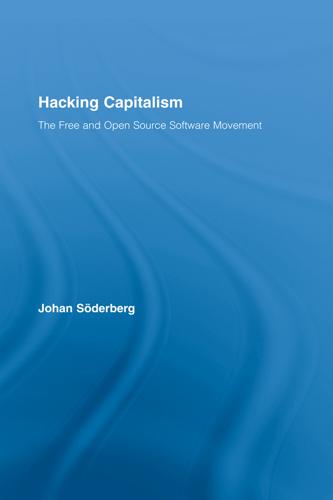
Hacking Capitalism
by
Söderberg, Johan; Söderberg, Johan;
David Harvey, Spaces of Capital—Towards a Critical Geography (Edinburgh: Edinburgh University Press, 2001), 246–7. 54. Some examples hereof are the Simputer sponsored by the Indian government and the $100-computer from MIT. In both cases the machines are intended for rural populations in developing countries. In addition to closing the so-called digital divide, these projects will help to spread free software in the South. 55. Interview with Damjan Lampret, initiator of OpenCores. The project can be found at: www.opencores.org. Another interesting free hardware project is the GNUbook. http://gnubook.org/ 56. In an article in a computer magasine with the title “Can Software Replace Hardware”, the journalist tells about the promises of FPGA technology.
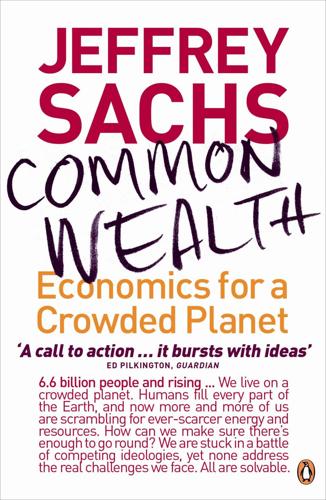
Common Wealth: Economics for a Crowded Planet
by
Jeffrey Sachs
Published 1 Jan 2008
By standard and conservative principles of foundation management, a $3.5 trillion endowment would have a 5 percent payout of around $175 billion, an amount sufficient to extend basic health care to all the poorest of the world; end massive pandemics of AIDS, TB, and malaria; jump-start an African Green Revolution; end the digital divide; and address the crying need for safe drinking water for one billion people. The group of fewer than one thousand people would outstrip the entire $105 billion development aid of the twenty-two donor governments that represent a combined population of nearly one billion people. This speaks both to the incredible wealth of the super-rich and to the current shortsightedness of Washington, Tokyo, and much of Europe.

Code: The Hidden Language of Computer Hardware and Software
by
Charles Petzold
Published 28 Sep 1999
Keep in mind that the hexadecimal digits A and C are decimal 10 and 12, respectively: Converting decimal numbers to hexadecimal generally requires divisions. If the number is 255 or smaller, you know that it can be represented by 1 byte, which is two hexadecimal digits. To calculate those two digits, divide the number by 16 to get the quotient and the remainder. Let's use an earlier example—the decimal number 182. Divide 182 by 16 to get 11 (which is a B in hexadecimal) with a remainder of 6. The hexadecimal equivalent is B6h. If the decimal number you want to convert is smaller than 65,536, the hexadecimal equivalent will have four digits or fewer.

What to Think About Machines That Think: Today's Leading Thinkers on the Age of Machine Intelligence
by
John Brockman
Published 5 Oct 2015
Can thinking networks of things instead be engineered so that direct human involvement or sign-off is required for certain types of actions taken by machines? Will empowered smart clouds exacerbate global inequalities? Might they exacerbate global ideological and religious conflicts if we don’t act to stop that? If we want to prevent the global digital divide from deepening, what early steps must be taken? Will these networks be open or closed? Will any innovator from anywhere be able to plug something new into a network and communicate—or shall we say participate—without needing permission? Or will it be a controlled system, with certain companies or governments deciding who and what is allowed to connect at what price?
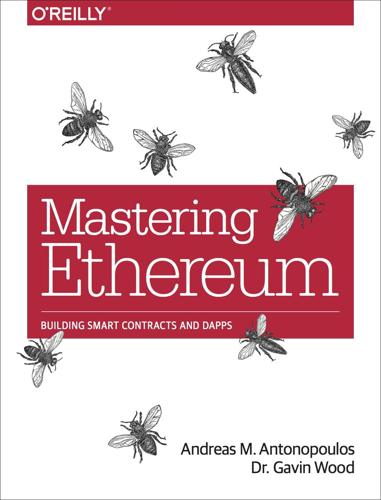
Mastering Ethereum: Building Smart Contracts and DApps
by
Andreas M. Antonopoulos
and
Gavin Wood Ph. D.
Published 23 Dec 2018
These 4 bytes — the first 4 bytes in the calldata starting at index 0 — are the function identifier, and this is how the EVM extracts that field. If this part isn’t clear to you, think of it like this: in base 10, 1234000 / 1000 = 1234. In base 16, this is no different. Instead of every place being a multiple of 10, it is a multiple of 16. Just as dividing by 103 (1000) in our smaller example kept only the topmost digits, dividing our 32-byte base 16 value by 1629 does the same. The result of the DIV (the function identifier) gets pushed onto the stack, and our stack is now: Stack <function identifier sent in data> Since the PUSH4 0xffffffff and AND instructions are redundant, we can ignore them entirely, as the stack will remain the same after they are done.
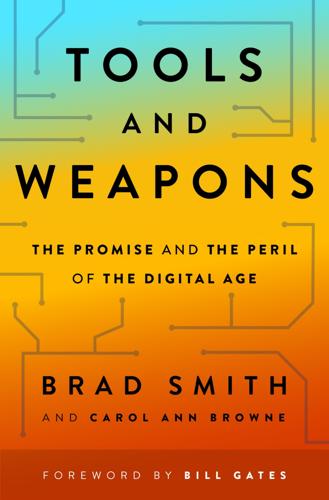
Tools and Weapons: The Promise and the Peril of the Digital Age
by
Brad Smith
and
Carol Ann Browne
Published 9 Sep 2019
John Kahan, “It’s Time for a New Approach for Mapping Broadband Data to Better Serve Americans,” Microsoft on the Issues (blog), Microsoft, April 8, 2019, https://blogs.microsoft.com/on-the-issues/2019/04/08/its-time-for-a-new-approach-for-mapping-broadband-data-to-better-serve-americans/. The same month, the Senate Committee on Commerce, Science, and Transportation zeroed in on the problem in a hearing. Committee Chairman Roger Wicker pointed out the deficiency in current data and said that “to close the digital divide we need to have accurate broadband maps that tell us where broadband is available and where it is not available at certain speeds.” Mitchell Schmidt, “FCC Broadband Maps Challenged as Overstating Access,” The Gazette, April 14, 2019, https://www.thegazette.com/subject/news/government/fcc-broadband-maps-challenged-as-overstating-access-rural-iowans-20190414.

These Strange New Minds: How AI Learned to Talk and What It Means
by
Christopher Summerfield
Published 11 Mar 2025
Consider, for example, a high-school student scratching their head over how to divide 392 by 7. Most people don’t keep the answer to this question in memory. However, if the student has been taught a method for long division, and knows their times tables, they can (1) divide 39 by 7, which gives 5 remainder 4, then (2) append the remainder to the residual digit, divide 42 by 7, which gives 6, and then (3) put these two digits together, giving the correct answer of 56. It doesn’t matter whether the student thinks these steps through in their head via an inner monologue, says them out loud or jots them down with a pencil. By explicitly articulating a formula for solving the problem step-by-step, they are more likely to come up with the right answer.
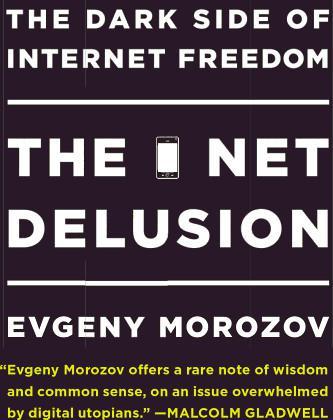
The Net Delusion: The Dark Side of Internet Freedom
by
Evgeny Morozov
Published 16 Nov 2010
“Ethnocomputing: ICT in Cultural and Social Context.” Communications of the ACM 49, no. 1 (2006): 130. Teich, Albert H., ed. Technology and the Future. 9th ed. Belmont, CA: Wadsworth/Thomson, 2003. Thorne, K., and A. Kouzmin. “Cyberpunk-Web 1.0 ‘Egoism’ Greets Group-Web 2.0 ‘Narcissism’: Convergence, Consumption, and Surveillance in the Digital Divide.” Administrative Theory & Praxis 30, no. 3 (2008): 299-323. Thrift, N. “New Urban Eras and Old Technological Fears: Reconfiguring the Goodwill of Electronic Things.” Urban Studies 33, no. 8 (1996): 1463. Van Dijck, J., and D. Nieborg. “Wikinomics and Its Discontents: A Critical Analysis of Web 2.0 Business Manifestos.”

In Spite of the Gods: The Rise of Modern India
by
Edward Luce
Published 23 Aug 2006
If you want to get something done in India, and all else has failed, adding “ji” to the end of the person’s name often has an open-sesame effect. * Given the lack of water, electricity, and paved roads in many, if not most, of India’s villages, the idea that India’s principal social and economic gulf is the digital divide does seem strange. It gives the impression that some of the urban leaders are insufficiently acquainted with the economic realities of rural India. 2. THE BURRA SAHIBS The Long Tentacles of India’s State Just as it is impossible to know when a swimming fish is drinking water, so it is impossible to find out when a government servant is stealing money.

Open Standards and the Digital Age: History, Ideology, and Networks (Cambridge Studies in the Emergence of Global Enterprise)
by
Andrew L. Russell
Published 27 Apr 2014
Other academics and policy makers, mostly unaware of the Internet’s history but eager to shape its future, borrowed the language of open systems and applied it to the Internet.78 By the late 1990s, even officials in the Federal Communications Commission who had studiously avoided making jurisdictional claims over the Internet mobilized the discourse of openness to address regulatory questions surrounding broadband Internet access and the “digital divide.” Cries to preserve the “open Internet” from censorship and monopolists – echoes of earlier generations of American expectations of open communication – soon became routine. Twenty-first-century lobbyists and advocates for “network neutrality” repeatedly and anachronistically declared that openness had always been a “fundamental principle of the Internet’s design.”
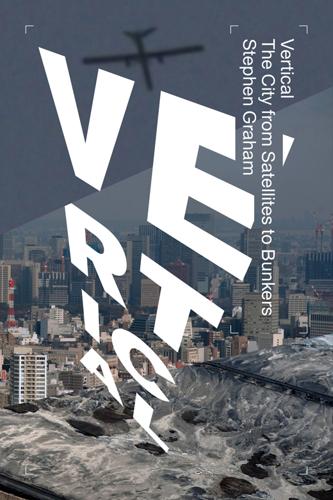
Vertical: The City From Satellites to Bunkers
by
Stephen Graham
Published 8 Nov 2016
In post-Katrina New Orleans, for example, efforts to use Google Earth to allow communities affected by the crisis to share information and support across the various neighbourhoods of the city inevitably ended up being geared overwhelmingly towards more affluent and whiter neighbourhoods because of wider geographies of the so-called ‘digital divide’ in the city.53 Certain information, moreover, is dramatically prioritised within the system – information for users of corporate services, automobile drivers and so on. Google Earth’s dominant, de facto data sets are heavily dominated by a cluster of key transnational corporations. To sustain their competitive advantages in tourism, travel, leisure services, oil consumption and food provision, these companies overlay the satellite surfaces with geolocation data geared towards exploiting their dominate position on this new screen interface.

Imaginable: How to See the Future Coming and Feel Ready for Anything―Even Things That Seem Impossible Today
by
Jane McGonigal
Published 22 Mar 2022
This force has hit the youngest generations hardest—studies show that during 2020 and 2021, mental health deteriorated for 80 percent of children and young adults across the globe. And there’s a real possibility that these problems will linger and have ripple effects for a decade or longer.5 So add the digital divide, youth disillusionment, and mental health deterioration to our 2035 super-scenario. Imagine that these forces are combining with climate change, increasing economic inequality, and the other most obvious threats. If we simulated this scenario today, and then in ten or twenty years from now we were all actually living through some truly unthinkable combination of one or more of these full-blown threats—perhaps with 70 percent of global youth on a work strike, a mental health pandemic affecting one billion people, increasingly frequent cyberattacks leading to monthslong global internet shutdowns, and extreme weather forcing mass climate migration—you wouldn’t say that I was a future-forecasting genius.
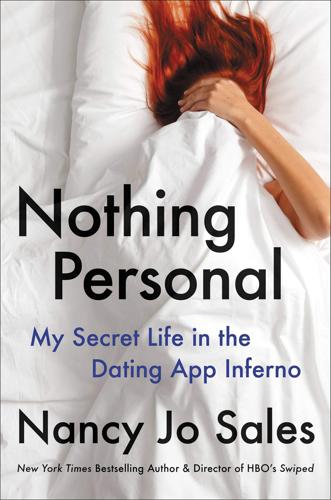
Nothing Personal: My Secret Life in the Dating App Inferno
by
Nancy Jo Sales
Published 17 May 2021
I could immediately see how hard it was going to be on kids, struggling with feelings of isolation and the constant possibility of suffering an attack online—particularly if they were girls, who suffer online harassment three times as often as boys, according to a 2019 study by the US Department of Education—without the ability to see their friends or teachers or counselors in person. In the pandemic, the conversation about kids and screens quickly became dominated by the issue of closing the digital divide. And of course, it’s vital to give all children access to Wi-Fi and screens in a world which demands their online participation, and which punishes them for being unable to log on. But regrettably, little has been said about educating children about the risks associated with online activity or about monitoring theirs for their own protection.
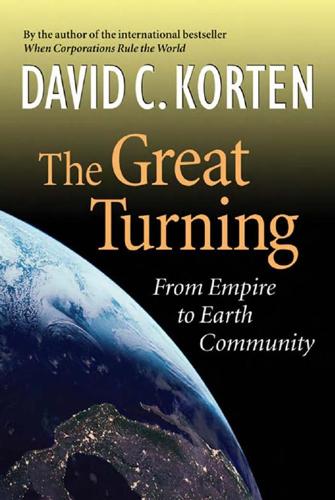
The Great Turning: From Empire to Earth Community
by
David C. Korten
Published 1 Jan 2001
It was not until the 1990s that the capability for interactive, instantaneous, multiparty global conversations became available via satellite-linked Internet, teleconferencing, and videoconferencing technologies. Development of the World Wide Web began in 1990. The first Web browser for popular use, Mosaic, was released in March 1993. Although a serious digital divide remains, these technologies are connecting the world’s people into an interactive communications web. Millions are now using them to create a dynamic, self-directing social organism that transcends the boundaries of race, class, religion, and nationality to function as a shared conscience of the species.

Connectography: Mapping the Future of Global Civilization
by
Parag Khanna
Published 18 Apr 2016
That’s why the protests stopped. The “anti” movements—anticapitalism, antitechnology, antiglobalization—always lose. They represent not universalistic humanism but parochial shortsightedness. Too little trade is a much bigger problem than unfair trade, too little Internet access is a much bigger problem than the digital divide, too little wealth creation is a much bigger problem than high inequality, and too few genetically modified crops is a much bigger problem than corporate farming. Decades of UN declarations calling for global economic redistribution would never have achieved what globalization has in a few short decades.

Consumed: How Markets Corrupt Children, Infantilize Adults, and Swallow Citizens Whole
by
Benjamin R. Barber
Published 1 Jan 2007
As the Fuggers established their social welfare settlement in Augsburg and Rockefeller his foundations and religious charities in Cleveland and New York, Gates made Redmond, Washington, the home not merely of his corporate ambitions but of the philanthropic efforts that, in scale and ambition, became Microsoft’s good angel twin. The Bill and Melinda Gates Foundation, run by his father, almost immediately became one of the world’s largest and most generous foundations—taking on not merely challenges of the digital divide (where philanthropic efforts might be said to help Microsoft’s own business) but working in areas like HIV education, providing vaccinations and medications in developing countries, and nurturing secondary education. Worth roughly $46 billion, Gates has pledged to give away up to 95 percent of his wealth to his foundation.
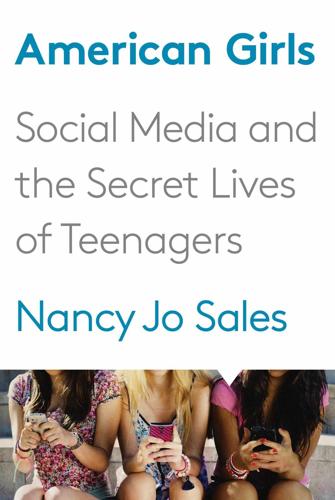
American Girls: Social Media and the Secret Lives of Teenagers
by
Nancy Jo Sales
Published 23 Feb 2016
From Front Porch to Back Seat: Courtship in Twentieth-Century America. Baltimore: Johns Hopkins University Press, 1988. Bates, Laura. Everyday Sexism…New York: Simon & Schuster, 2014. Bauerlein, Mark. The Dumbest Generation: How the Digital Age Stupefies Young Americans and Jeopardizes Our Future. New York: Jeremy P. Tarcher/Penguin, 2008. ———, ed. The Digital Divide: Arguments for and Against Facebook, Google, Texting, and the Age of Social Networking. New York: Jeremy P. Tarcher/Penguin, 2011. Bazelon, Emily. Sticks and Stones: Defeating the Culture of Bullying and Rediscovering the Power of Character and Empathy. New York: Random House, 2013. Bennett, Laura.
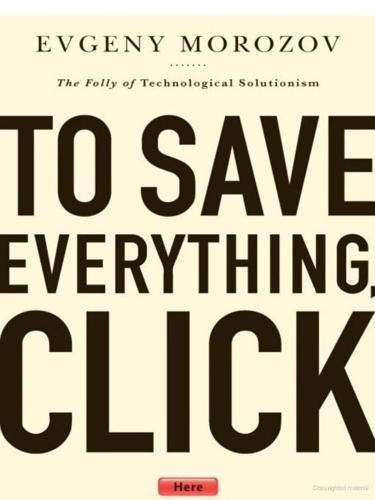
To Save Everything, Click Here: The Folly of Technological Solutionism
by
Evgeny Morozov
Published 15 Nov 2013
According to one New York–based image manager, “Some of these bankers were paying upwards of $10,000 a month to try to hide their names online as they began appearing in the press.” Good for the bankers; bad for the rest of us. But what about those who have done nothing wrong but can’t pay? Will a data-rich economy create new forms of digital divide, where only the rich can afford to defend their online reputations? It’s also hard to overlook the fact that most reputation consultants have a direct interest in making everyone anxious about his or her reputation, for this is the only way to ensure stable business growth. Silicon Valley visionaries like to imagine citizens as start-ups; thus, being constantly stressed out about one’s reputation is seen as the normal cost of doing business.
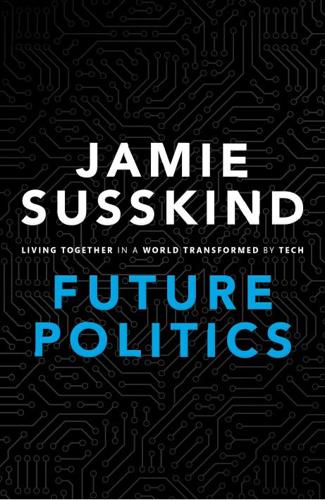
Future Politics: Living Together in a World Transformed by Tech
by
Jamie Susskind
Published 3 Sep 2018
‘Preparing for the Internet of Everything’ (undated) <https://www1.nyc.gov/site/ forward/innovations/iot.page> (accessed 6 Dec. 2017). Ober, Josiah. Democracy and Knowledge: Innovation and Learning in Classical Athens. Princeton: Princeton University Press, 2008. O’Hara, Kieron and David Stevens. Inequality.com: Power, Poverty and the Digital Divide. Oxford: Oneworld, 2006. O’Malley, James. ‘Bluetooth Mesh Is Going to Be a Big Deal: Here Are 6 Reasons Why You Should Care’. Gizmodo, 18 Jul. 2017 <http://www. gizmodo.co.uk/2017/07/bluetooth-mesh-is-going-to-be-a-big-dealhere-are-6-reasons-why-you-should-care/> (accessed 30 Nov. 2017). O’Neil, Cathy.

Free Speech: Ten Principles for a Connected World
by
Timothy Garton Ash
Published 23 May 2016
Van Schewick 2010 and Marsden 2010 helpfully show all the complexities 24. this was definitively established in the Supreme Court case of Ex parte Jackson 96 US 727 (1878) 25. see DeNardis 2014, chapter 6, for this point and lucidly explained technical detail 26. see Graham Reynolds, ‘Netherlands Passes Europe’s First Net Neutrality Legislation’, Free Speech Debate, http://freespeechdebate.com/en/case/62696/ 27. see Jordan 2010 28. although he ultimately rejects this argument, it is well stated by Jeremy Malcolm, ‘Net Neutrality and the Global Digital Divide’, Electronic Frontier Foundation, 24 July 2014, http://perma.cc/QN46-SVYP; specifically in relation to India, see Manu Joseph, ‘Another Take on Net Neutrality’, New York Times, 15 April 2015, http://www.nytimes.com/2015/04/16/world/asia/another-take-on-net-neutrality.html?_r=0 29. see reports and analysis by Elise Hu, ‘The White House Is Backing Strong Open Internet Rules’, NPR, 10 November 2014, http://www.npr.org/sections/alltechconsidered/2014/11/10/363013806/the-white-house-is-backing-the-internet-in-a-major-way, and ‘3.7 Million Comments Later, Here’s Where Net Neutrality Stands’, NPR, 17 September 2014, http://www.npr.org/sections/alltechconsidered/2014/09/17/349243335/3-7-million-comments-later-heres-where-net-neutrality-stands.

The Code: Silicon Valley and the Remaking of America
by
Margaret O'Mara
Published 8 Jul 2019
Mitchell, “Stock Options Accounting Bill Already Panned,” San Jose Mercury News, April 16, 1997, 1C. 34. Janelle Brown, “Start-up-cum-Goliath Works Hard to Get Help,” Wired, August 22, 1997, https://www.wired.com/1997/08/start-up-cum-goliath-works-hard-to-get-help/, archived at https://perma.cc/U62L-PRRS. 35. Julia Angwin and Laura Castaneda, “The Digital Divide: High-tech boom a bust for blacks, Latinos,” San Francisco Chronicle, May 4, 1998, A1. 36. Trish Millines Dziko, interview with the author, April 3, 2018; Millines Dziko, oral history interview by Jessah Foulk, Museum of History and Industry, “Speaking of Seattle,” August 8, 2002, 28–29. CHAPTER 21: MAGNA CARTA 1.
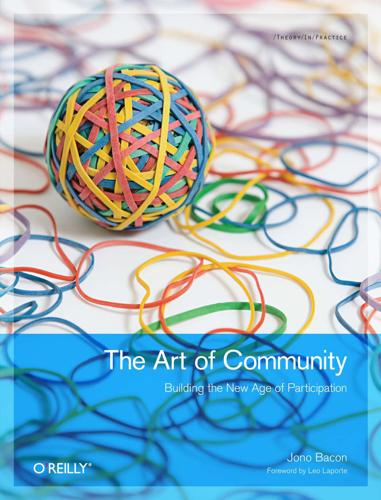
The Art of Community: Building the New Age of Participation
by
Jono Bacon
Published 1 Aug 2009
What that experience taught, and what that evening inspired in me, was an excitement about what is possible when you get a group of people together who share a common ethos and a commitment to furthering it. In my world, that ethos has thus far been Free Culture, Free Software, digital rights, and breaking down the digital divide, but it can be as critical as creating world peace or as fanciful as sharing photos of kittens playing guitars on the Internet. The importance of community is not in the crusade, but in how you unify people to march forward together, side by side. At its heart, The Art of Community is a distilled set of approaches and thoughts about how to build community.

The Stack: On Software and Sovereignty
by
Benjamin H. Bratton
Published 19 Feb 2016
The ideological position is made in Alexander Galloway, “The Poverty of Philosophy: Realism and Post-Fordism,” Critical Inquiry 39 (2013): 347–366. Aesthetic suspicion of digital systems couched in political suspicion (perhaps also couched in professional anxiety) has also led to awkward schisms in art. See Clare Bishop, “The Digital Divide: Contemporary Art and New Media,” Artforum (September 2012). 17. Luciana Parisi, Contagious Architecture: Computation, Aesthetics, and Space (Cambridge, MA: MIT Press, 2013). 18. See my editorial “Outing A.I.: Beyond the Turing Test,” New York Times, February 23, 2015. 19. To me this is the purchase of the Promethean accelerationism of Reza Negarastani and Ray Brassier.